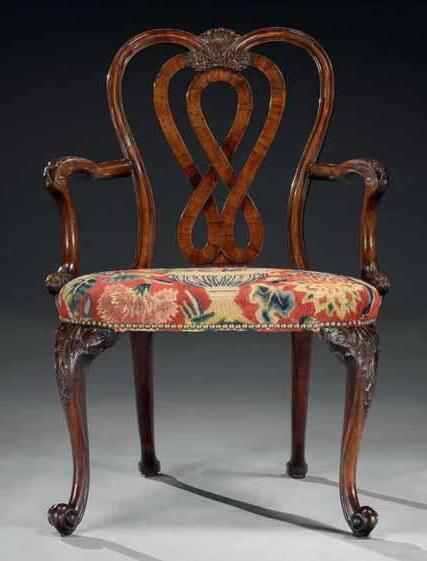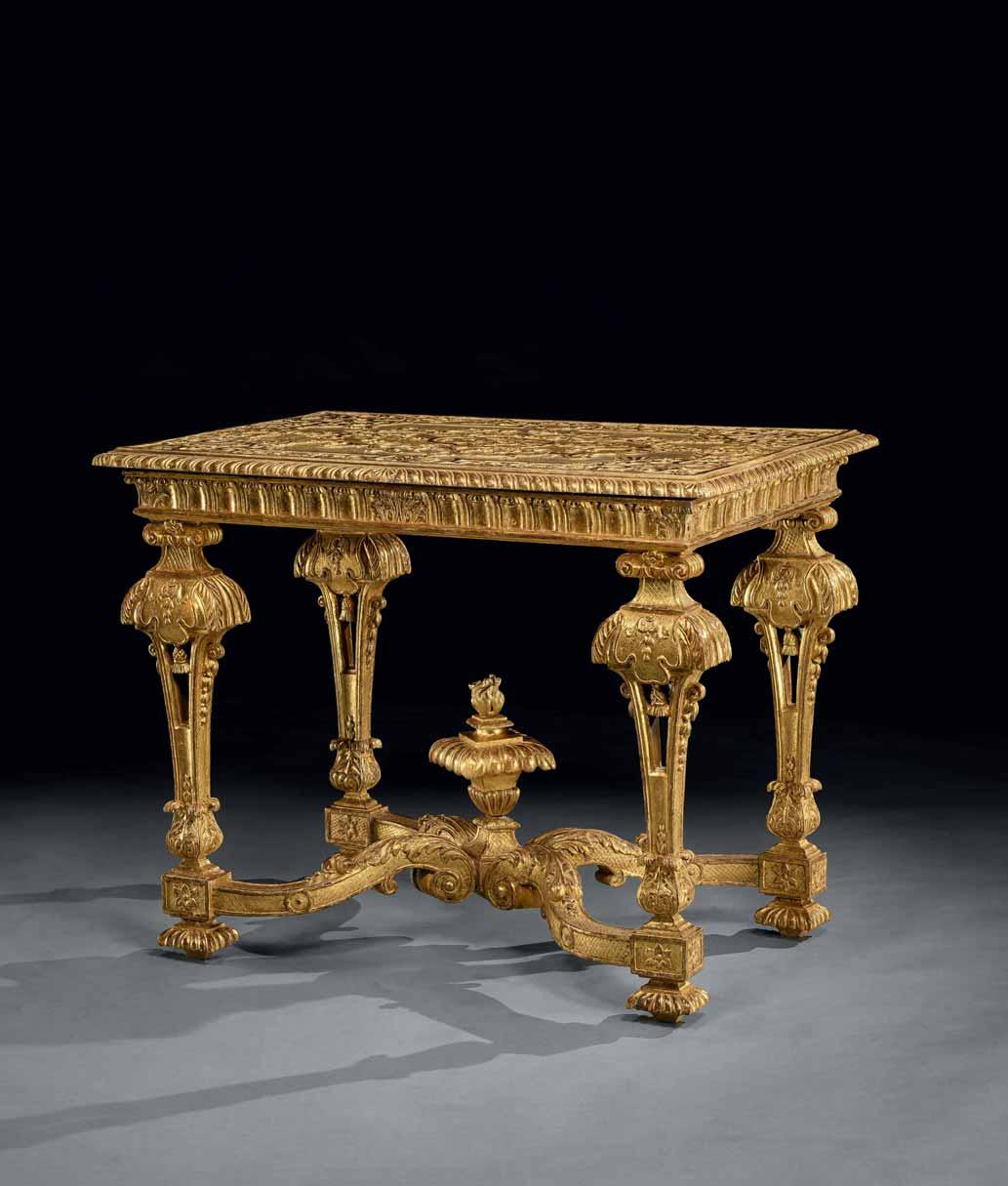

RONALD PHILLIPS
RONALDPHILLIPS
GREAT ENGLISH FURNITURE
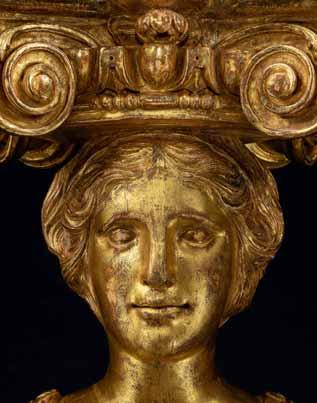
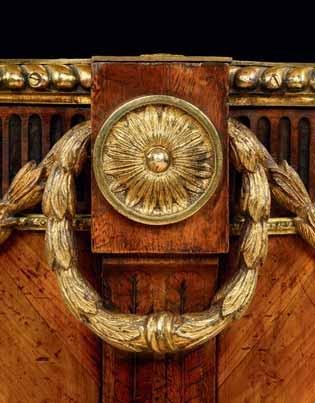
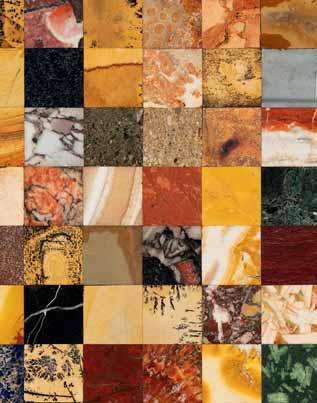
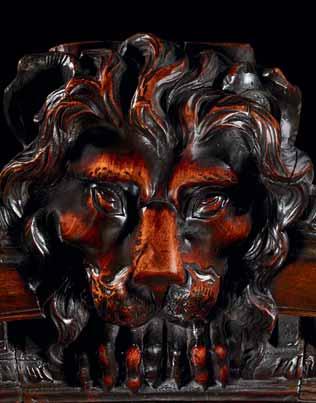
Tel: + 44 (0)20 7493 2341 www.ronaldphillipsantiques.co.uk advice@ronaldphillips.co.uk
FOREWORD
We have been extremely fortunate in purchasing many items privately over the past year. About forty items have come to us in this way, hardly any of which have been on the market in the last thirty years. A number of these are presented here, along with many other superb and soughtafter pieces.
I hope you will enjoy reading this catalogue as much as I have enjoyed compiling it. At the time of going to print, only the centre table on page 183 has been sold.
I must draw your attention to just a few of my favourite items. The wine cooler on page 77, which we have owned before, is of exceptional quality and extremely rare. The set of parcel gilt stools on page 64 are of outstanding quality, and it is remarkably rare to have a set of four. The Royal gesso wall lights on page 263 were notably made by Jean Pelletier, and the Kensington Palace gesso table on page 265 was carved by Robert Derignée and gilded by Jean Pelletier.
I would as always like to thank my loyal staff and everyone who has helped with this production.
We have also been busy at the major international fairs, taking part in the Treasure House Fair and Frieze Masters in London during June and October 2024 respectively, and the Winter Show in New York in January 2025.
We look forward to seeing you at the next Treasure House Fair in London from 26 June to 1 July this year.
Please feel free to call me on +44 (0)20 7493 2341 or email simon@ronaldphillips.co.uk for more information about the items in this catalogue, or if you have any requests.
Very best wishes,
Simon
Phillips June 2025
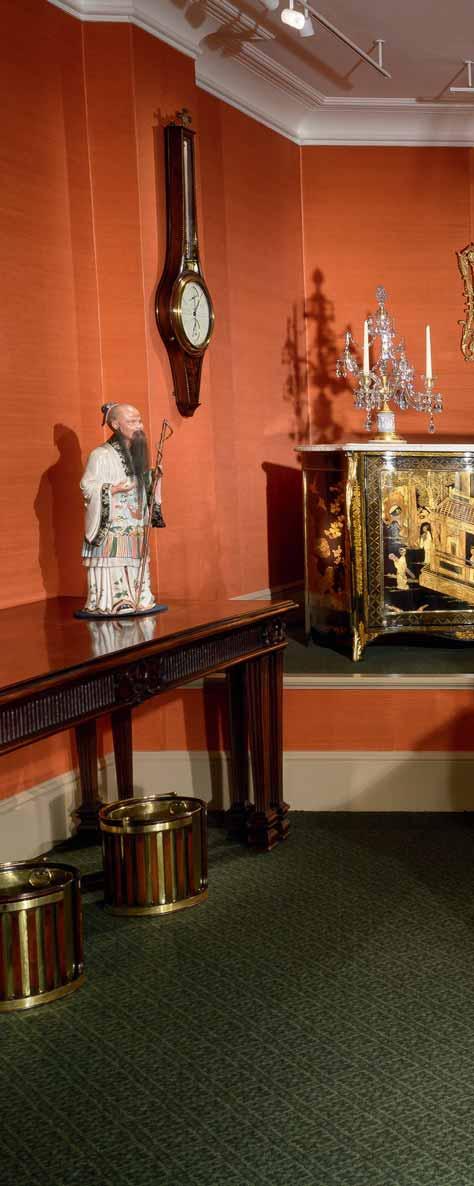
Right: Simon Phillips with Truffle
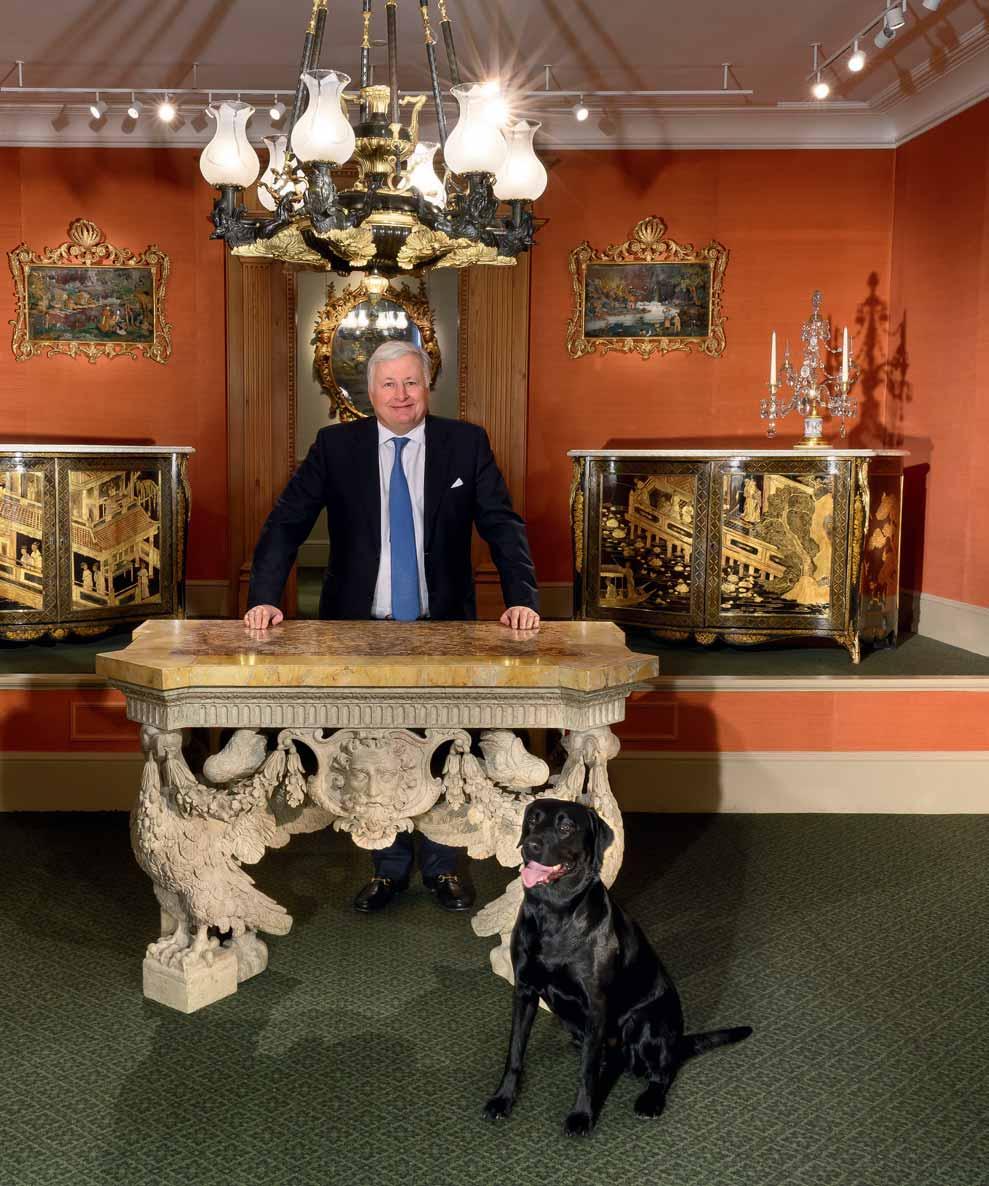
RONALDPHILLIPS
GREAT ENGLISH FURNITURE
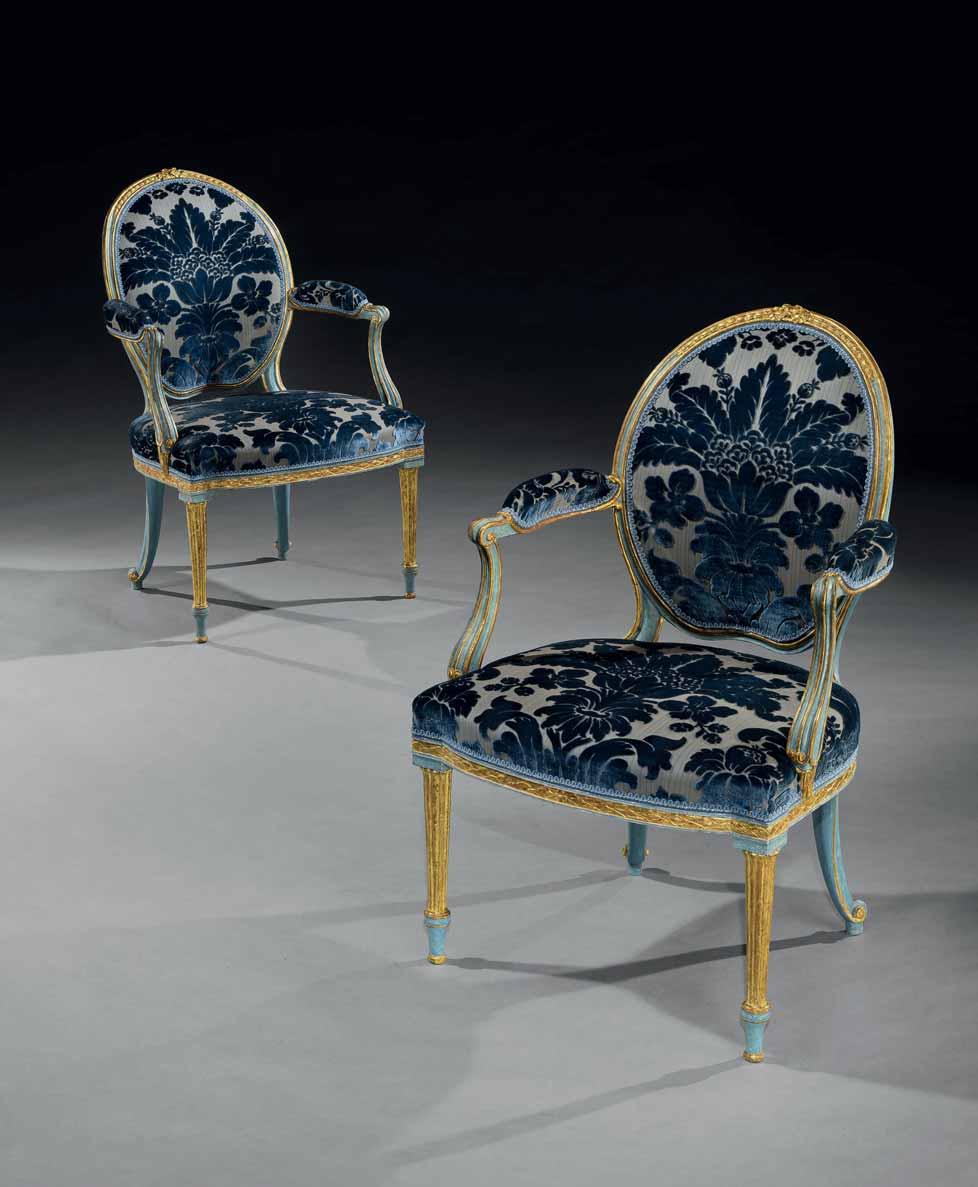
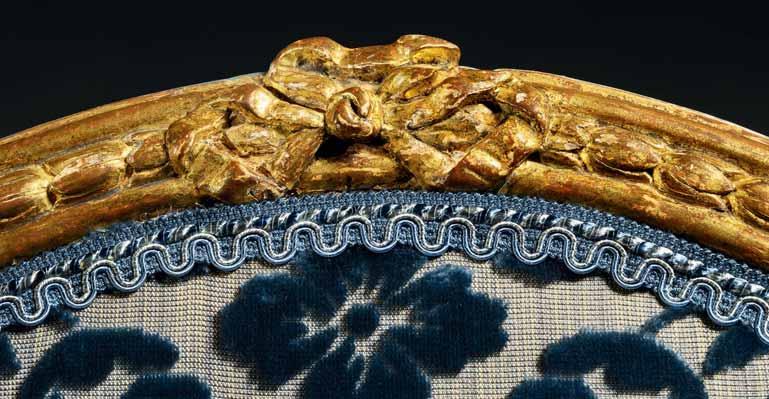
A PAIR OF GEORGE III PARCEL GILT AND BLUE JAPANNED ARMCHAIRS ALMOST CERTAINLY BY THOMAS CHIPPENDALE
Note: The chair frames have been dry stripped, revealing sections of the original decorative blue and gold colour scheme which has now been reinstated.
English, circa 1780
Height: 37¾ in; 96 cm
Height of seat: 18½ in; 47 cm
Width: 24½ in; 62.5 cm
Depth: 25½ in; 65 cm
Provenance: Private collection, England.
The chairs display many key markers found on documented chairs from the Chippendale workshop; for example, the exceptional attention paid to the shape of the mouldings and in particular the border to either side of the laurel leaf centre of the seat rail. What seems to be flat here is actually very slightly concave, which subtly softens the appearance. The elegant arms are fixed to the side of the seat, which is again characteristic of Chippendale production, although after Thomas Chippendale senior’s death in 1779 some chairs occasionally featured arms joined to the front legs. The oval back has the typical raised centre at the base, where a back strut gives extra support. The corner pieces set into the back are made of mahogany rather than lime wood like the rest of the frame, and this is unique to chairs from the Chippendale workshop. And the underside of the seat bears the typical clamping notches as well as batten holes for transport.
All these markers confirm a Chippendale attribution. Although it has not been possible to establish the original provenance, the presence of the transport holes underneath the seat frame narrows it down to a commission from outside London.

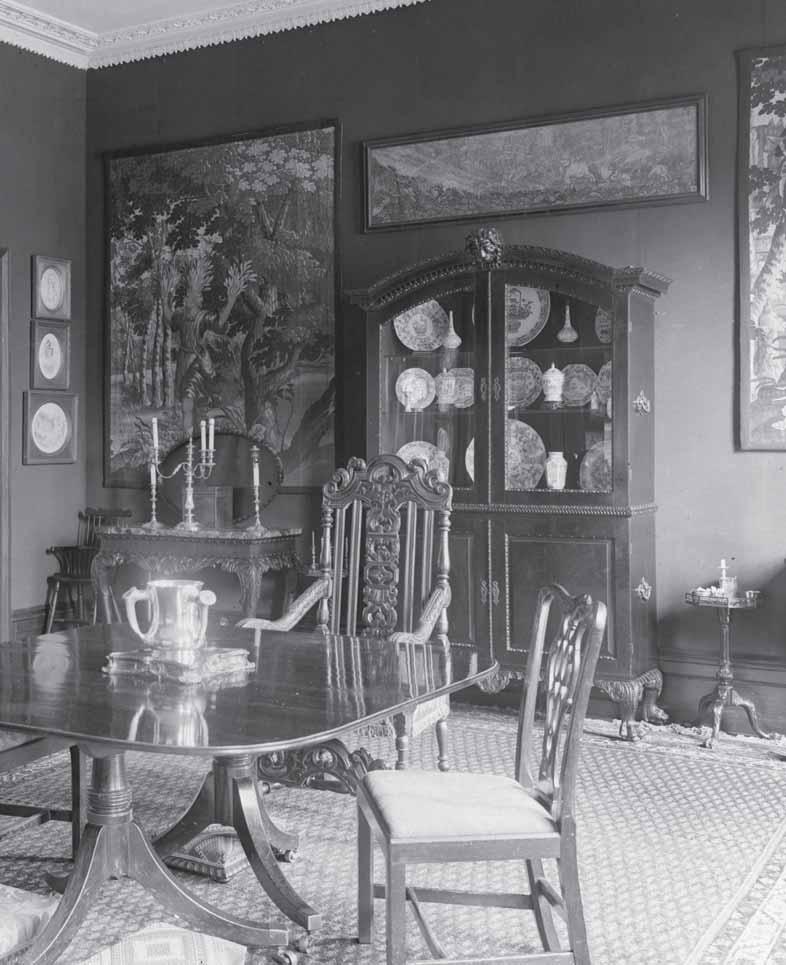
The press in situ in the dining room at Sandridgebury House, Hertfordshire, 1913. Courtesy of Country Life/Future Publishing Ltd.
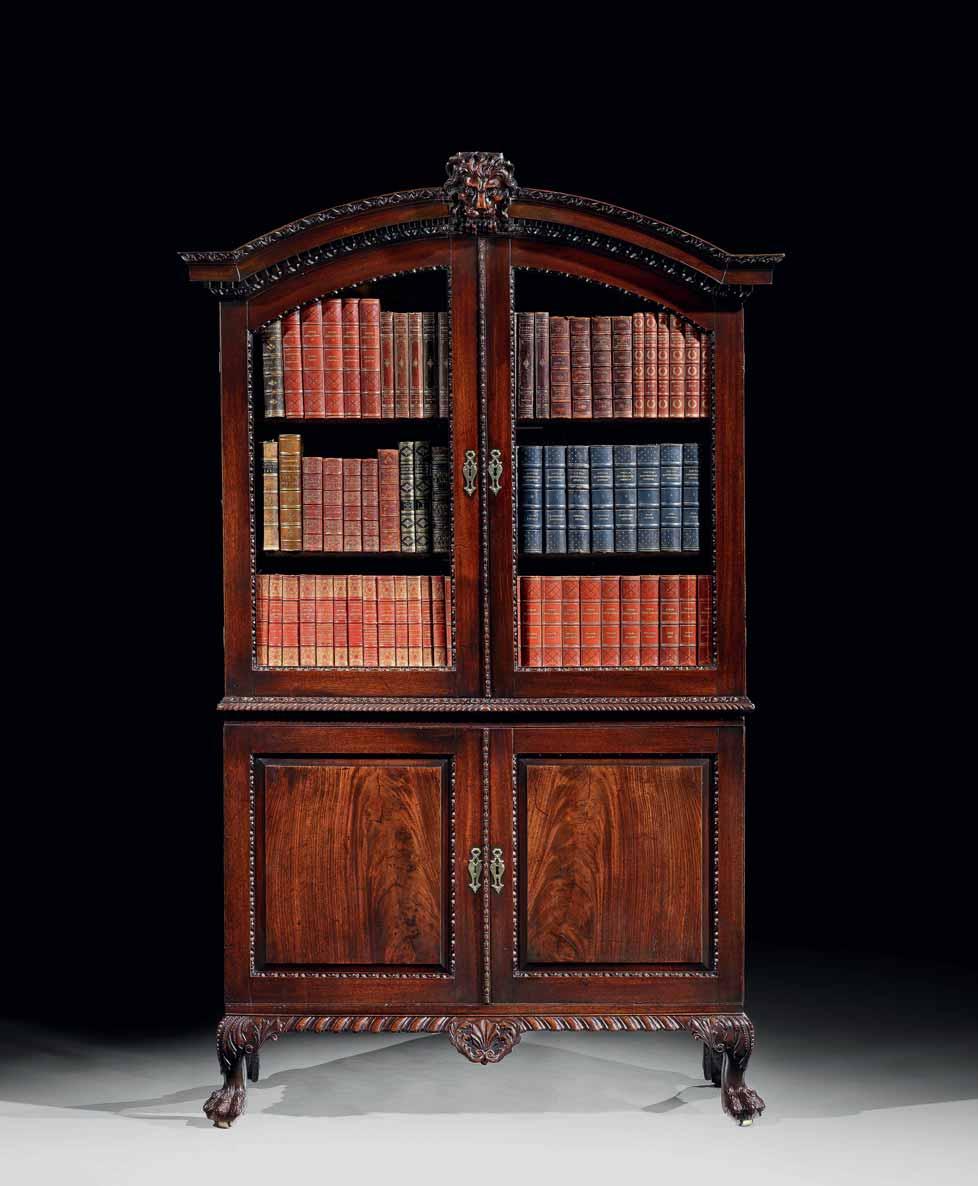
THE PERCIVAL GRIFFITHS LINEN PRESS
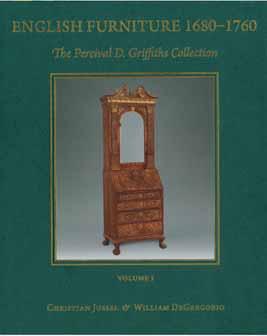
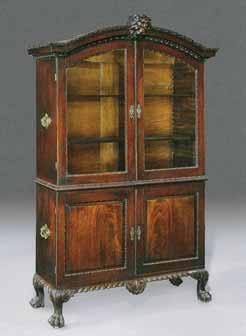
The press illustrated in English Furniture 1680–1760: The
2
A GEORGE II MAHOGANY LINEN PRESS
Note: The depth of the linen press was reduced and glass panels were fitted in the upper doors sometime prior to 1913 and probably prior to acquisition by Percival Griffiths.
English, circa 1750
Height: 7 ft 5 in; 226 cm
Width: 4 ft 5 in; 134.5 cm
Depth: 1 ft 11 in; 58.5 cm
Provenance:
Percival D. Griffiths, Sandridgebury, Hertfordshire, England; Partridge Fine Arts Ltd., London, England; Private collection, USA.
Photographed:
In the dining room at Sandridgebury House, Country Life, 1913; unpublished.
Illustrated: Christian Jussel and William DeGregorio, English Furniture 1680–1760: The Percival D. Griffiths Collection, 2023, vol. I, p. 60, fig. 3.
The linen press features in an early photograph taken by Country Life in 1913, showing it in the dining room and used to display china. The upper door panels are already glazed, and the depth is already reduced. The companion cabinet, full depth and with timber panels throughout, was acquired by Griffiths in 1924.
Percival D. Griffiths Collection
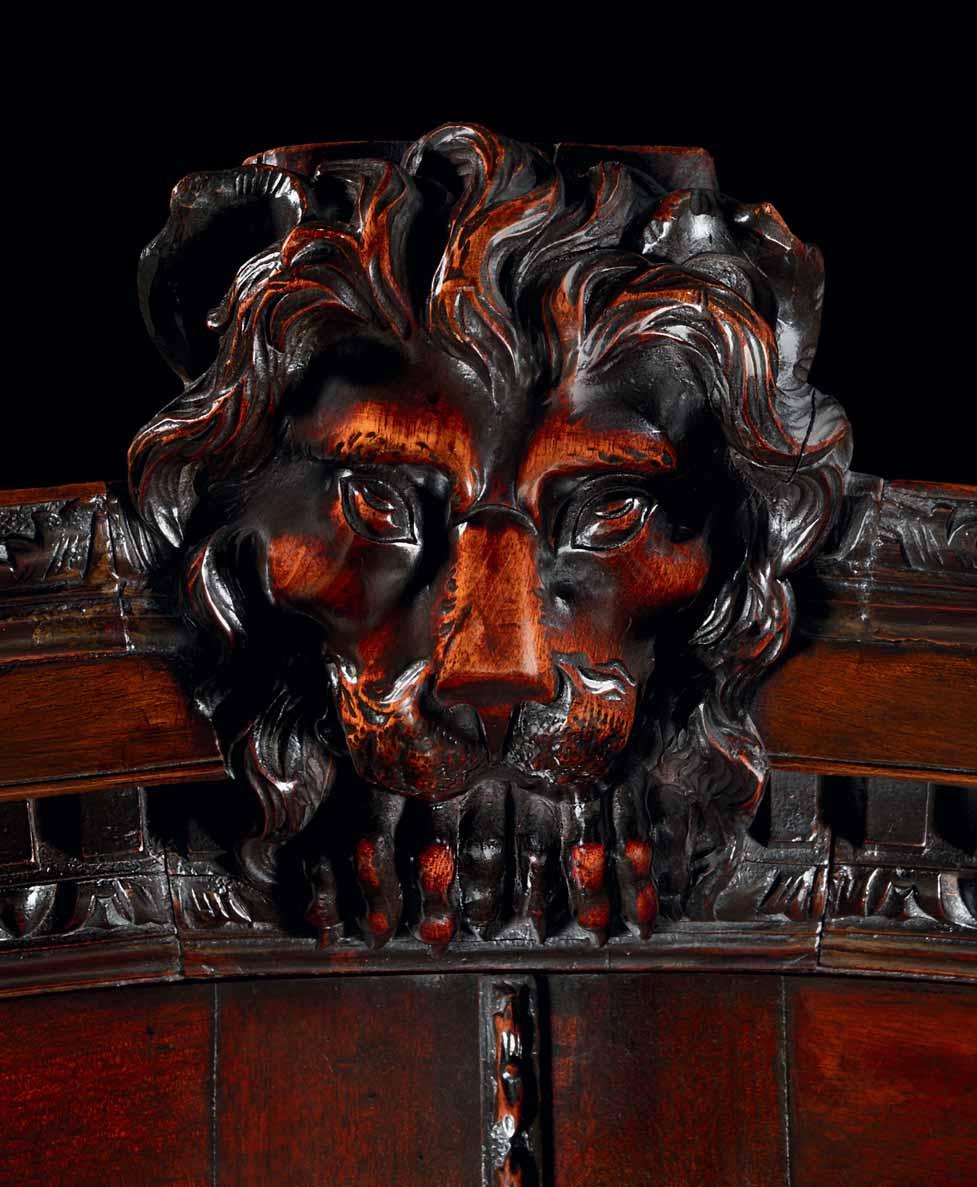
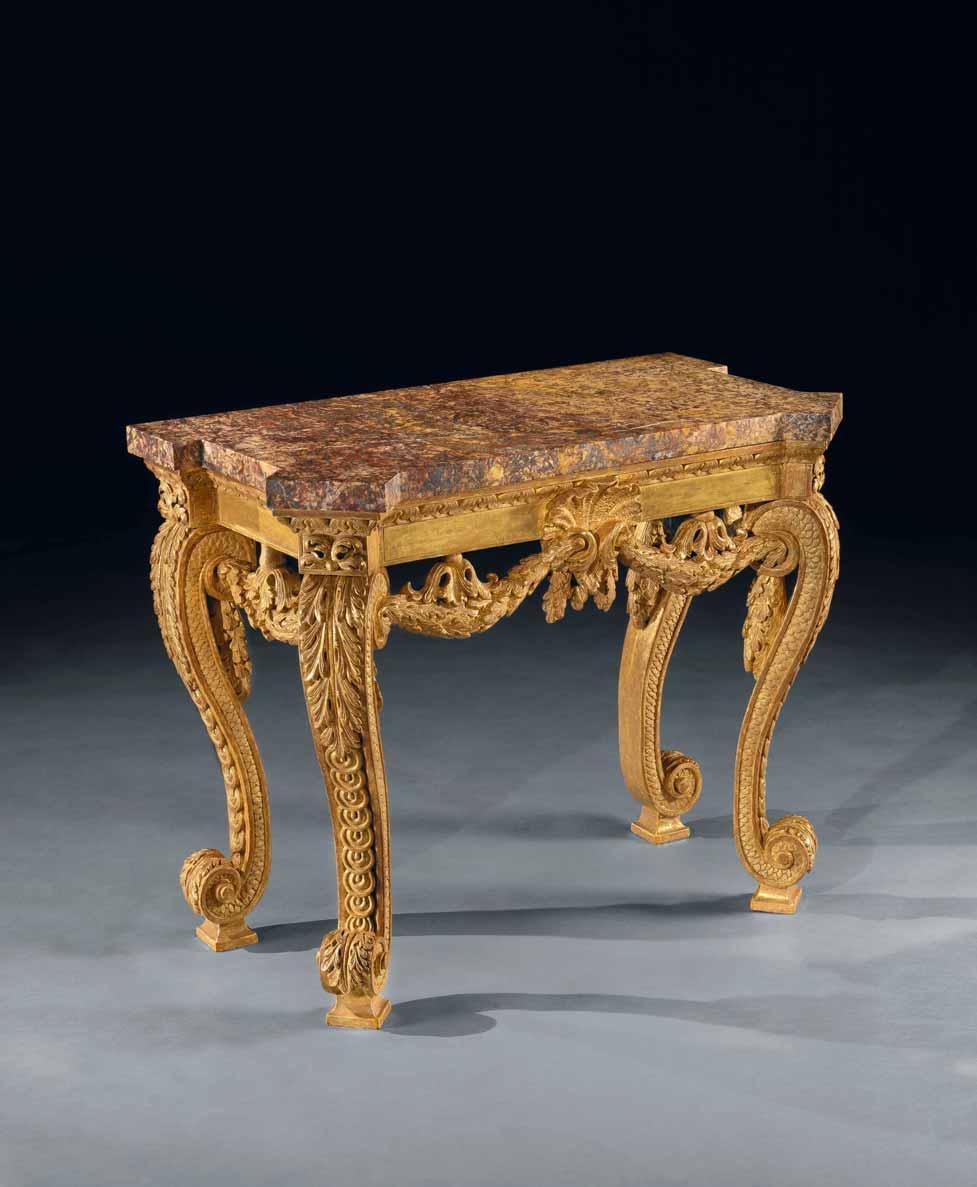
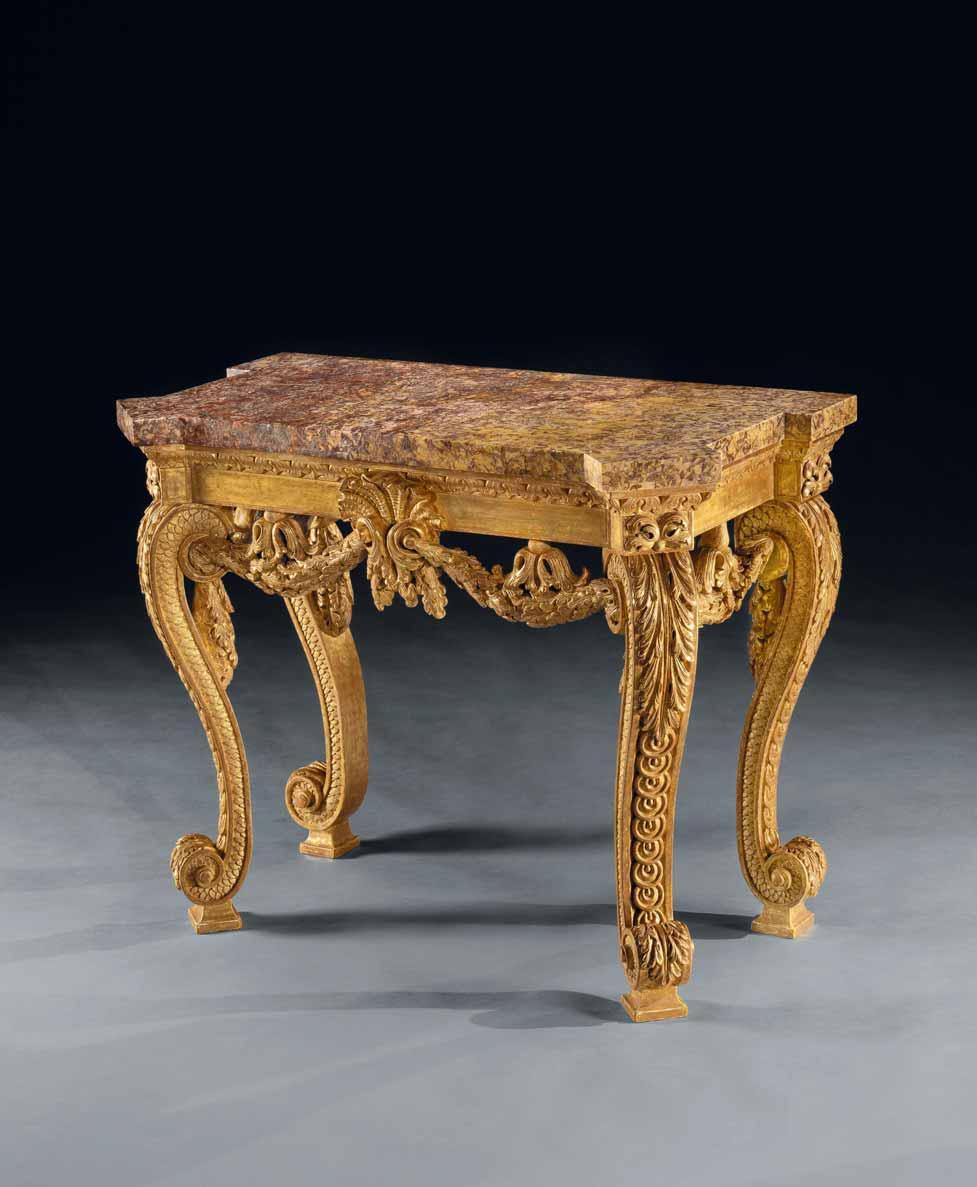
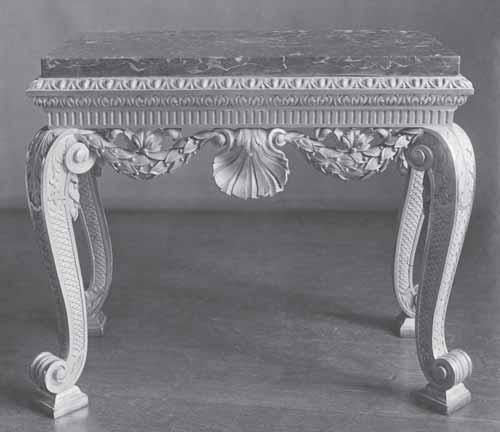
A PAIR OF GEORGE II GILTWOOD TABLES ATTRIBUTED TO WILLIAM KENT, THE CARVING ATTRIBUTED TO JAMES RICHARDS
Note: The tables have been re-gilded. The rouge griotte marble tops are of later date.
English, circa 1730
Height: 32½ in; 82.5 cm
Width: 39½ in; 100 cm
Depth: 22¾ in; 58 cm
Provenance: Clifford Wright Antiques Ltd., London, England; Ronald Phillips Ltd., London, England; Private collection, London, England.
James Richards worked on commissions from the Board of Works for the Royal Household, following designs by William Kent. His best-known commission is for the carving on the Royal barge.
Tables of virtually identical design but with a fluted frieze remain in the Royal Collection today.
A related table in the Royal Collection. Courtesy of Country Life/Future Publishing Ltd.
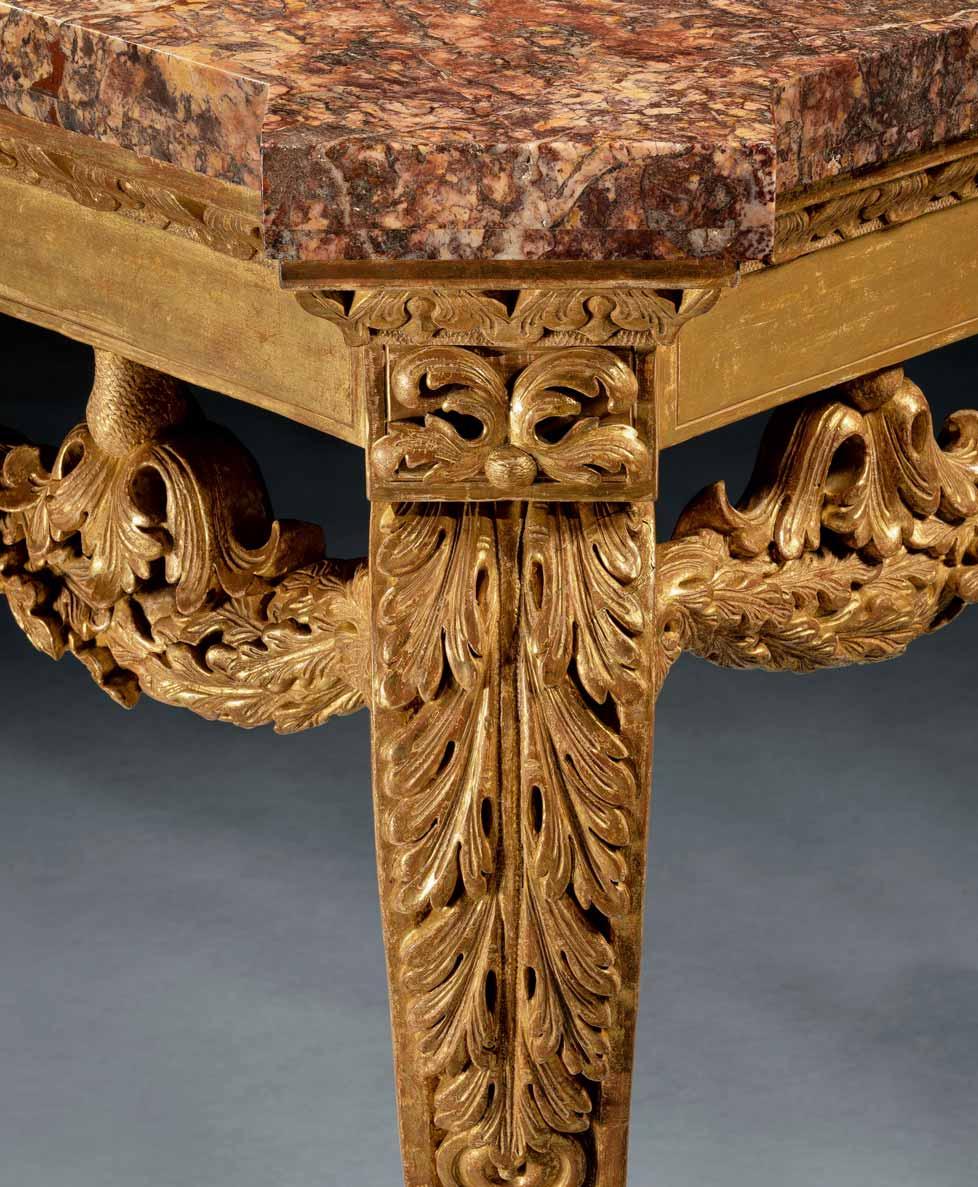
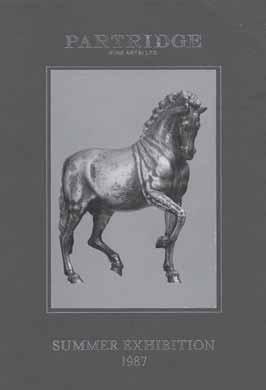
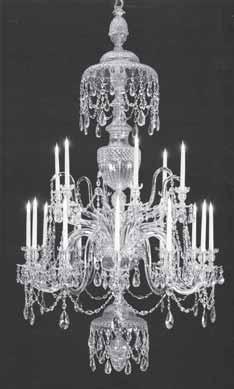
4
A GEORGE III ORMOLU MOUNTED CUT GLASS EIGHTEEN LIGHT CHANDELIER ATTRIBUTED TO WILLIAM PARKER
Note: The chandelier has survived in remarkable condition given its delicate structure. Period replacements have been made for only three candle arms, two upswept snake arms and four nozzles. The chased ormolu mounts are of exceptional quality.
English, circa 1795
Height: 6 ft 1 in; 185.5 cm
Diameter: 3 ft 9 in; 114 cm
Provenance:
Private collection, Paris, France; Partridge Fine Arts Ltd., London, England; Private collection, England.
Illustrated:
Partridge Fine Arts Ltd., ‘Summer Exhibition 1987’, catalogue, pp. 112–13.
Chandeliers of this scale are extremely rare. One example was formerly in the collection of Sir William Plender at Chevening in Kent, formed under the guidance of R. W. Symonds, and another, formerly at Stowe House in Buckinghamshire, was advertised by T. Crowther & Son in 1947. The current whereabouts of both is unknown.
The chandelier illustrated in Partridge Fine Arts Ltd., ‘Summer Exhibition 1987’
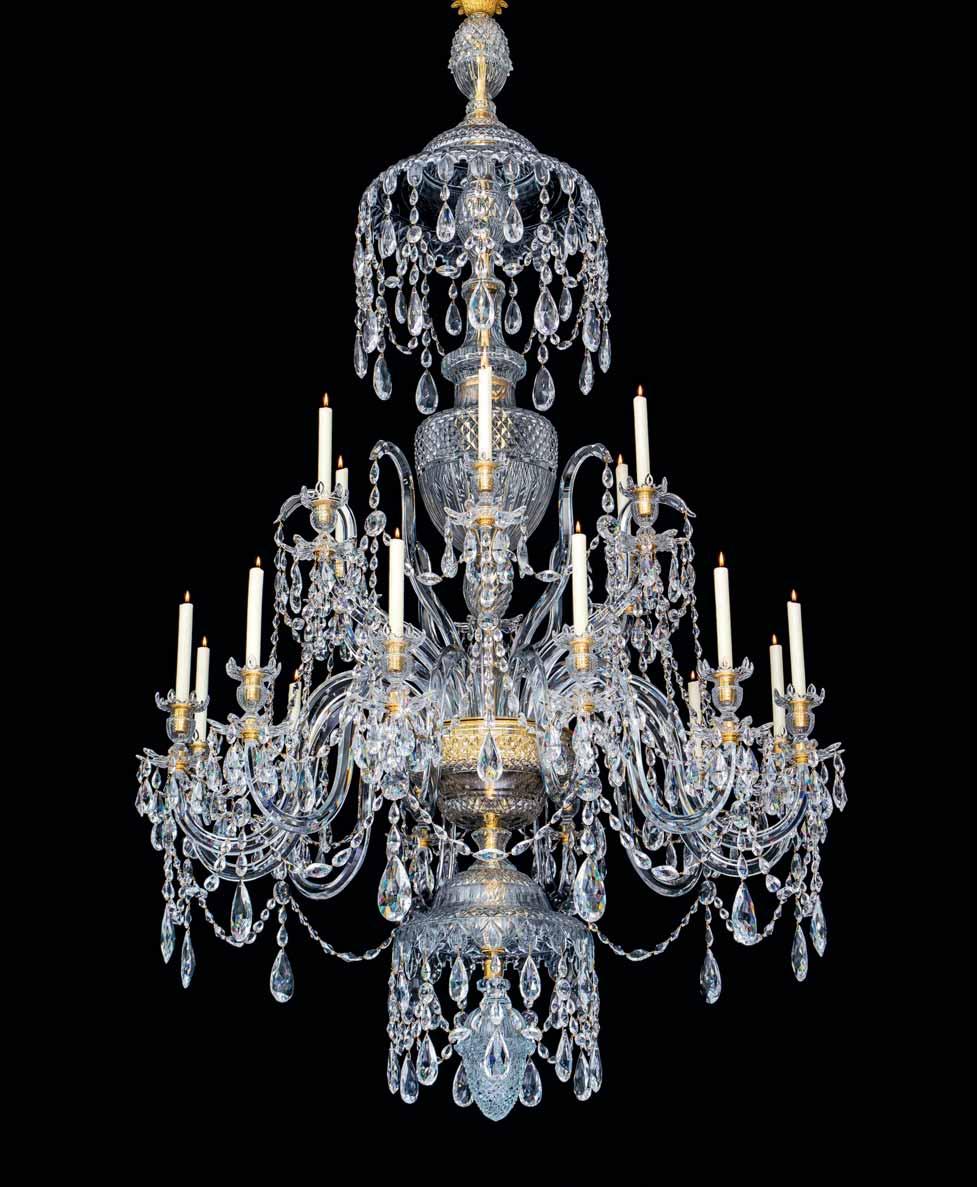
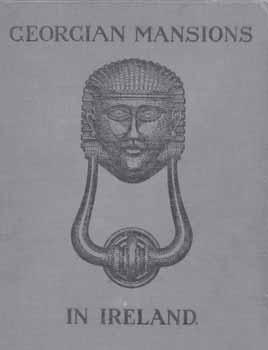
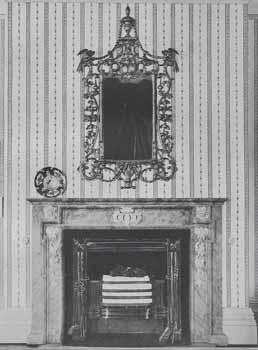
The mirror in situ in the drawing room at Platten Hall, Ireland; illustrated in Georgian Mansions in Ireland, 1915
A GEORGE III GILTWOOD MIRROR
Note: The mirror retains most of the original gilding. The mercury silvered bevelled mirror plate is original.
Irish, circa 1765
Height: 5 ft 11½ in; 182 cm
Width: 3 ft 4 in; 102 cm
Depth: 7 in; 18 cm
Provenance: Platten Hall, Co. Meath, Ireland; Ronald Phillips Ltd., London, England; Private collection, USA.
Illustrated: Thomas U. Sadleir, Georgian Mansions in Ireland, 1915, pl. LXIX; in the drawing room at Platten Hall.
Ronald Phillips Ltd., ‘Reflections of the Past: Mirrors 1685–1815’, catalogue, 2004, p. 170.
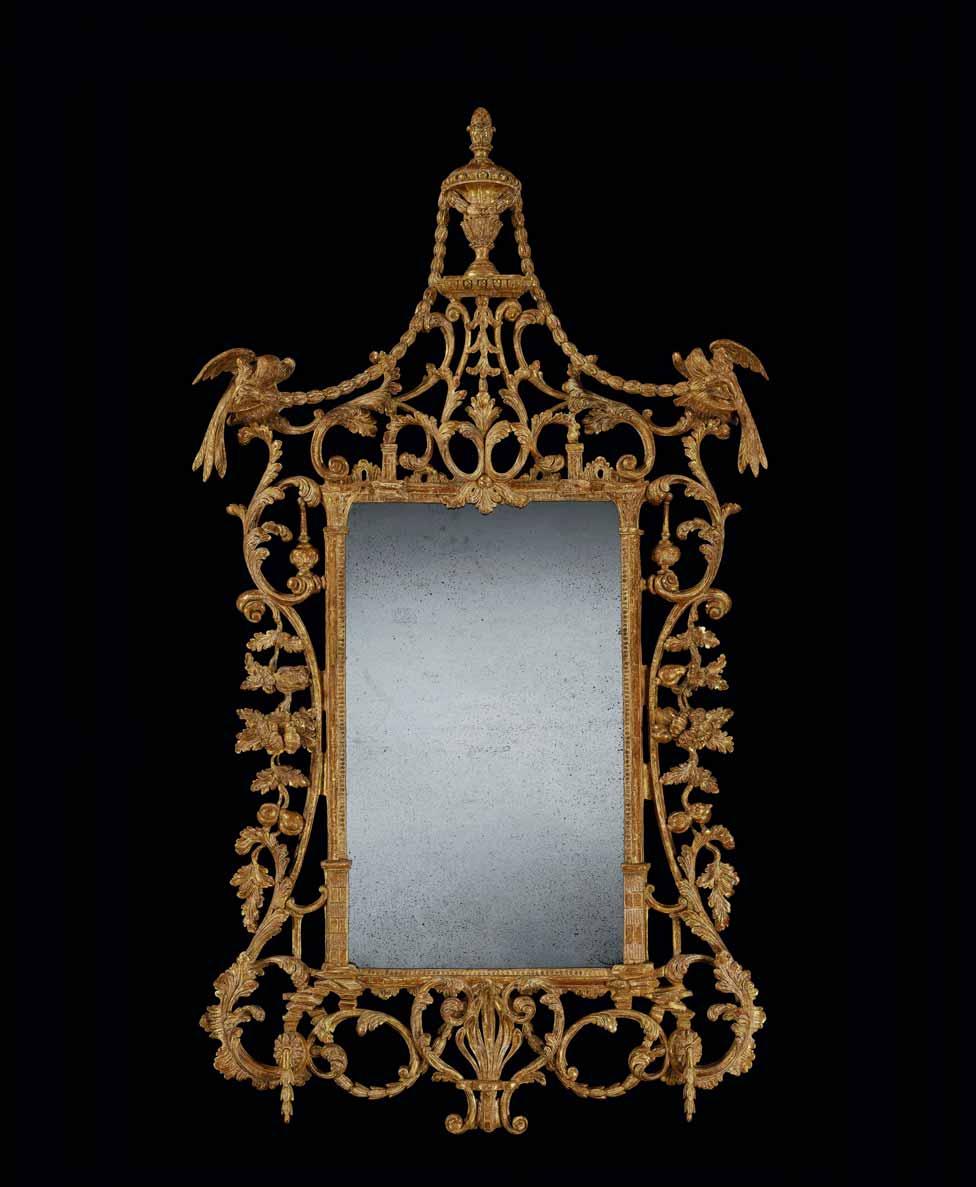
THE PLATTEN HALL MIRROR
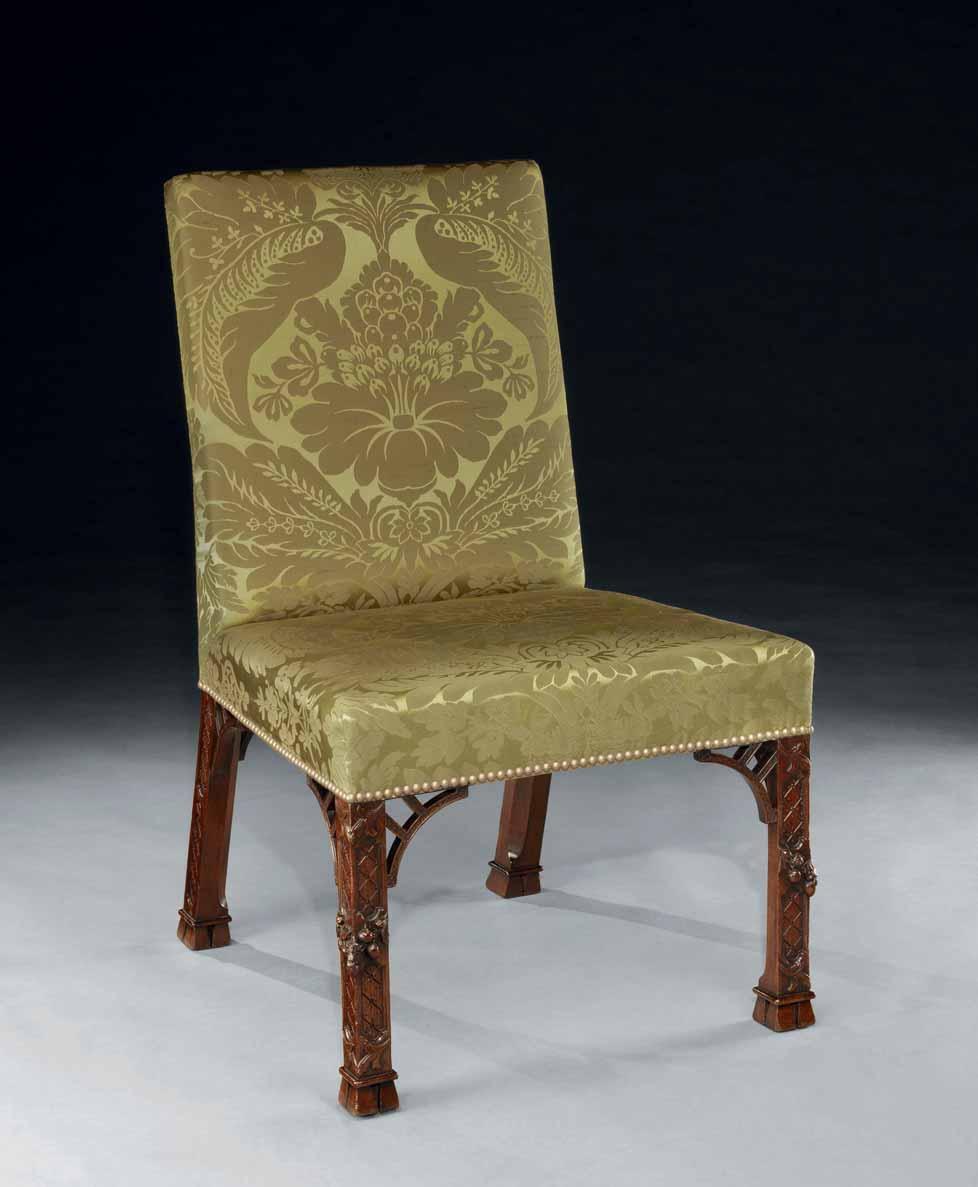
THE RAYNHAM HALL CHAIRS
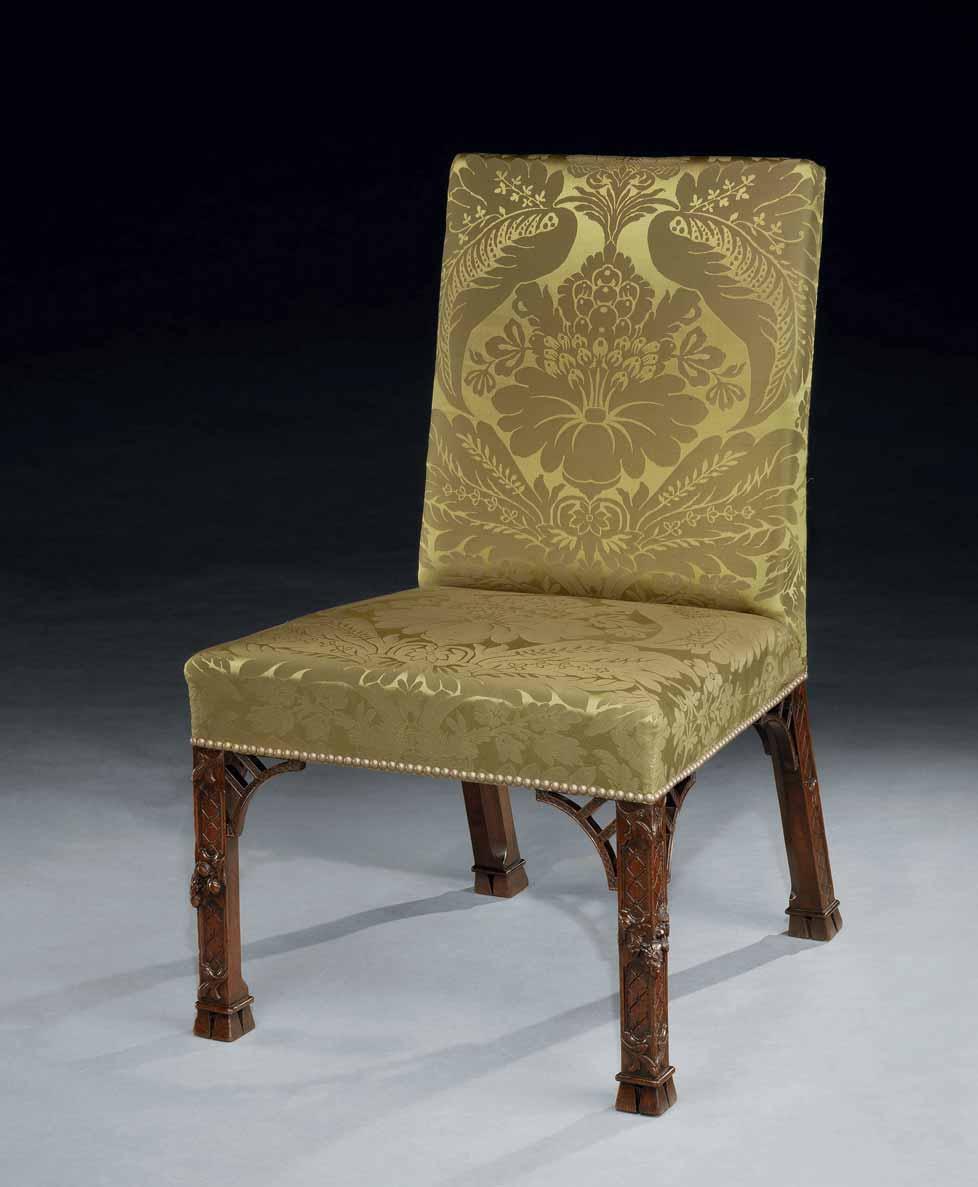
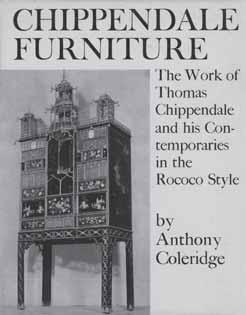
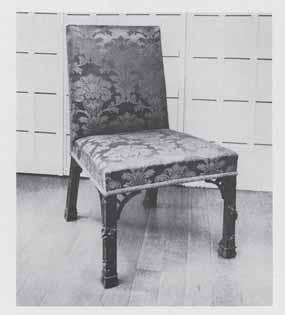
One of the chairs illustrated in Chippendale Furniture: The Work of Thomas Chippendale and his Contemporaries in the Rococo Style
A PAIR OF GEORGE II MAHOGANY SIDE CHAIRS ATTRIBUTED TO VILE & COBB
English, circa 1755
Height: 38½ in; 98 cm
Height of seat: 18½ in; 47.5 cm
Width: 23½ in: 59.5 cm
Depth: 25 in; 63.5 cm
Provenance: The Marquess Townshend, Raynham Hall, Norfolk, England; Robert Cooke, Athelhampton, Dorset, England; Private collection, France.
Photographed: In one of the attic rooms against the distinctive timber panelling at Raynham Hall, Country Life, November 1925; unpublished.
Illustrated: Anthony Coleridge, Chippendale Furniture: The Work of Thomas Chippendale and his Contemporaries in the Rococo Style, 1968, pl. 203.
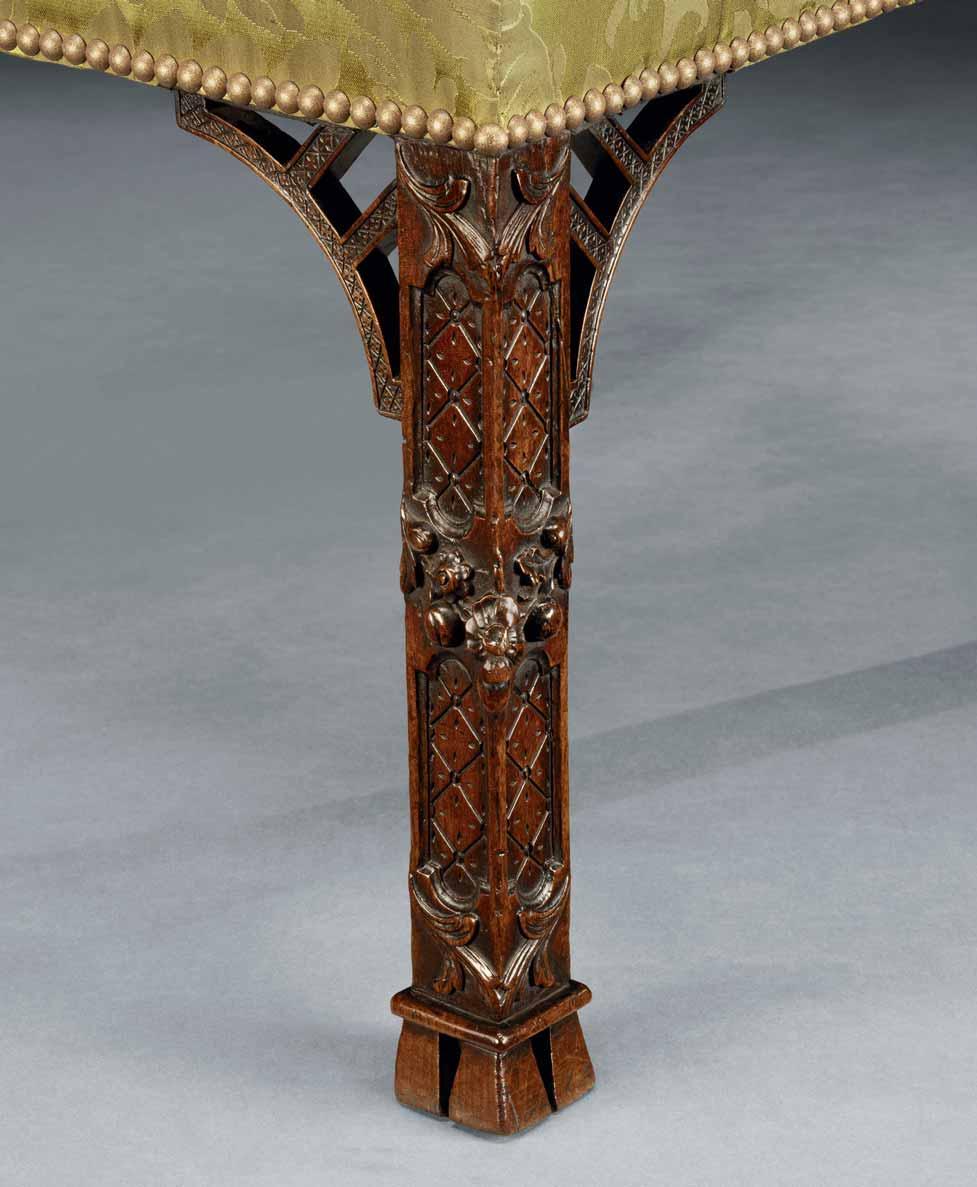
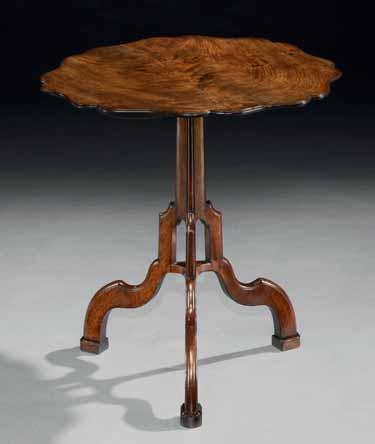
A GEORGE III MAHOGANY TIP-UP TRIPOD TABLE ATTRIBUTED TO INCE & MAYHEW
Note: The table has acquired a beautiful faded colour. The brass catch to the underside of the top is a period replacement.
English, circa 1770
Height: 27 in; 68.5 cm
Diameter: 24½ in; 62 cm
Literature: William Ince and John Mayhew, The Universal System for Household Furniture, 1762, pl. XIII.
The design of this table, although it is a plainer version without carved decoration, is derived from plate XIII of Ince and Mayhew’s Universal System
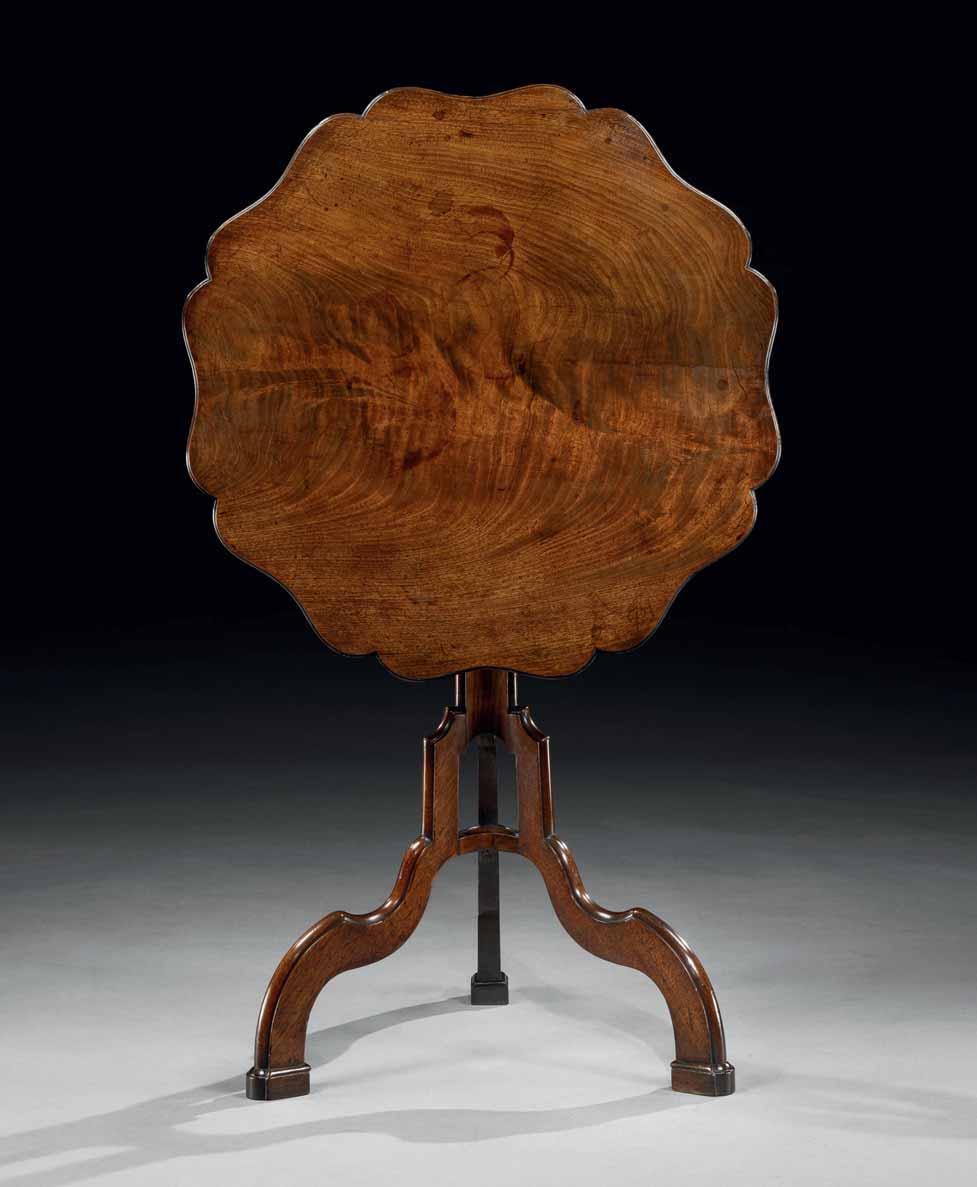
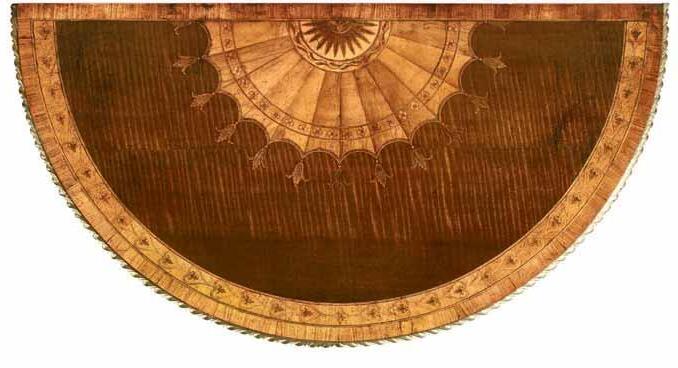
8
A GEORGE III ORMOLU MOUNTED SATINWOOD AND HAREWOOD MARQUETRY COMMODE ATTRIBUTED TO INCE & MAYHEW
Note: The commode retains all its original brass mounts and has replaced back feet. The original plain timber turned back feet have been retained with the commode for safe keeping. The interior behind the door at each side is fitted with a fixed shelf.
English, circa 1775
Height: 32¾ in; 83.5 cm
Width: 43 in; 109 cm
Depth: 22½ in; 57.5 cm
Provenance: Private collection, England, since the 1950s and by descent.
Literature:
David Nickerson, English Furniture of the Eighteenth Century, 1969, pp. 66–7. Mark Bence-Jones, Burke’s Guide to Country Houses, Vol. I – Ireland, 1978, p. 278. Christie’s, ‘Godmersham Park, Canterbury, Kent’, sale catalogue, 6–9 June 1983, pp. 132–3, lot 138.
Hugh Roberts, ‘The Derby House Commode’, Burlington magazine, May 1985, pp. 275–82, illus. 18.
F. Lewis Hinckley, Hepplewhite, Sheraton and Regency Furniture, 1987, p. 209, illus. 348. Mallett & Son Ltd., catalogue, 2013, pp. 41–5.
This exceptional commode and its companion, formerly at Godmersham Park, Kent, and now in a private collection in Brazil, belong to a small group which all share the same semi-elliptical outline and Etruscan decoration and are all attributable to the workshop of Ince & Mayhew.
A closely related pair of commodes, of considerably larger scale, were formerly at Turvey House in Co. Dublin, Ireland.
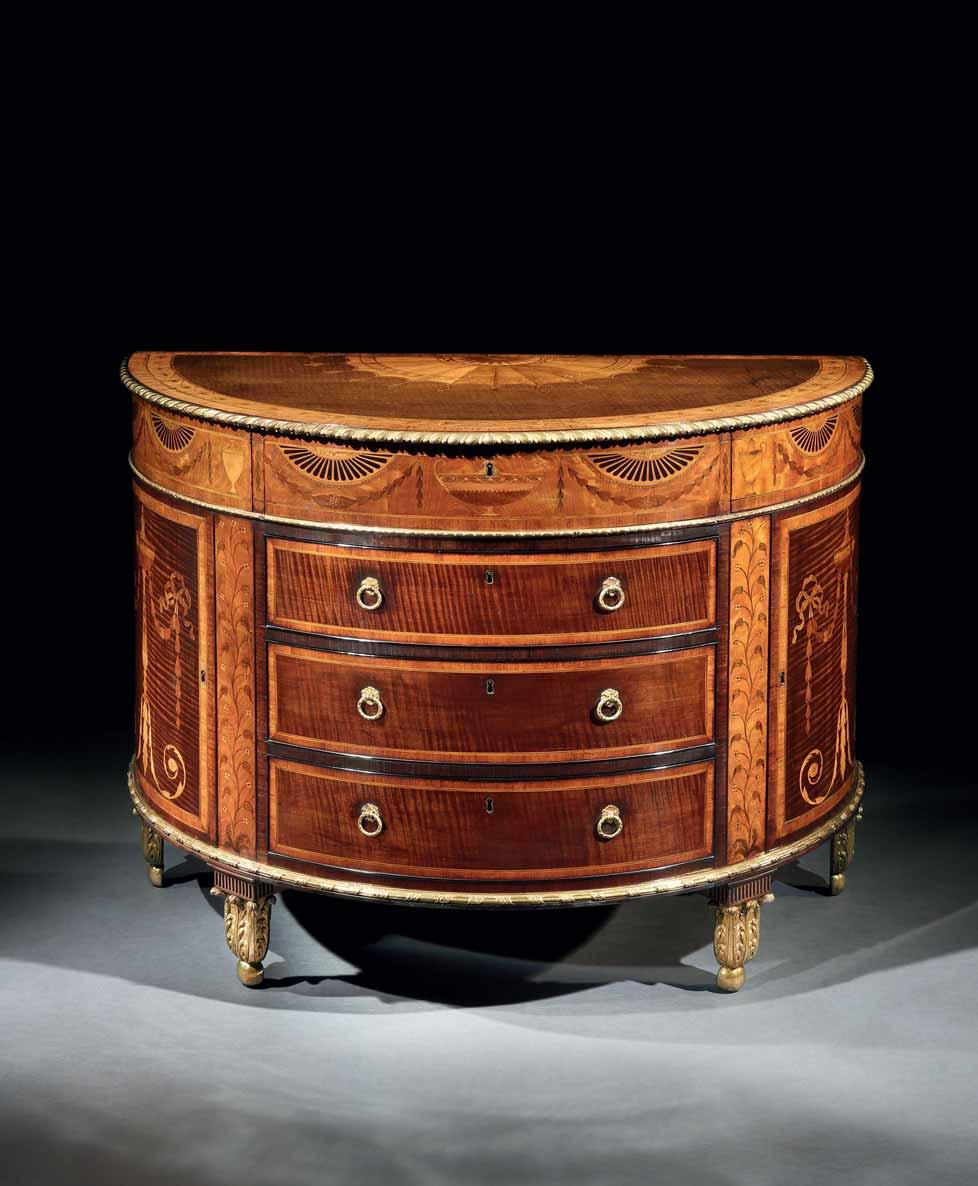
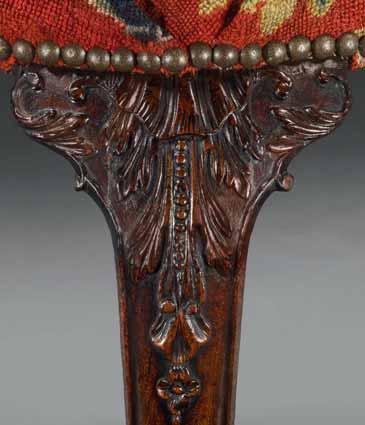
9
A GEORGE II MAHOGANY ARMCHAIR ATTRIBUTED TO WILLIAM LINNELL
Note: The underside of the shoe piece is incised with the Roman-style numerals IIII. The needlework cover was previously extended to fit the chair. It has now been cleaned, restored and refitted.
The armchair: English, circa 1750
The associated needlework cover: English, circa 1730
Height: 37½ in; 95.5 cm
Height of seat: 18½ in; 47 cm
Width: 25¼ in; 64 cm
Depth: 24¾ in; 63 cm
Provenance:
Ronald A. Lee Ltd., London, England, until 1958; Samuel Messer, Vine House, London, England, until 1991; Private collection, New York, USA.
Illustrated:
Christie’s, ‘The Samuel Messer Collection of English Furniture, Clocks and Barometers’, sale catalogue, London, 5 December 1991, p. 80, lot 58.
Literature:
M. Harris & Sons, An Abridged Introductory Catalogue of Antique Furniture and Works of Art, 1926, p. 42, no. F7815.
Christie’s, ‘Important English Furniture’, sale catalogue, New York, 7 April 2006, pp. 137–9, lot 230.
Christie’s, ‘Important English Furniture’, sale catalogue, London, 8 June 2006, lot 5.
THE SAMUEL MESSER CHAIR

A PAIR OF GEORGE II GILTWOOD TERMS DESIGNED BY WILLIAM KENT AND ATTRIBUTED TO BENJAMIN GOODISON
Note: The marble tops are recent replacements. The terms have been re-gilded at some stage in the 20th century.
English, circa 1730
Height: 59¾ in; 152 cm
Width: 14¾ in; 37.5 cm
Depth: 14¾ in; 37.5 cm
Provenance: Private collection, USA; James H. Van Alen, Rhode Island, USA; Private collection, USA.
Illustrated: Sotheby’s, ‘Property from the estate of Mrs. James H. Van Alen’, sale catalogue, New York, 3–4 November 2002, p. 56; one of the pair illustrated in the drawing room.
William Kent designed various types of terms for his clients, using specific decorative features that were not repeated elsewhere. For example, the terms designed by Kent for Robert Walpole for Houghton Hall, Norfolk, feature Corinthian capitals, while the terms for William Stanhope for Elvaston Castle, Derbyshire, feature winged heads with Doric capitals hung with oak festoons. The terms supplied to Richard Boyle for Chiswick House, Middlesex, are similar to the Elvaston design, but omit the wings from the heads.
Our terms, with Doric capitals, relate to two pairs of terms in the Royal Collection supplied by Benjamin Goodison. The Doric capitals are slightly different, however, and they rest on slightly different spreading feet.
The original commission for these terms has not yet come to light. They have an interesting later history, having belonged to the celebrated tennis player and official James Van Alen, a direct descendant of the Astors and the Vanderbilts, two of the wealthiest families in America. The terms did not feature in the sale of contents of Van Alen’s homes held by Sotheby’s in 2002, but a photograph published in their catalogue shows one of the pair in the drawing room in Van Alen’s Rhode Island house, Avalon.
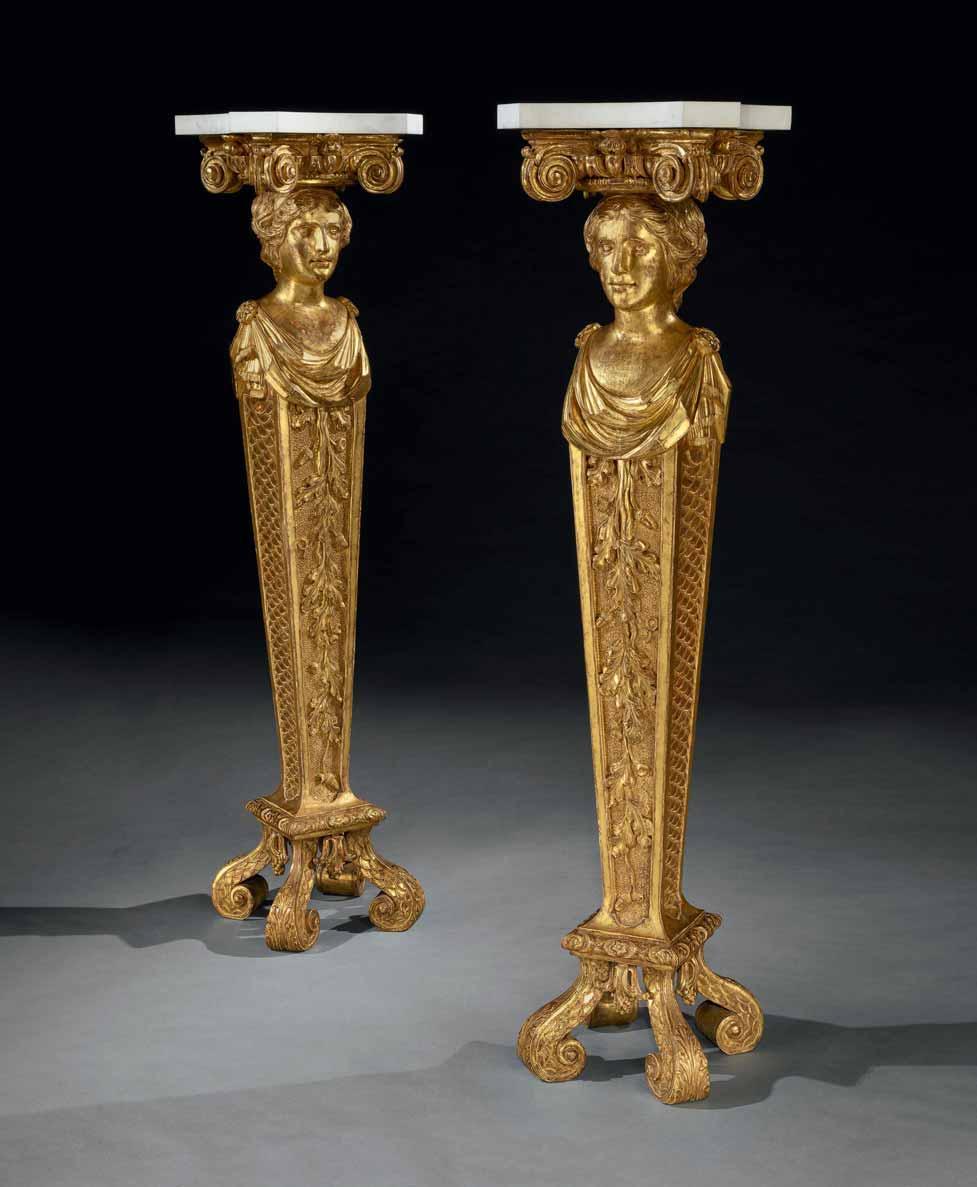
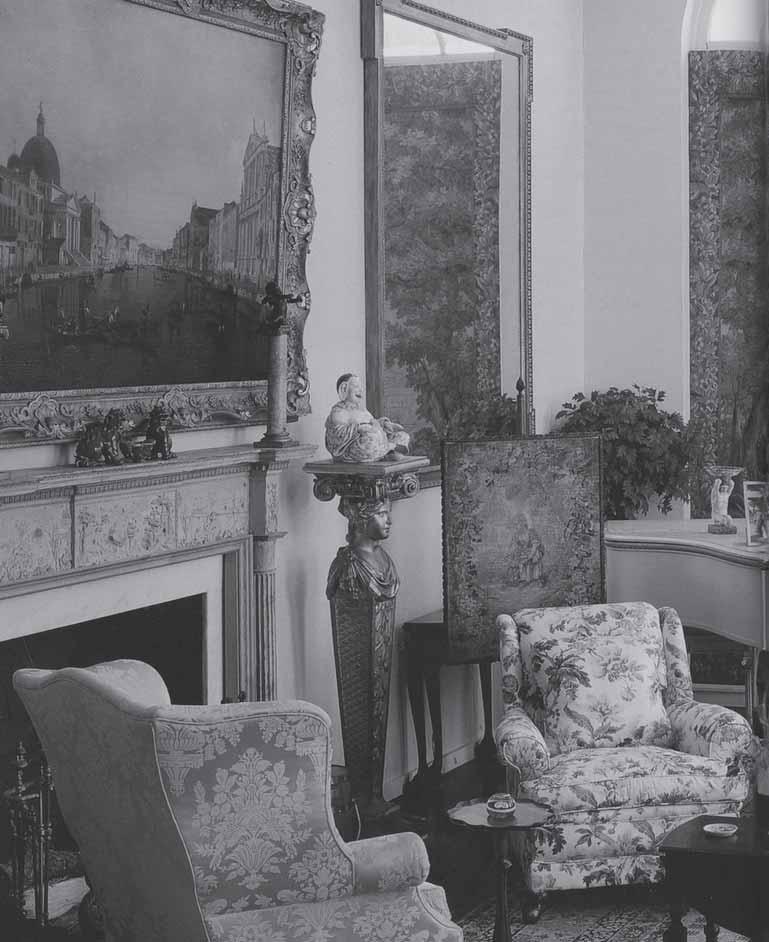
One of the terms in situ in the drawing room at Avalon, Newport, Rhode Island
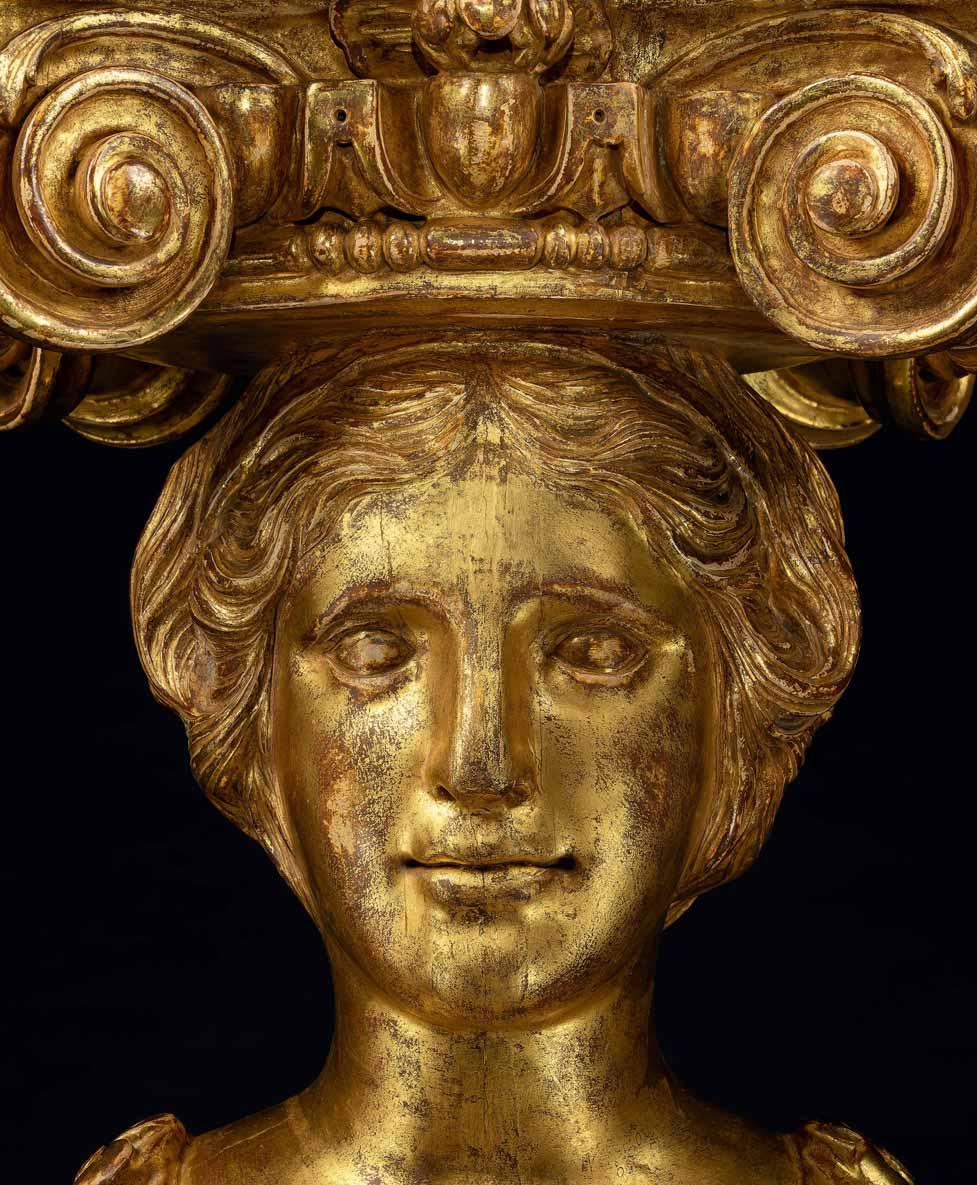
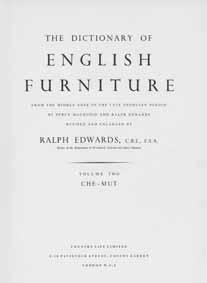
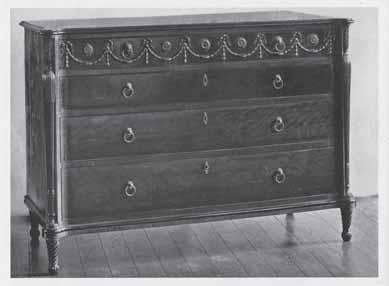
A similar chest of drawers illustrated in The Dictionary of English Furniture, revised edition, 1954
A GEORGE III MAHOGANY CHEST OF DRAWERS ALMOST CERTAINLY BY GILLOWS
Note: The chest retains its original brass handles.
English, circa 1780
Height: 34¾ in; 88.5 cm
Width: 43¾ in; 111 cm
Depth: 22½ in; 57 cm
Provenance:
Pelham Galleries Ltd., London, England; Ronald D. Phillips, London, England.
Literature:
Percy Macquoid and Ralph Edwards, The Dictionary of English Furniture, revised edition, 1954, vol. II, p. 52, fig. 56.
Sotheby’s, ‘A Collection of English Furniture, Barometers and Clocks formed by a Gentleman residing in New York’, sale catalogue, New York, 27–28 June 1974, pp. 186–7, lot 101.
Susan E. Stuart, Gillows of Lancaster and London, 1730–1840, 2008, vol. II, pp. 22–5.
Christie’s, ‘Simon Sainsbury – The creation of an English Arcadia’, sale catalogue, vol. II, 18 June 2008, pp. 140–41, lot 250.
The design of this striking chest of drawers with its contrasting ebonised mouldings corresponds to a suite of furniture designed and made for the Strickland family by Gillows in 1778, either for their London residence or for Sizergh Castle, Cumbria. The oval loop brass handles with central paterae are specific to Gillows and were used only by them.
An almost identical but slightly narrower model with smaller loop handles, also specific to Gillows, was formerly in the celebrated Leidesdorf collection in New York.
A very similar chest of drawers, but with different handles and carved ebonised swags to the top drawer, attributed to Ince & Mayhew, is illustrated in The Dictionary of English Furniture; it was sold for a record price of £679,650 (including premium) at Christie’s in June 2008, and is now in a private collection in England.
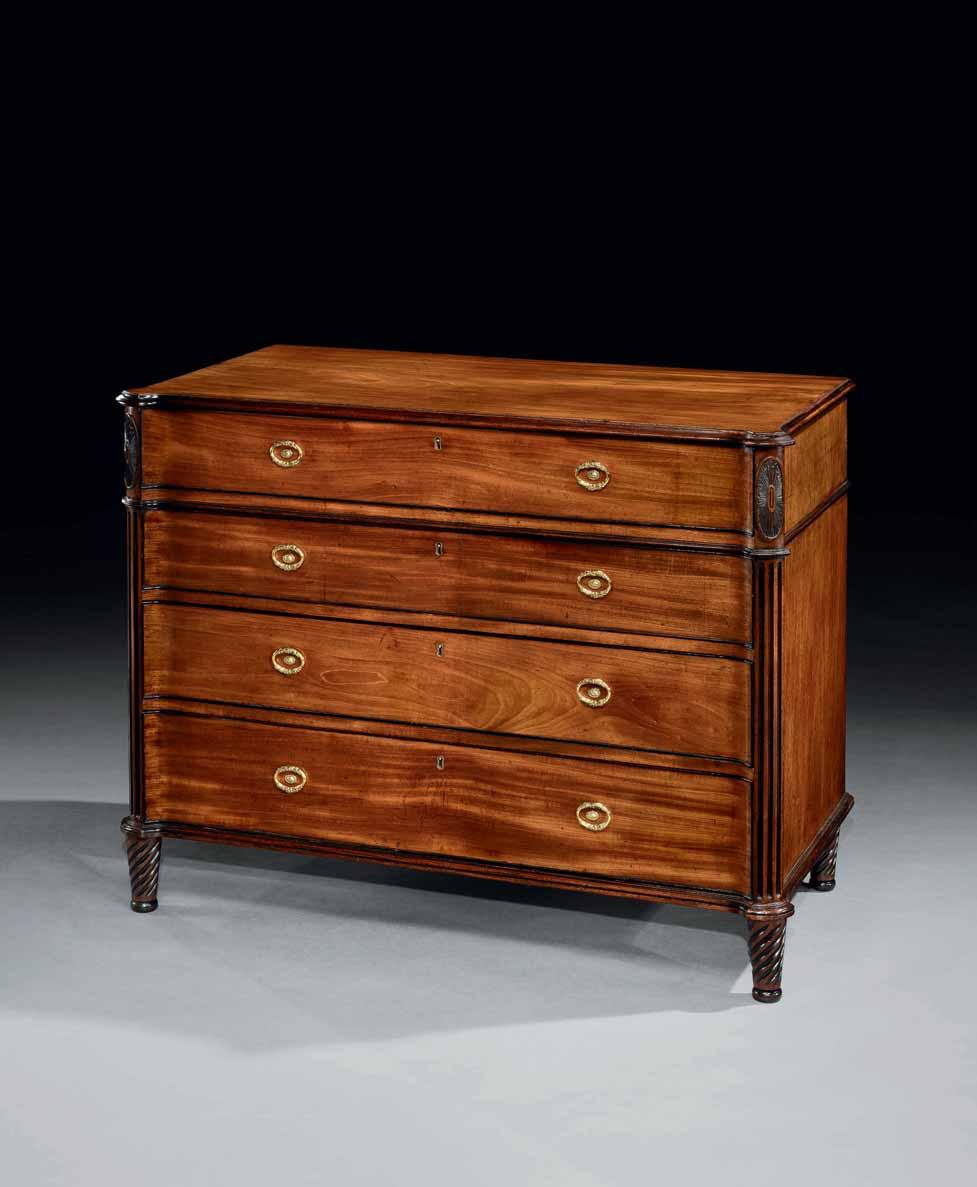
THE RONALD D. PHILLIPS CHEST OF DRAWERS
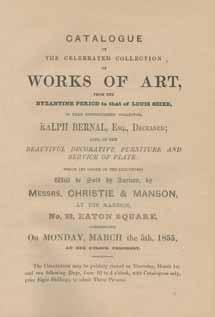
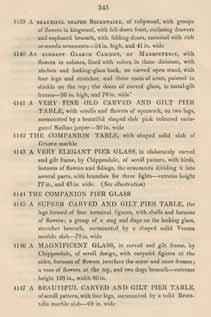
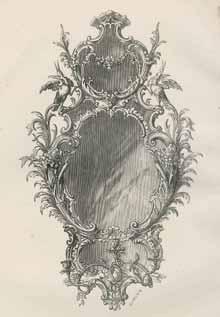
A GEORGE III GILTWOOD SEGMENTAL GIRANDOLE MIRROR ATTRIBUTED TO THOMAS CHIPPENDALE
Note: The mirror plates and candle arms are replacements. The frame was re-gilded at some stage in the 20th century. The companion girandole mirror is in the collection of the Victoria and Albert Museum in London.
English, circa 1765
Height: 6 ft 3 in; 190.5 cm
Width: 3 ft 6 in; 107 cm
Depth: 1 ft 2 in; 35.5 cm
Provenance: Ralph Bernal, 93 Eaton Square, London, England, until 1855; Arnott & Gale of Bond Street, London, England; Mallett & Son Ltd., London, England; Alfred Cook Antiques, London, England, prior to 1965; M. Harris & Sons, London, England, until June 1967; Private collection, England, until December 2013; Private collection, USA.
Illustrated: Christie’s, ‘Catalogue of the celebrated collection of works of art from the Byzantine period to that of Louis Seize of that distinguished collector Ralph Bernal Esq., deceased’, sale catalogue, London, 5 March 1855, facing p. 341.
Oliver Brackett, Thomas Chippendale, 1924, p. 239, pl. XLIII; the companion mirror.
Country Life, 20 December 1962, p. 1584; advertisement with Mallett & Son Ltd.
Geoffrey Wills, English Looking-glasses: A Study of the Glass, Frames and Makers (1670–1820), 1965, p. 100, fig. 91.
Literature: Christopher Gilbert, The Life and Work of Thomas Chippendale, 1978, vol. I, pp. 166–94.
Adam Bowett and James Lomax, ‘Thomas Chippendale 1718–1779: A Celebration of British Craftsmanship and Design’, tercentenary exhibition catalogue, 2018, pp. 34–7.
At the time of the Bernal sale in London in 1855, museum collections were still in their infancy. However, Ralph Bernal was praised for putting together a collection of exquisite taste and of the highest quality, and perhaps for this reason the South Kensington Museum, later renamed the Victoria and Albert Museum, was the single largest buyer in the sale. The museum purchased more than two hundred lots, including two large girandole mirrors. Two pairs of mirrors were in the sale, but oddly the pairs were split up and each mirror was listed as a separate single lot. The museum bought one of each pair and the well-known Bond Street dealers Arnott & Gale bought the two companions.
The sale catalogue states that both pairs are by Chippendale, but gives no more information. It is very likely, however, that both pairs originated from the same house, and they are certainly from the same workshop.
The Victoria and Albert companion mirror appears to have retained more of the original surface, especially at the back of the frame, where remnants of green paint can clearly be seen. The fact that the veining of the leaves and finer carved detail is carved in the wood rather than into the gesso also suggests that the frame was originally painted and possibly parcel gilded.
The girandole mirrors supplied by Chippendale to the Duke of Portland were only gilded, but of the fourteen large girandole mirrors supplied to Sir Rowland Wynn for Nostell Priory in Yorkshire and for his house in London, five were delivered ‘finished green and gold’, while the others were entirely gilded. Some of Sir Rowland Wynn’s girandole mirrors were later dispersed in a sale of contents from the London residence, and it is possible that Ralph Bernal acquired his girandole mirrors at this point.
The Bernal collection sale catalogue, Christie’s, 5 March 1855
A drawing of the mirror in the sale catalogue
The pair of mirrors listed separately as lots 4143 and 4144
THE BERNAL GIRANDOLE MIRROR
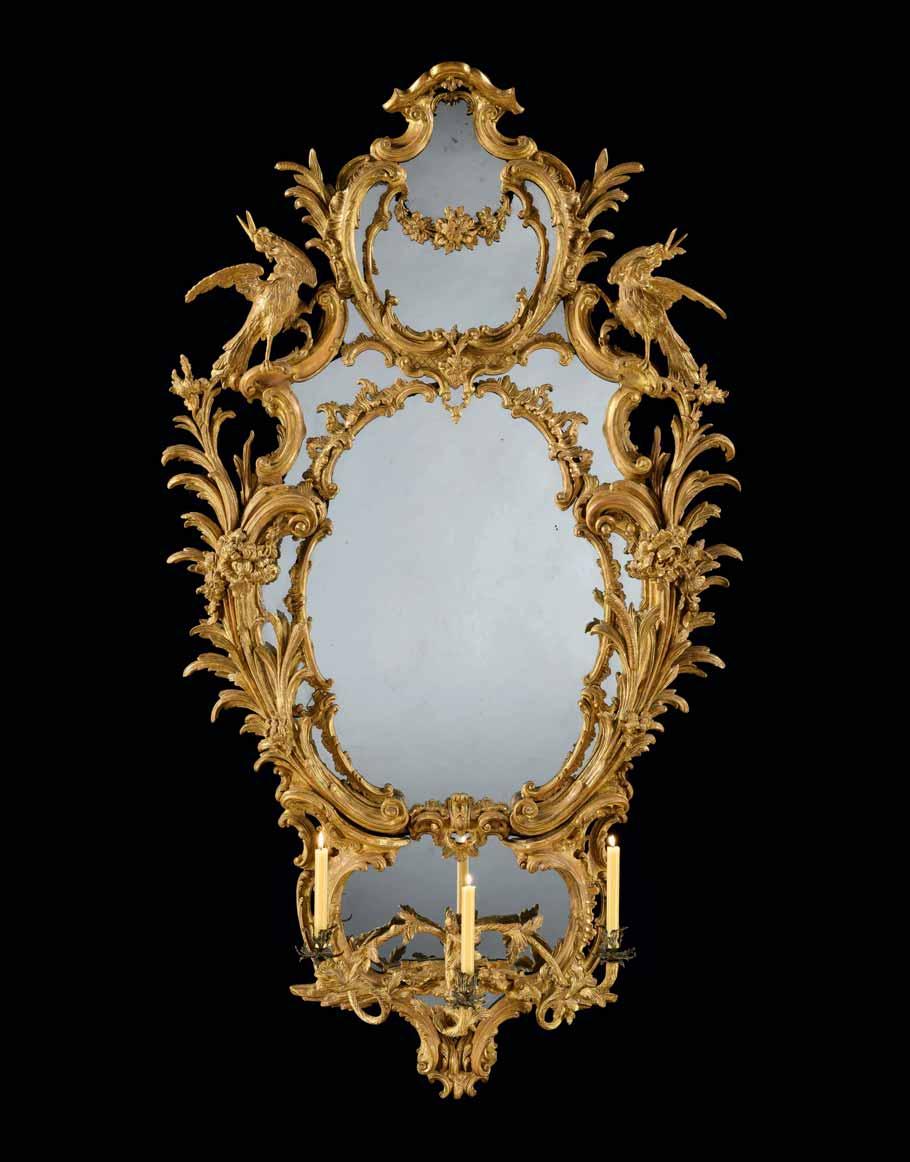
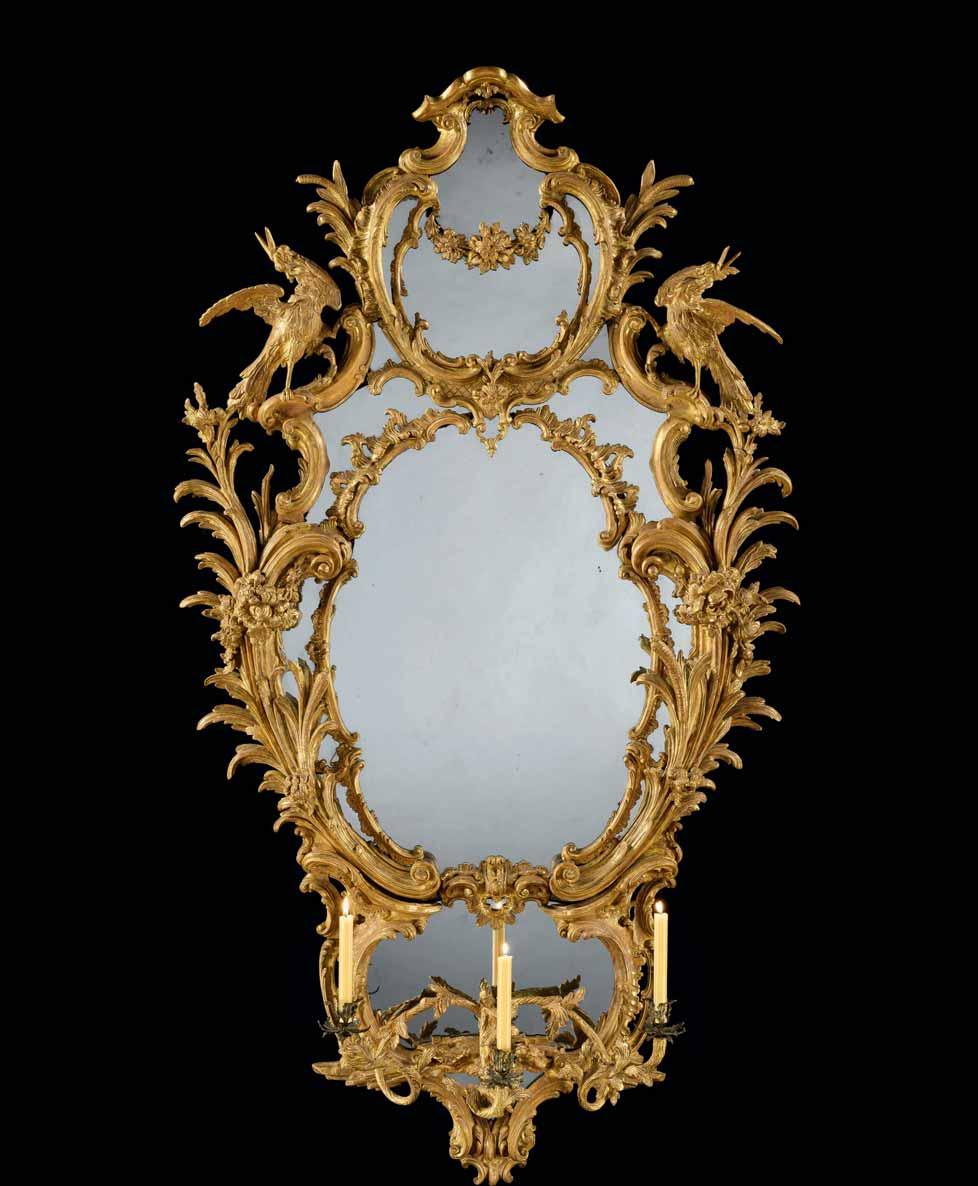
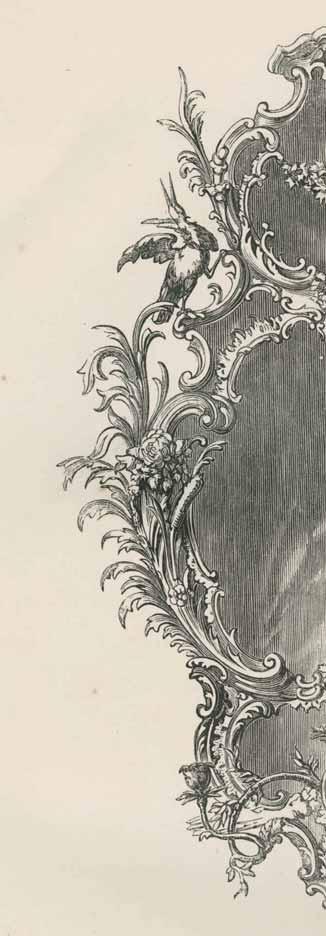

The drawing of the mirror in the Bernal sale catalogue
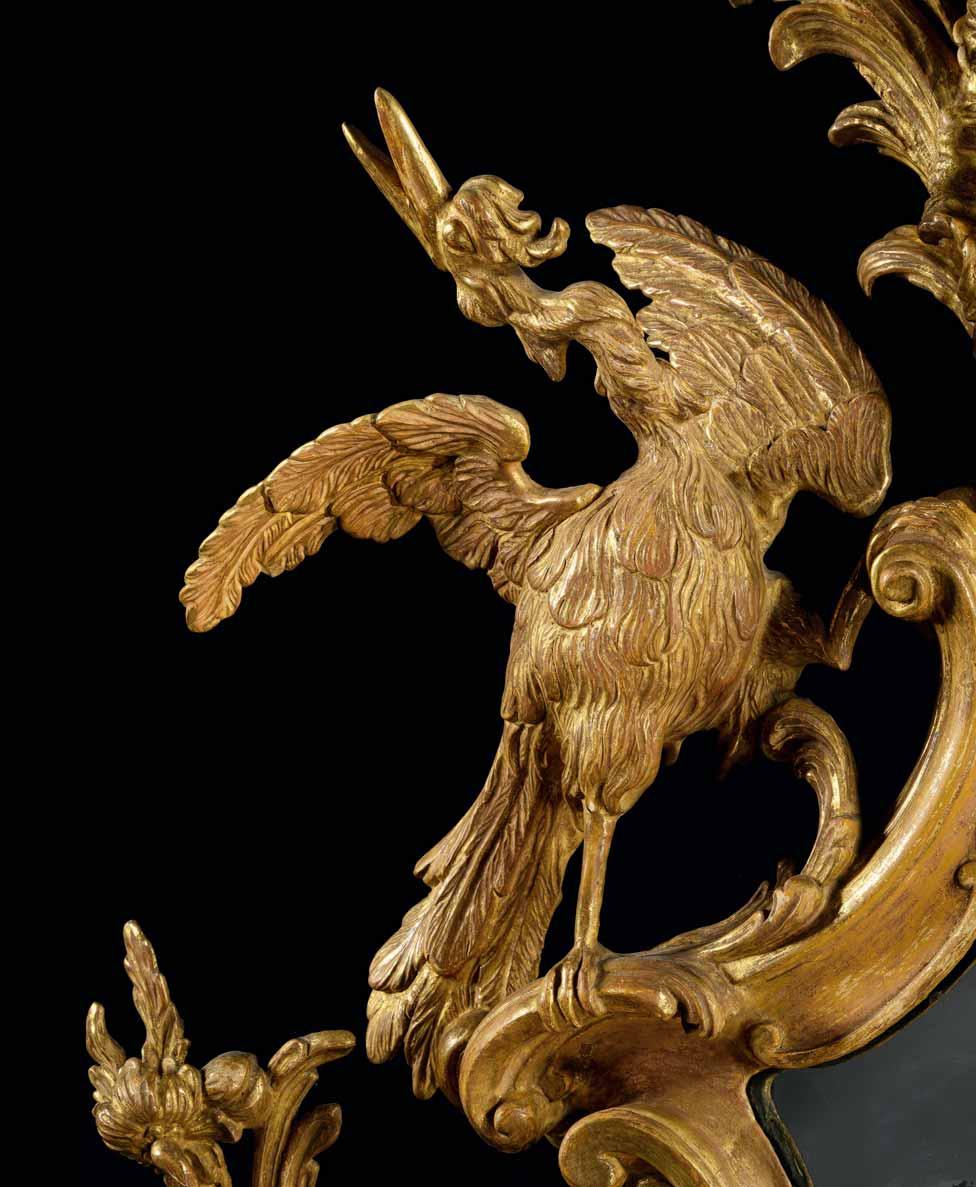
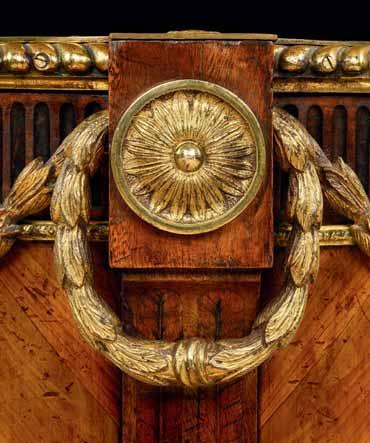
A GEORGE III BRASS MOUNTED YEW WOOD WINE CISTERN ATTRIBUTED TO INCE & MAYHEW
Note: The brass liner is of later date.
English, circa 1775
Height: 22½ in; 57 cm
Width: 30¾ in; 78 cm
Depth: 21¾ in; 55.5 cm
Provenance:
The Earls of Hopetoun, Luffness Castle, Scotland; Hotspur Ltd., London, England; Ronald Phillips Ltd., London, England; Private collection, England; Ronald Phillips Ltd., London, England; Private collection, USA.
The attribution to the workshop of William Ince and John Mayhew is supported by the characteristic use of chevron veneered yew wood and the application of superior ormolu mounts produced in the workshop of Dominique Jean, who frequently supplied gilded brasswork to the company. The gadrooned brass border can also be found on many pieces associated with Ince & Mayhew, as can the paterae.
The firm occasionally also ordered mounts from Boulton & Fothergill, but only a very few commissions are known. Among them is the celebrated Duchess of Manchester cabinet, supplied by Ince & Mayhew in 1775.
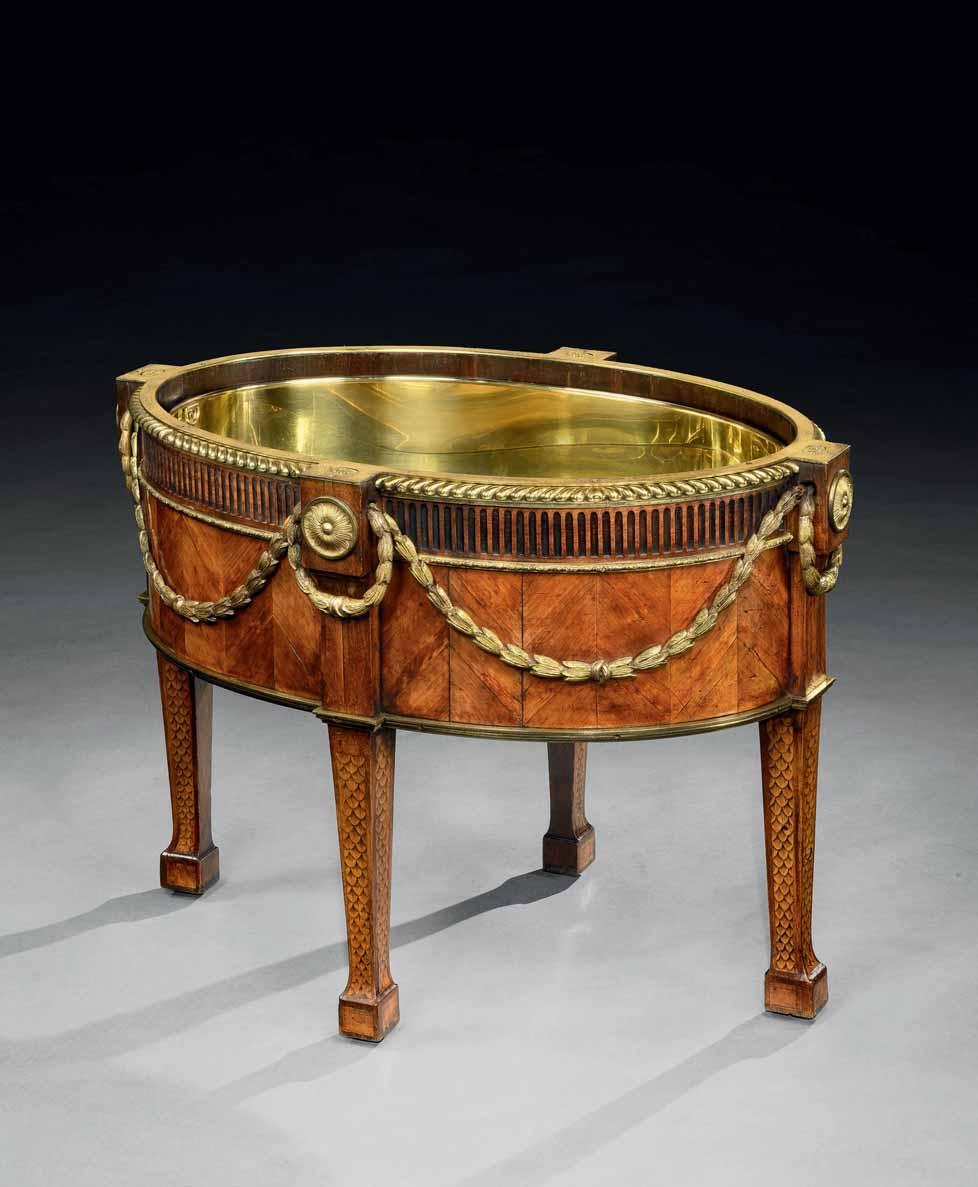
THE LUFFNESS CASTLE WINE CISTERN
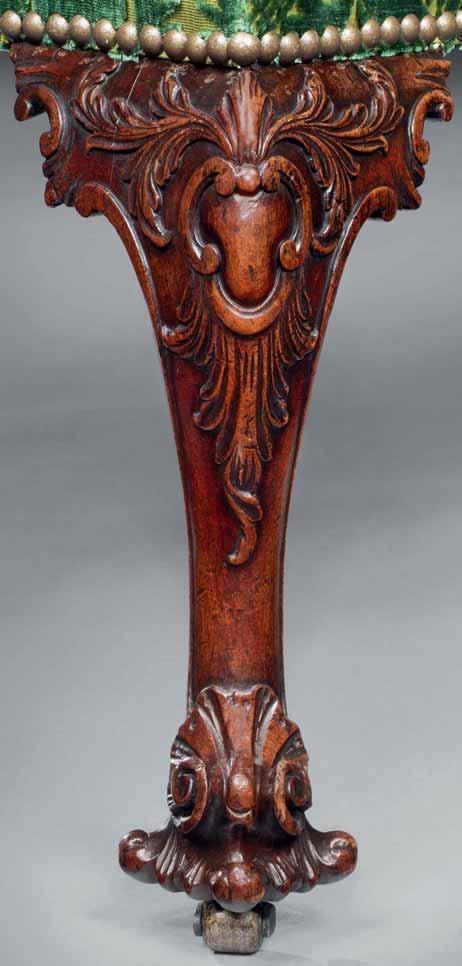
A GEORGE II MAHOGANY LIBRARY ARMCHAIR
English, circa 1750
Height: 38½ in; 98 cm
Height of seat: 16½ in; 42 cm
Width: 29 in; 73.5 cm
Depth: 29 in; 73.5 cm
Provenance: Mallett & Son Ltd., New York, USA; Private collection, USA.
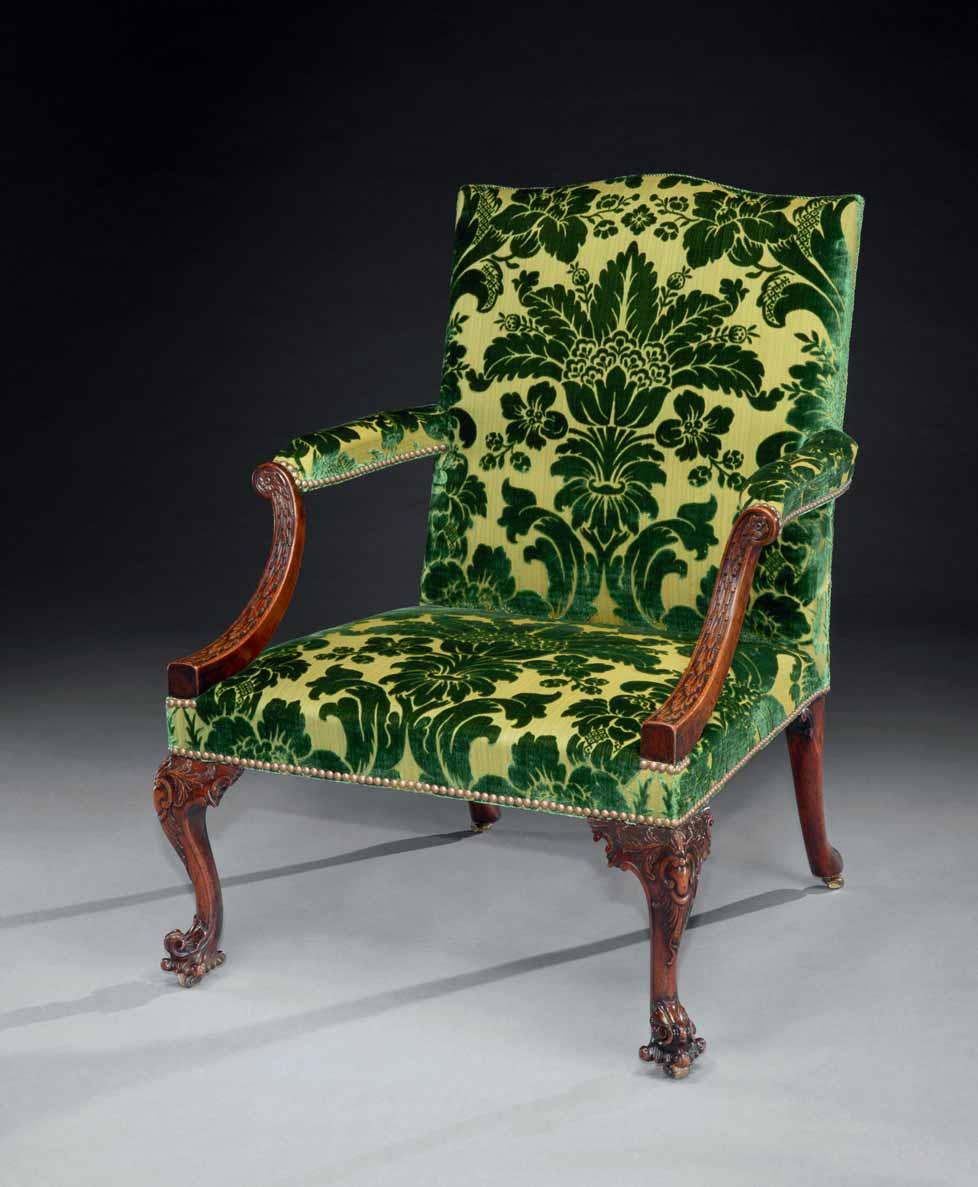
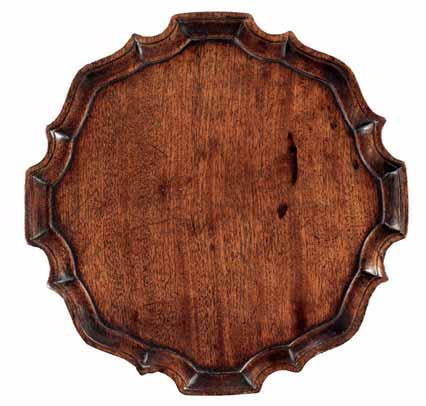
A GEORGE III MAHOGANY KETTLE STAND
English, circa 1765
Height: 21 in; 53.5 cm
Diameter: 15 in; 38 cm
Provenance: Quinneys Ltd., Warwick, England; Private collection, England.
Illustrated: Country Life, 1959 (date incomplete), supplement p. XVI; advertisement with Quinneys Ltd.
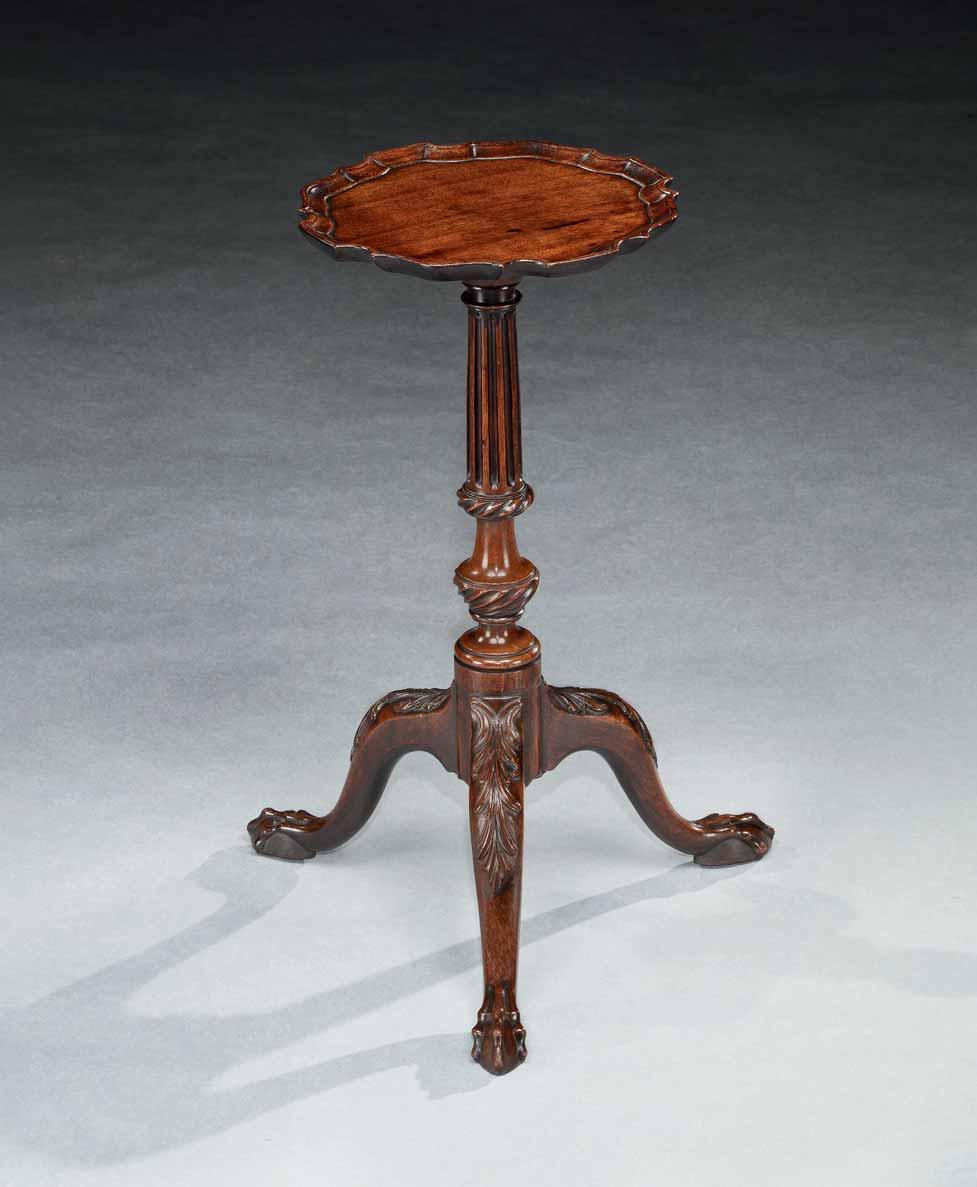
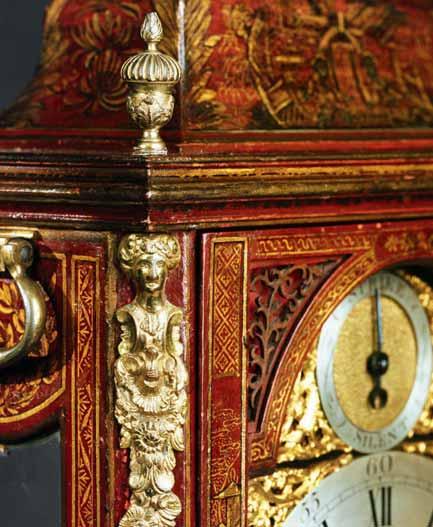
A GEORGE III BRASS MOUNTED AND SCARLET
JAPANNED THREE TRAIN QUARTER CHIMING TABLE CLOCK BY SMITH & SON, LONDON
London, circa 1785
Height: 25¼ in; 64 cm
Width: 14¼ in; 36.5 cm
Depth: 9 in; 23 cm
Provenance: Ronald Phillips Ltd., London, England; Private collection, Europe.
Illustrated: Ronald Phillips Ltd., ‘Antique English Furniture’, catalogue, 2004, p. 59.
The clock face is fitted with a subsidiary strike/silent dial within the arch, with scroll spandrels and a matted centre and inset shaped signature plate and date aperture. The triple fusee movement has a verge escapement, striking and quarter chiming on eight bells.
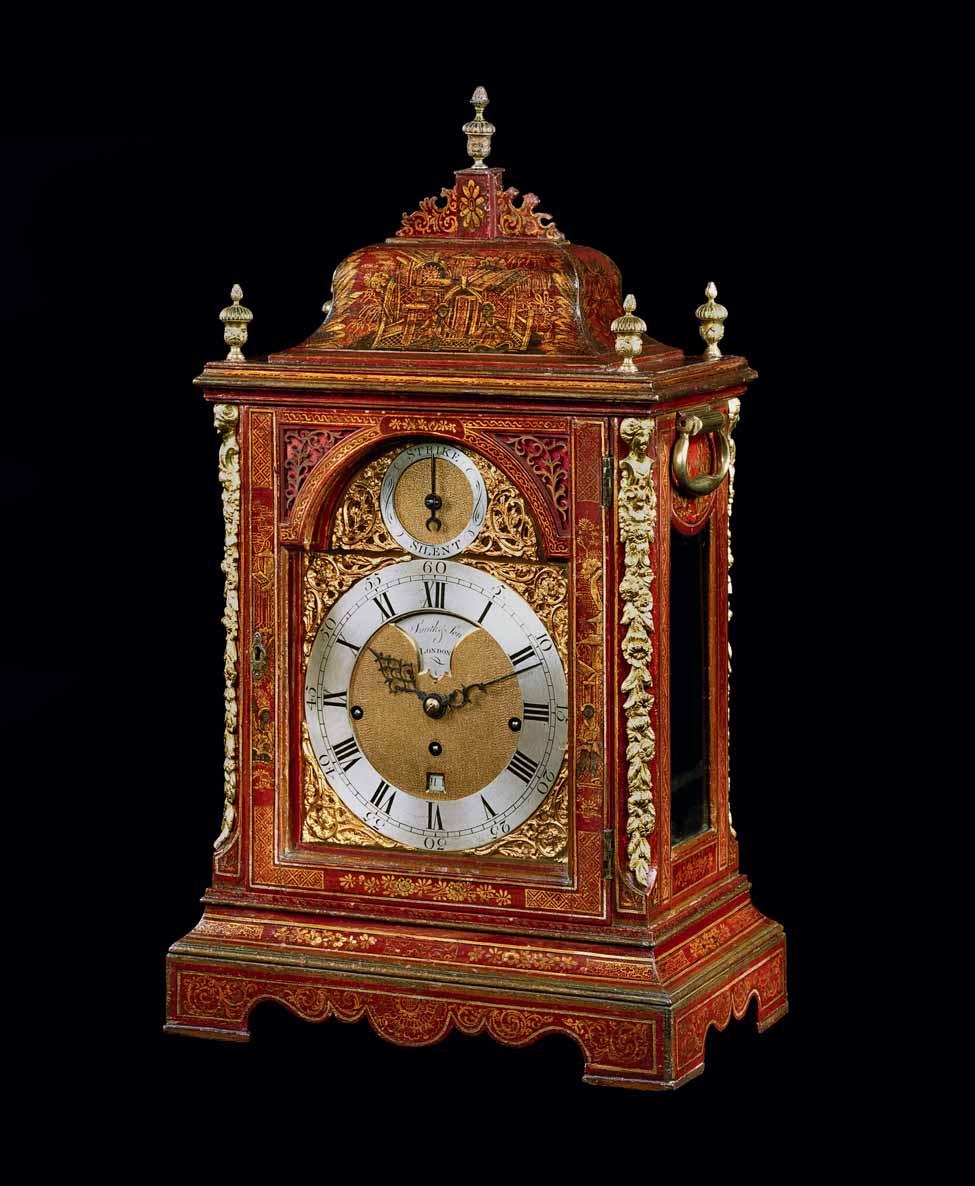
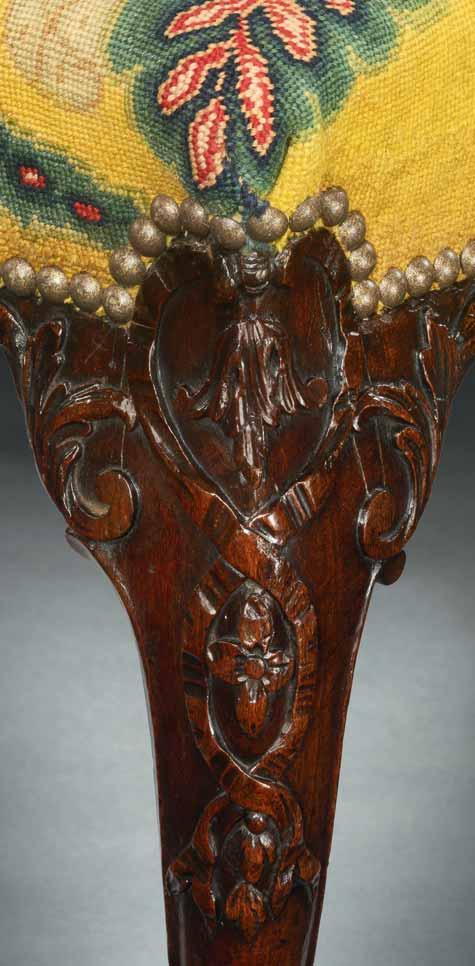
The stool: English, circa 1755
The needlework cover: French, circa 1750
Height: 19 in; 48.5 cm
Width: 34¾ in; 88.5 cm
Depth: 21 in; 53.5 cm
Provenance: Private collection, England.
The stool is virtually double the size of a standard stool. Models of this larger size are extremely rare.
A GEORGE II MAHOGANY LONG STOOL
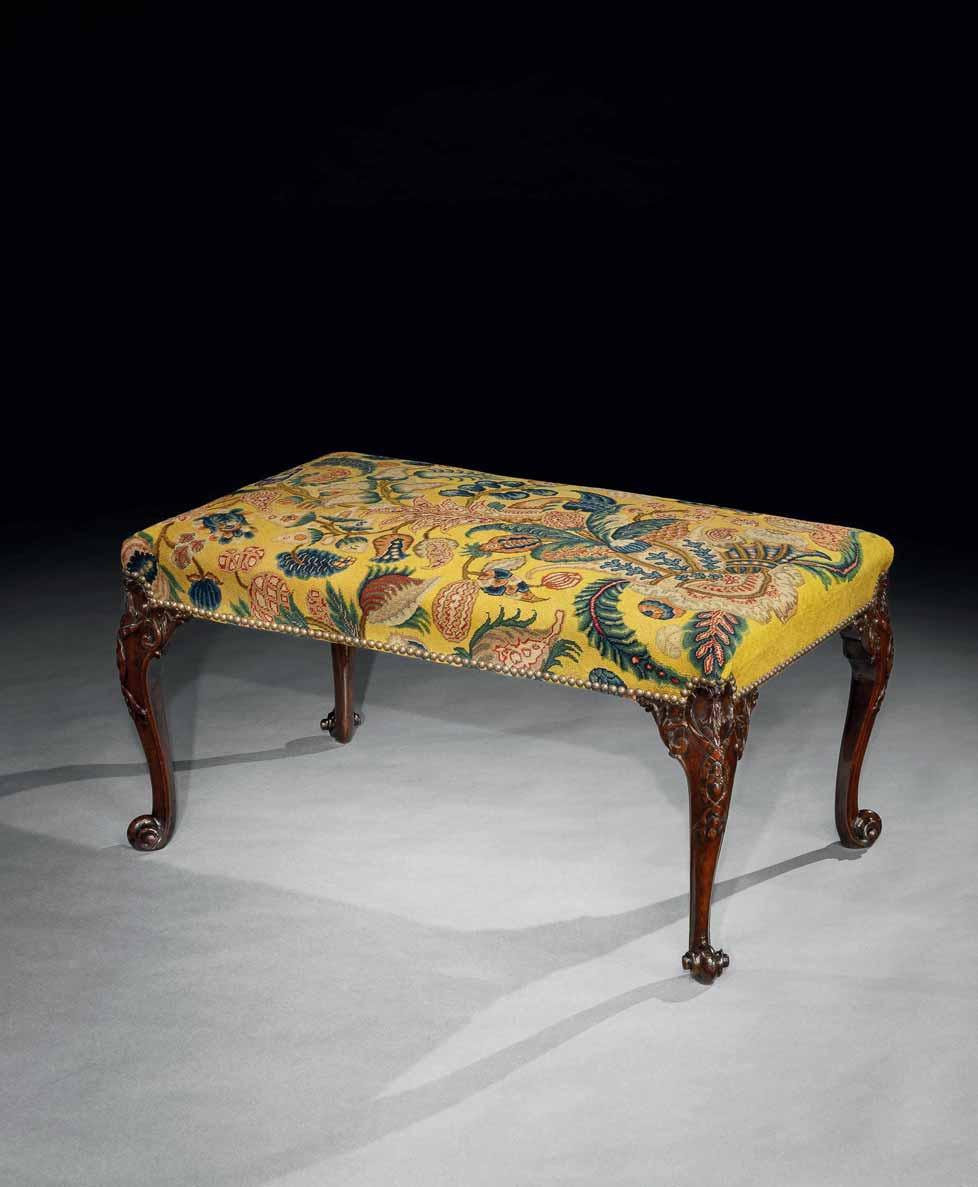
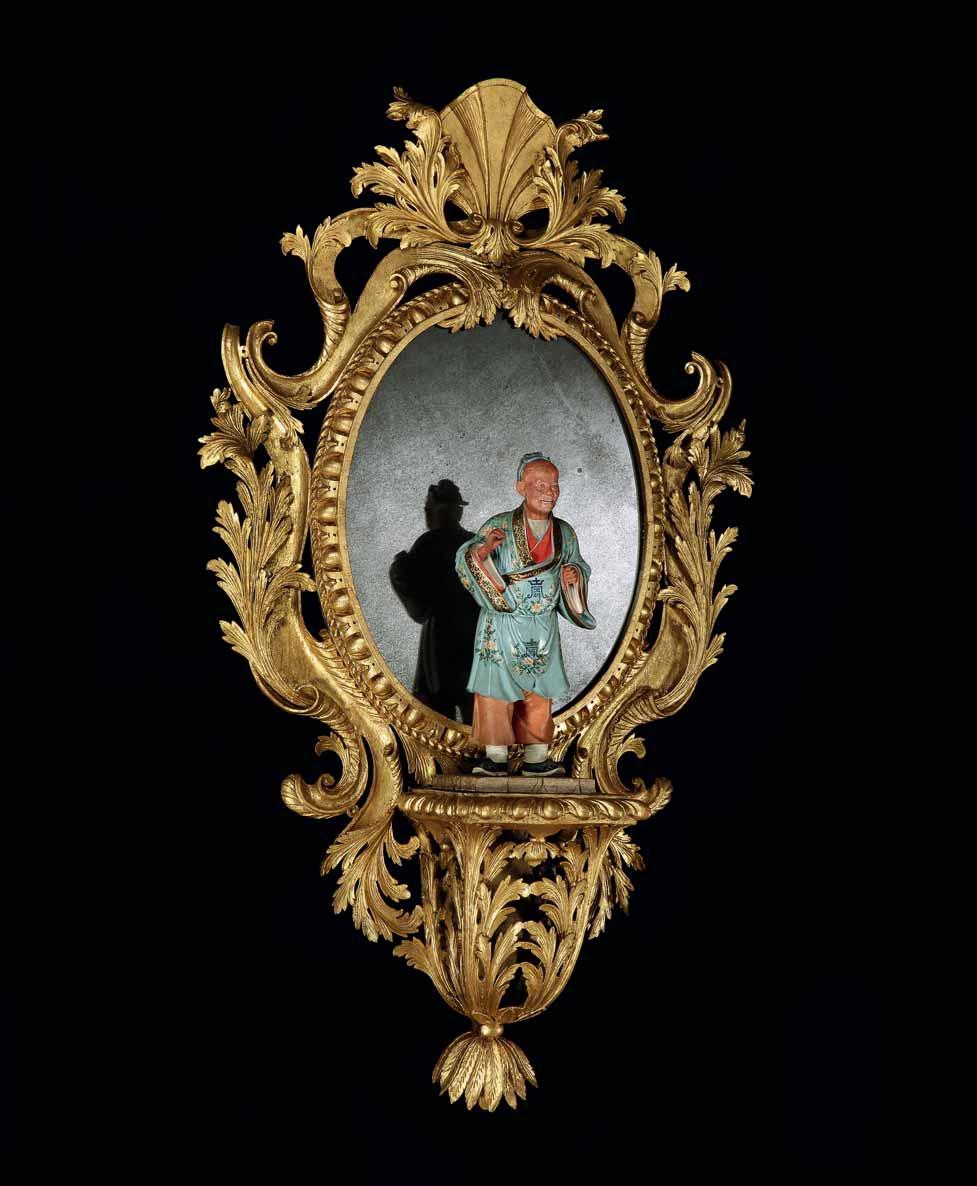
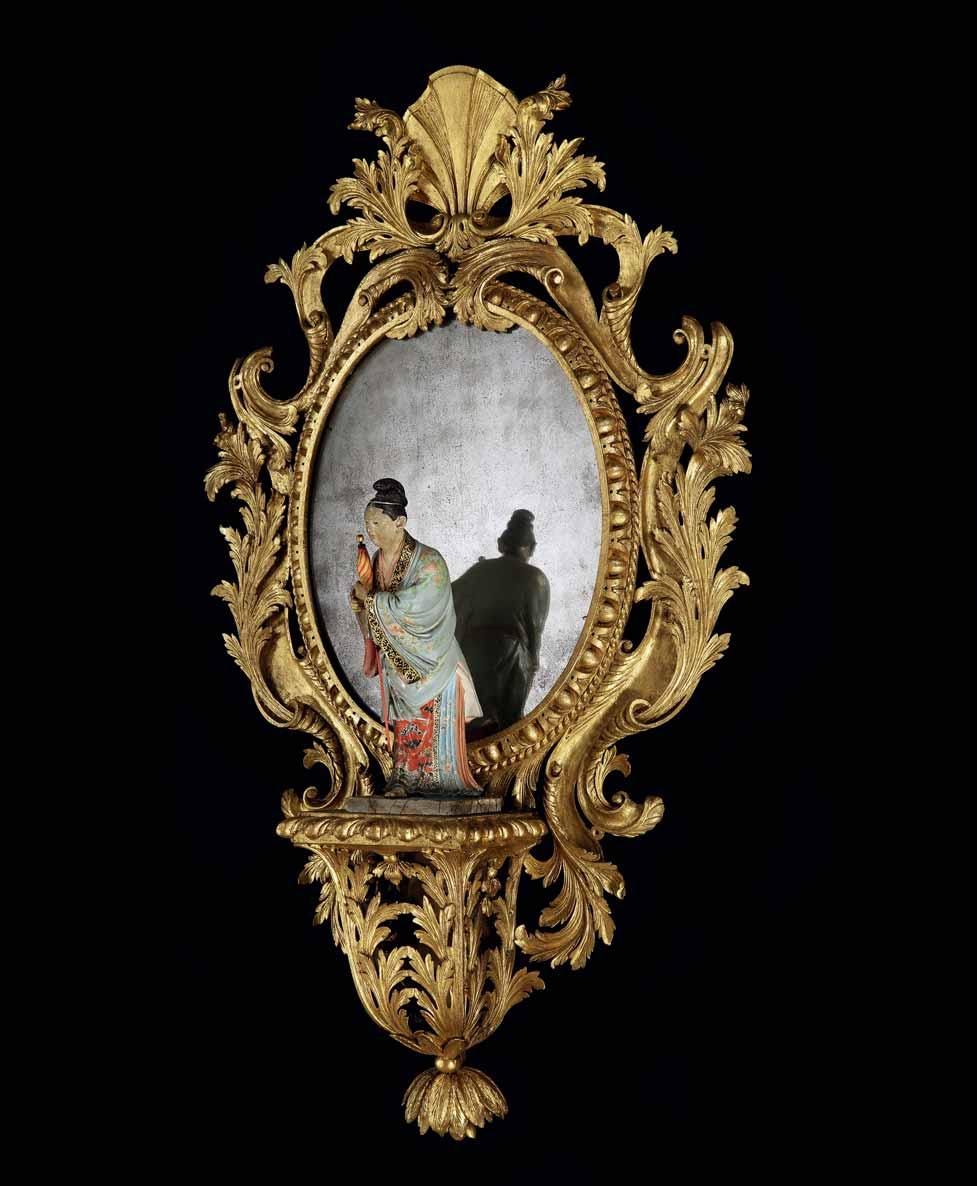
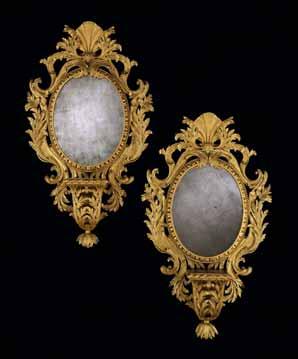
18
A PAIR OF GEORGE II GILTWOOD MIRRORS WITH BRACKETS
Note: The frames retain virtually all the original oil gilding and their mercury silvered mirror plates. The shell crestings are a restoration.
English, circa 1740
Height: 49½ in; 125.5 cm
Width: 29 in; 73.5 cm
Depth: 9¾ in; 25 cm
Provenance: Joseph Sykes, Chauntry House, Newark, Nottinghamshire, England.
Literature: John Vardy, Some Designs of Mr. Inigo Jones and Mr. William Kent, 1744, title page. National Art Galleries Inc., ‘Period English Furniture, French and Flemish Tapestries, Decorative Paintings etc., The Surplus Stock of Charles of London owing to removal from 2 West 56th Street, New York’, sale catalogue, 24–25 April 1931, pp. 26–7, lot 109.
The title page, drawn by William Kent, of Some Designs of Mr. Inigo Jones and Mr. William Kent relates in some aspects to the design of these mirrors.
This type of mirror with bracket is extremely rare. A similar example was photographed by A. E. Henson on 28 November 1934 for Country Life magazine at Browsholme Hall, Lancashire. The Browsholme mirror is now in a private collection in London.
The industrialist Joseph Sykes was a friend and follower of R. W. Symonds, who early in the 20th century advised some of the best-known collectors of the day. Symonds’s meticulous and unerring judgement has stood the test of time, and pieces assessed by him are especially sought after and command high prices today.
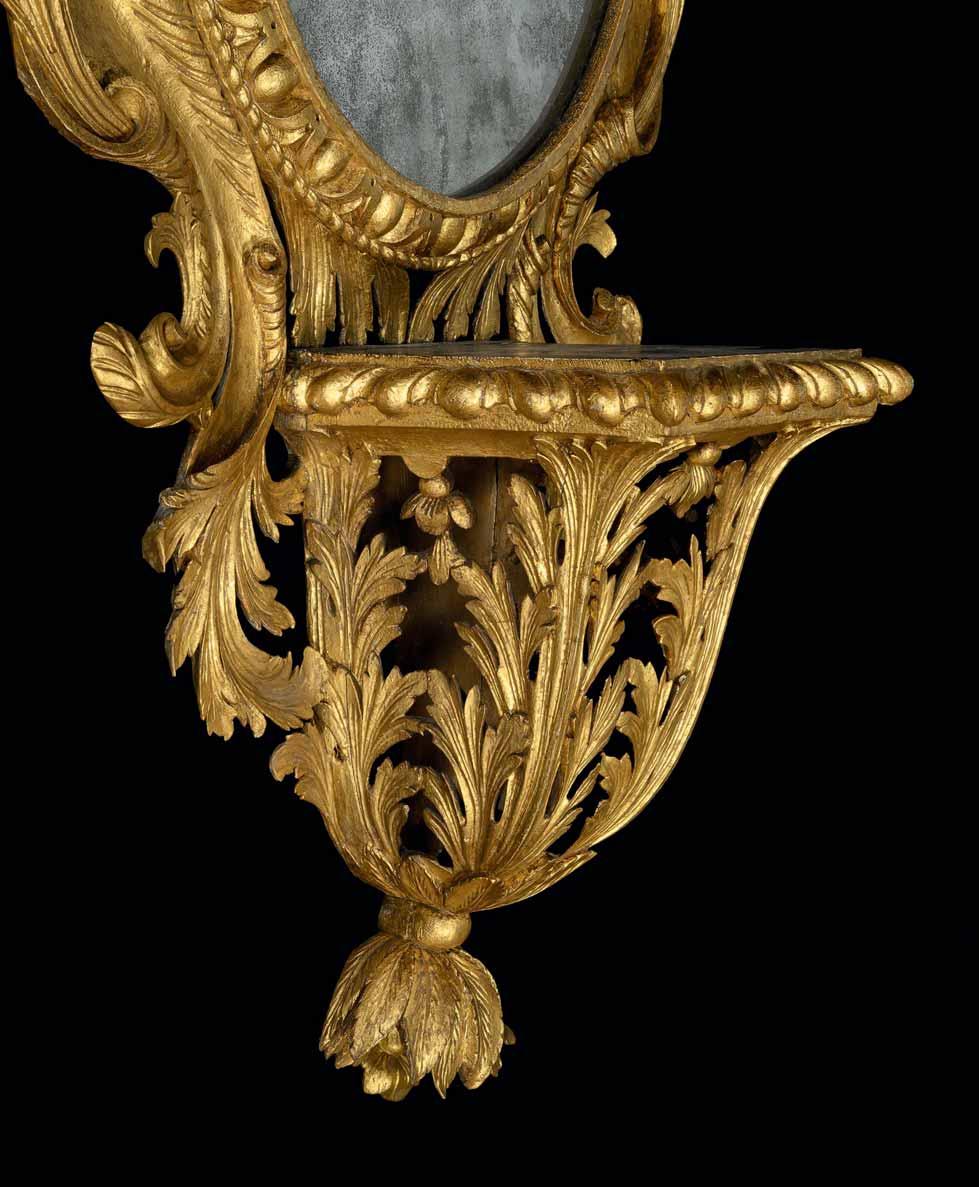
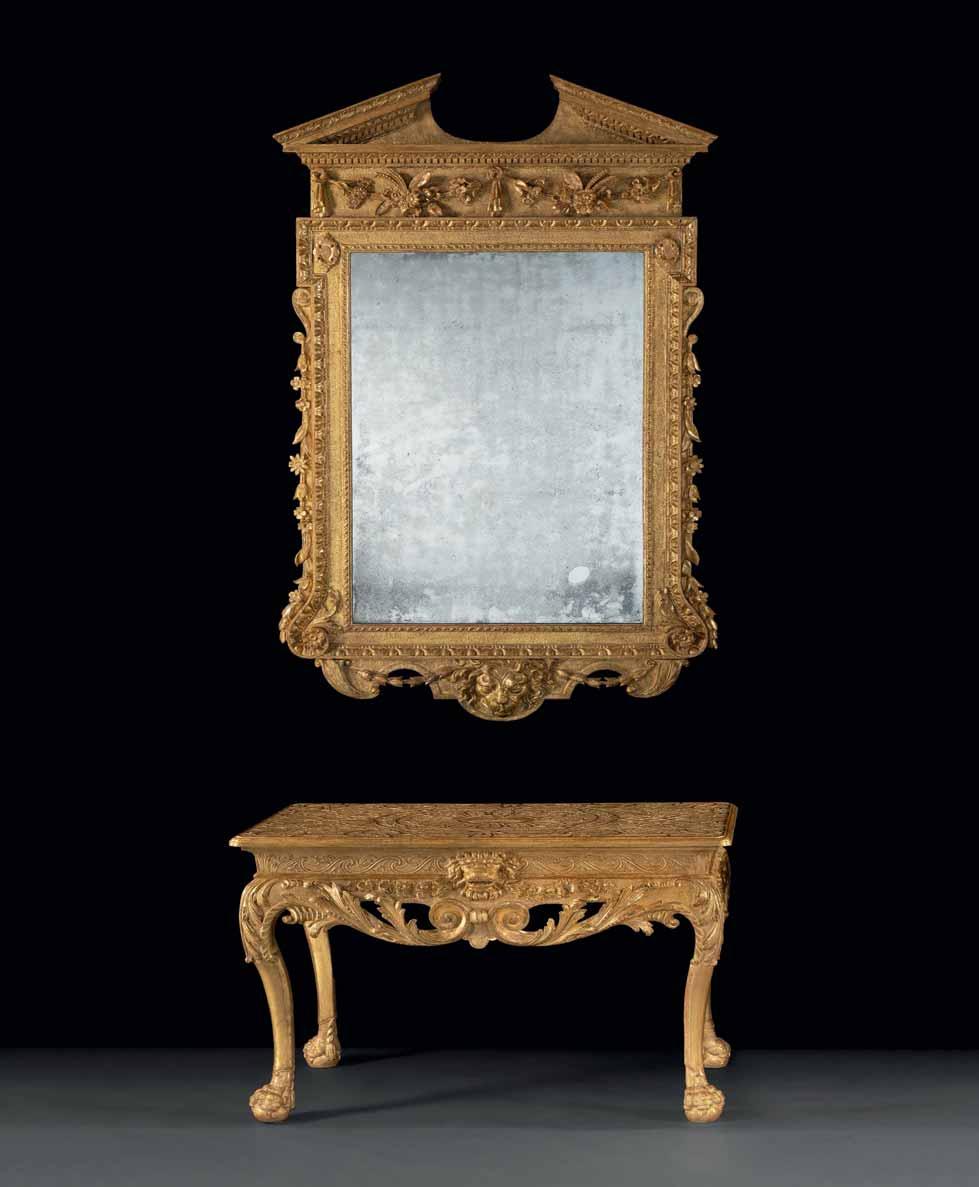
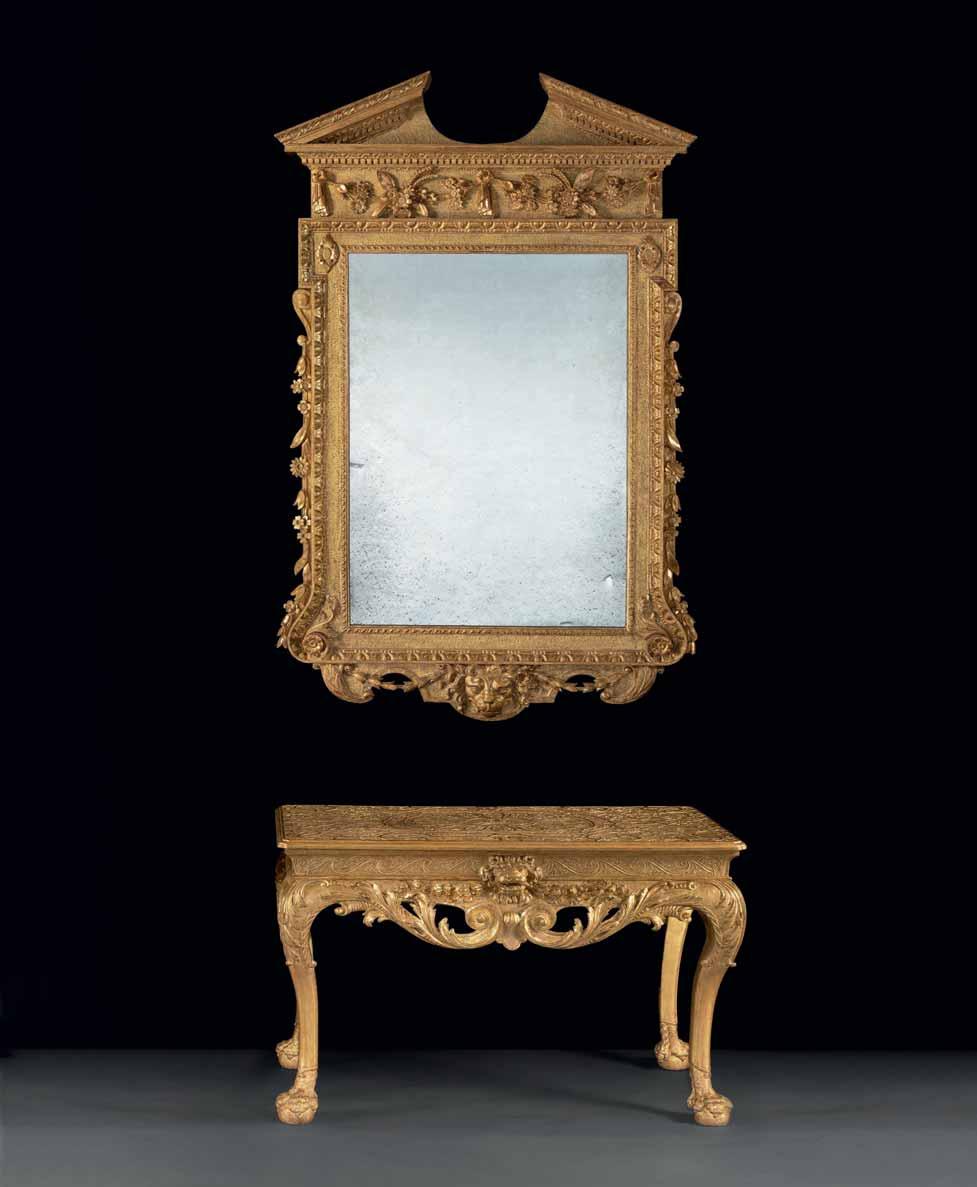
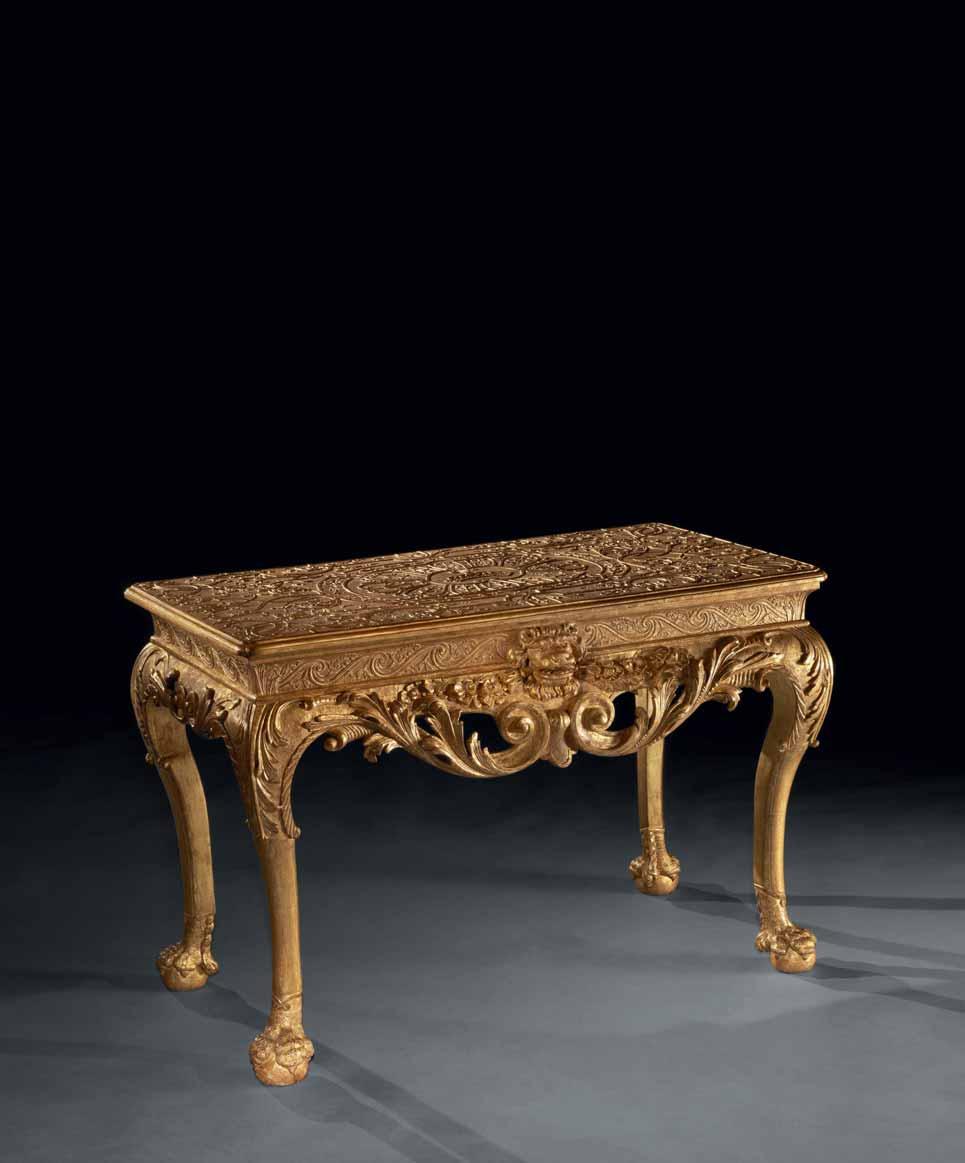
THE HOWTH CASTLE GESSO TABLES
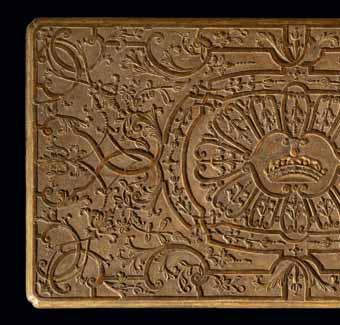
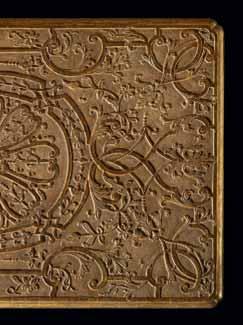
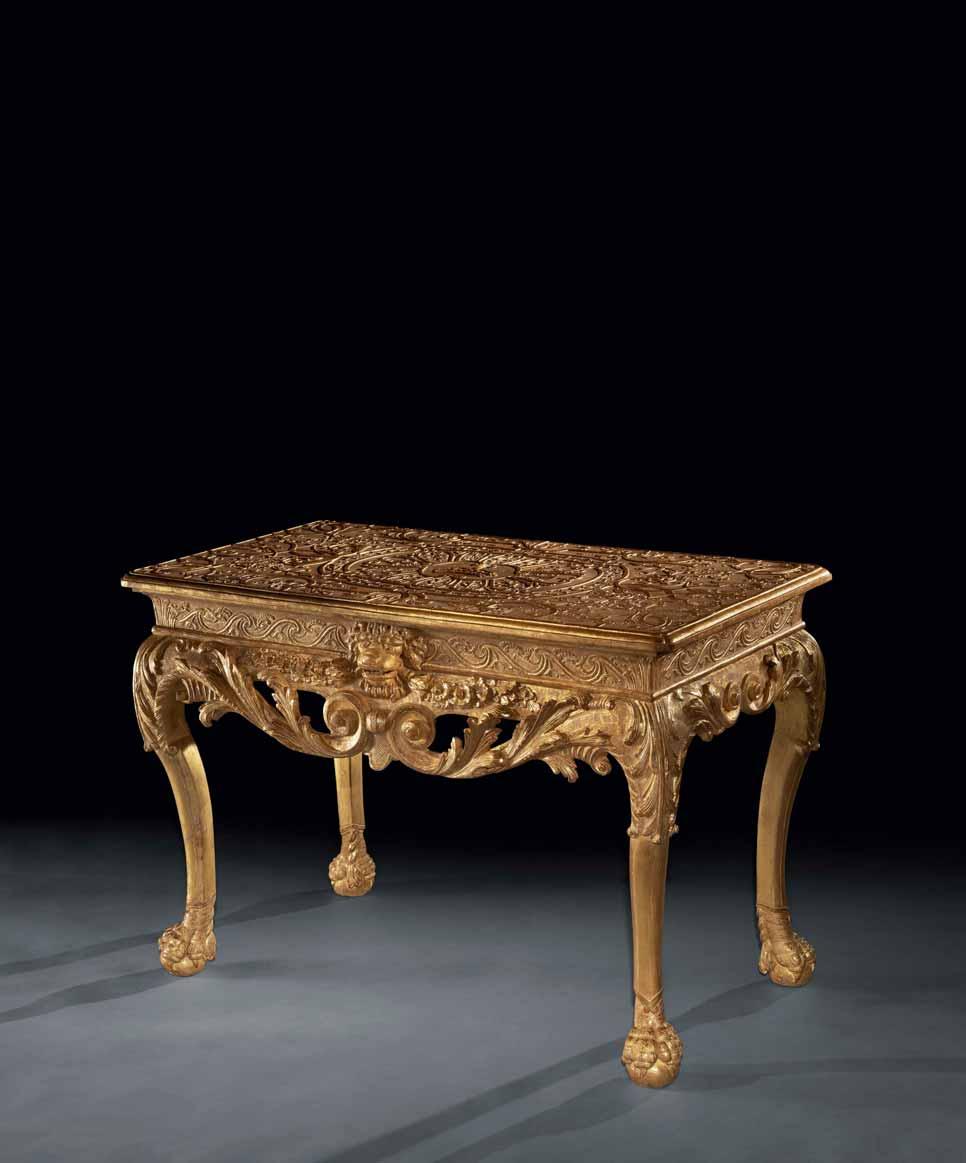
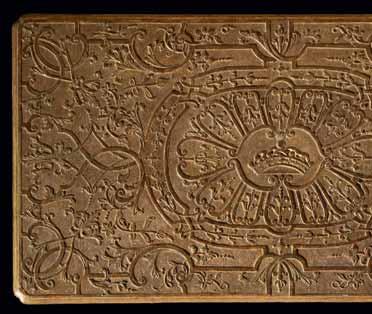
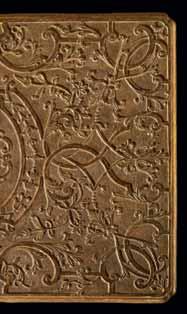
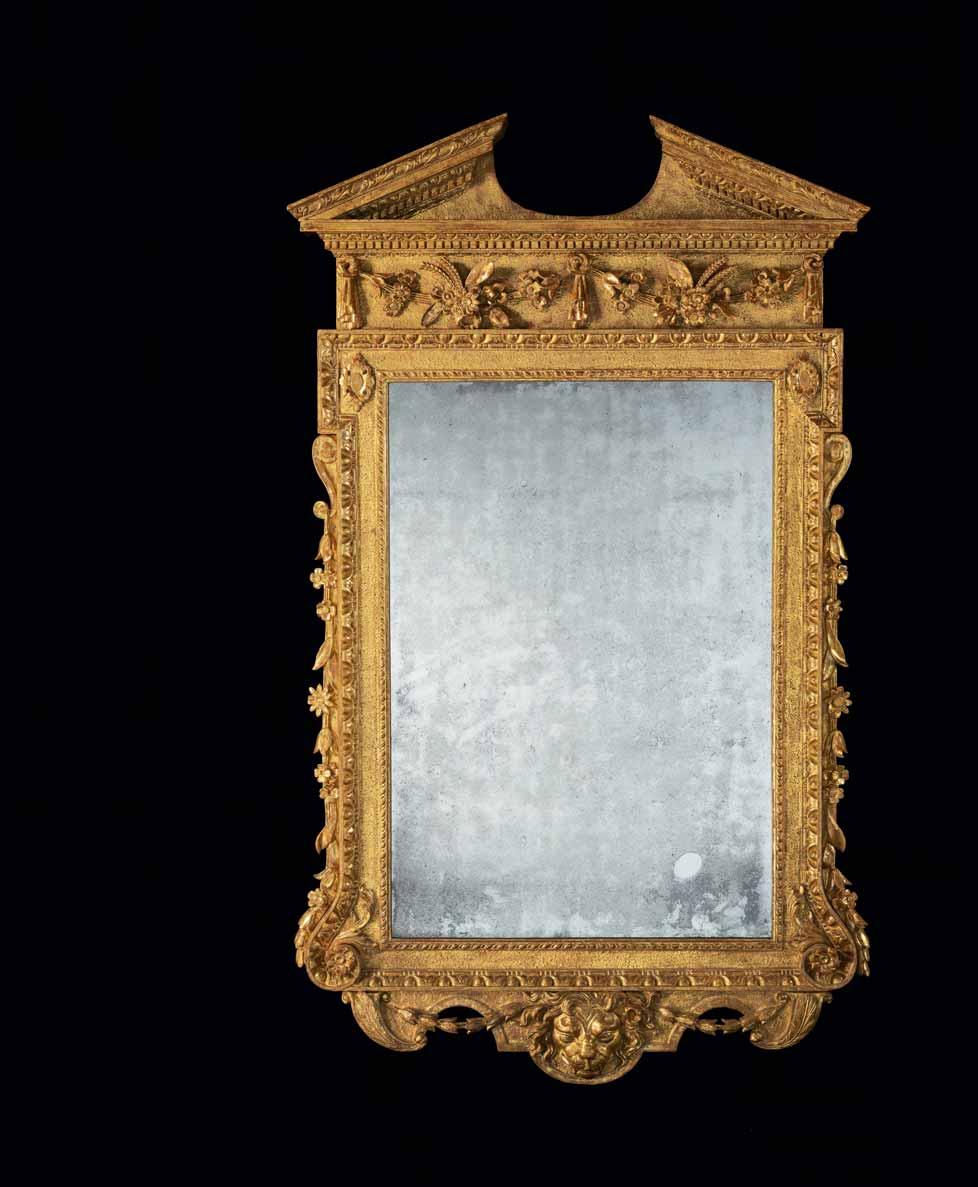
THE HOWTH CASTLE
PIER MIRRORS
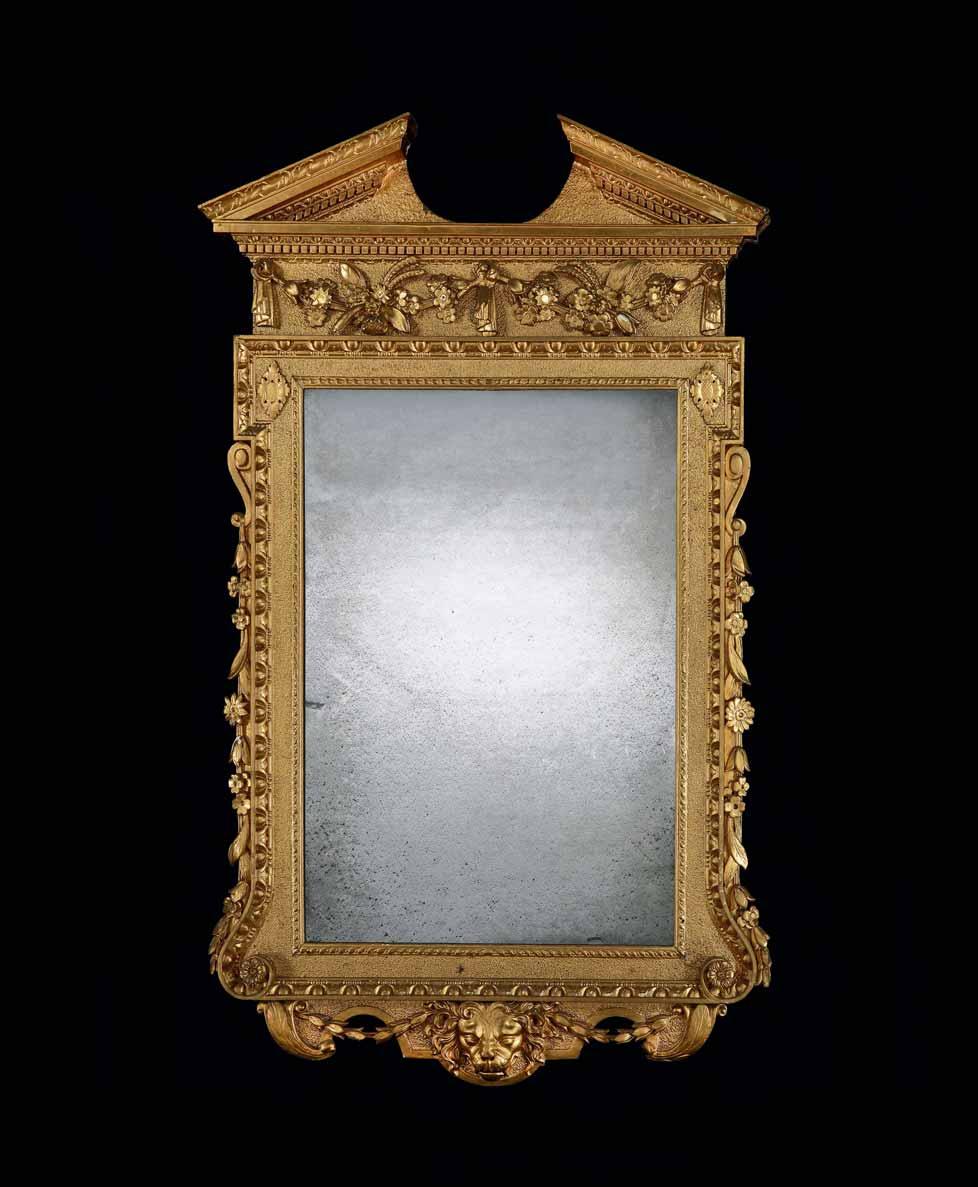
THE HOWTH CASTLE GESSO TABLES AND PIER MIRRORS
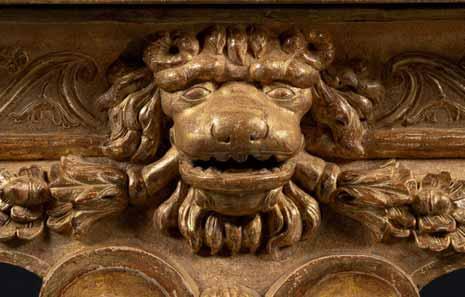
19
A
PAIR
OF IRISH GEORGE II GILT GESSO SIDE TABLES
Note: The tables retain much of the original gesso preparation and some of the original gilding. A later and badly deteriorated gilding scheme carried out in 1828 has been removed, and new gold has been laid onto the original clays and blended in with the original gilding.
One table inscribed on inside of the front rail: Regilt Jan 7 1828 W. A.
Irish, circa 1740
Height: 30 in; 76 cm
Width: 44½ in; 113 cm
Depth: 24¼ in; 61.5 cm
Provenance: Commissioned by William St. Lawrence,14th Baron Howth (1688–1748), for either his Dublin house in St. Mary’s Abbey or Howth Castle, Co. Dublin, Ireland; By descent.
Illustrated:
Irish Furniture, pamphlet, 1978, fig. 12 & back cover.
Jacqueline O’Brien and Desmond Guinness, Great Irish Houses and Castles, 1992, p. 27; one table and one mirror in the Drawing Room, Howth Castle.
The Knight of Glin and James Peill, Irish Furniture, 2007, p. 83, fig. 106.
Literature: Christopher Hussey, ‘Malahide Castle, Co. Dublin – I’, 18 April 1947, p. 761, figs 3 & 4.
When Thomas St. Lawrence, 13th Baron Howth, died in 1727, his eldest son William inherited the title. It was probably at this stage that the tables were ordered.
20
A PAIR OF IRISH GEORGE II GILTWOOD PIER MIRRORS ATTRIBUTED TO JOHN BOOKER
Note: The mirrors were regilded in the 19th century as part of a new decorative scheme alongside other furnishings before undergoing a series of restorations. The mirror plates were replaced probably in 1828 with new mercury silvered glasses which have been retained. Dry stripping has now revealed the original preparation with the original clays and some of the original gilding. Extra gold has been laid onto this and blended in with the original.
Irish, circa 1740
Height: 5 ft 5 in; 165 cm
Width: 3 ft 5¼ in; 104.5 cm
Provenance:
Supplied to the 14th Baron Howth for either his Dublin house at St. Mary’s Abbey or Howth Castle, Co. Dublin, Ireland; By descent.
Illustrated:
Irish Furniture, pamphlet, 1978, fig. 12 and back cover.
Jacqueline O’Brien and Desmond Guinness, Great Irish Houses and Castles, 1992, p. 27; one mirror and one table in the Drawing Room, Howth Castle.
Sean O’Reilly, Irish Houses and Gardens, from the archives of Country Life, 1998, p. 41; one mirror facing the chimney breast, photographed 1929.
Opposite: One of the tables and one of the mirrors in situ in the Drawing Room of Howth Castle, Co. Dublin, illustrated in Great Irish Houses and Castles
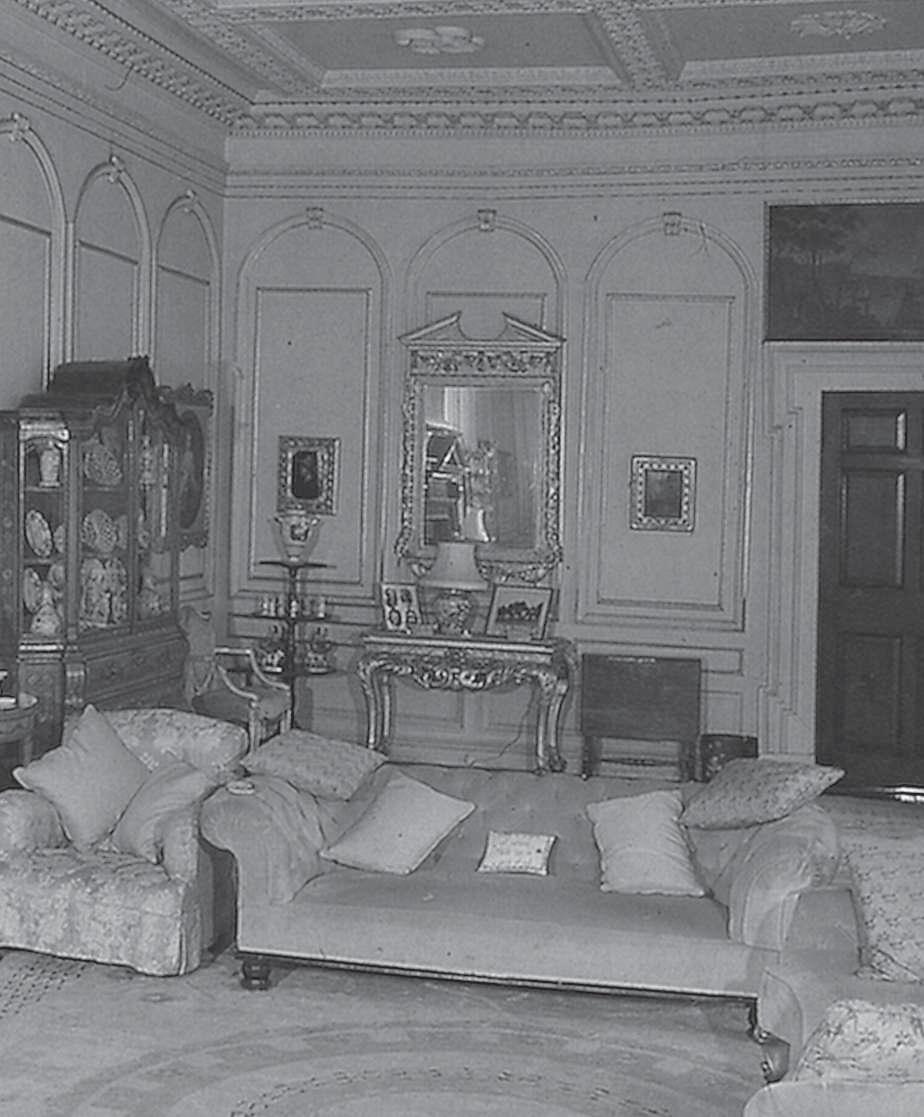
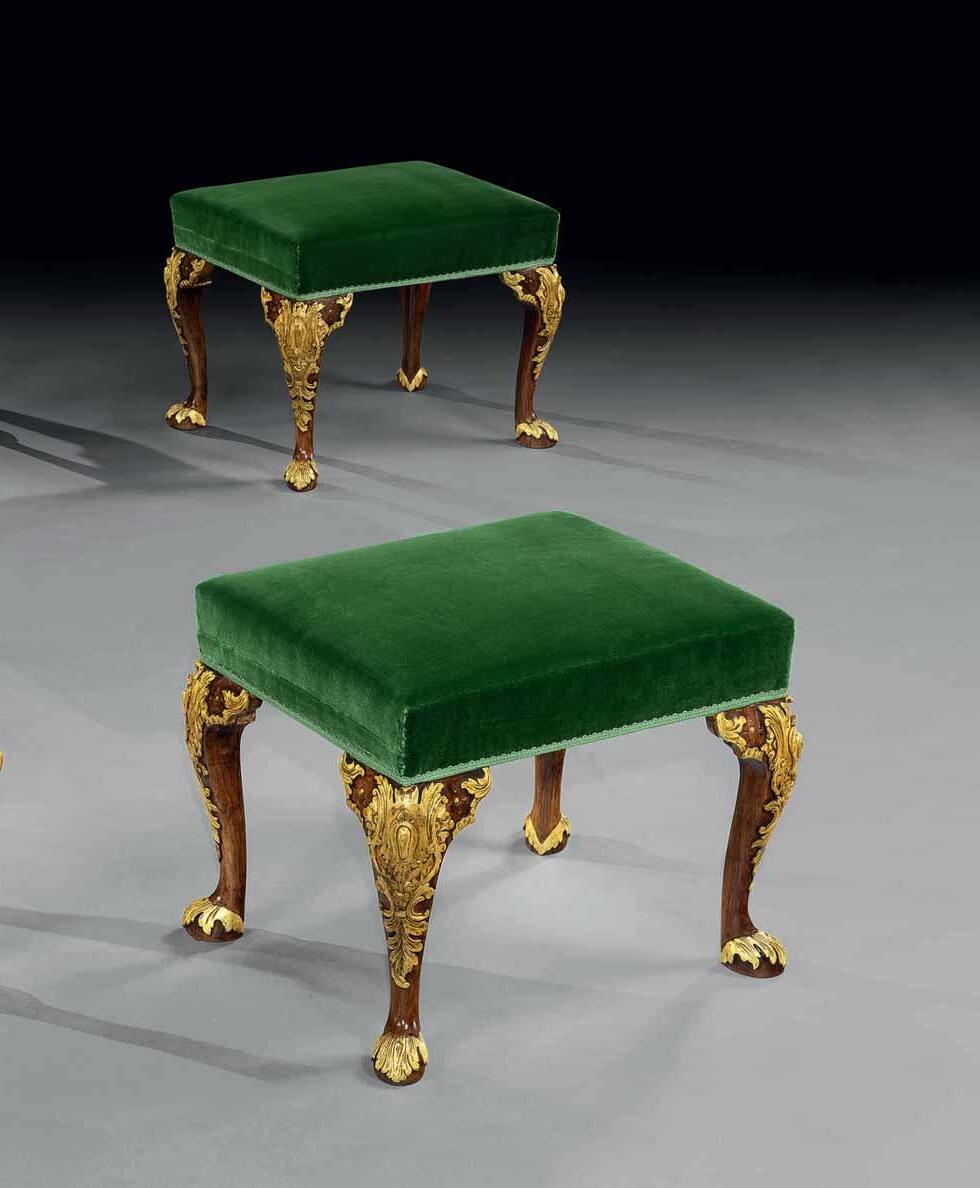
THE COLONIAL WILLIAMSBURG STOOLS
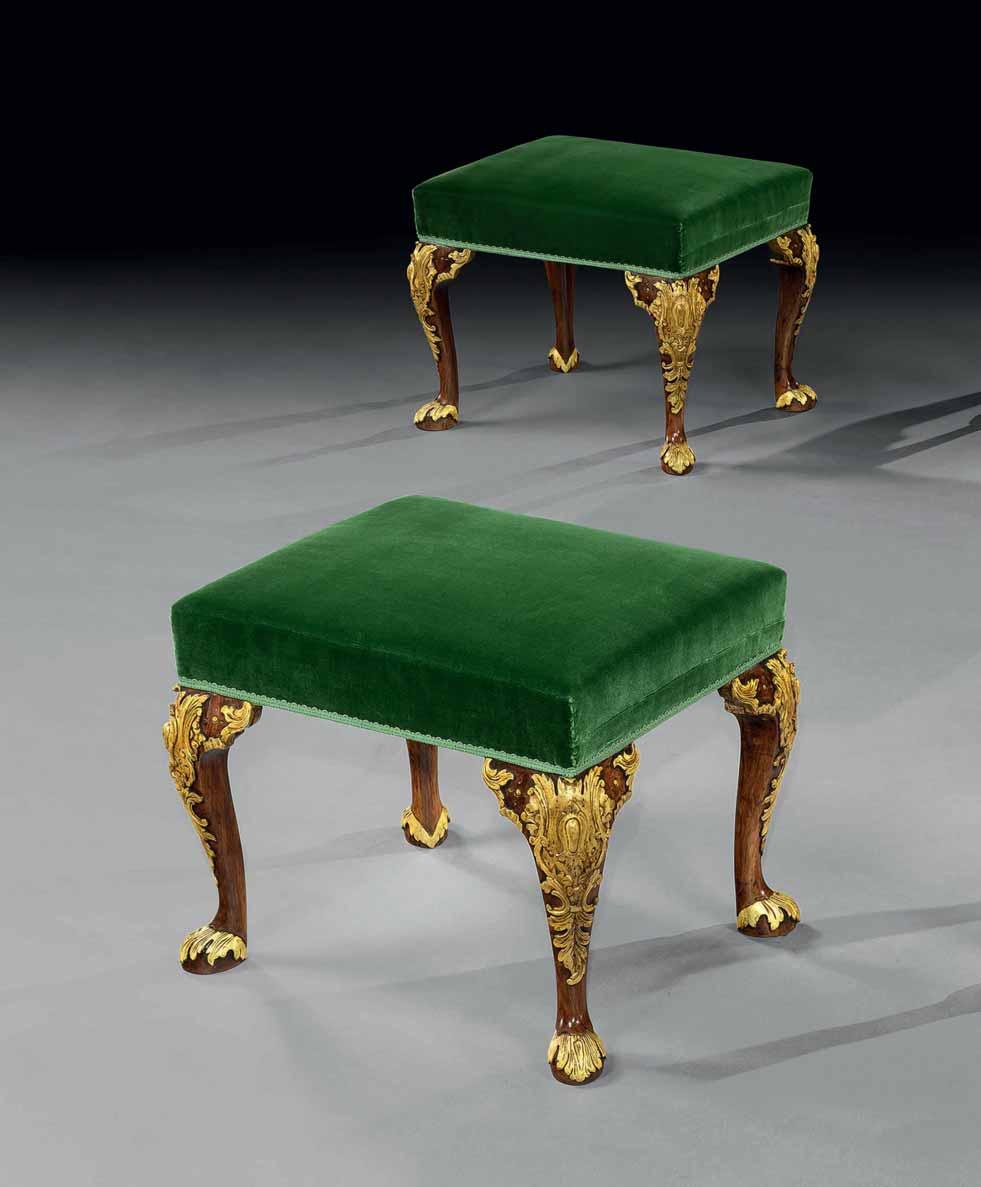
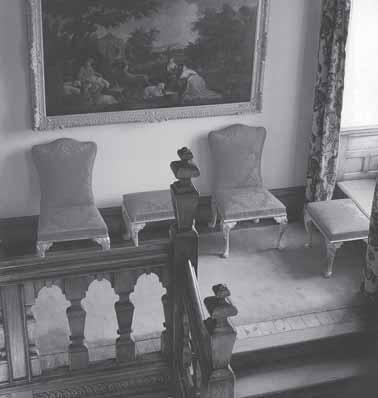
Two of the stools in situ on the first floor landing of Benacre Hall, Suffolk, 2002. Courtesy of Sotheby’s
SET OF FOUR GEORGE I PARCEL GILT WALNUT STOOLS
Note: The parcel gilding has been reinstated.
English, circa 1725
Height: 19 in; 48.5 cm
Width: 22½ in; 57.5 cm
Depth: 17¾ in; 45 cm
Provenance:
Sir William Gooch, 1st Baronet, Royal Lieutenant Governor (1681–1751), for the Governor’s House, Williamsburg, Virginia, present-day USA (1727–1747);
Subsequently shipped to Hampton, Middlesex, England, until 1775; By descent to Sir Thomas Gooch, 3rd Baronet, Benacre Hall, Suffolk, England; By descent to Sir John Gooch, 12th Baronet, Benacre Hall, Suffolk, England, until 2000; Private collection, New York, USA.
Illustrated: Sotheby’s, ‘Benacre Hall, The Property of the Estate of the late Sir John Gooch, 12th Bt.’, sale catalogue, Suffolk, 9–11 May 2002, p. 203.
The previous white painted and parcel gilt decorative scheme was carried out in the 19th century to celebrate Queen Victoria’s visit to Benacre Hall in December 1851. The original parcel gilding has now been reinstated, enhancing the beautiful colour of the walnut.
A
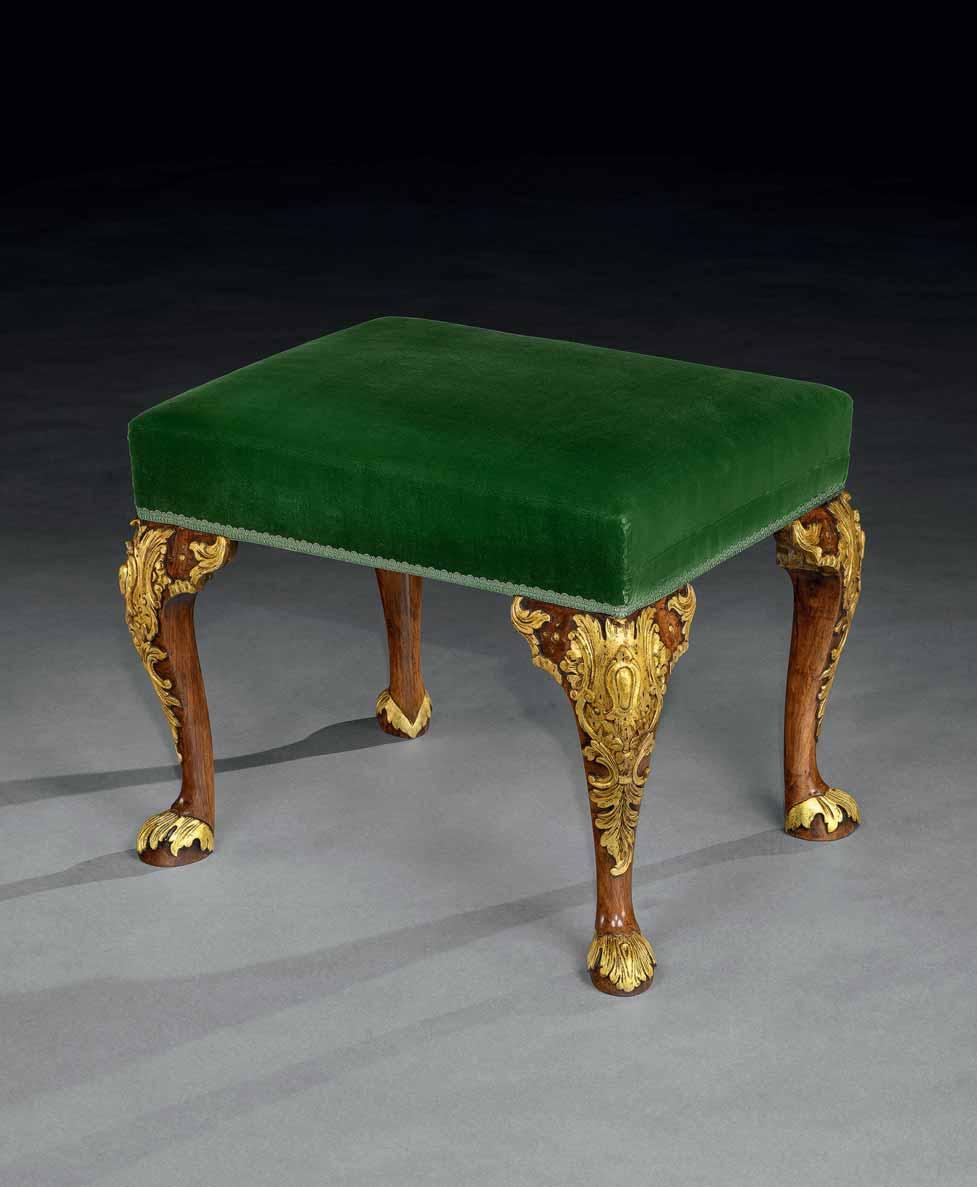
A GEORGE I PARCEL GILT FIGURED WALNUT MIRROR GIRANDOLE
Note: The mirror retains its original shaped and bevelled mirror plate and the original gilding. The glass candle arms and brass sockets are of later date.
English, circa 1720
Height: 47½ in; 120.5 cm
Width: 27¾ in; 70.5 cm
Depth: 9½ in; 24 cm
Provenance: Mallett & Son Ltd., London, England; Private collection, USA.
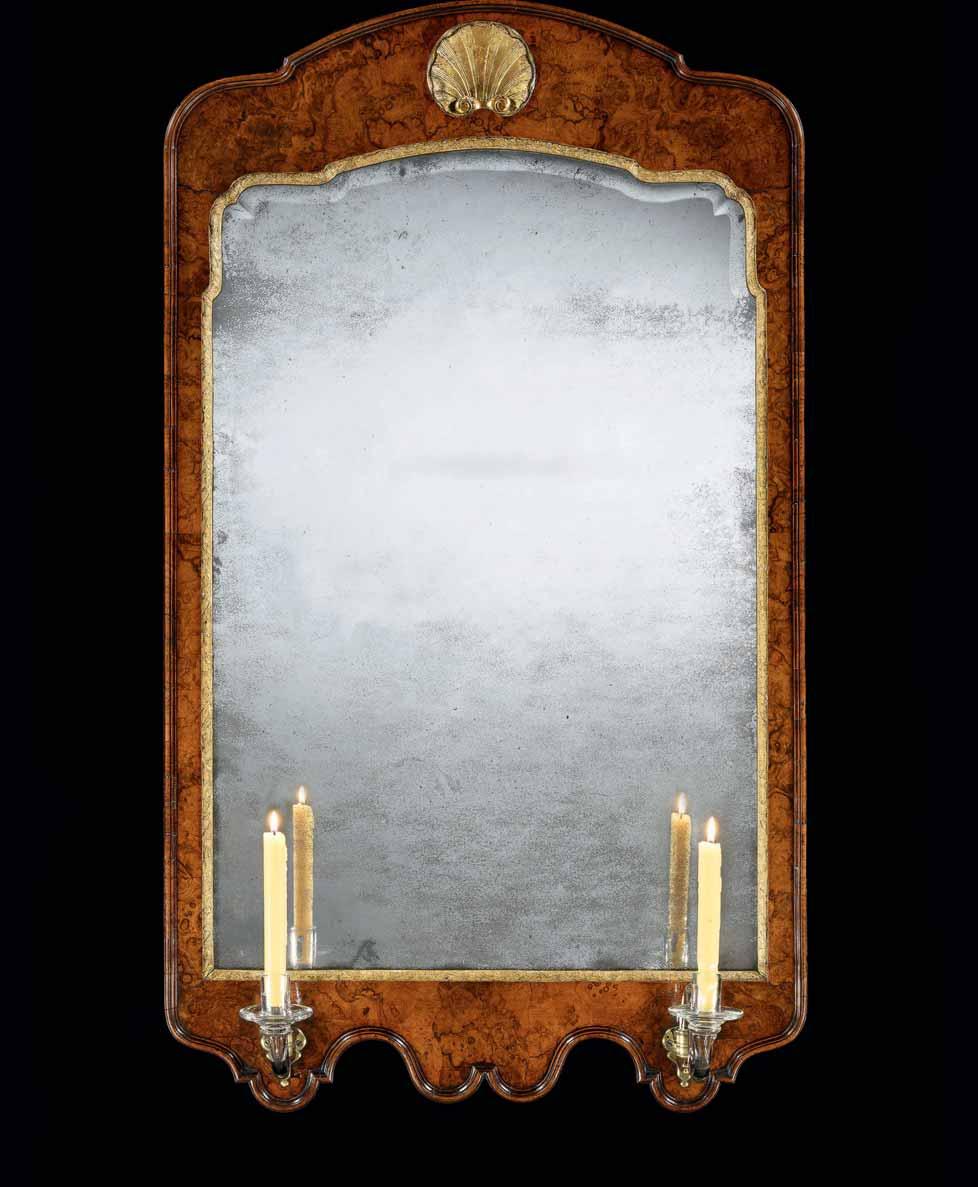
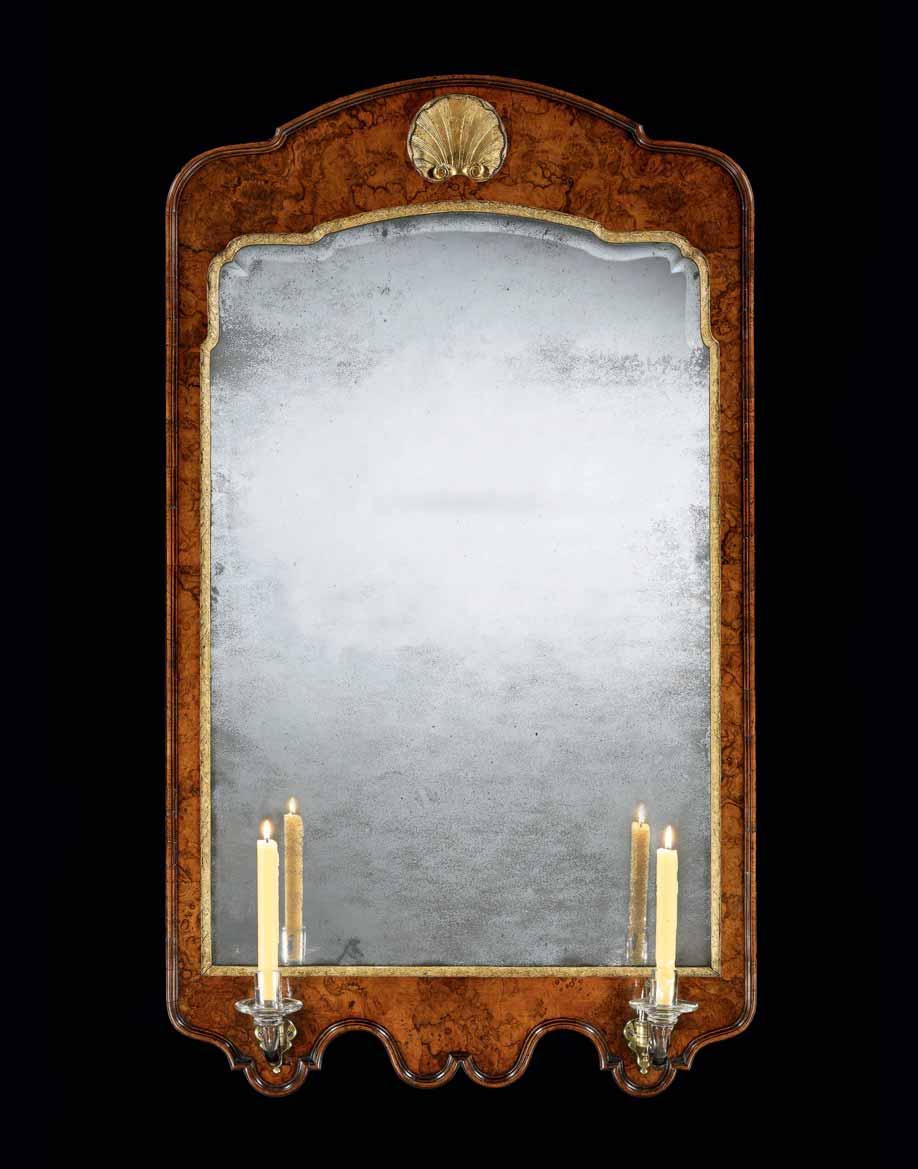
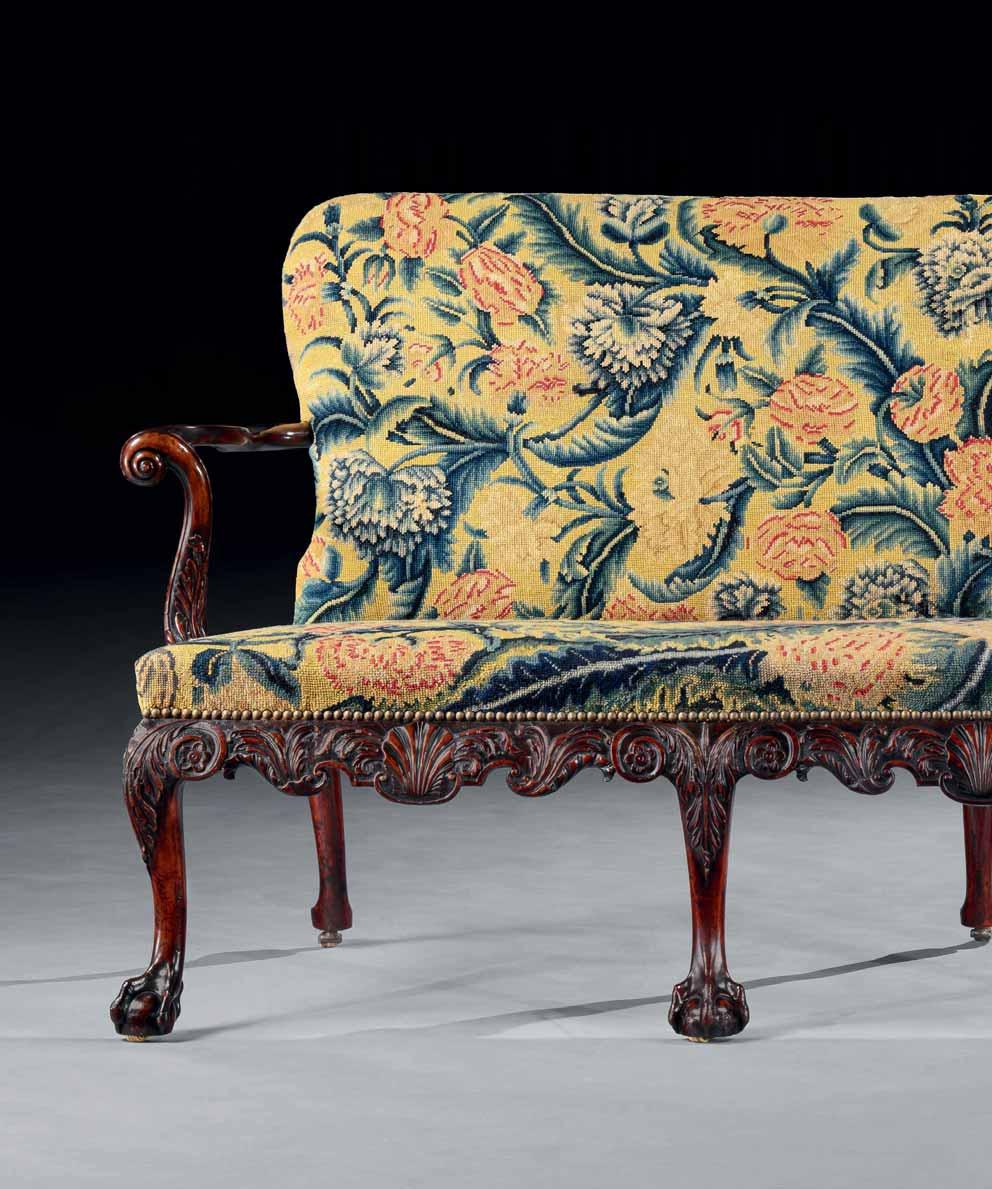
THE PERCIVAL GRIFFITHS RAMSBURY MANOR SETTEE
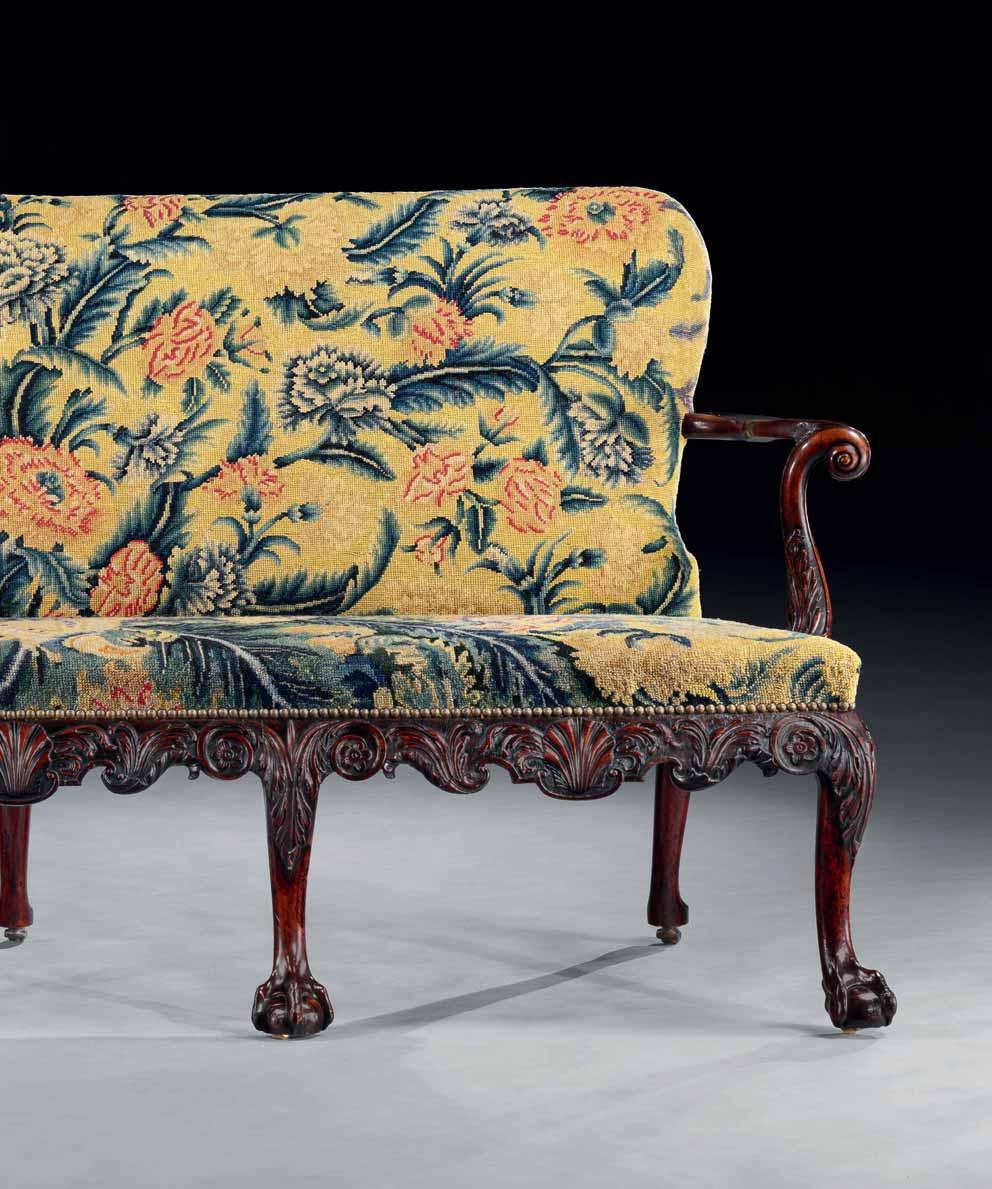
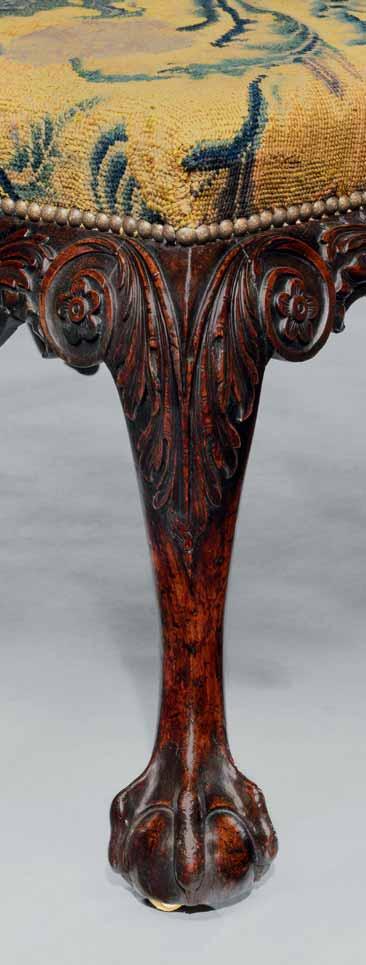
A GEORGE II MAHOGANY SETTEE ATTRIBUTED TO GILES GRENDEY
Note: The two internal seat stretchers connecting front and back are restorations, as are the concealed castors.
The settee: English, circa 1750
The associated needlework cover: English, circa 1750
Height: 3 ft 1¼ in; 94.5 cm
Height of seat: 1 ft 5½ in; 44.5 cm
Width: 6 ft 4 in; 193 cm
Depth: 2 ft 6½ in; 77.5 cm
Provenance:
Sir Francis Burdett, 8th Baronet, Ramsbury Manor, Wiltshire, England, until 1906;
Percival D. Griffiths, Sandridgebury, Hertfordshire, England; Private collection, USA.
Photographed:
At Ramsbury Manor, Country Life, circa 1907; unpublished. At Sandridgebury, Country Life, 1922; unpublished.
Illustrated:
Percy Macquoid, A History of English Furniture, vol. III, ‘The Age of Mahogany’, 1906, p. 119.
Percy Macquoid and Ralph Edwards, The Dictionary of English Furniture, vol. III, 1927, p. 100, fig. 44.
Percy Macquoid and Ralph Edwards, The Dictionary of English Furniture, revised edition, 1954, vol III, p. 91, fig. 45.
Christian Jussel and William DeGregorio, English Furniture 1680–1760: The Percival D. Griffiths Collection, 2023, vol. I, p. 144, fig. 132.
Opposite: The settee in situ at Ramsbury Manor, Wiltshire, circa 1907. Courtesy of Country Life/Future Publishing Ltd.
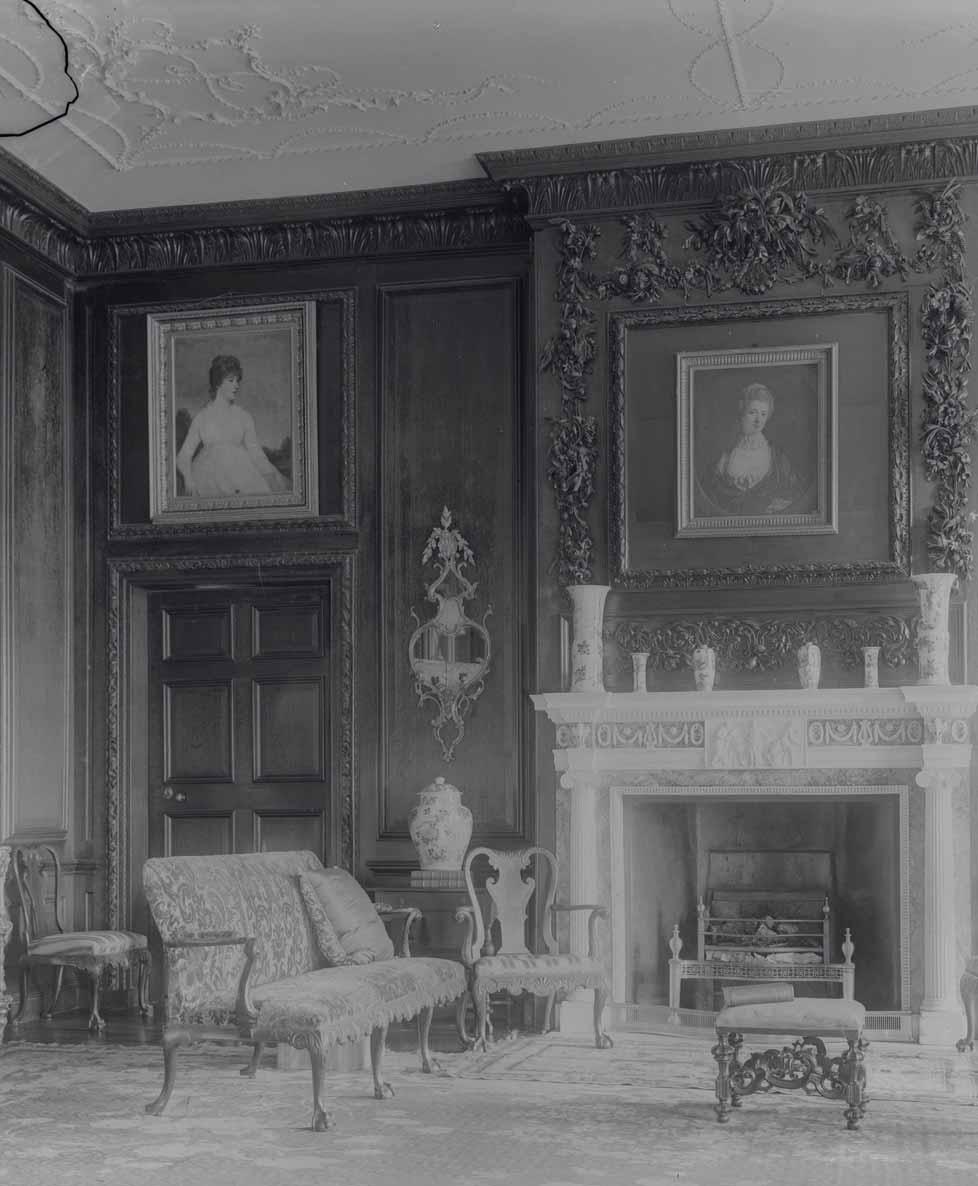
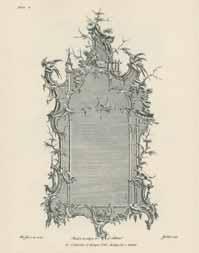
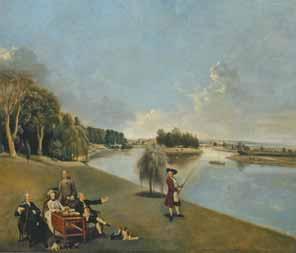
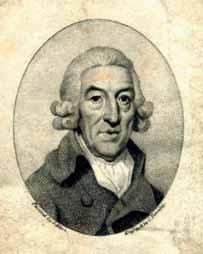
24
A GEORGE III GILTWOOD MIRROR ATTRIBUTED TO THOMAS JOHNSON
Note: The mirror has been re-gilded in the 20th century. The mercury silvered glass is a replacement.
English, circa 1765
Height: 6 ft 8½ in; 204.5 cm
Width: 3 ft 2 in; 96.5 cm
Depth: 10 in; 25.5 cm
Provenance: Jeremy Ltd., London, England; Private collection, England.
Illustrated: Grosvenor House Art and Antiques Fair handbook, London, 1988, p. 152; advertisement with Jeremy Ltd.
Literature: Thomas Johnson, A Collection of Designs, 1758, pl. 13.
Helena Hayward, Thomas Johnson and the English Rococo, 1964, pl. 4. Christopher Gilbert, The Life and Work of Thomas Chippendale, 1978, vol. I, pp. 236–48.
Mary Webster, Johan Zoffany, 1733–1810, 2011, pp. 76–89.
Thomas Johnson published the design for this mirror in A Collection of Designs in 1758. A mirror with carving of lesser quality but to the same design was formerly in the celebrated Rowensky collection in New York, which was dispersed in 1957.
The popularity and fame of the celebrated actor and playwright David Garrick (1717–1779) can be measured by the abundance of images and written references to him. His performances were captured in paintings, drawings and even ceramics, and it would be no surprise to find him here carved in wood alongside his wife, Eva Marie Veigel, on top of a mirror.
Not the least of Garrick’s achievements was transforming the previously somewhat dubious reputation of the acting profession into a respectable one. The Garricks befriended many artists and literati of their time,
including Johan Zoffany and Dr. Samuel Johnson. The latter was a frequent visitor at their home, and in some cases historians may have mistaken Thomas Johnson for Dr. Johnson.
The painting by Zoffany commissioned by David Garrick in 1762, The Garden of Hampton House, with Mr. and Mrs. Garrick Taking Tea, depicts Thomas Johnson standing between the seated Garricks and having tea with them and their friend Colonel George Bodens, who looks remarkably like Dr. Johnson. George Garrick, David’s brother, is fishing close by. Until now the standing figure was thought to be the Garricks’ butler, Charles Hart, but Mrs. Garrick is depicted serving the tea to her guests, and this would be the butler’s duty. (Hart is captured in another painting by Zoffany of the same year, The Temple to Shakespeare at Hampton House with Mr.and Mrs. Garrick. Here Hart is seen bringing the tea on a tray and is clearly a different person to the figure in the previous painting: his face is younger and he has dark hair.)
The presence of Thomas Johnson in such an intimate group confirms a close connection or even friendship between him and the Garricks. It is also interesting to note that Johnson, also an artist, looks directly at the painter and at us, the observers, whilst the others are engaged with each other.
Returning to our mirror, the Gothic chinoiserie is exceptionally well designed and carved very much in the style of Thomas Johnson: it is possibly by the master himself. It does not follow the published design in every detail yet it harmonises with it, unlike the Rowensky mirror, which is stiff in comparison. The presence of a seated couple and one large and three small dogs in various parts of the frame is somewhat unusual. The combination of the couple’s formal attire, he with tricorn hat and she with bonnet, and their leisurely seated pose echoes Zoffany’s painting of Mr. and Mrs. Garrick outside the Temple to Shakespeare. The Garricks’ four dogs – three spaniels and a large mastiff – appear in Zoffany’s two paintings, and could well be the same dogs that are carved on the mirror.
Whilst much of this is mere speculation, hinging on four dogs and a seated couple reminiscent of the Garricks, a connection between the couple and Thomas Johnson has been established with the painting by Zoffany.
Thomas Johnson, aged 39, appears standing behind the table in this painting by Zoffany, The Garden of Hampton House, with Mr. and Mrs. Garrick Taking Tea, 1762
A design for a mirror featured in Thomas Johnson’s A Collection of Designs, 1758
Thomas Johnson aged 61, from A Brief History of Freemasons, 1784
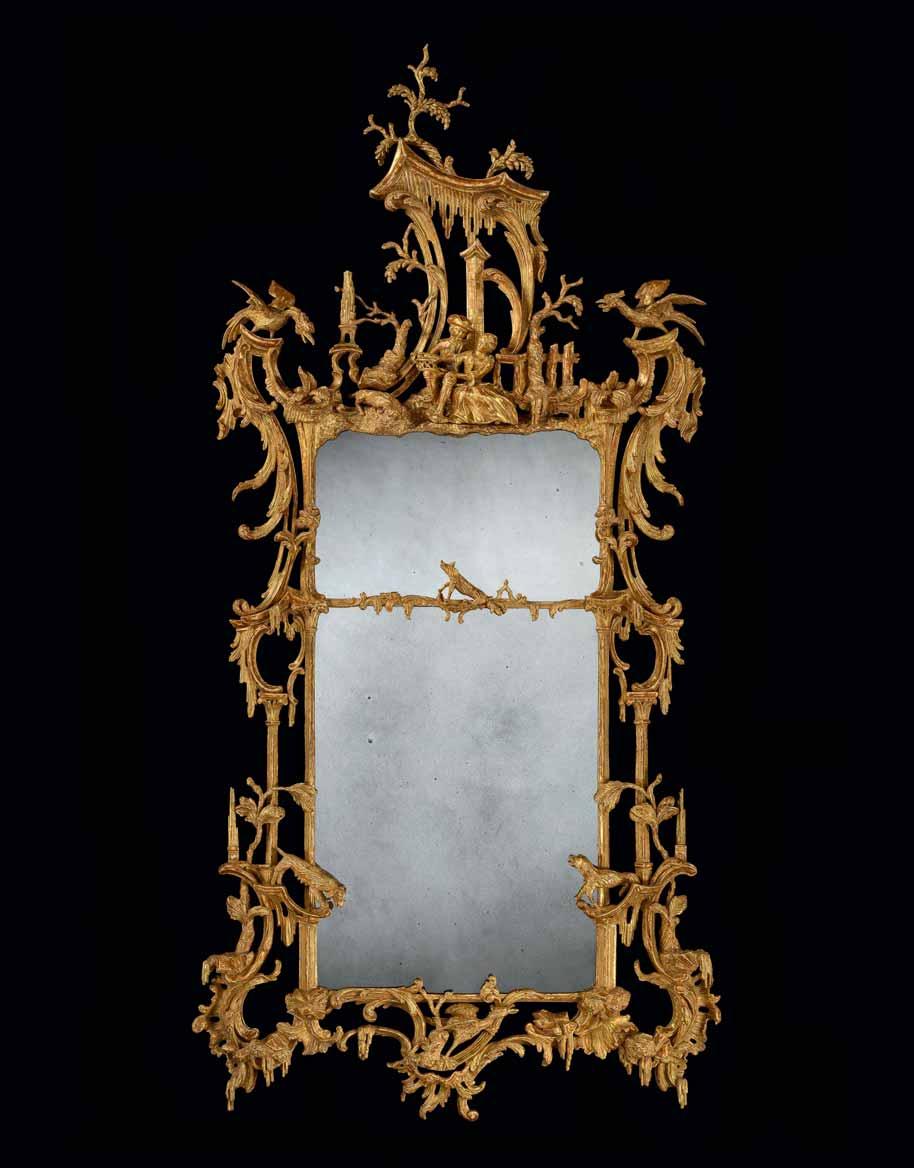
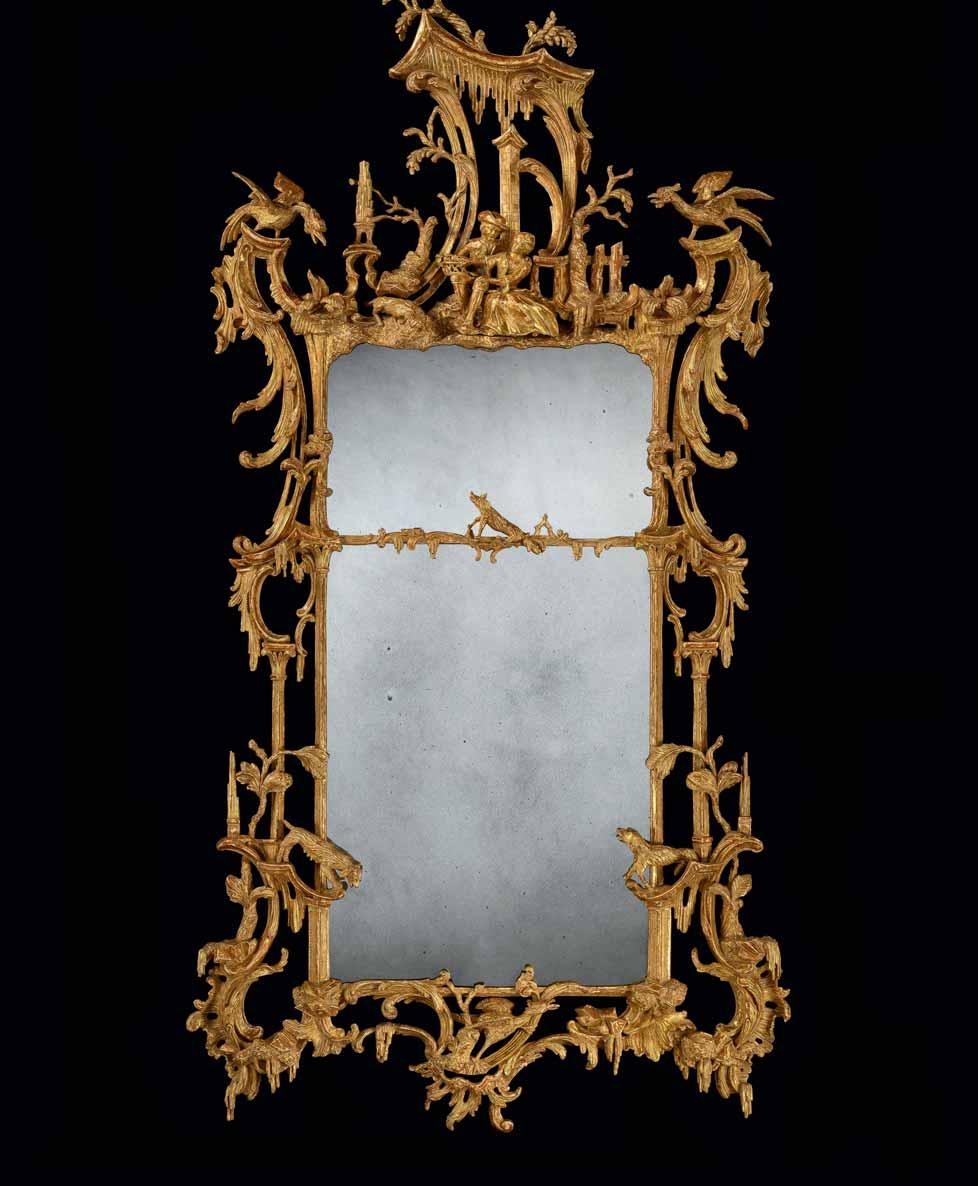
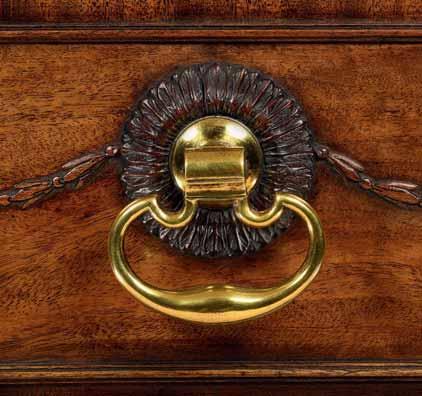
25
A GEORGE III MAHOGANY RECTANGULAR WINE COOLER ON STAND
Note: The wine cooler retains its original brass lifting handles and castors. The lead lining and the removable shallow zinc tray are probably original.
English, circa 1775
Height: 23¾ in; 60.5 cm
Width: 24¾ in; 63 cm
Depth: 17¼ in; 44 cm
Provenance: Michael Lipitch Ltd., London, England; Ronald Phillips Ltd., London, England; Private collection, USA.
The exquisitely carved decoration on the sides of the wine cooler, especially around the lifting handles, suggests a metropolitan workshop. The faded mahogany has acquired a fine patina.
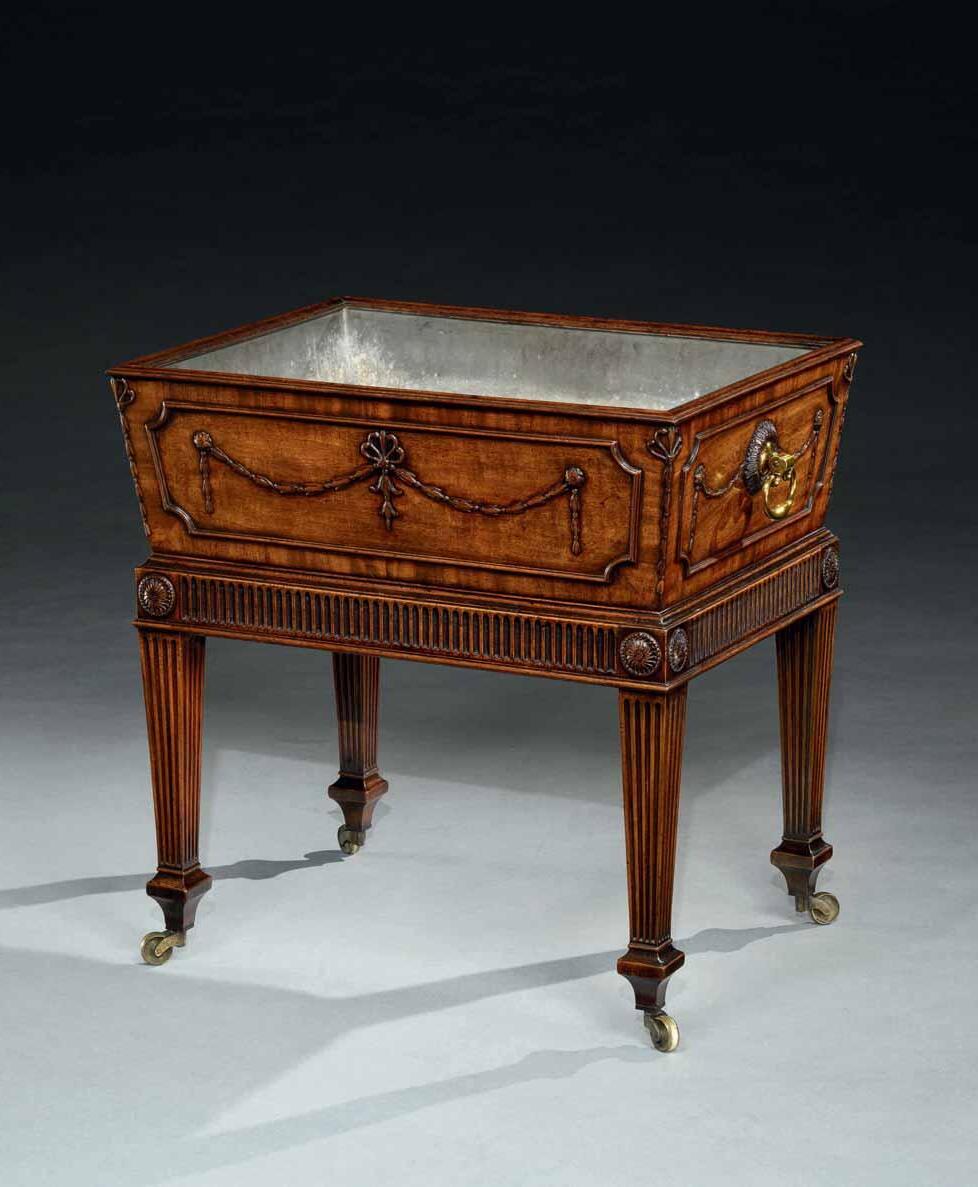
26
A GEORGE II MAHOGANY CABINET ATTRIBUTED TO WILLIAM VILE
English, circa 1750
Height: 6 ft 11½ in; 212 cm
Width: 3 ft 5½ in; 106 cm
Depth: 1 ft 9½ in; 55 cm
27
A PAIR OF GEORGE III GILTWOOD OPEN ARMCHAIRS ALMOST CERTAINLY BY THOMAS CHIPPENDALE
English, circa 1780
Height: 36½ in; 93 cm
Height of seat: 17½ in; 44.5 cm
Width: 25½ in; 65 cm
Depth: 26 in; 66 cm
28
A PAIR OF GEORGE III GILTWOOD COMPOSITION WALL LIGHTS
English, circa 1780
Height: 30 in; 76 cm
Width: 17¾ in; 45 cm
Depth: 10 in; 25 cm
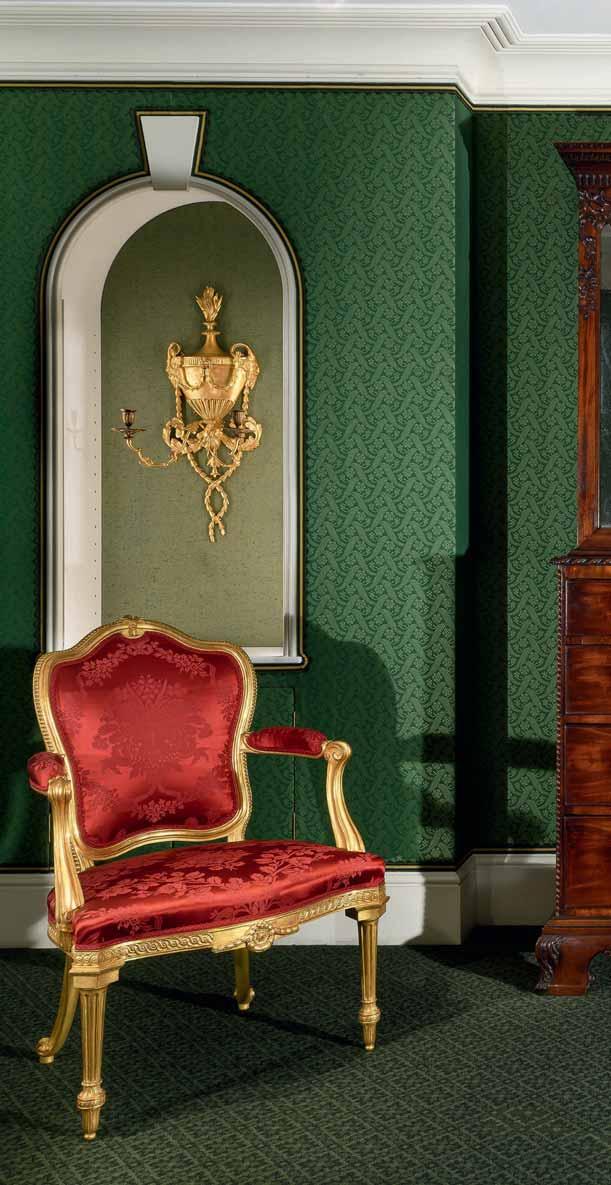
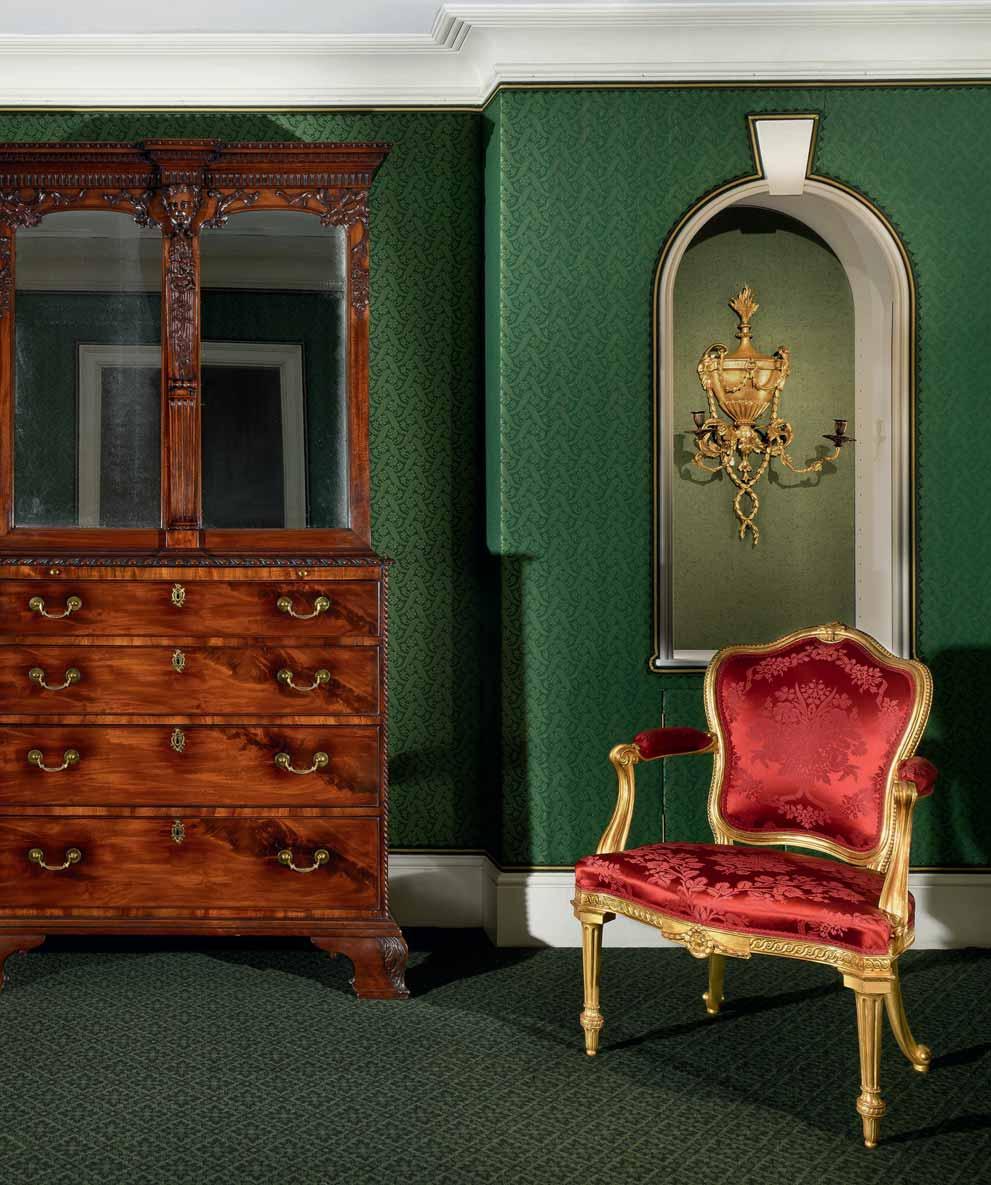
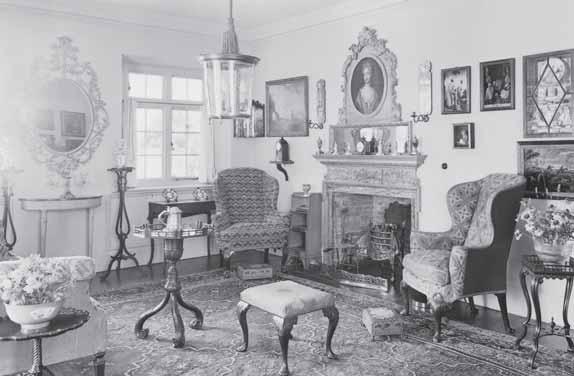
29
A GEORGE II MAHOGANY CORNER LANTERN
Note: The mirror plates are 18th century replacements.
English, circa 1750
Height: 20 in; 51 cm
Width: 16½ in; 42 cm
Depth: 11½ in; 29 cm
Provenance:
Fred Skull, Bassetsbury Manor, Buckinghamshire, England, until 1952; Private collection, USA.
Photographed:
At Bassetsbury Manor, Country Life, 7 October 1933.
Fred Skull was a furniture-maker who bought the derelict Bassetsbury Manor in 1931. He restored the house throughout the 1930s and started to deal in antique furniture. His illustrious clientele included the celebrated architect and designer Sir Edwin Lutyens and Queen Mary, among many others. Following Skull’s death in 1952, his personal collection was dispersed.
Lanterns of this type were usually fixed to walls in draughty locations such as staircases and corridors. Most became obsolete with the advent of other forms of lighting; oil and gas at first, and then electricity. Despite being produced in relatively large numbers very few examples survive, and corner lanterns are exceptionally rare.
A number of wall lanterns of comparable design were supplied to Hampton Court Palace. Of those that remain in the Royal Collection, four are on display in the small dining room of William III’s King’s Apartments at Hampton Court.
The lantern in situ at Bassetsbury Manor, Buckinghamshire, 1933. Courtesy of Country Life/Future Publishing Ltd.
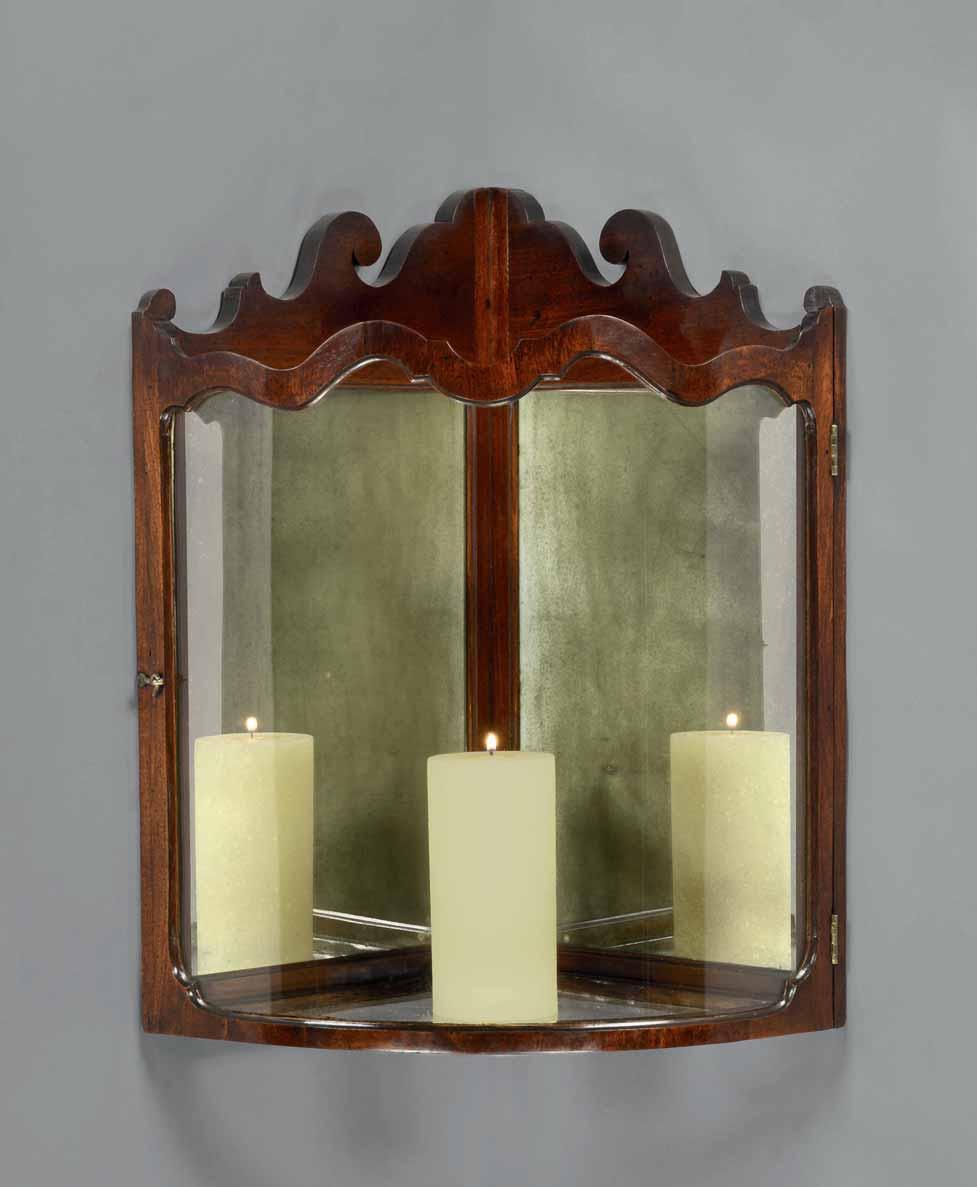
THE FRED SKULL CORNER LANTERN
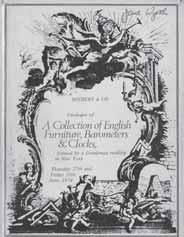
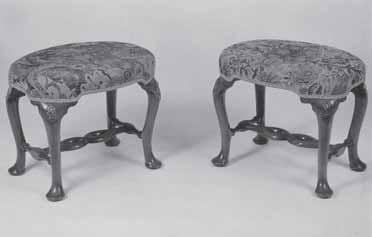
The pair of stools in the Leidesdorf collection sale catalogue, Sotheby’s, New York, 27 and 28 June 1974
30
A PAIR OF GEORGE I WALNUT STOOLS
Note: Both shaped centre stretchers have been refinished at some stage in the 20th century.
The stools: English, circa 1725
The associated needlework covers: French, circa 1730
Height: 18 in; 46 cm
Width: 22 in; 56 cm
Depth: 16¼ in; 42 cm
Provenance:
Joel J. Wolff Antiques, New York, USA; Vernay & Jussel, New York, USA; Arthur Leidesdorf, New York, USA; Stair & Company, New York, USA; Private collection, USA.
Illustrated: Sotheby’s, ‘A Collection of English Furniture, Barometers and Clocks formed by a Gentleman residing in New York’, sale catalogue, New York, 27–28 June 1974, pp. 6–7, lot 2.
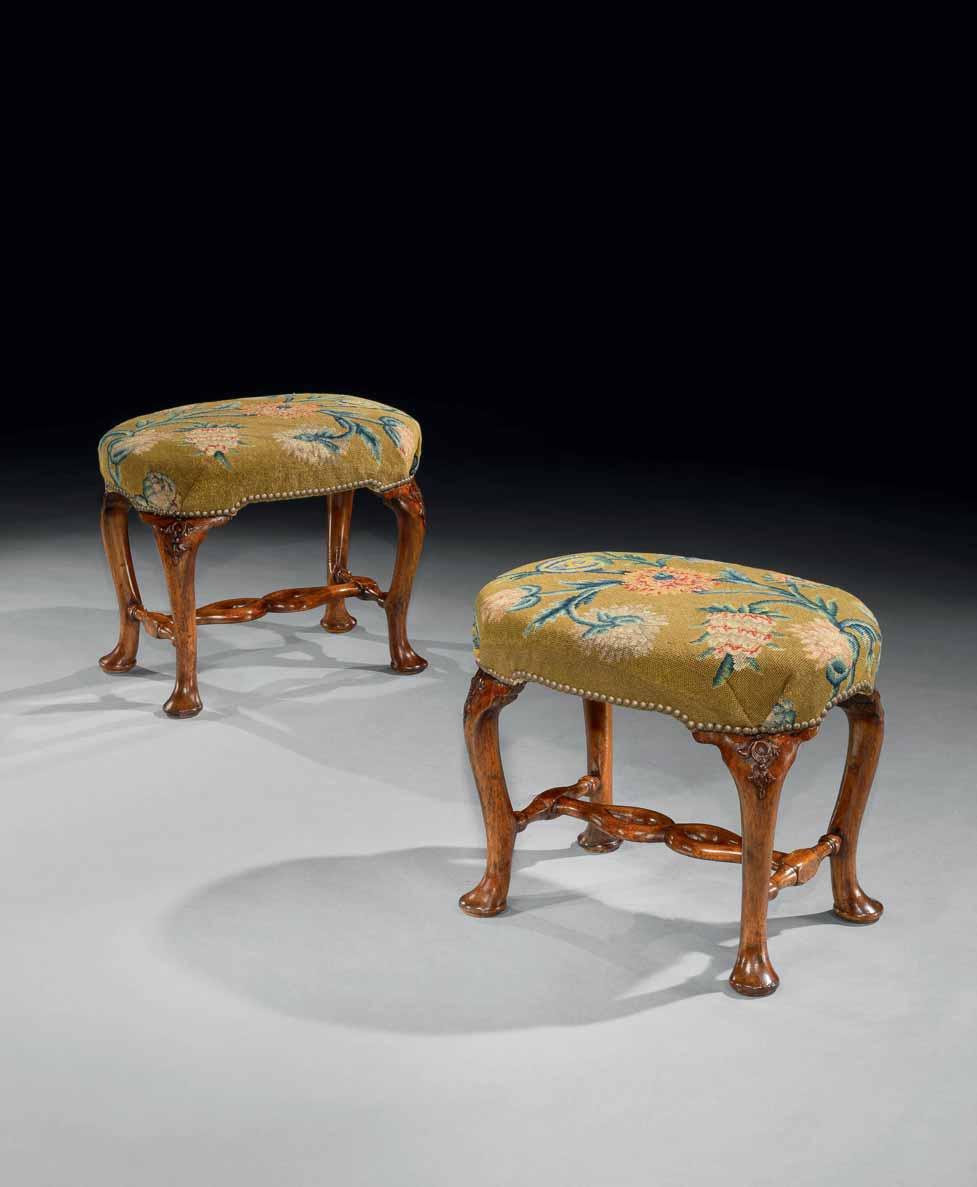
THE LEIDESDORF STOOLS
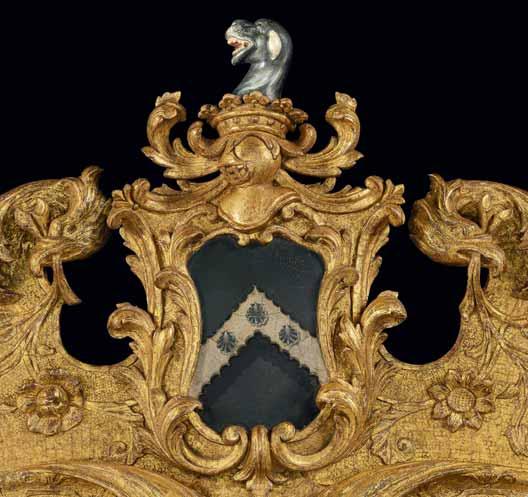
A GEORGE I GESSO AND GILTWOOD MIRROR ATTRIBUTED TO JOHN BELCHIER
Note: The mirror retains the original gilding and its original bevelled mirror plate. The arms in the cartouche are those of the King family of Ashby de la Launde, Lincolnshire, England.
English, circa 1720
Height: 5 ft 5¼ in; 166 cm
Width: 3 ft; 91 cm
Provenance:
The King family of Ashby de la Launde, Lincolnshire, England; By descent to William Vere Reeve King-Fane, Fulbeck Hall, Lincolnshire, England; Private collection, New York, USA.
Illustrated:
Sotheby’s, ‘The contents of Fulbeck Hall, Lincolnshire’, sale catalogue, London, Olympia, 8 October 2002, pp. 20–21, lot 14.
John Belchier was first recorded in 1717 at St. Paul’s Churchyard in London. The arched mirror plate, with its frame moulding running up the sides and overlapping at the centre, is a very distinctive feature that appears on other commissions by Belchier. Documented mirror frames by John Belchier with the same central overlap can be found in the collection at Erddig in Wales.
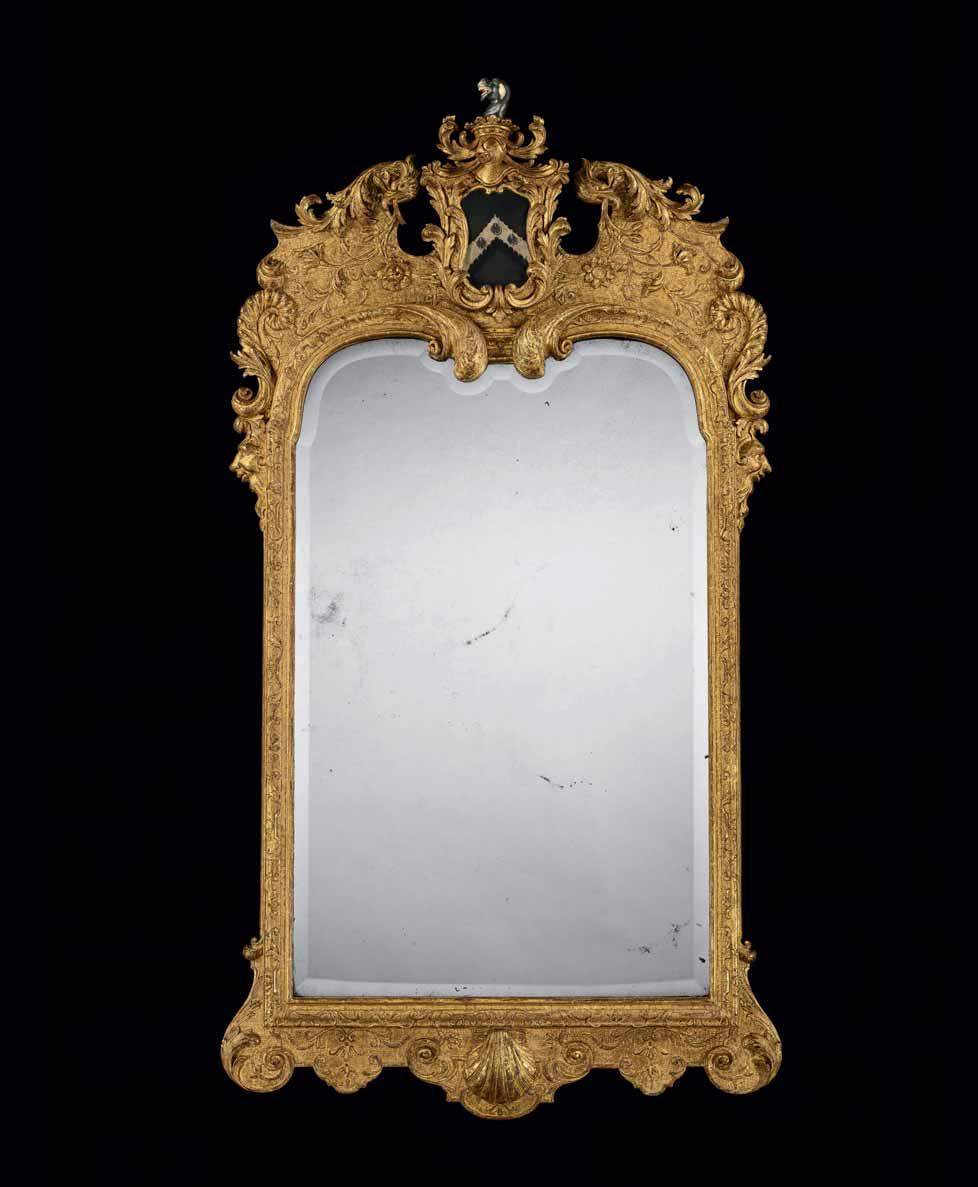
THE FULBECK HALL MIRROR
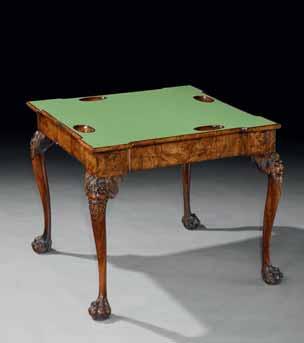
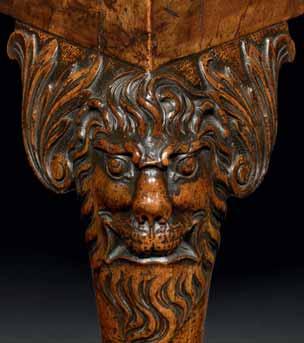
A GEORGE II FIGURED WALNUT CONCERTINA ACTION CARD TABLE IN THE MANNER OF GILES GRENDEY
Note: The baize lining is of later date.
English, circa 1735
Height: 28¾ in; 73 cm
Width: 32 in; 81.5 cm
Depth (open): 31 in; 79 cm
Depth (closed): 15¾ in; 40 cm
Provenance: Private collection, Germany.
The table has acquired an outstanding colour and patina. The striking lion masks carved to the knees of the cabriole legs relate to identical carved masks on three pieces formerly in the celebrated Griffiths collection: a high-back armchair, a library armchair and a drop-leaf table.
Both Percival D. Griffiths and R. W. Symonds were fond of the lion mask motif, and Symonds wrote an article on the subject.
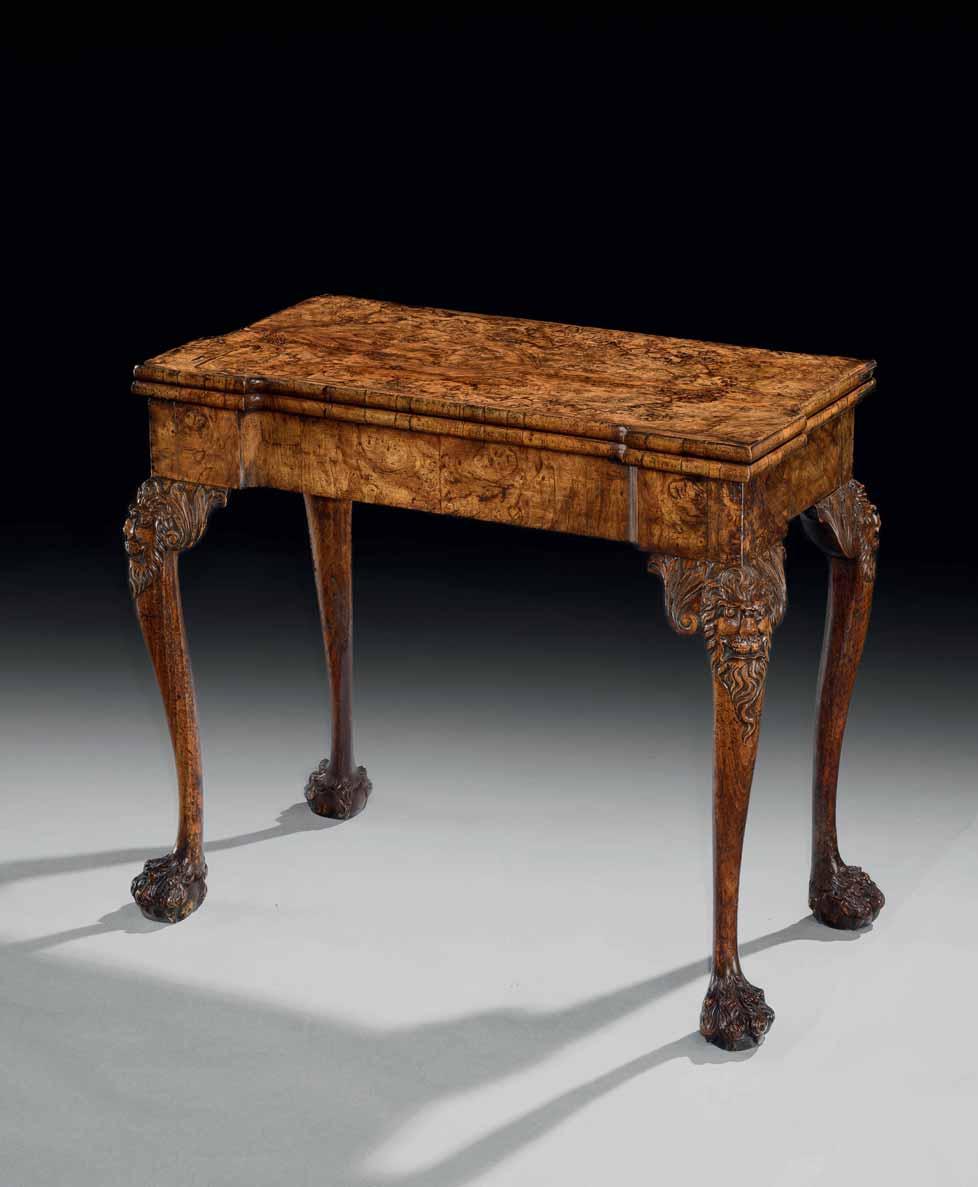
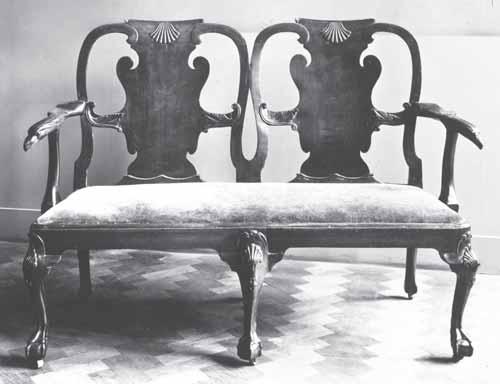
A virtually identical settee. © Victoria and Albert Museum, London
A GEORGE I BURR WALNUT DOUBLE CHAIRBACK SETTEE
Note: The drop-in upholstery seat frame is original and is now upholstered in a modern brocade fabric.
English, circa 1725
Height: 40¾ in; 103.5 cm
Height of seat: 18 in; 45.5 cm
Width: 66 in; 167.5 cm
Depth: 26 in; 66 cm
Provenance: Spink & Son Ltd., London, England; Private collection, USA.
Literature:
F. Lewis Hinckley, A Directory of Queen Anne, Early Georgian and Chippendale Furniture, 1971, p. 57, fig. 42.
A virtually identical settee, but with slightly plainer veneers, is in the collection of the Victoria and Albert Museum in London.
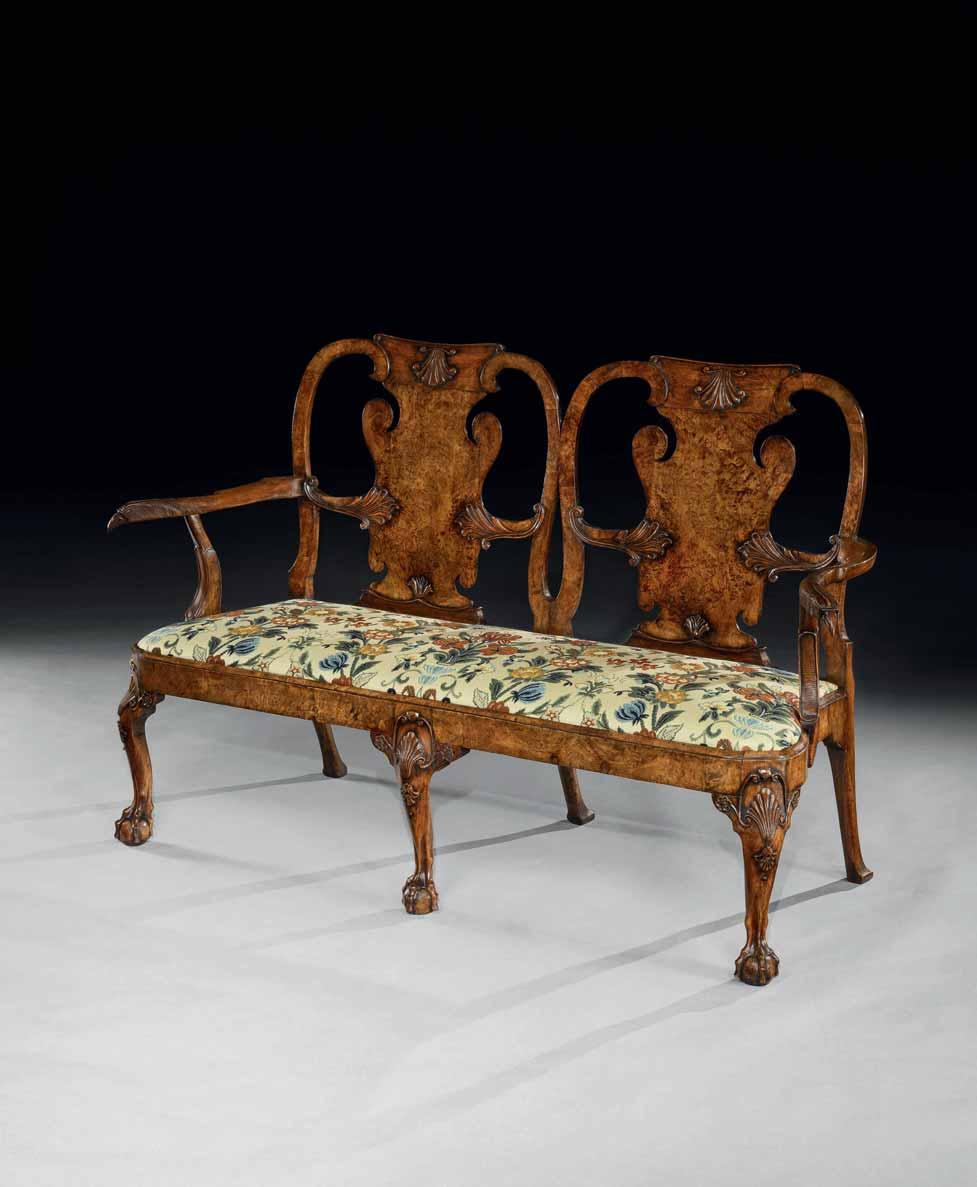
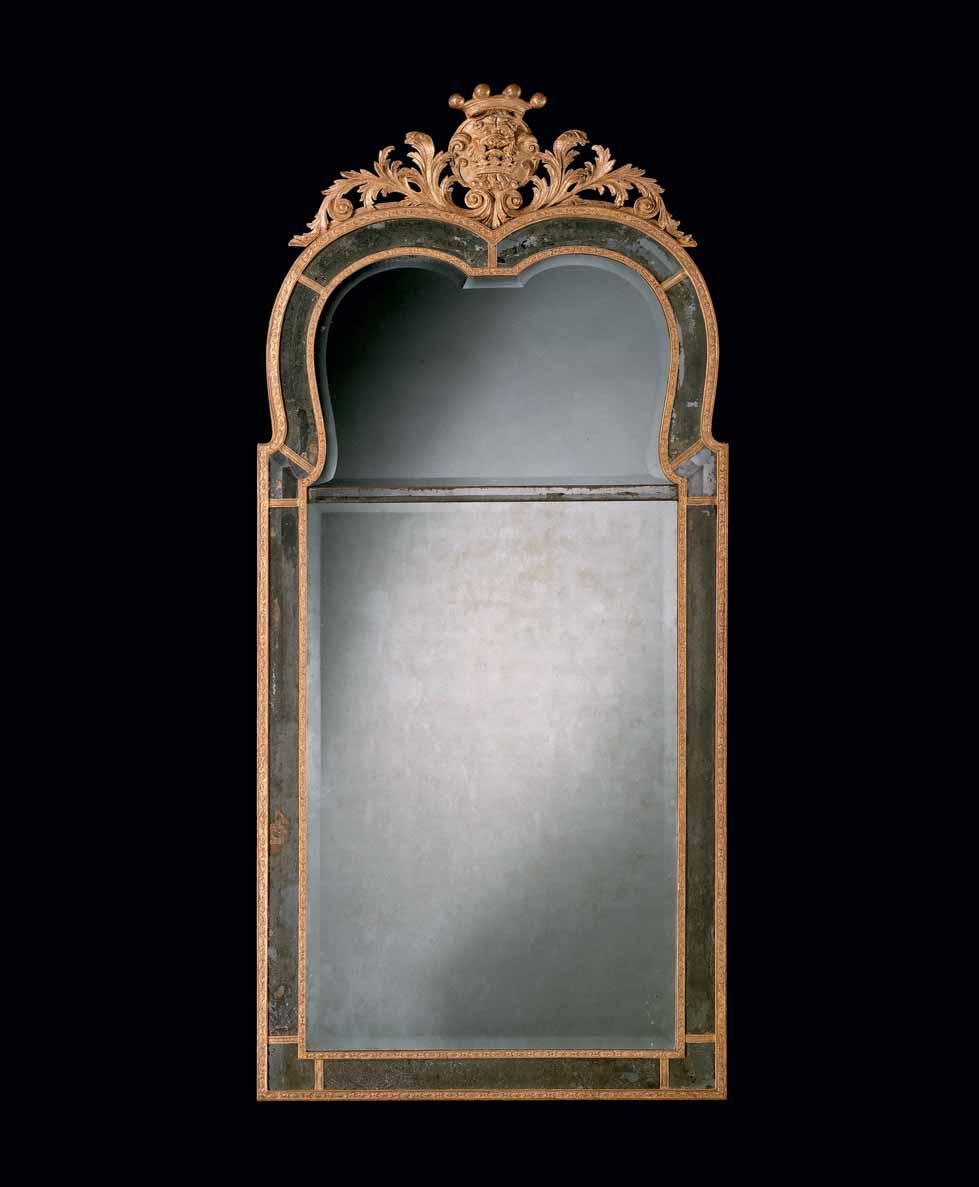
THE MACCLESFIELD PIER MIRRORS
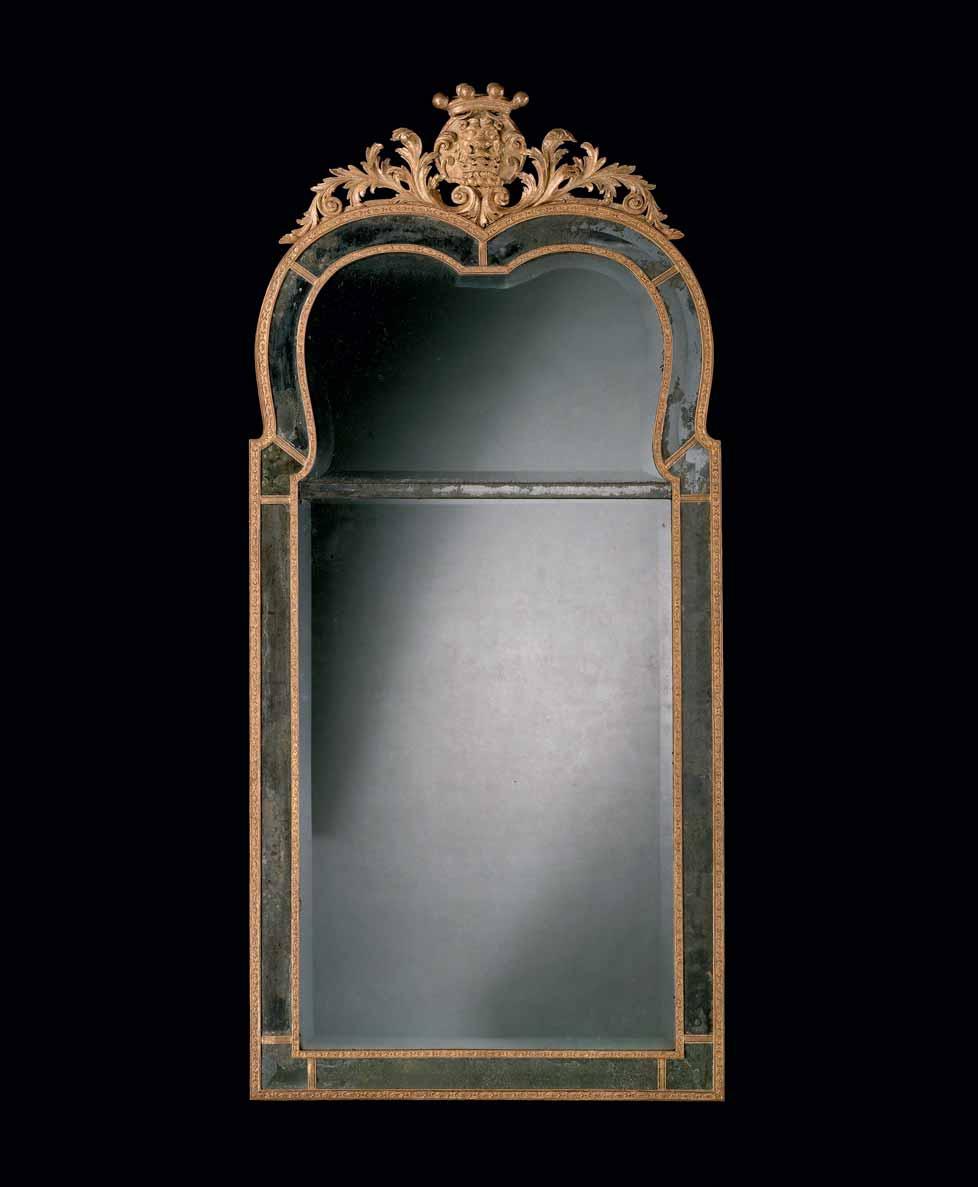
A PAIR OF GEORGE I GILTWOOD BORDER GLASS PIER MIRRORS ATTRIBUTED TO MOORE & GUMLEY
Note: The mirrors retain their original mirror plates. A 19th century alteration to the length by adding an arched plate to the lower part of the mirrors has been reversed and the mirrors are once again at their original height. Some of the gilded lead mouldings have been replaced.
English, between 1716 and 1721
Height: 6 ft 4¾ in; 194.5 cm
Width: 2 ft 11¾ in; 91 cm
Provenance:
Commissioned for Thomas Parker, when Baron Macclesfield, later 1st Earl of Macclesfield, for Shirburn Castle, Oxfordshire, England; 11 St. James’s Square, London, England; Shirburn Castle, Oxfordshire, England.
THOMAS PARKER, 1ST EARL OF MACCLESFIELD (1666–1732)
The pair of pier mirrors once formed part of the lavish furnishings commissioned by Thomas Parker after becoming Baron Macclesfield and before his elevation to 1st Earl of Macclesfield.
Thomas Parker, son of an attorney of the same name, was born at Leek in Staffordshire, England. Following an education at Trinity College, Cambridge, England, and an advantageous marriage to a Derbyshire landowner-heiress, Parker moved to London in 1701. He became MP for Derby in 1705, was elected to the Inner Temple, and was appointed as one of the Queen’s Serjeants, representing the Crown in law cases. Following his successful involvement in a prominent case of impeachment he was appointed Lord Chief Justice in 1710 until 1718.
On Queen Anne’s death on 1 August 1714, Parker was appointed Regent of Great Britain, Ireland and the realms beyond the seas until 18 September, when George I arrived in England from Hanover to take the throne. After George’s accession, Parker delivered the King’s Speech to the House of Lords for the new monarch, who refused to speak English.
Already wealthy by birth and from his marriage, Parker amassed enormous riches from his meteoric rise in politics and from being favoured by both Queen Anne and her successor George I. In 1725, however, he was impeached, tried and found guilty of corruption, and was imprisoned in the Tower of London until a fine of £30,000 had been paid. The king, his strongest ally, wanted to pay the fine from his own privy purse, but was able to pay only £1000 before he died in the same year. The remainder was paid by Parker, who then retired to Shirburn Castle, where he is buried.
Very few of Thomas Parker’s lavish furnishings have survived, and those that have are dispersed in private collections around the globe.
MOORE & GUMLEY
James Moore and John Gumley worked in partnership for Royal commissions from 1714 until 1729. Thomas Parker’s close connection to Queen Anne and George I makes it likely that he had met both craftsmen, but even if he had not, he would at least have been familiar with their work.
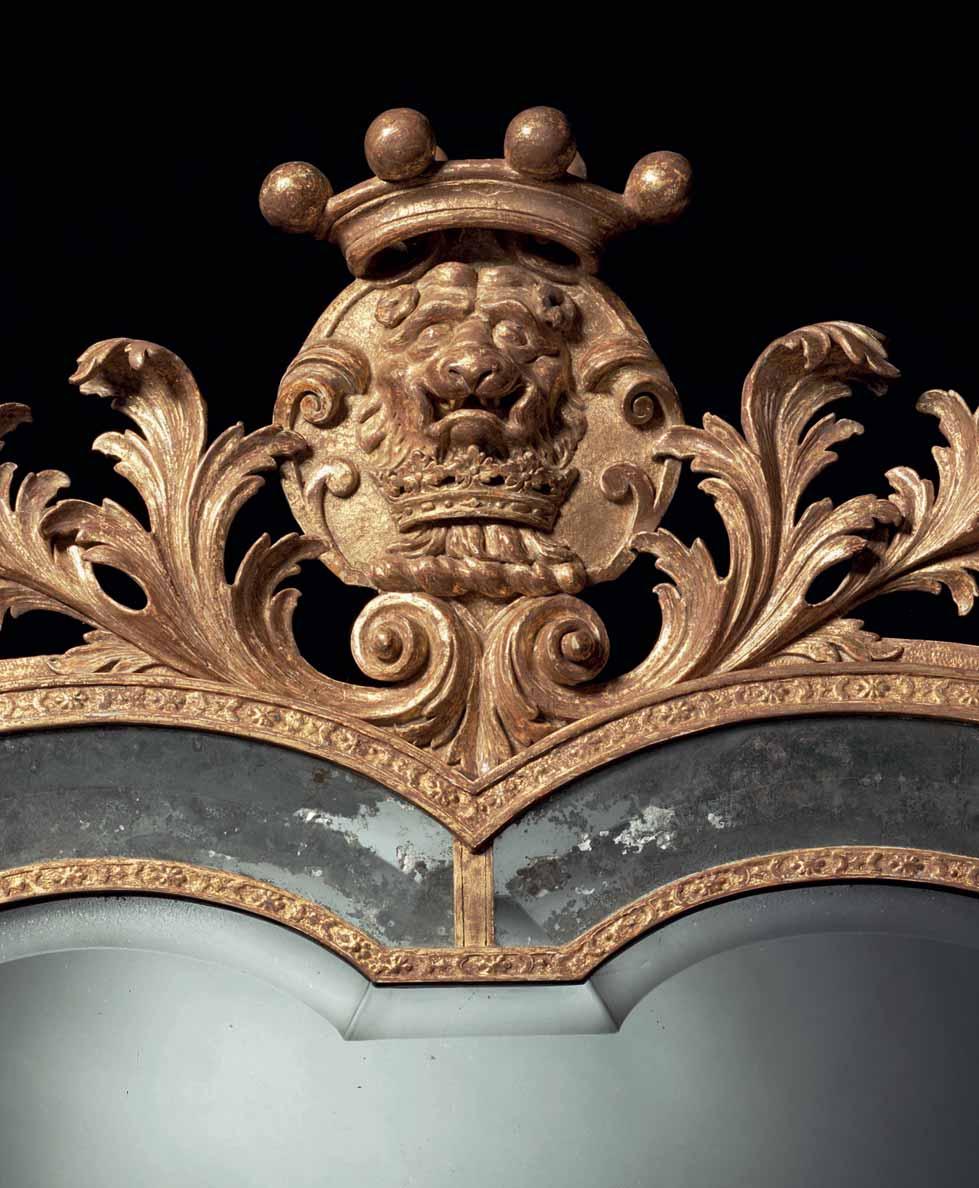
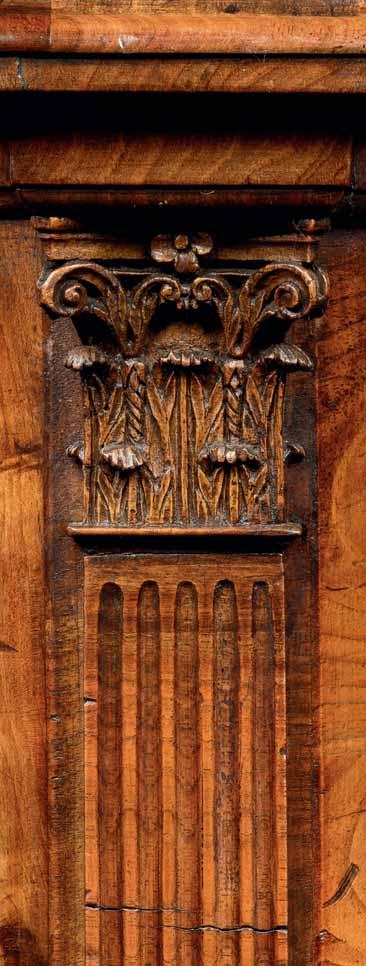
A GEORGE II FIGURED WALNUT KNEEHOLE DESK
Note: The desk retains its original pierced brass plate handles. The bracket feet were originally fitted with concealed castors.
English, circa 1740
Height: 31¾ in; 81 cm
Width: 37½ in; 95.5 cm
Depth: 21 in; 53.5 cm
Kneehole:
Height: 26 in; 66 cm
Maximum width: 11 in; 28 cm
Width at feet: 8½ in; 21 cm
The walnut veneer has faded to a beautiful mellow colour as well as acquiring a fine patina over the last three centuries.
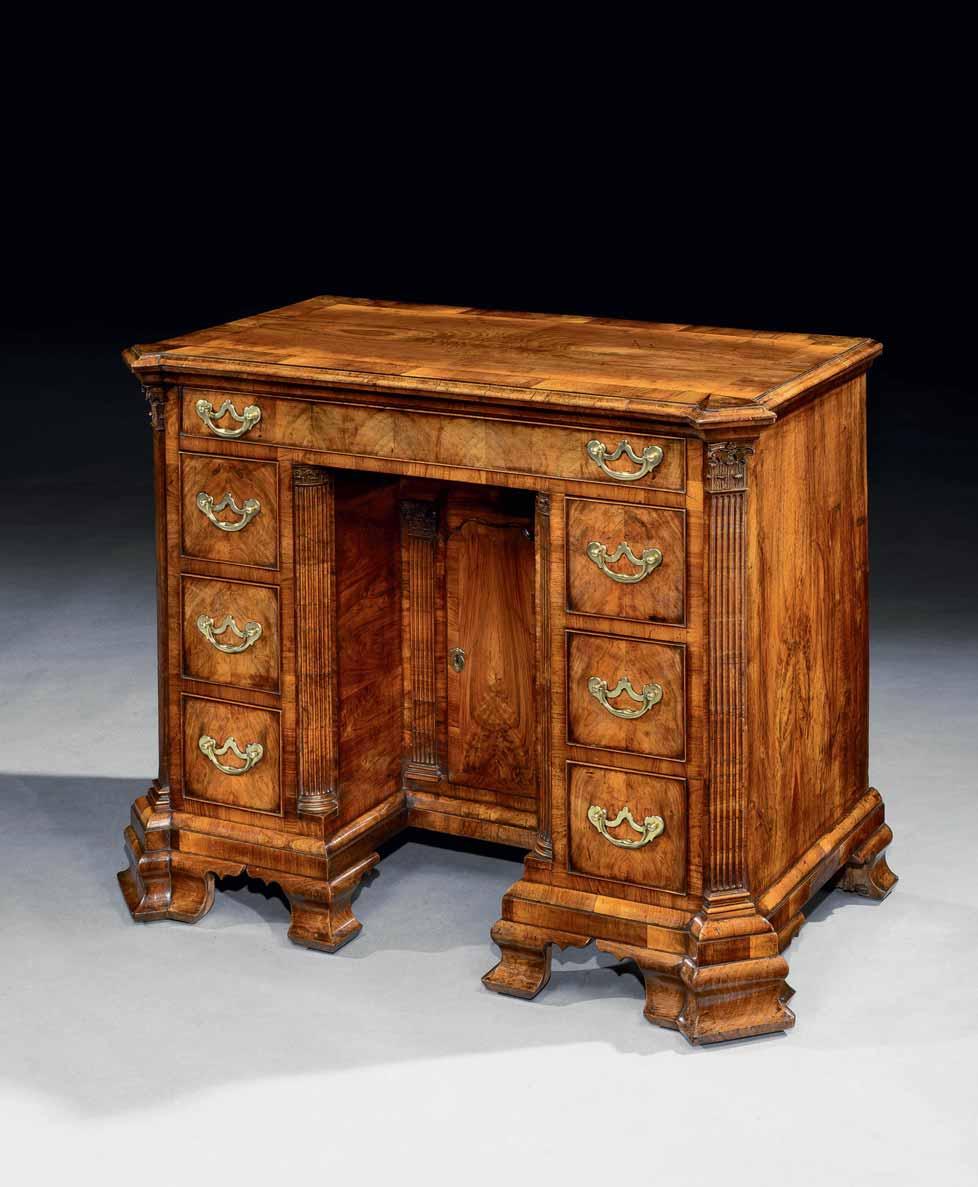
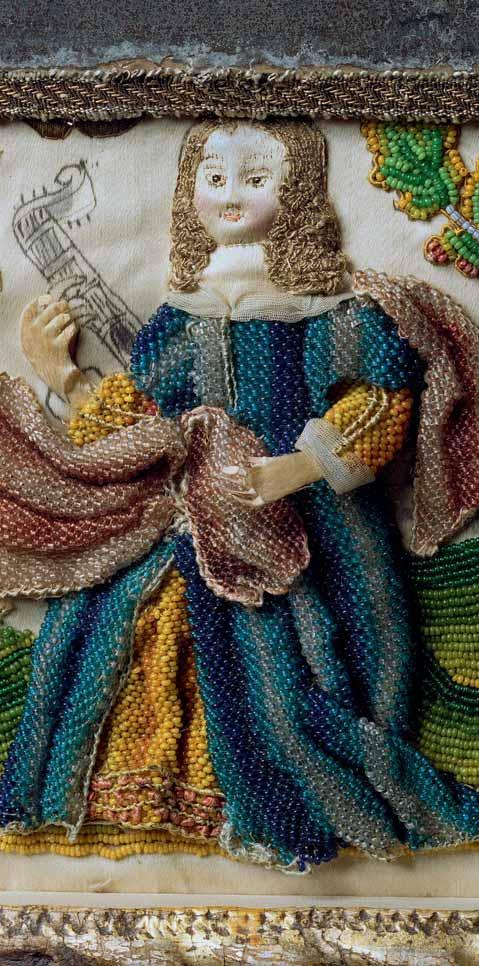
A CHARLES II STUMPWORK MIRROR
Note: The silvered frame has been adapted for the stumpwork.
The needlework: English, circa 1680
The frame: English, circa 1670, adapted
Height: 29½ in; 75 cm
Width: 24½ in; 62 cm
Depth: 2¼ in; 6 cm
Provenance: Collection of Roger Warner, Burford, Oxfordshire, England; Cora Ginsberg LLC, New York, USA; Private collection, New York, USA; Ronald Phillips Ltd., London, England; Private collection, England.
Literature: Lanto Synge, Antique Needlework, 1982, pp. 78–83.
Lanto Synge, Mallett’s Great English Furniture, 1991, p. 28.
The needlework on this mirror surround is of extremely fine quality. The stumpwork is supported by internal wires, creating a three-dimensional effect in the needlework and bringing the images of costume, flowers and birds to life. Some of the stumpwork is unfinished, revealing the tracings of the original design.
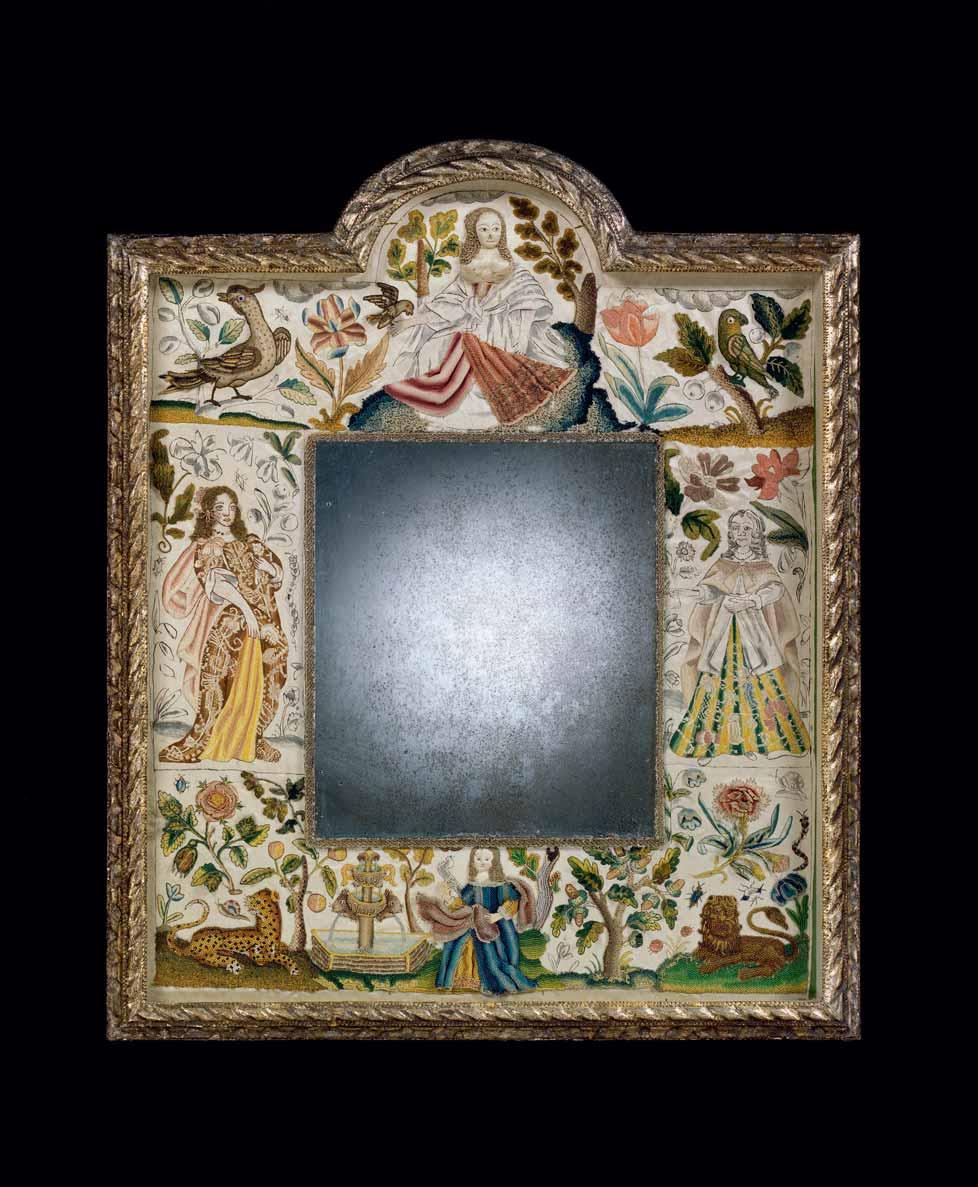
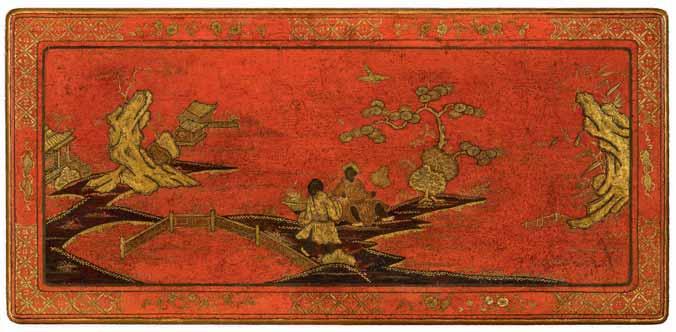
A GEORGE I SCARLET AND GOLD JAPANNED CHEST OF DRAWERS IN THE
MANNER OF GILES GRENDEY
Note: The chest retains its original brass handles.
English, circa 1720
Height: 32¼ in; 82 cm
Width: 40½ in; 103 cm
Depth: 19¼ in; 49 cm
Provenance:
Private collection, London, England.
Chests of drawers with japanned decoration are exceptionally rare. Another known piece was formerly in the collection of Ann Getty in San Francisco. The Getty chest was en suite with a matching bureau cabinet attributed to the workshop of Giles Grendey; both were made for export.
It is possible that our chest was also part of a set. In the 18th century, japanned furniture would have been placed in prime positions such as state bedrooms and drawing rooms in order to show off the owner’s wealth and fashionable taste. Despite their functionality, the primary purpose of japanned furniture was decorative, and in many cases these pieces were not used at all.
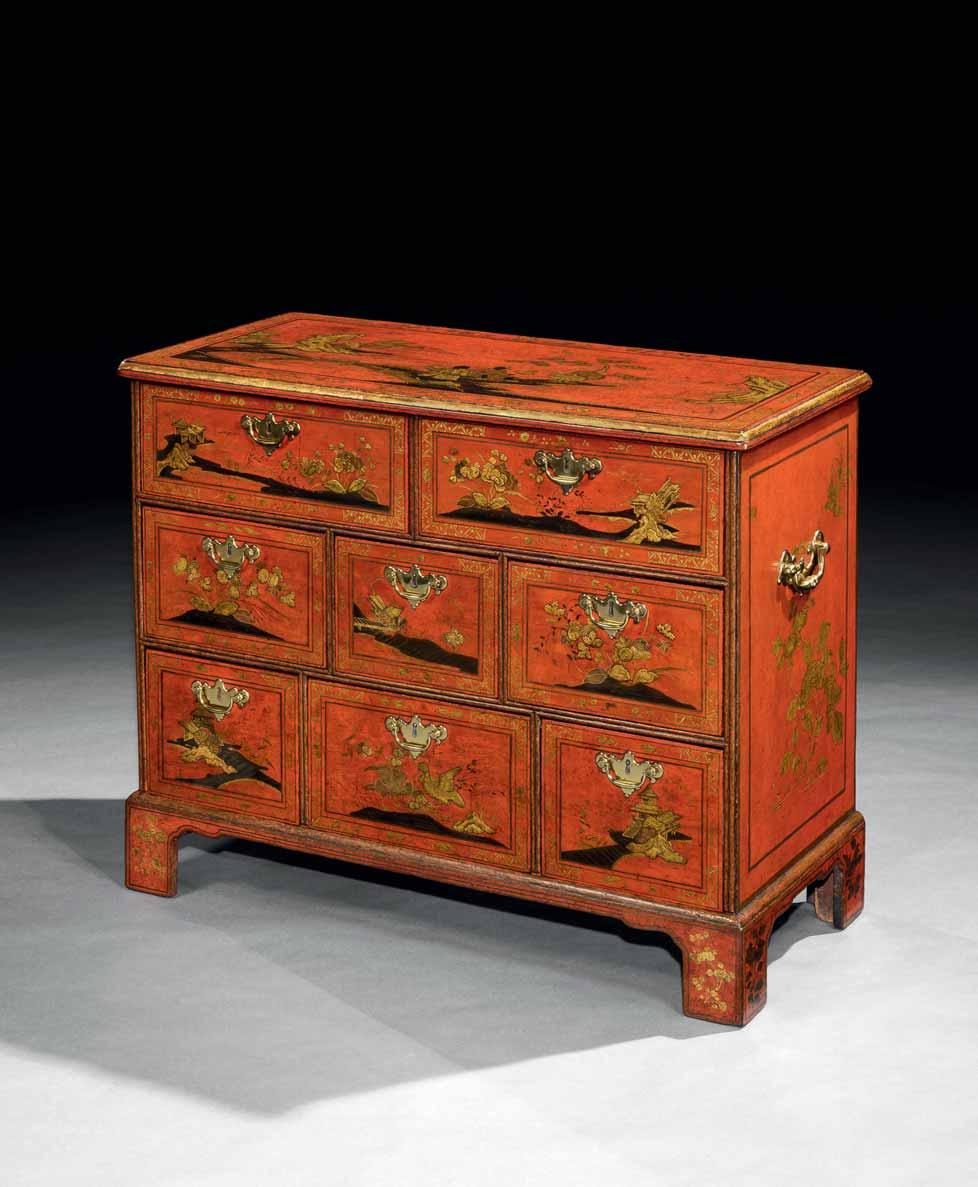
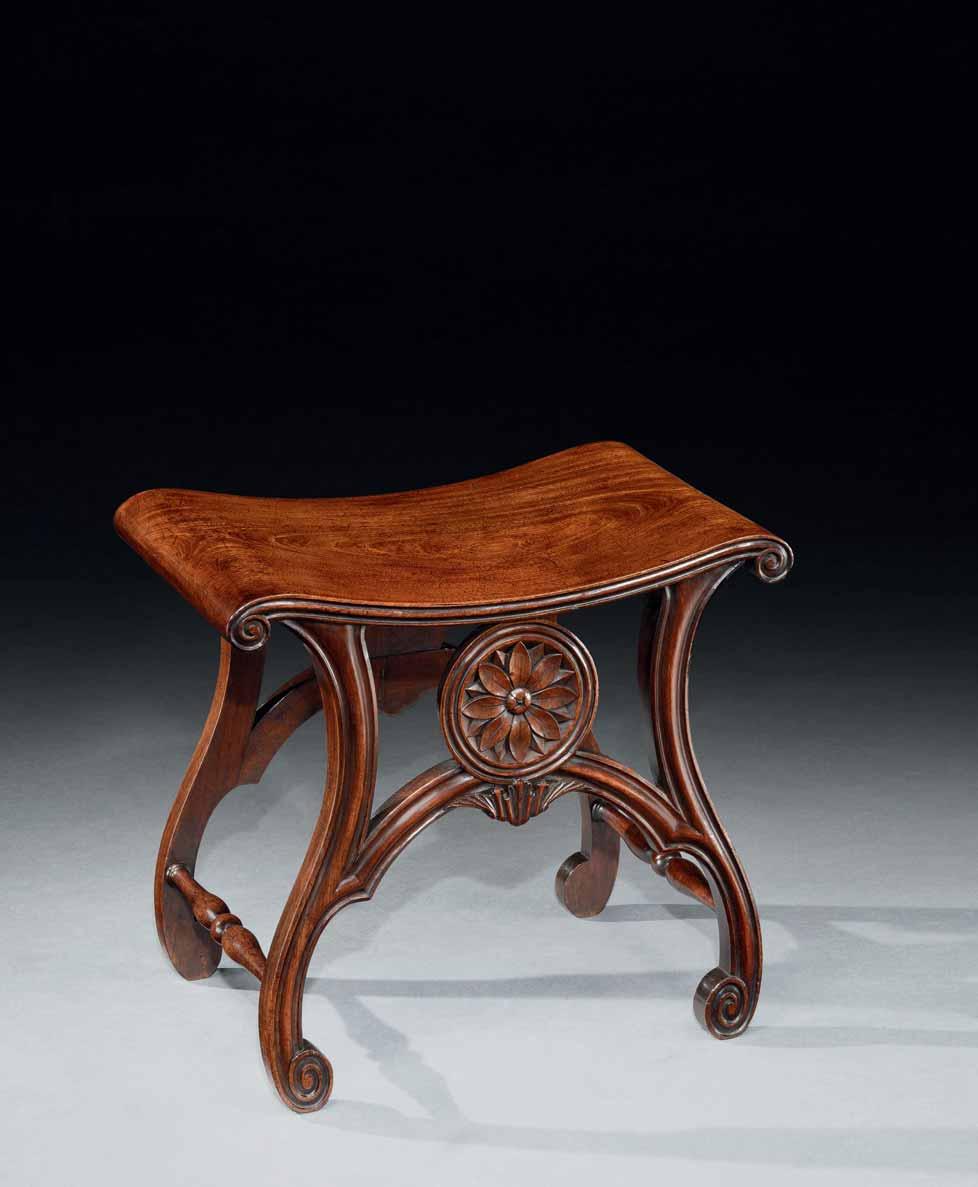
A PAIR OF GEORGE III MAHOGANY STOOLS ATTRIBUTED TO THOMAS CHIPPENDALE
English, circa 1765
Height: 18¼ in; 46.5 cm
Width: 20 in; 51 cm
Depth: 13 in; 33 cm
Provenance:
Stair & Company, New York, USA; Private collection, USA.
Literature:
Margaret Jourdain and F. Rose, English Furniture, the Georgian Period 1750–1830, 1953, p. 71, fig. 29.
Christopher Gilbert, The Life and Work of Thomas Chippendale, 1978, vol. I, pp. 164–5; vol II, p. 213.
Christopher Claxton Stevens and Stewart Whittington, 18th Century English Furniture: The Norman Adams Collection, 1983, p. 56.
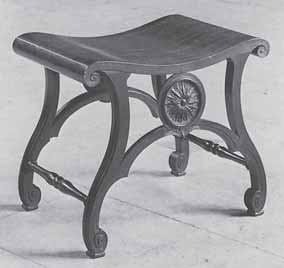
A similar library stool from Christ Church, Oxford, illustrated in The Life and Work of Thomas Chippendale
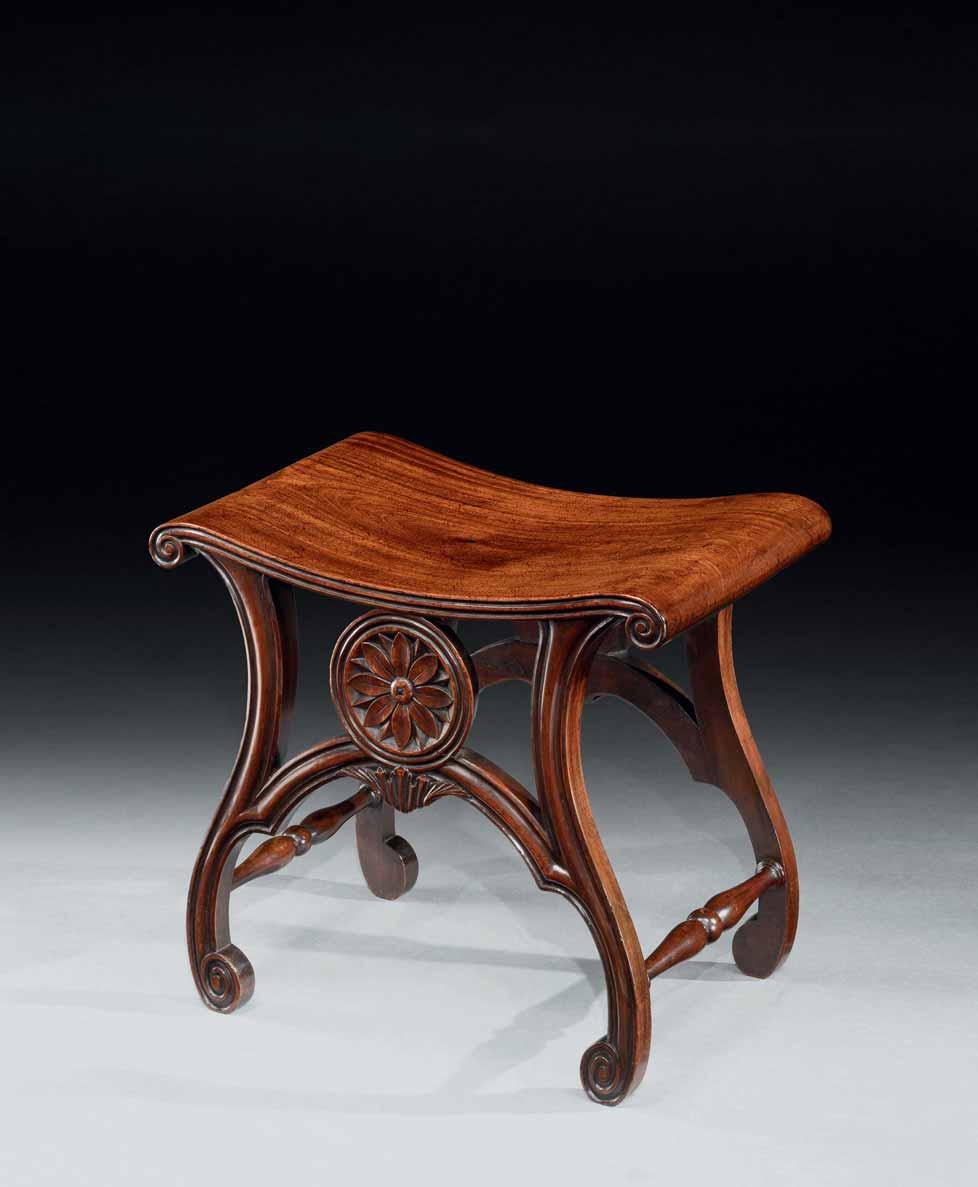
The design of this pair of stools can be found in various forms, mostly within the Oxford area, and it is probably a local pattern. Thomas Chippendale supplied a set of twelve stools of this pattern for the college library at Christ Church, Oxford. Similar stools, some painted and some made in mahogany, can also be found at Petworth House, Sussex, Coleshill House, Berkshire, and Longford Castle, Wiltshire.
A SMALL GEORGE III GILTWOOD BORDER GLASS PIER MIRROR
Note: The mirror retains some of the original mirror plates. The frame has been re-gilded. English, circa 1765
Height: 46 in; 117 cm
Width: 26½ in; 67.5 cm
Provenance: Private collection, London, England.
The exceptional carved detail on the frame suggests a highly skilled craftsman, while this mirror’s extremely small scale makes it exceedingly rare.
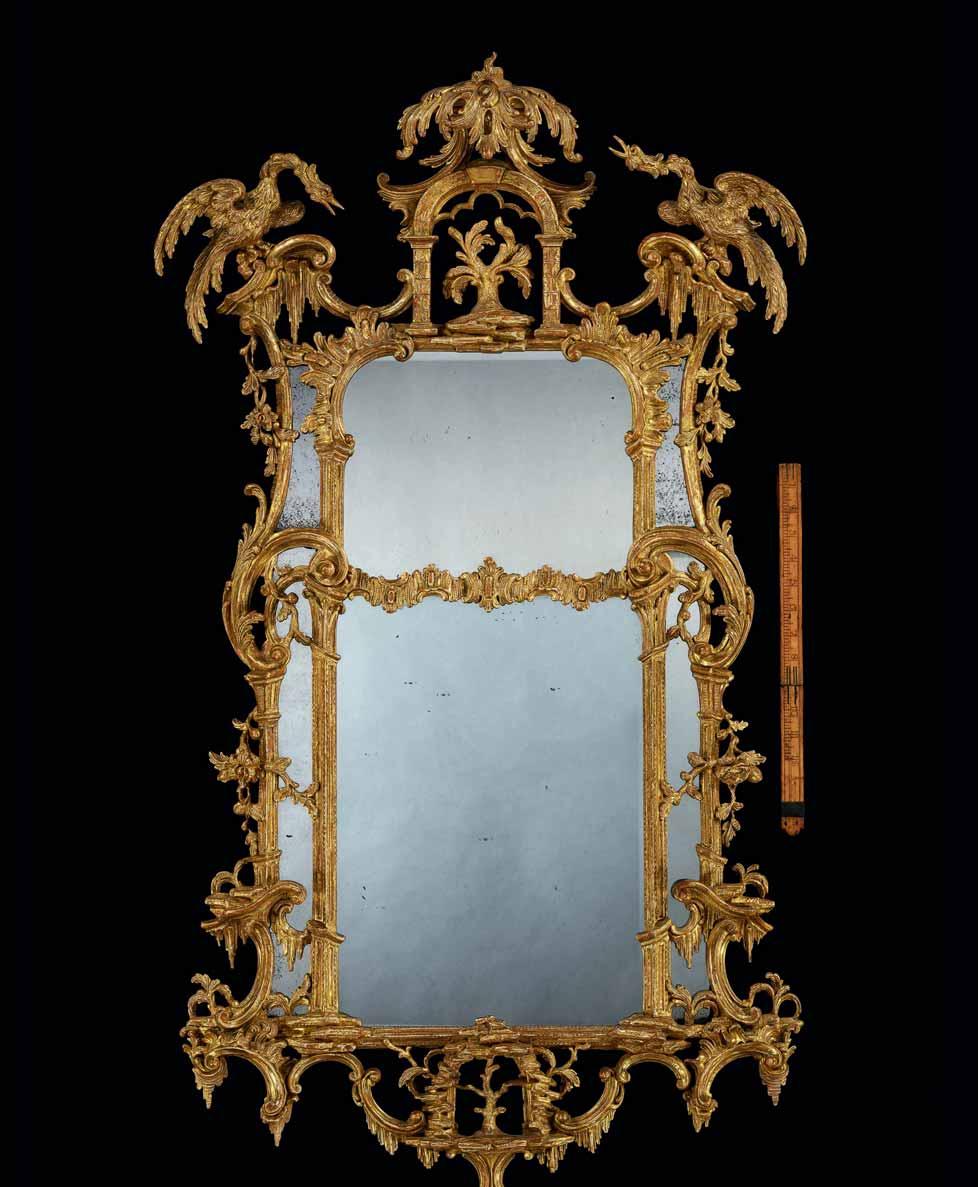
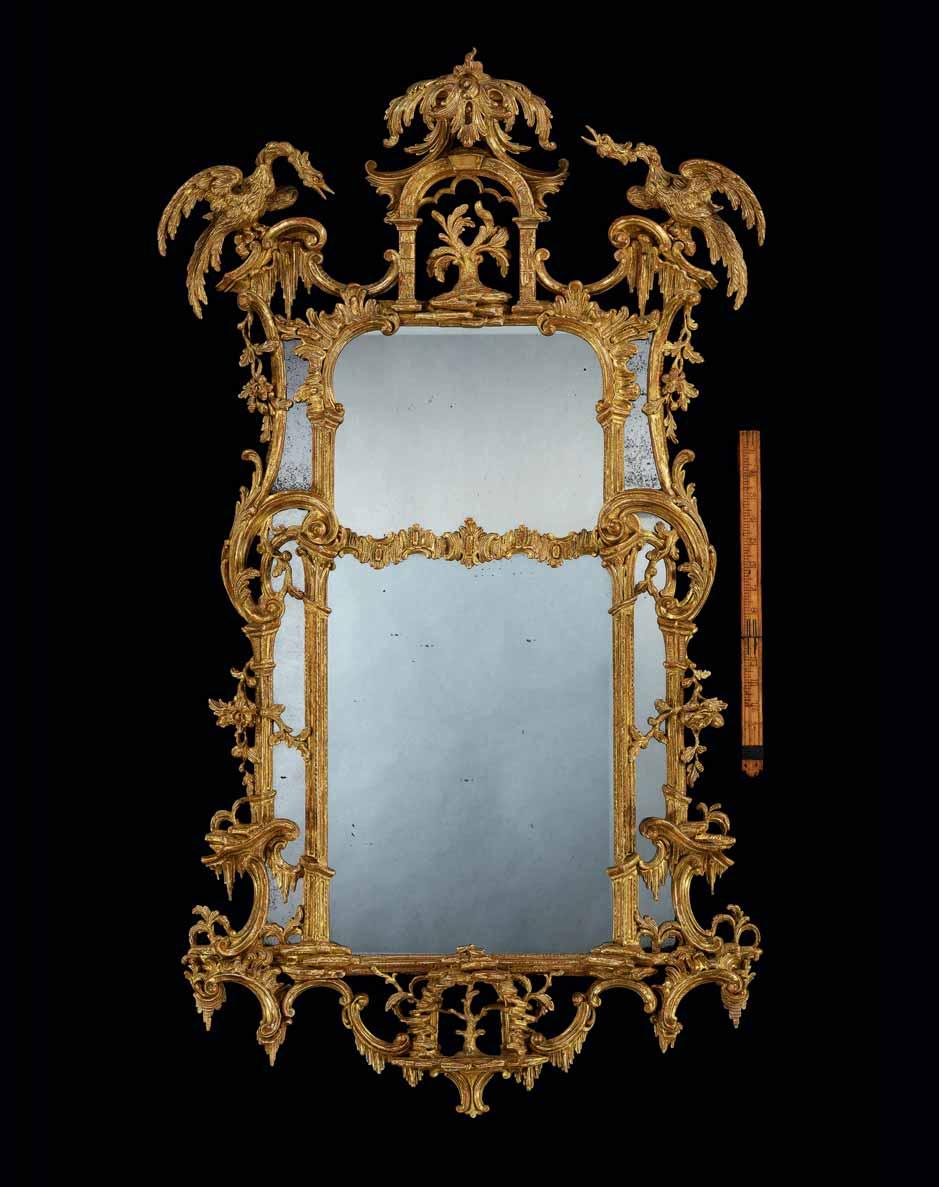
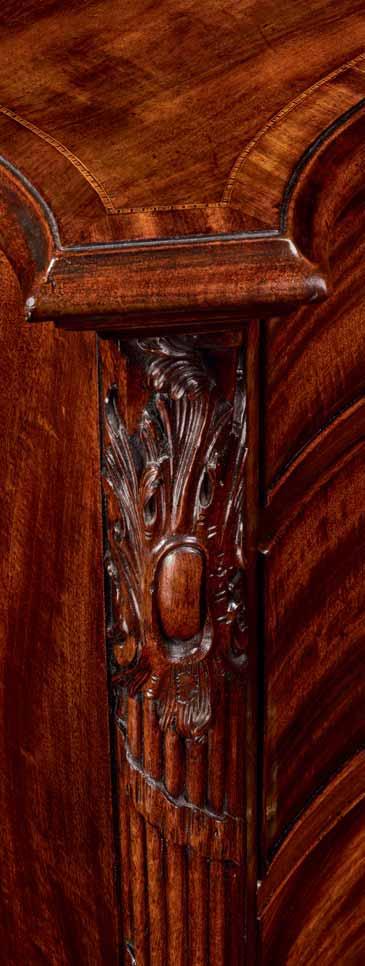
A GEORGE III MAHOGANY SERPENTINE FRONTED CHEST OF DRAWERS
Note: The drawers retain their original ornate brass handles. The top drawer is fitted out as a dressing chest with various compartments.
English, circa 1770
Height 33½ in; 85 cm
Width: 37½ in; 95.5 cm
Depth: 23¾ in; 60.5 cm
Provenance: Private collection, USA.
The relatively small size of the chest is a great advantage and adds to its rarity. The gently undulating serpentine front and ribbon-tied reeded corners are very pleasing to the eye. The exquisitely carved cabochon clasp heading the reeds is the work of an accomplished craftsman who was clearly skilled at rococo ornament, and the beautifully faded colour of the mahogany is highly desirable.
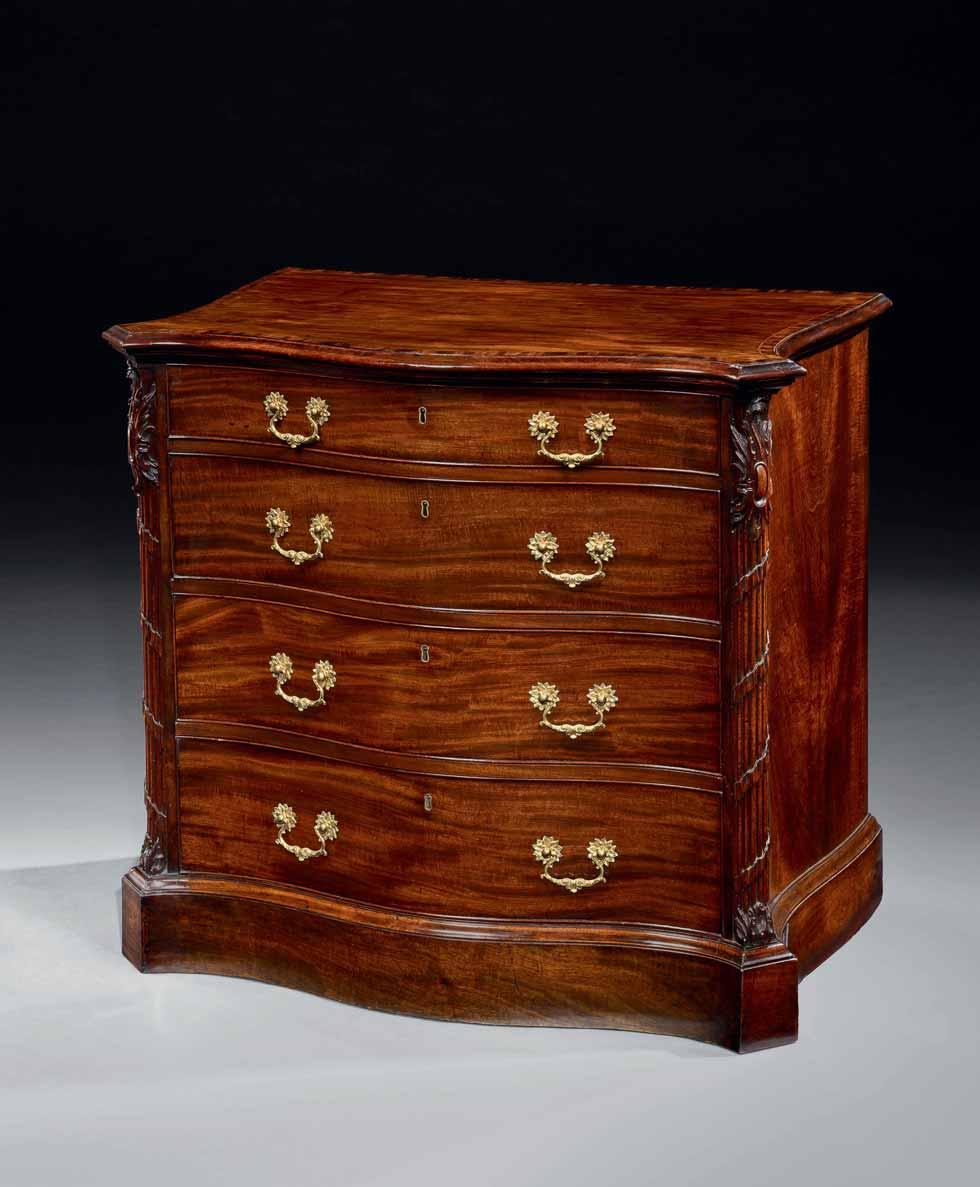
A GEORGE III GILTWOOD CARTEL CLOCK WITH A MOVEMENT BY
PATRICK COCK OF NOTTINGHAM
Note: The case has been re-gilded.
English, circa 1770
Height: 44 in; 112 cm
Width: 20 in; 51 cm
Depth: 7¾ in; 20 cm
Provenance:
Clifford Wright Antiques Ltd., London, England; Ronald Phillips Ltd., London, England; Private collection, USA.
Illustrated: Ronald Phillips Ltd., ‘Antique English Furniture’, catalogue, 1997, p. 12.
The silvered dial is marked with Roman numerals for the hours and Arabic numerals for the minutes, and is signed below the centre ‘PAT COCK NOT’.
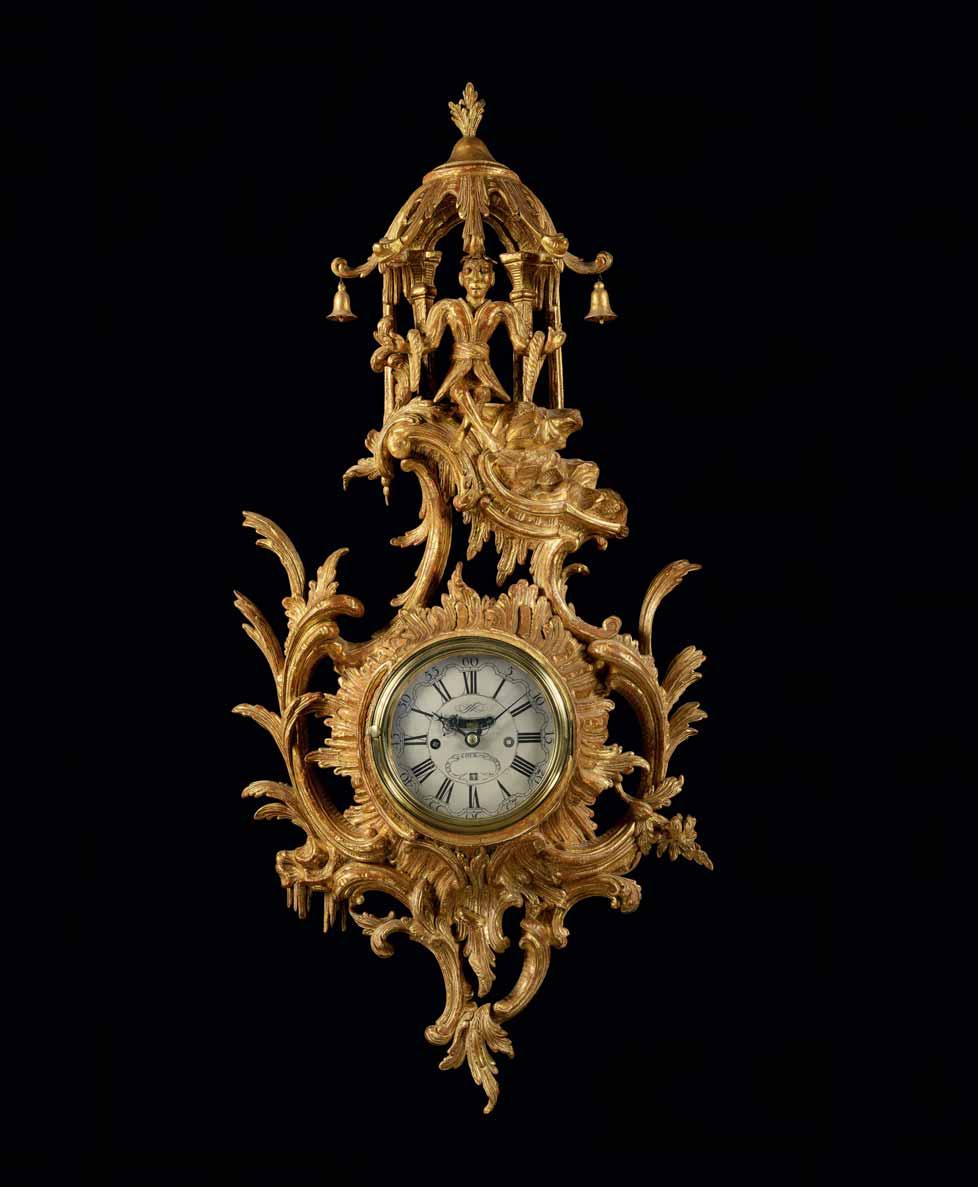
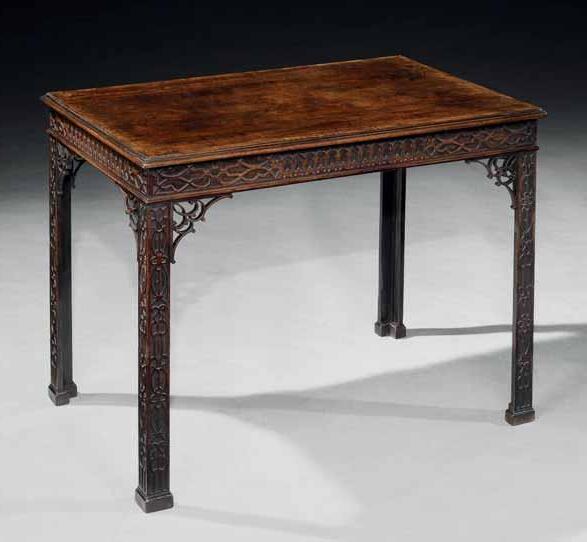
English, circa 1765
Height: 26¼ in; 66.5 cm
Width: 34¼ in; 87 cm
Depth: 22½ in; 57.5 cm
Provenance: Private collection, England.
The table has survived in virtually untouched condition and has acquired an outstanding colour and patina.
A GEORGE III MAHOGANY SILVER TABLE
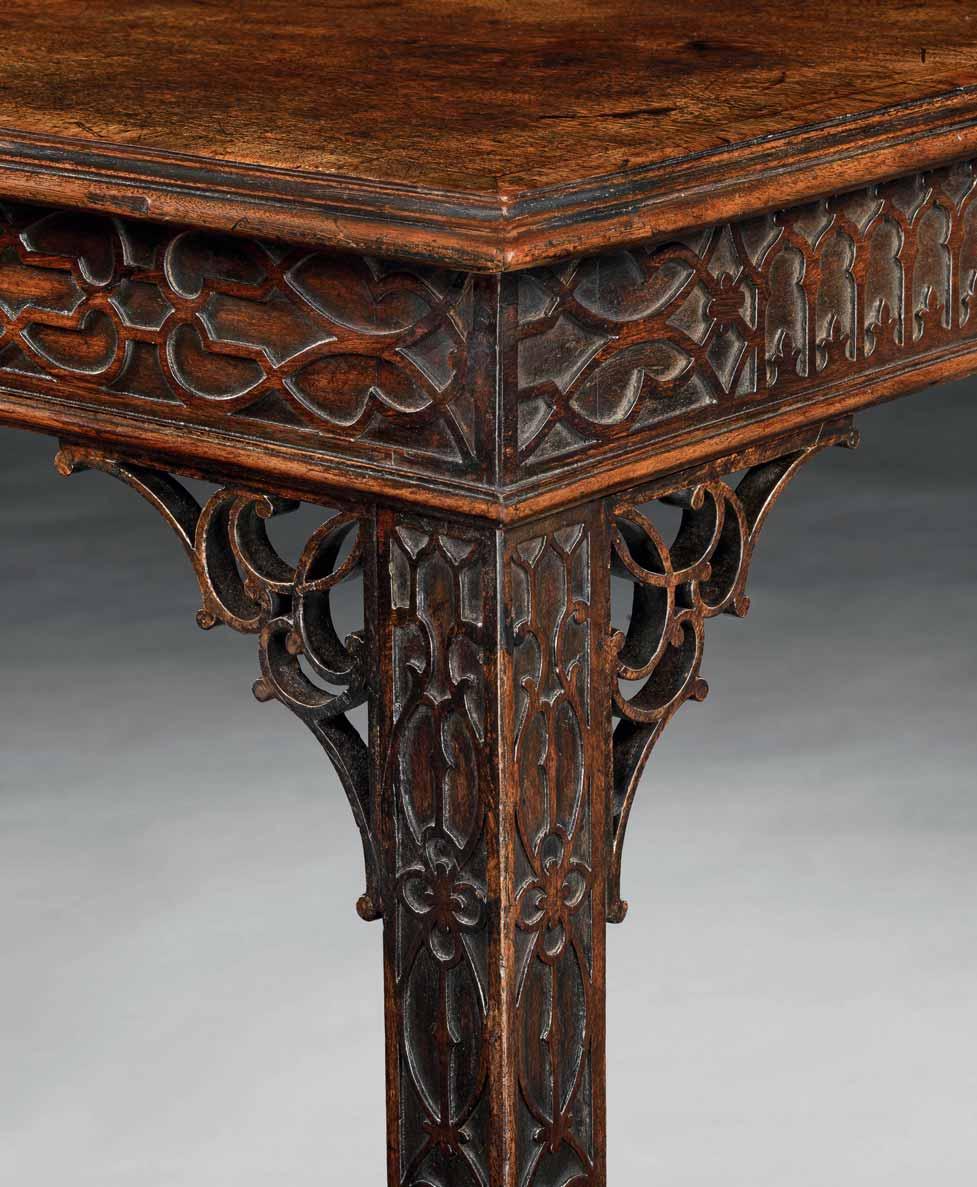
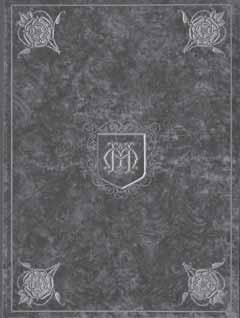
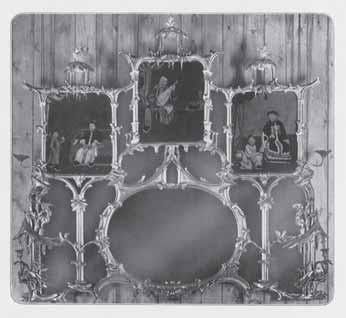
The mirror featured in M. Harris & Sons, ‘A Catalogue and Index of Old Furniture and Works of Decorative Art’
43
A GILTWOOD OVERMANTEL MIRROR INCORPORATING THREE MIRROR PAINTINGS
Note: We believe the mirror to be a century later than previously thought and stated. The English mirror paintings in the Chinese style are original to the frame. The 18th century mercury silvered mirror plates are replacements. One mirror painting has an old crack which has been secured.
English, circa 1860
Height: 4 ft 11 in; 150 cm
Width: 5 ft 9 in; 175.5 cm
Provenance:
M. Harris & Sons, London, England; Clinton Howell Antiques, New York, USA; Private collection, USA.
Illustrated:
M. Harris & Sons, ‘A Catalogue and Index of Old Furniture and Works of Decorative Art’, circa 1930s, Part II 1730–1780, p. 269.
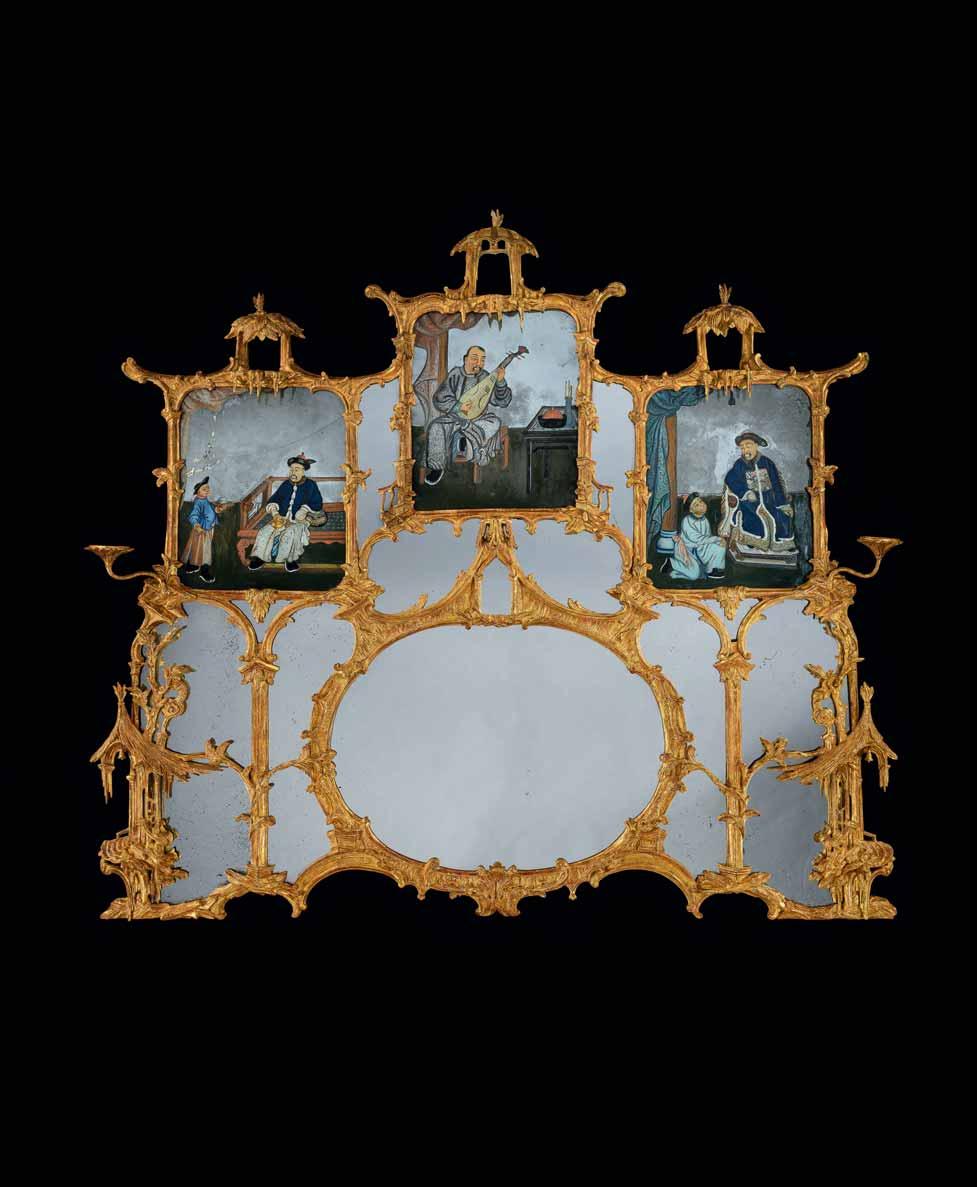
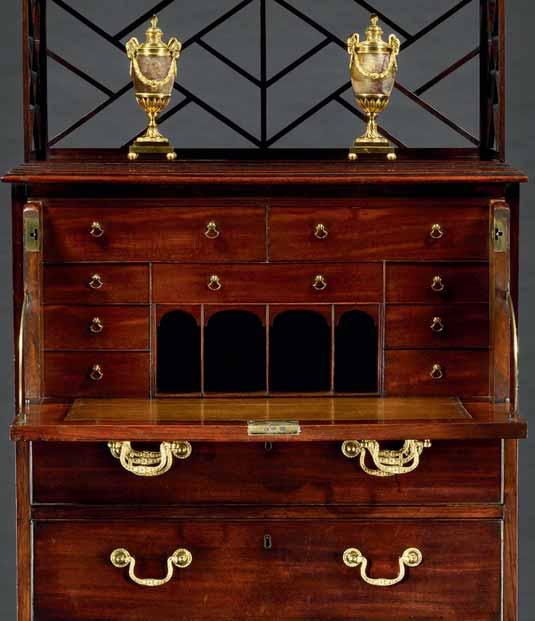
GEORGE III MAHOGANY SECRETAIRE A ABBATANT
Note: The secrétaire retains its original ornate brass handles and the original trellis superstructure.
English, circa 1770
Height: 5 ft 6¼ in; 168.5 cm
Width: 2 ft 4½ in; 72 cm
Depth: 1 ft 2½ in; 37 cm
Provenance: Private collection, England.
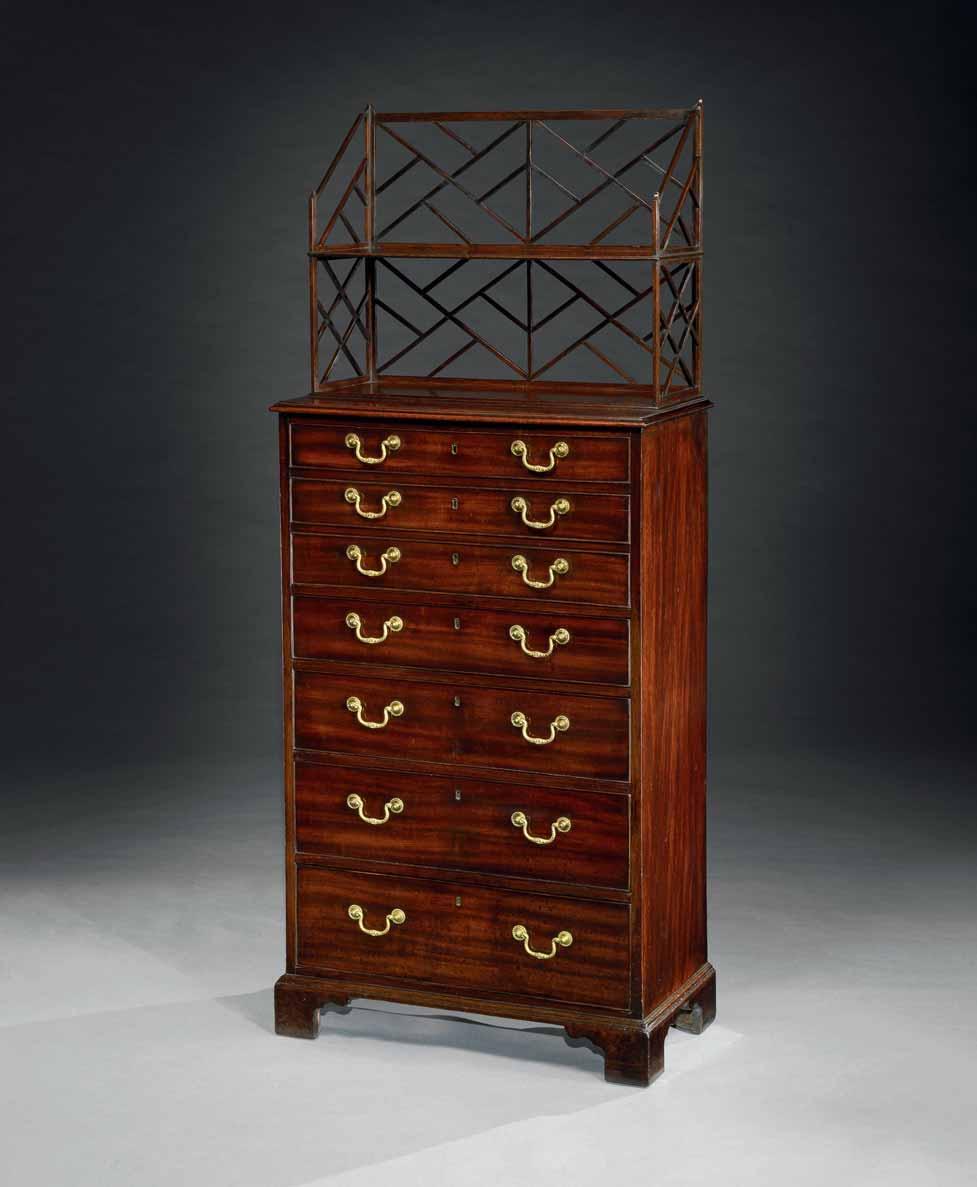
A GEORGE III PERIOD CHINESE EXPORT MIRROR PAINTING
Note: The mirror painting is bevelled on all four sides.
The mirror painting: Chinese, circa 1765
The giltwood frame: English, 20th century
Height: 31 in; 79 cm
Width: 20¼ in; 51.5 cm
Provenance: Private collection, London, England.
Illustrated: Ronald Phillips Ltd., ‘Reflections of the Past: Mirrors 1685–1815’, catalogue, 2004, pp. 130–31, item 53.
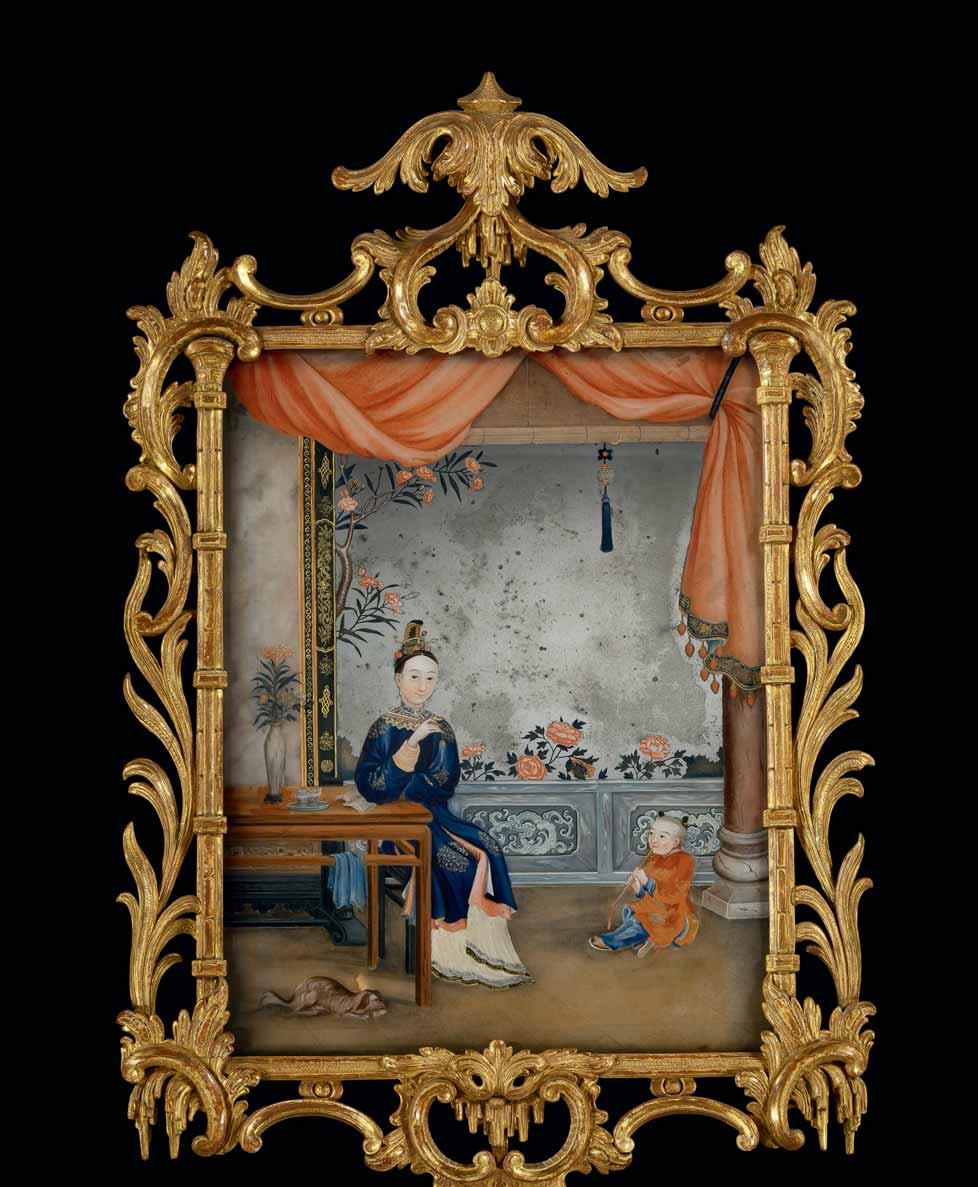
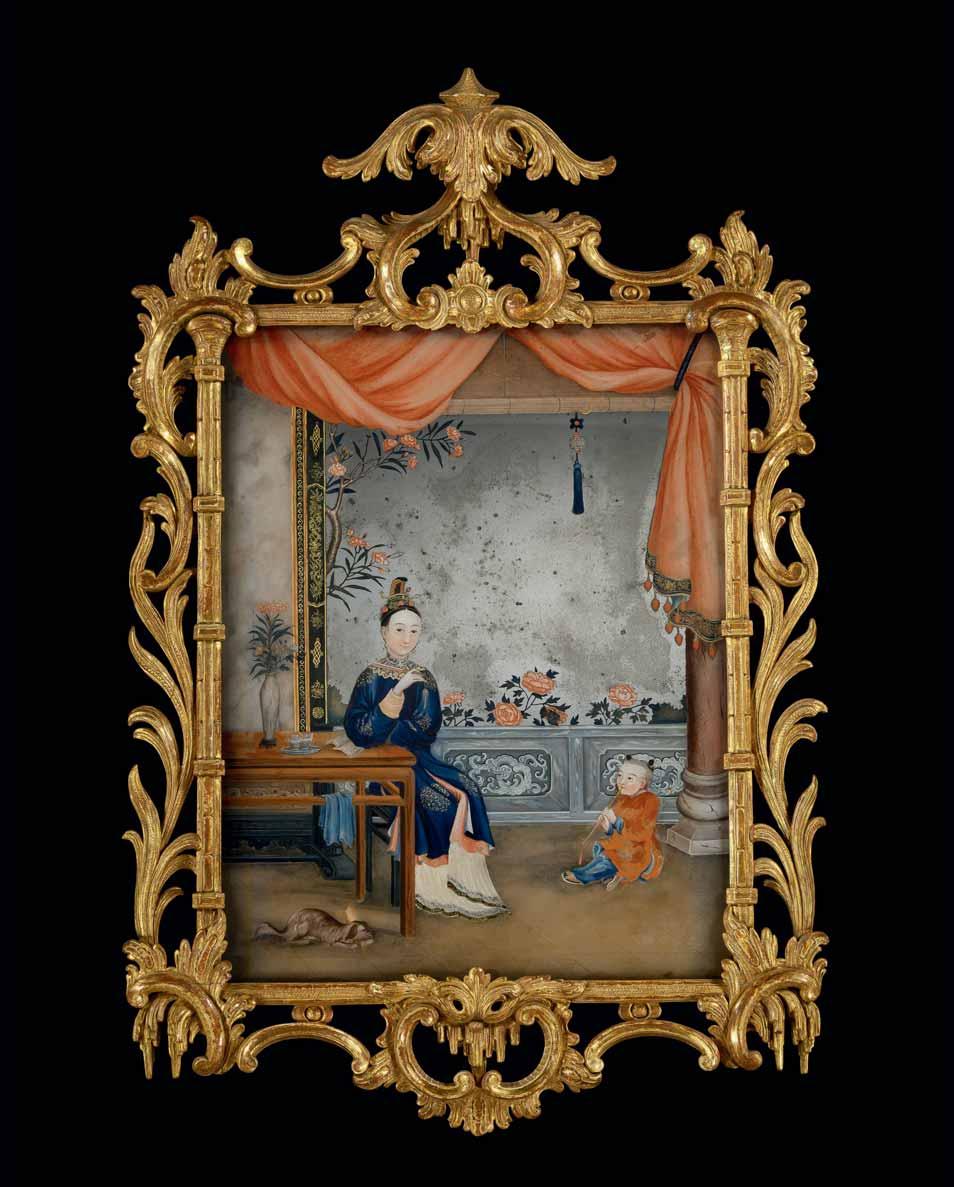
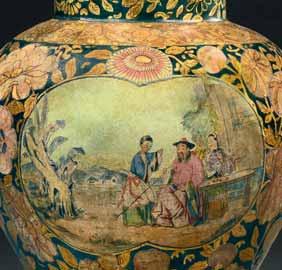
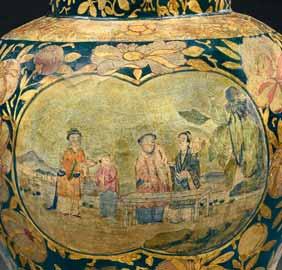
46
A PAIR OF MID 18TH CENTURY LACCA POVERA PAPIER MACHE LIDDED BALUSTER VASES
Italian, probably Venice, circa 1750
Height: 22½ in; 57.5 cm
Diameter: 12¼ in; 31 cm
Provenance: Private collection, New York, USA; Private collection, England.
‘Lacca Povera’, or lacca contrafatta, was a technique of decorating papier-mâché surfaces and simulating porcelain by pasting cut-outs, often of prints, onto a prepared coloured ground and then varnishing over the whole. With gold leaf highlights added, the effect is deceptive. The centre of production was Venice. As a technique, it has similarities to collage today.
Augustus the Strong (1670–1733) used similarly deceptive vases made of turned wood and then lacquered to simulate oriental porcelain for his Porcelain Palace in Dresden as early as 1725.
Few examples of Lacca Povera have survived, and pairs are even rarer.
The reverse of the vases
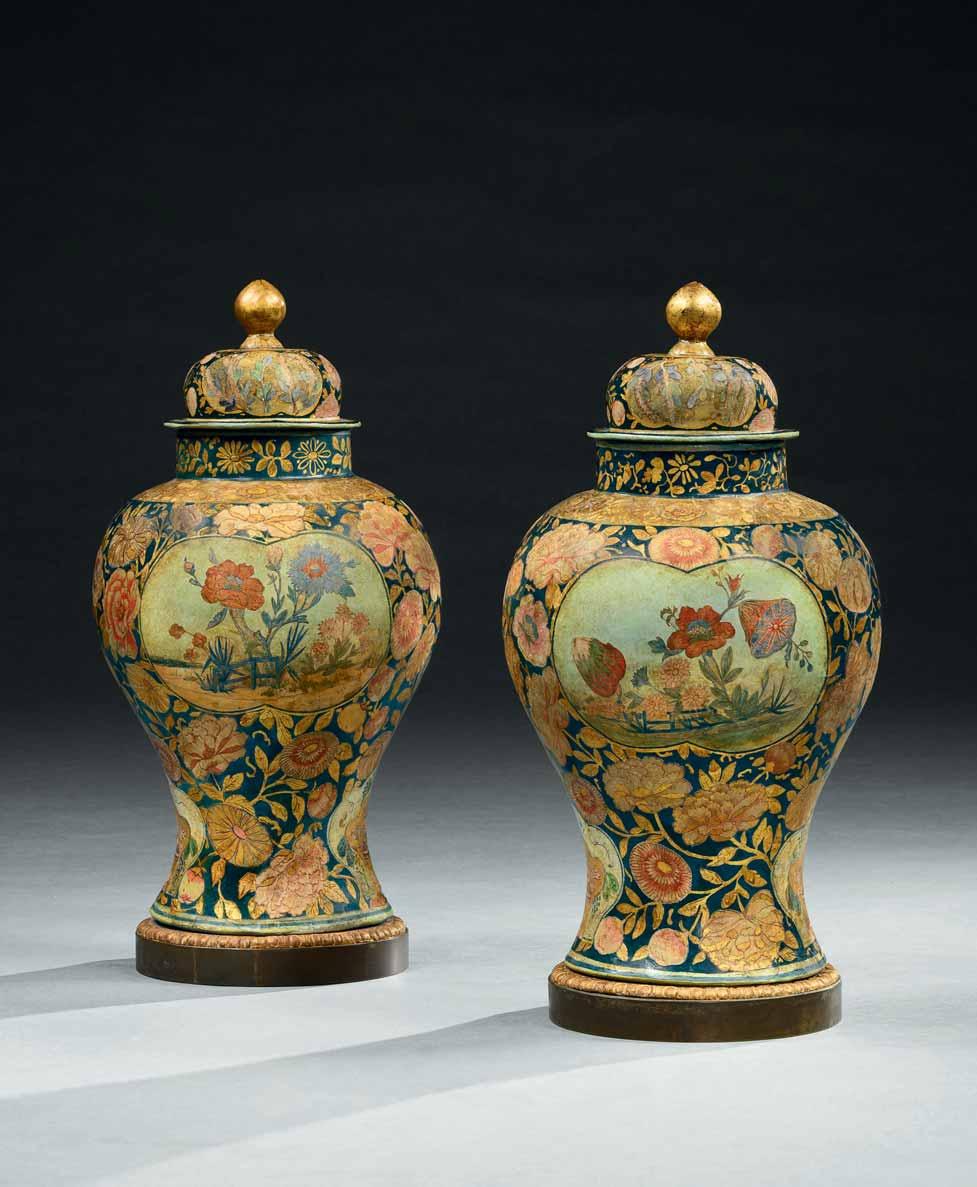

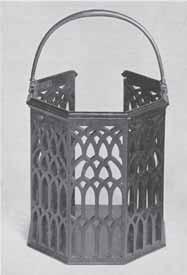
A plate bucket formerly in the Percival D. Griffiths collection, illustrated in The Dictionary of English Furniture
47
A GEORGE III BRASS BOUND MAHOGANY OCTAGONAL PLATE BUCKET ATTRIBUTED TO GILLOWS
Note: The bucket retains its original brass feet and handle. The brass band and the brass liner are of later date.
English, circa 1765
Height (handle up): 22 in; 56 cm
Height (handle down): 14½ in; 37 cm
Diameter: 12 in; 30.5 cm
Provenance:
Charles Lumb & Sons Ltd., Harrogate, Yorkshire, England; Private collection, London, England.
Literature:
Percy Macquoid and Ralph Edwards, The Dictionary of English Furniture, revised edition, 1954, vol. III, p. 35, fig 1.
Susan E, Stuart, Gillows of Lancaster and London, 1730–1840, 2008, vol. II, p. 117.
Ronald Phillips Ltd., ‘Antique English Furniture’, catalogue, 2000, pp. 47–8.
Christian Jussel and William DeGregorio, English Furniture 1680–1760: The Percival D. Griffiths Collection, 2023, vol. I, p. 258, fig. 322.
Ronald Phillips Ltd., ‘Great English Furniture’, catalogue, 2024, pp. 210–11.
We have been fortunate to offer previously extremely similar examples of this type of plate bucket, including one illustrated in our catalogue in 2000 and a pair in our catalogue in 2024. This bucket, however, is the first we have seen that is raised on brass feet, making it a significantly rare example.
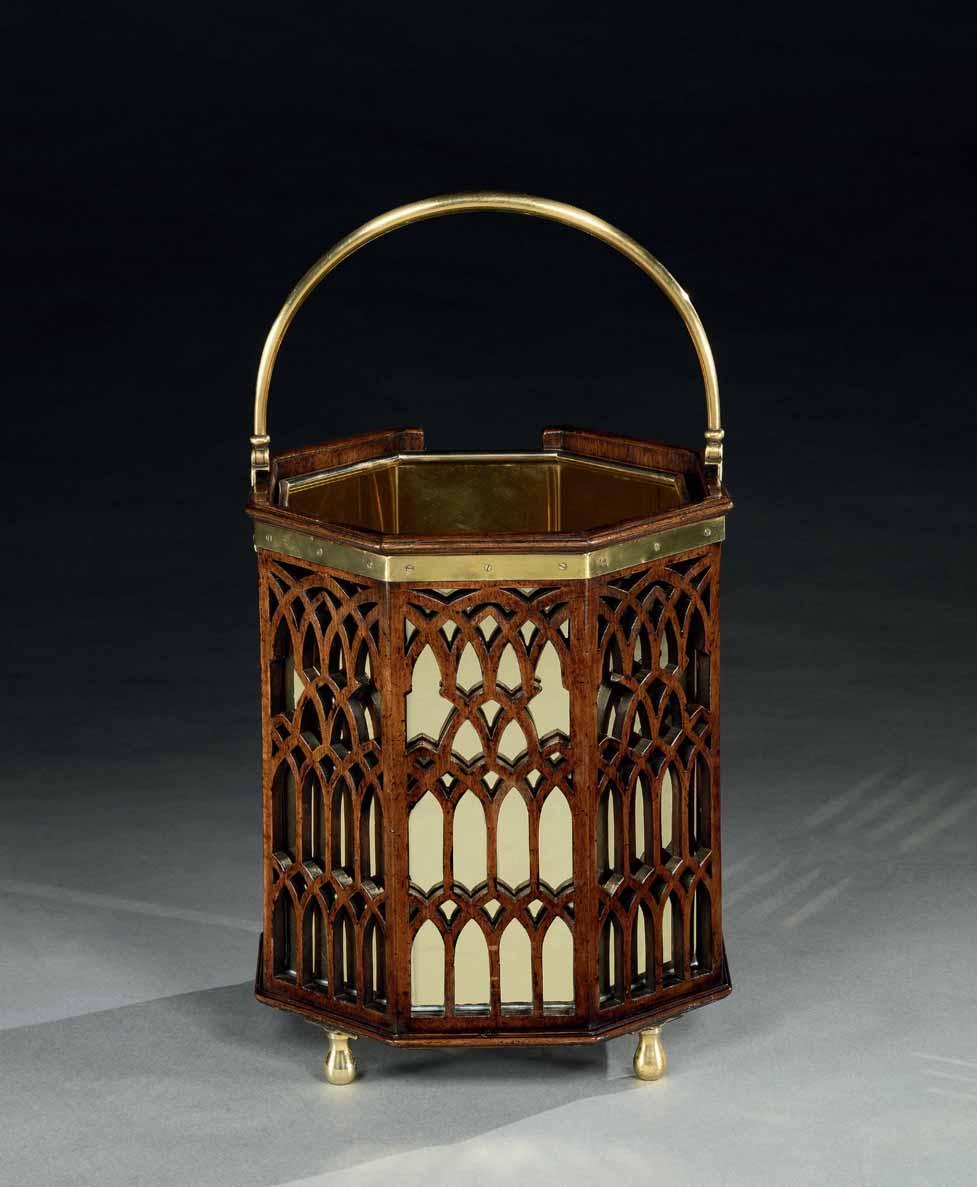
48


A related 18th century drawing for a mirror frame. © Sir John Soane’s Museum, London
A GEORGE III GILTWOOD BORDER GLASS MIRROR DESIGNED BY ROBERT ADAM
Note: The mirror retains its original mirror plates. The frame has been re-gilded.
English, circa 1775
Height: 58¾ in; 149.5 cm
Width: 32¼ in; 82 cm
Provenance:
Clifford Wright Antiques Ltd., London, England; Ronald Phillips Ltd., London, England; Private collection, London, England.
Illustrated: Ronald Phillips Ltd., catalogue, 1999, p. 76.
A related drawing for a similar mirror frame is in the collection of the Sir John Soane’s Museum, London.
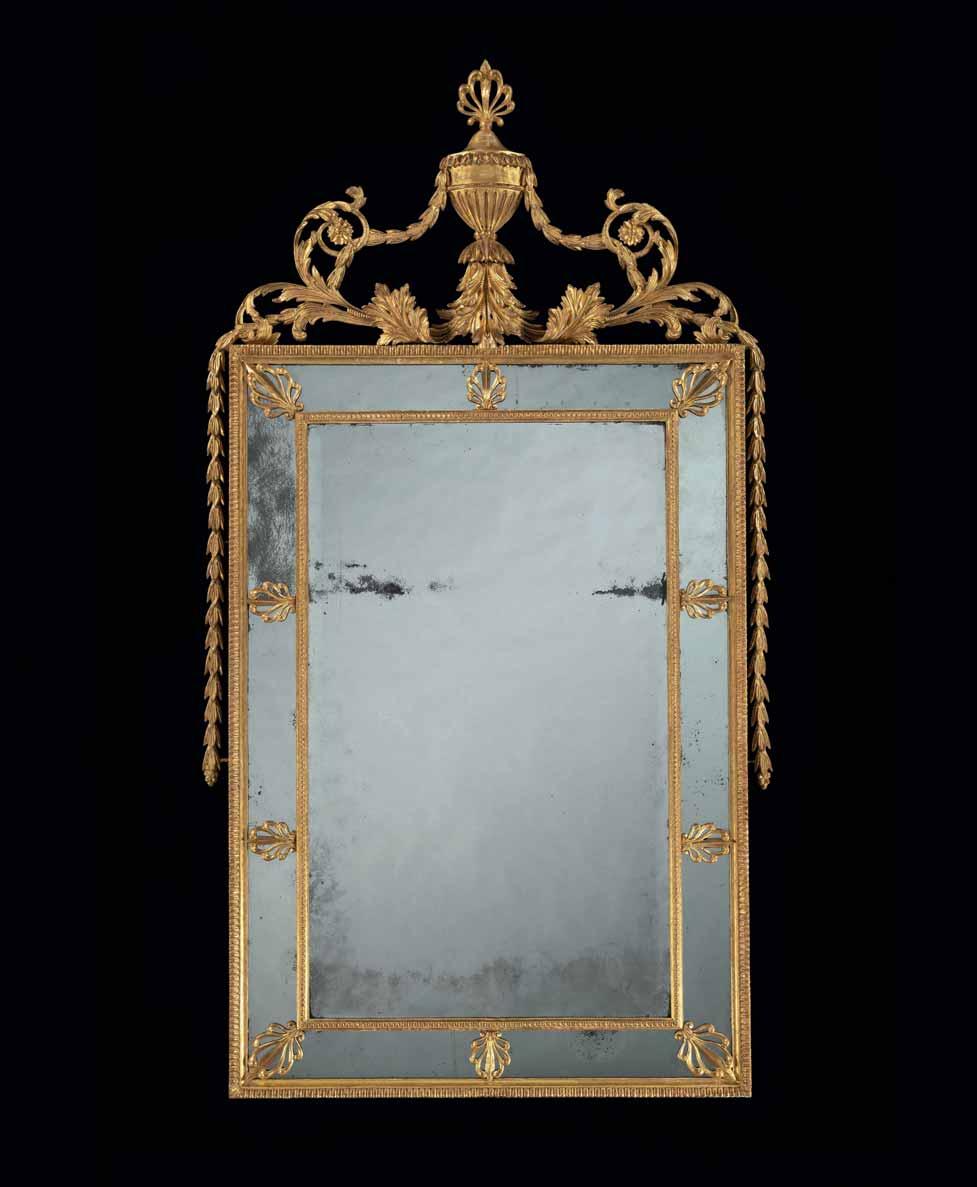
RONALD PHILLIPS
A GEORGE IV EIGHT LIGHT CUT GLASS CHANDELIER
Item 106: see page 213
49
A REGENCY SATINWOOD AND CALAMANDER DRUM TABLE ATTRIBUTED TO GEORGE OAKLEY
English, circa 1815
Height: 28¼ in; 72 cm
Diameter: 48 in; 122 cm
50
A GEORGE III GILTWOOD SIDE TABLE
English, circa 1770
Height: 35 in; 89 cm
Width: 59¼ in; 150.5 cm
Depth: 27 in; 68.5 cm
51
A PAIR OF QUEEN ANNE GESSO SIDE CHAIRS ATTRIBUTED TO JAMES MOORE THE ELDER
English, circa 1710
Height: 42¼ in; 107.5 cm
Height of seat: 19½ in; 49.5 cm
Width: 24 in; 61 cm
Depth: 27½ in; 70 cm
52
A GEORGE III SERPENTINE MAHOGANY COMMODE ATTRIBUTED TO WILLIAM GOMM & SON & CO.
English, circa 1765
Height: 35¼ in; 89.5 cm
Width: 54½ in; 138.5 cm
Depth: 27¾ in; 70.5 cm
53
A GEORGE III GILTWOOD RECTANGULAR PIER MIRROR
English, circa 1765
Height: 5 ft 9 in; 175.5 cm
Width: 2 ft 11 in; 89 cm
Depth: 9½ in; 24 cm
54
A GEORGE III GILTWOOD OVAL MIRROR
English, circa 1765
Height: 5 ft 4 in; 163 cm
Width: 3 ft 1 in; 94 cm
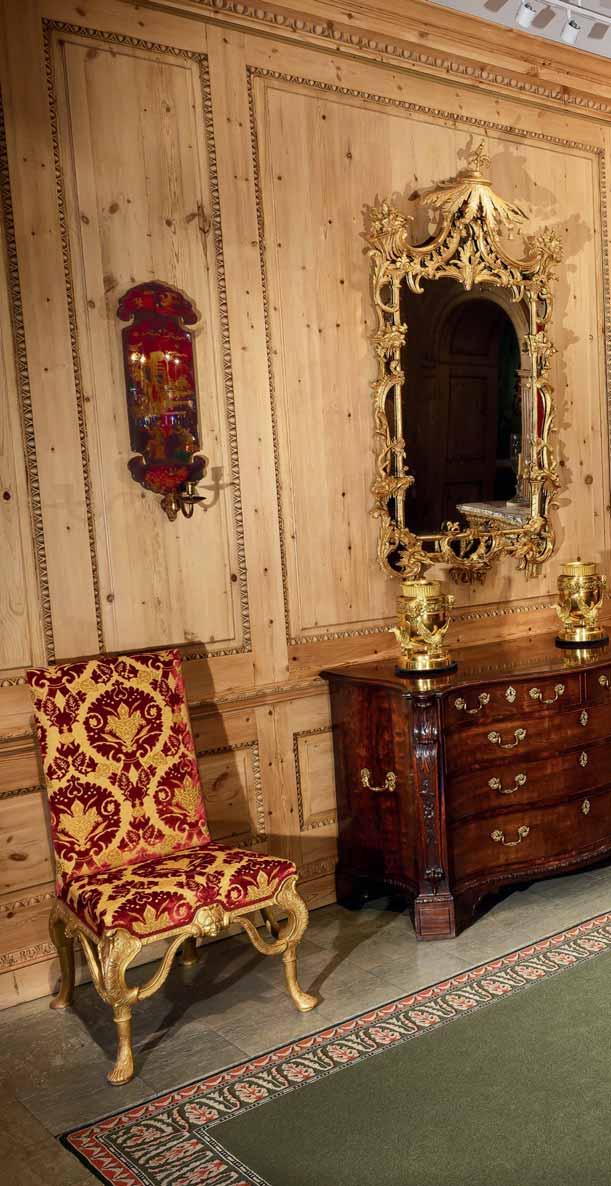
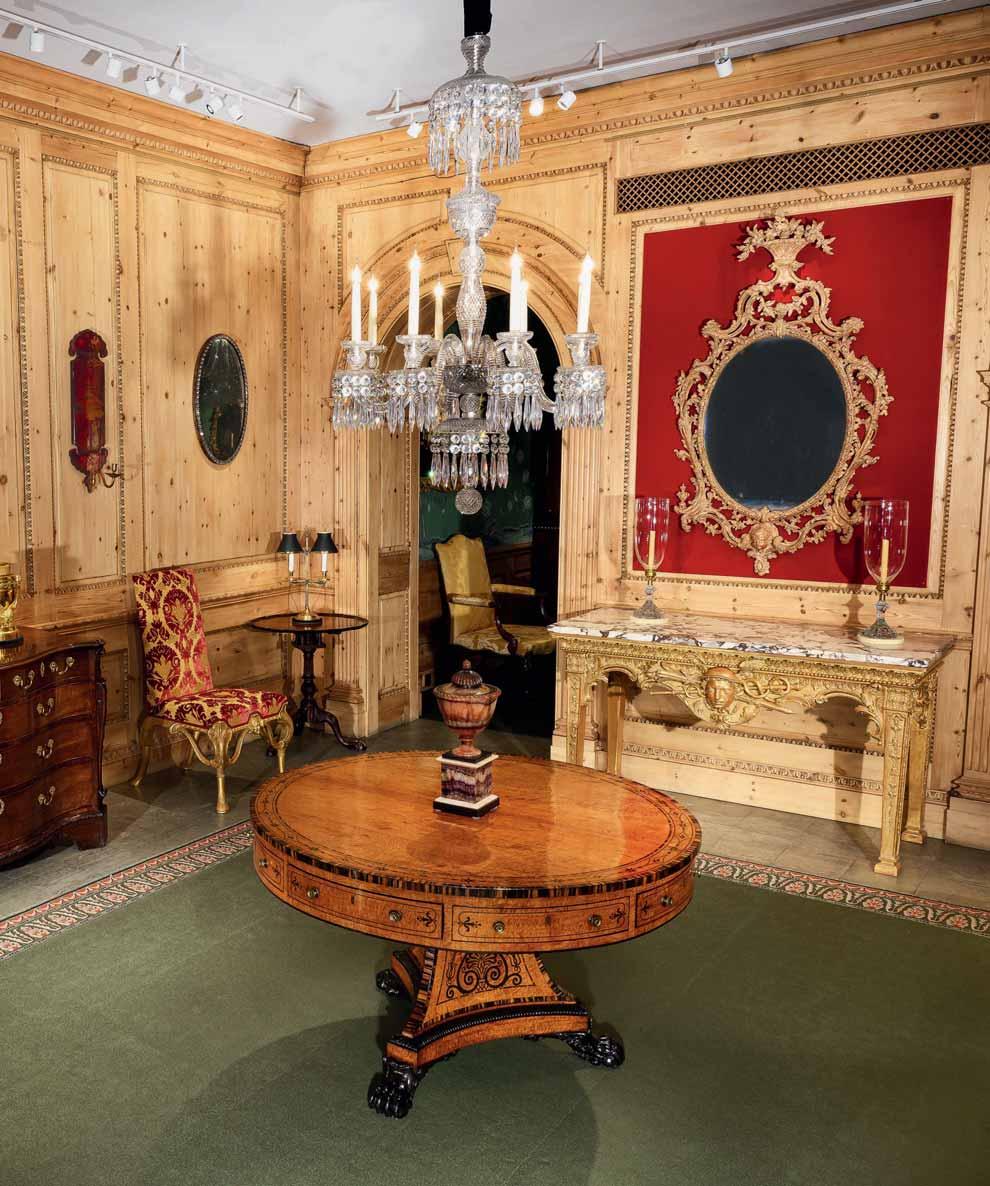
THE GLYMPTON PARK WRITING TABLE
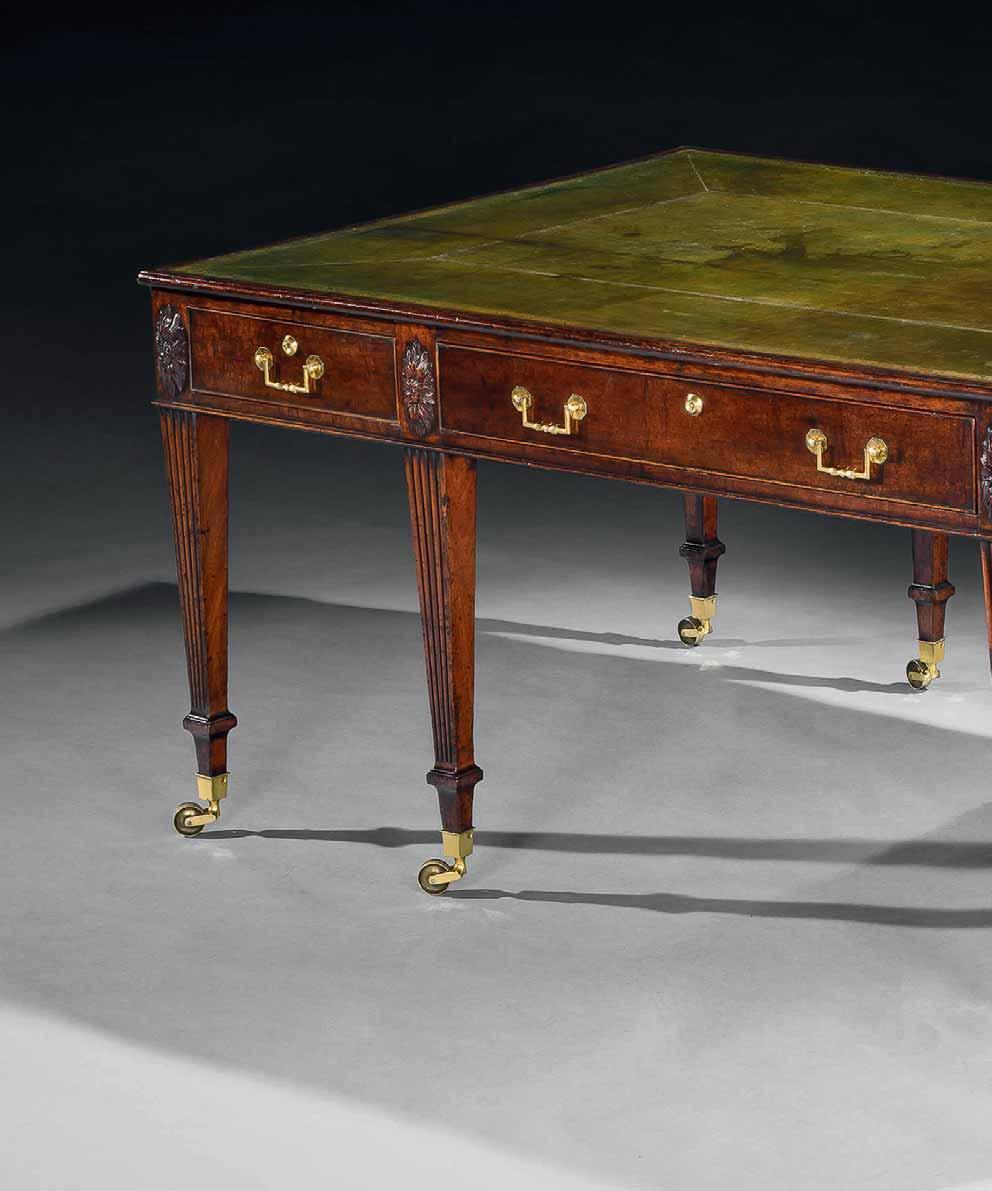
A LARGE GEORGE III MAHOGANY WRITING TABLE
Note: The frieze contains a mixture of real and dummy drawers on all four sides, with replaced brass handles. The gold-tooled leather insert is a 20th century replacement and the castors are of later date.
English, circa 1790
Height: 2 ft 7½ in; 80 cm
Knee height: 2 ft; 61 cm
Width: 6 ft 5¾ in; 197.5 cm
Depth: 3 ft 10¾ in; 119 cm
Provenance: Glympton Park, Woodstock, Oxfordshire, England.
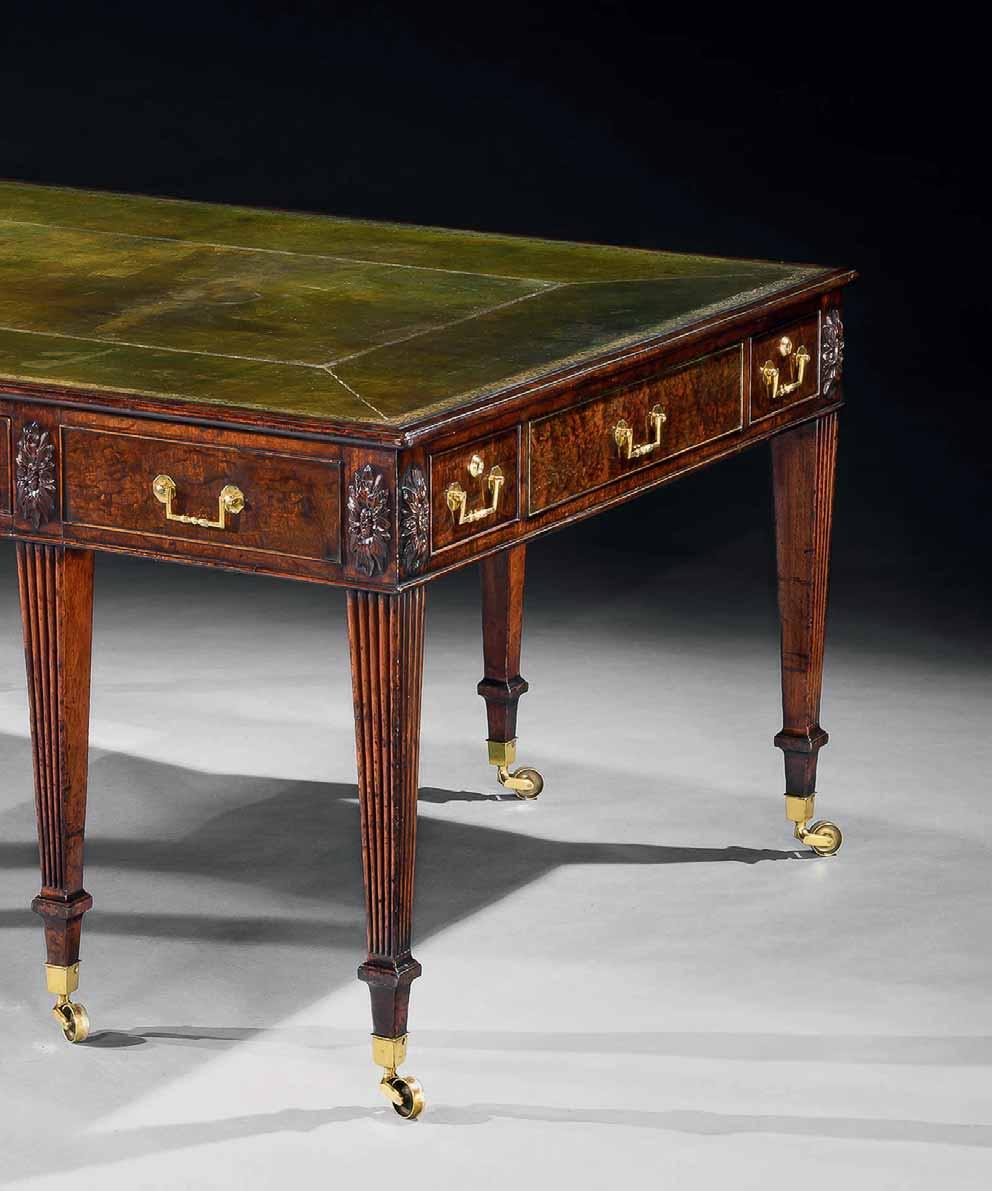
56

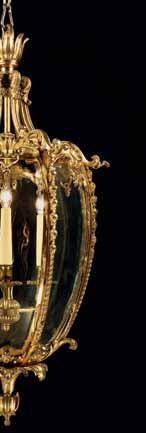
Design for a lantern published in Chippendale’s The Gentleman and Cabinet-maker’s Director, 1762
A VICTORIAN ORMOLU LANTERN TO A CHIPPENDALE DESIGN
Note: The lantern is now fitted for electricity.
English, circa 1850
Height: 33 in; 84 cm
Diameter: 17 in; 43.5 cm
Provenance: Denton Antiques, London, England; Private collection, London, England.
Literature: Thomas Chippendale, The Gentleman and Cabinet-maker’s Director, 3rd edition, 1762, pl. CLIII.
The design of this lantern is a faithful copy of Thomas Chippendale’s drawing for a lantern published in the third edition of The Gentleman and Cabinet-maker’s Director in 1762, plate CLIII, dated 1761.
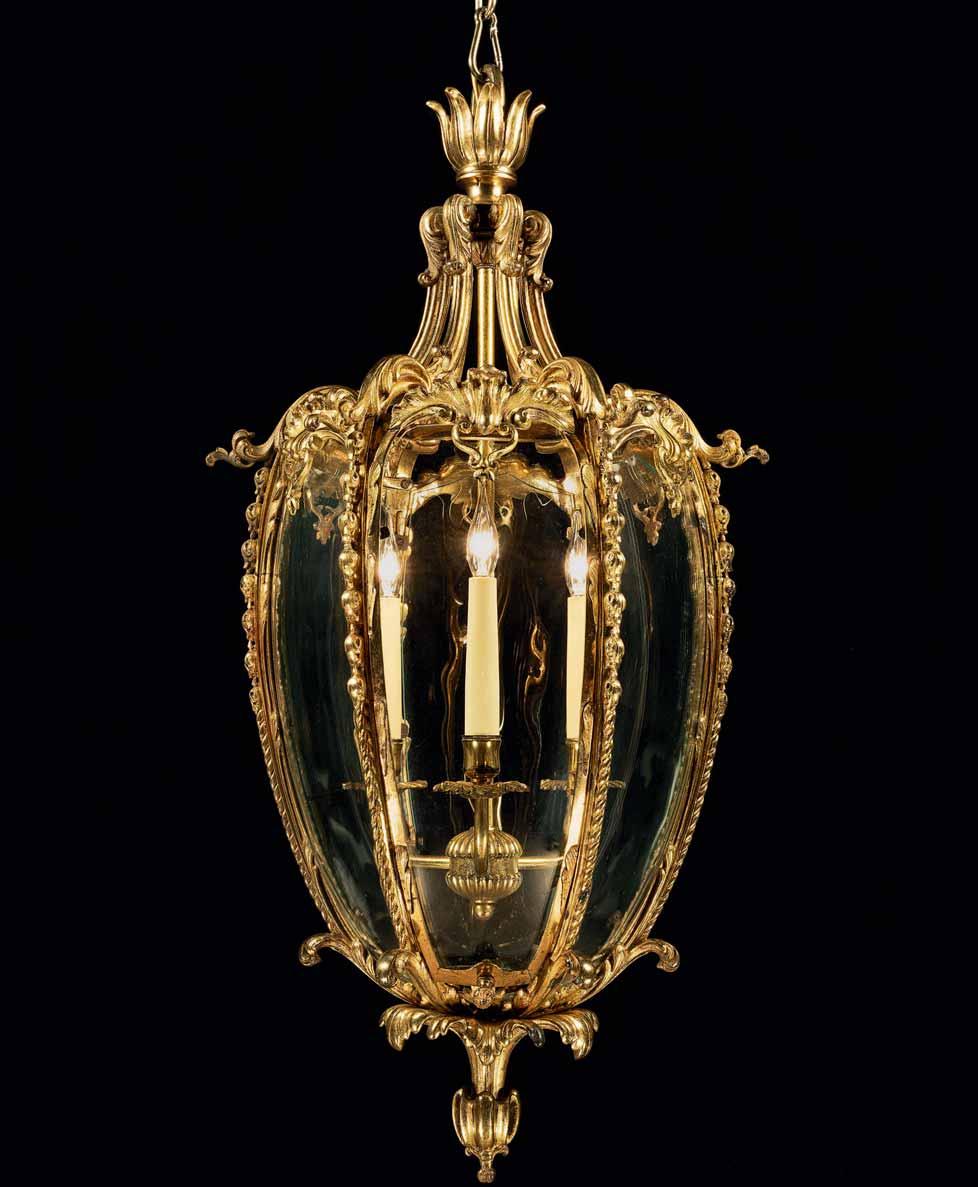
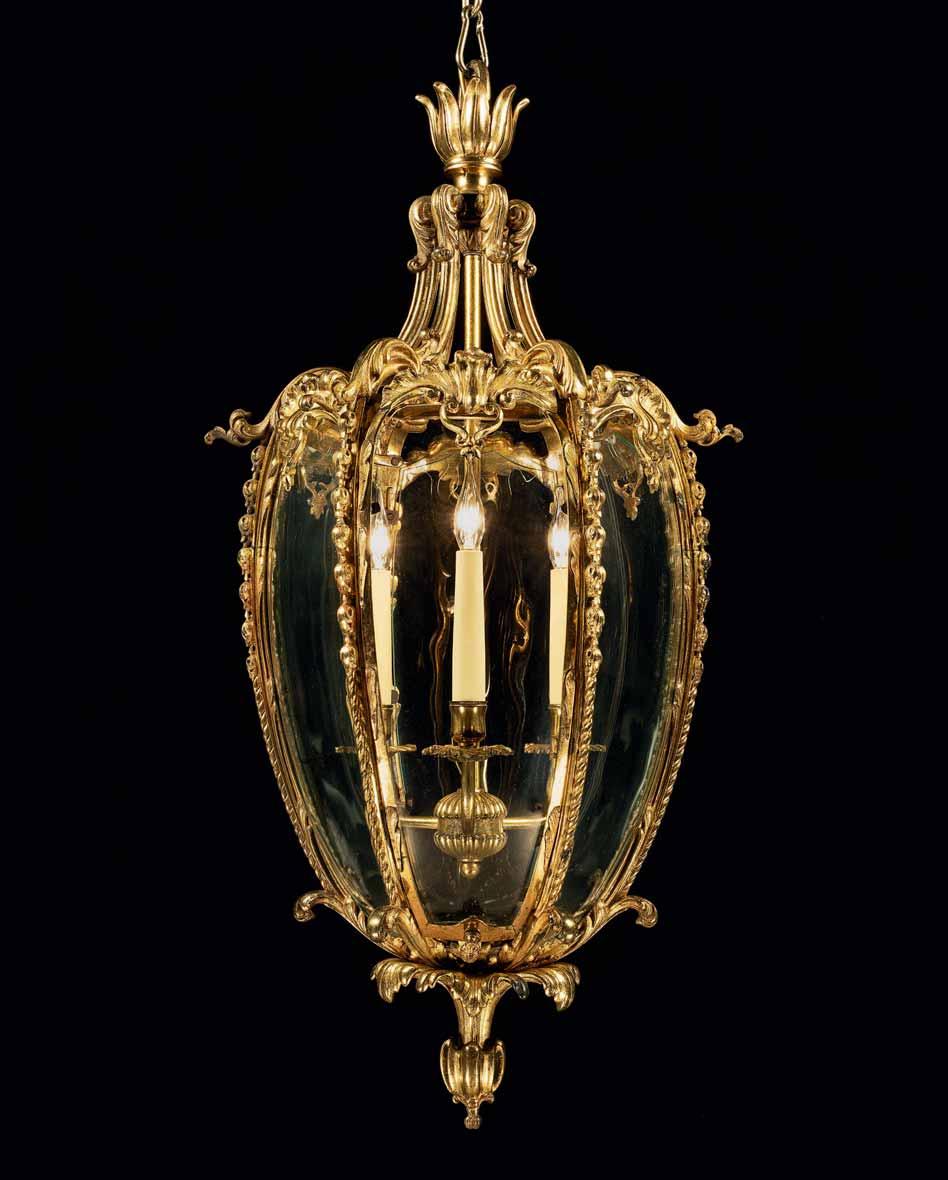
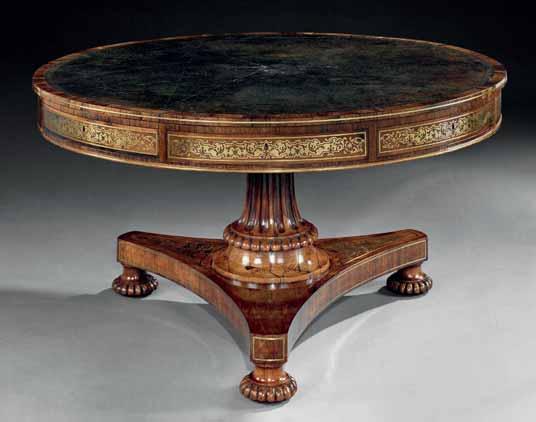
57
A REGENCY BRASS INLAID ROSEWOOD DRUM TABLE ATTRIBUTED TO GILLOWS
Note: The table retains its original gold tooled purple morocco leather top, which has now faded to a dark green.
English, circa 1815
Height: 29½ in; 75 cm
Diameter: 53¼ in; 135.5 cm
Provenance: Almost certainly Hackwood Park, Hampshire, England.
Literature: Susan E. Stuart, Gillows of Lancaster and London, 1730–1840, 2008, vol. 1, pp. 289–92. Christie’s, ‘Hackwood Park’, sale catalogue, London, 20–22 April 1998, pp. 32–7.
The brass inlay to the drawer fronts here (the ‘contre-partie’) matches the brass inlay (the corresponding ‘première partie’) on a rosewood folio cabinet supplied by Gillows for the libraries at Hackwood Park at the same time. Première partie and contre-partie are terms specific to brass or tortoiseshell inlay, describing the economical use of a pattern twice, first with timber background and brass pattern, and the second time with brass background and the pattern in timber.
The strong similarities in design to the well documented Hackwood Park library table together with the similar brass inlay and the use of purple leather on both tables support the attribution to Gillows and a Hackwood provenance. It is more than likely that this magnificent table once stood alongside the library table at Hackwood Park.
An entry in the Gillows memorandum book states: ‘Apart from this desk [i.e. the library table] the furniture included a “buhl” drum library table en suite … the table … had a purple leather top to match the desk and purple silk in all the library doors’.
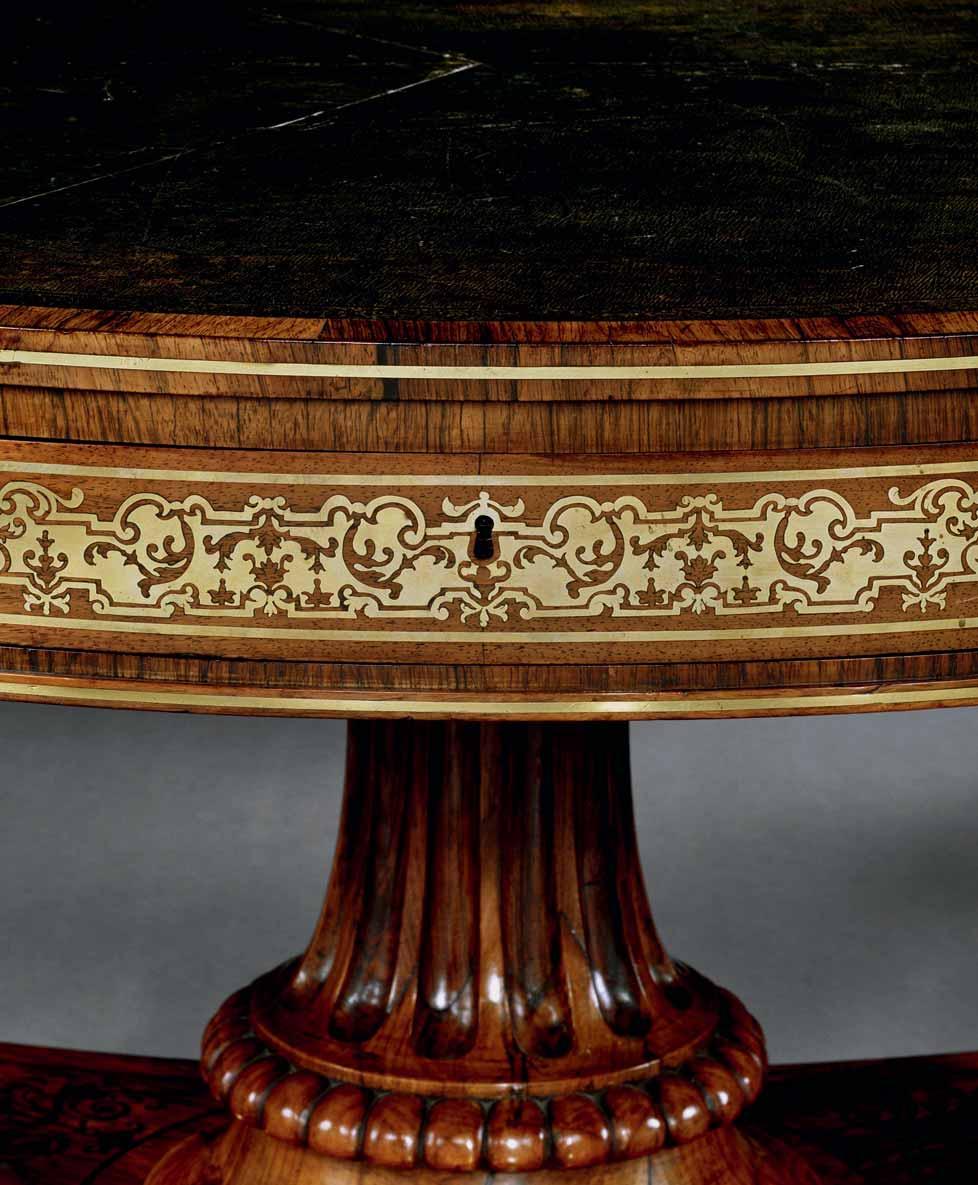
THE HACKWOOD PARK ‘BUHL’ DRUM TABLE
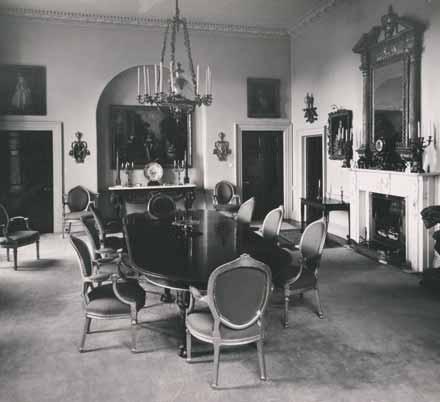
The wall lights in situ at Newtown Park House, Co. Dublin, 1947. Courtesy of Irish Architectural Archive
58
A PAIR OF IRISH GEORGE III GILTWOOD TWIN-LIGHT WALL LIGHTS
Note: The wall lights retain much of the original gilding and their original mirror plates and candle arms.
Irish, circa 1775
Height: 27½ in; 70 cm
Width: 16½ in; 42 cm
Depth: 8¾ in; 22.5 cm
Provenance: Edward McGuire, Newtown Park House, Blackrock, Co. Dublin, Ireland, until 1976; Private collection, USA.
Photographed:
In the dining room at Newtown Park House in 1947, Irish Architectural Archive, Dublin.
Illustrated: Christie’s, ‘Newtown Park House, Co. Dublin’, sale catalogue, Dublin, 20 September 1976, pl. 3, lot 8; one of the pair illustrated.
When Edward McGuire took on Newtown Park in 1946 the house was a mere shell and at risk of demolition, the fate of many formerly grand houses in Ireland at the time. As an avid collector of Irish art he filled the restored house with his collection until it was dispersed in 1976.
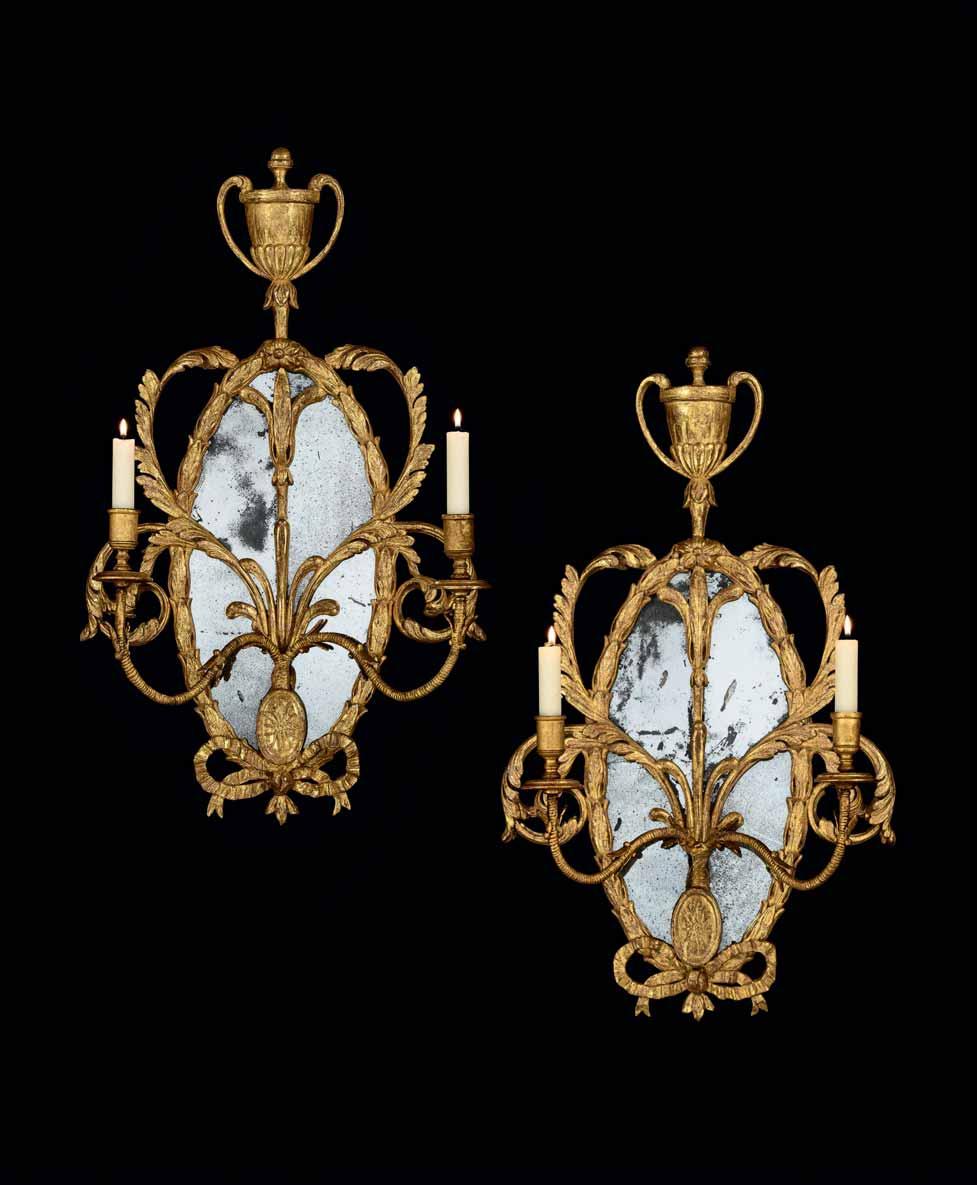
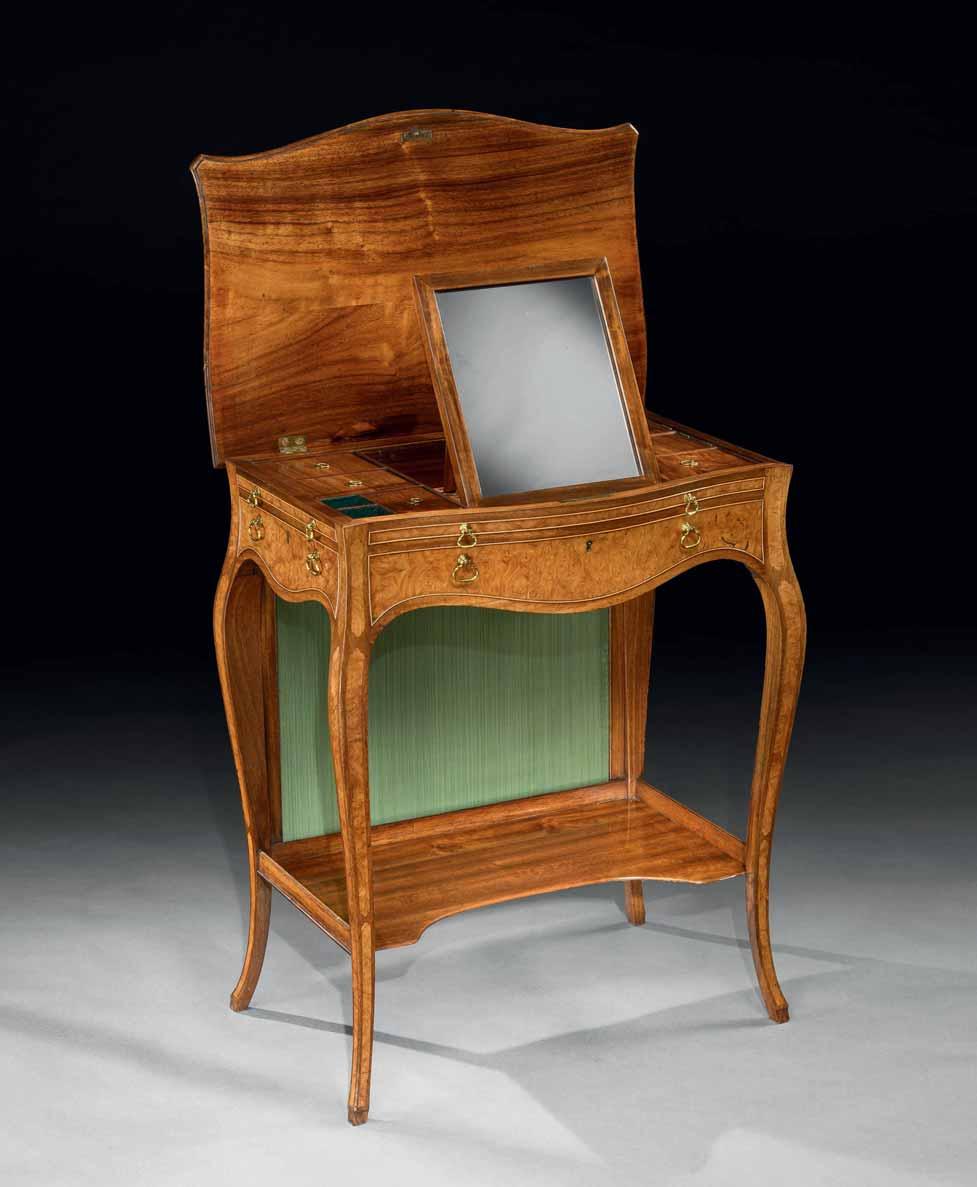
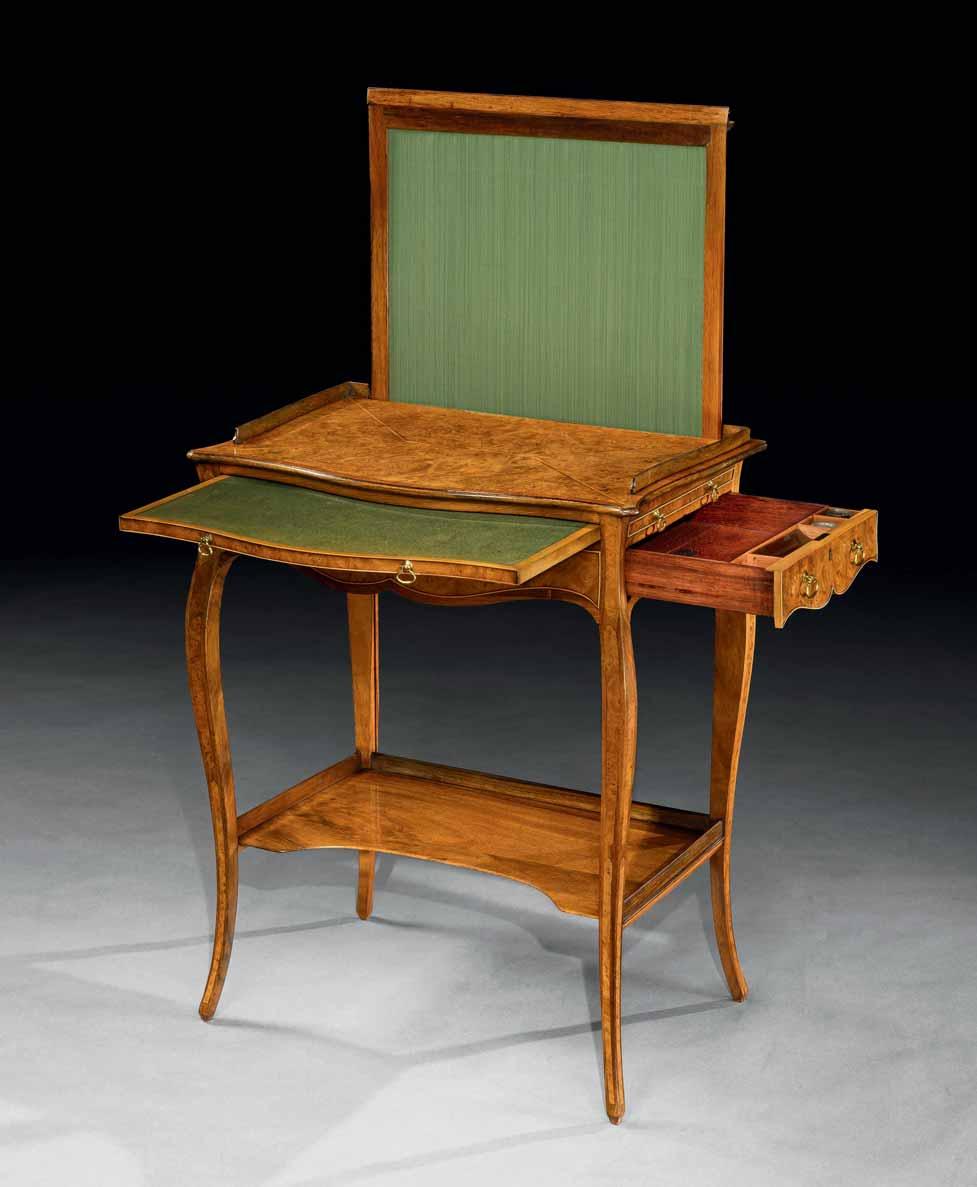
A GEORGE III PADAUK AND BURR ELM VENEERED DRESSING TABLE AND MATCHING WRITING TABLE ATTRIBUTED TO THOMAS CHIPPENDALE
Note: The tables retain their original brass Dutch axe handles.
English, circa 1765
Height: 30½ in; 77.5 cm
Width: 24¾ in; 63 cm
Depth: 15¾ in; 40 cm
Provenance:
Apter Fredericks Ltd., London, England; Private collection, London, England.
Literature:
Christopher Gilbert, The Life and Work of Thomas Chippendale, 1978, vol. I, pp. 159, 183, 230, 231 & 245; vol. II, p. 238, fig. 436; a lady’s writing table in tulipwood and rosewood from Nostell Priory.
The dressing table has a hinged top and is fitted out with compartments and lidded boxes under a mirror on ratchet easel. The fabric lined screen at the back is on a rising action.
The writing table – with a slightly different apron, but similarly veneered – is fitted with a baize-lined pull-out to the front. A drawer to the right-hand side is fitted with ink wells and various divisions for writing equipment.
Chippendale supplied this type of table in varying combinations of woods to many of his clients. Following his usual practice, each commission was unique either for the woods used or for the surface treatment (whether marquetry, japanned finish or simply left plain), but the overall outline remained the same.
Other London furniture-makers supplied similar versions, but the Chippendale model stands out for its refined design and superior manufacture.
Known commissions for which tables of this type are recorded are:
Sir Lawrence Dundas, for either Arlington Street, London, Aske Hall, Yorkshire, or Moor Park, Hertfordshire:
‘1764, May 18th, A Neat dressing Table of Black Rosewood with a folding Top and looking Glass boxes bottles &c £7 7s –’
Sir Rowland Winn, for Nostell Priory, Yorkshire, or his London residence:
‘1766, June 23rd, A Lady’s commode writing table of tulip and rosewood with a slider covered with Green Cloth. £5 14s –’
Sir Edward Knatchbull, at Mersham Le Hatch, Kent:
‘1768, June 9th, To a neat Black Rosewood Commode with a Slider & Glass & drawers with good Locks &c £8 = = ‘
‘1769, November 22nd, To a Commode dressing Table of Black rosewood to match [a cloths press [presumably ‘clothes press’? Or maybe a linen press?] mentioned earlier in the accounts] with dressing drawer and slider cover’d with Green Cloth Complete £9 10s=
To a neat small Commode Table of Black rosewood with drawers & Good locks & handles. £5 15s =’.
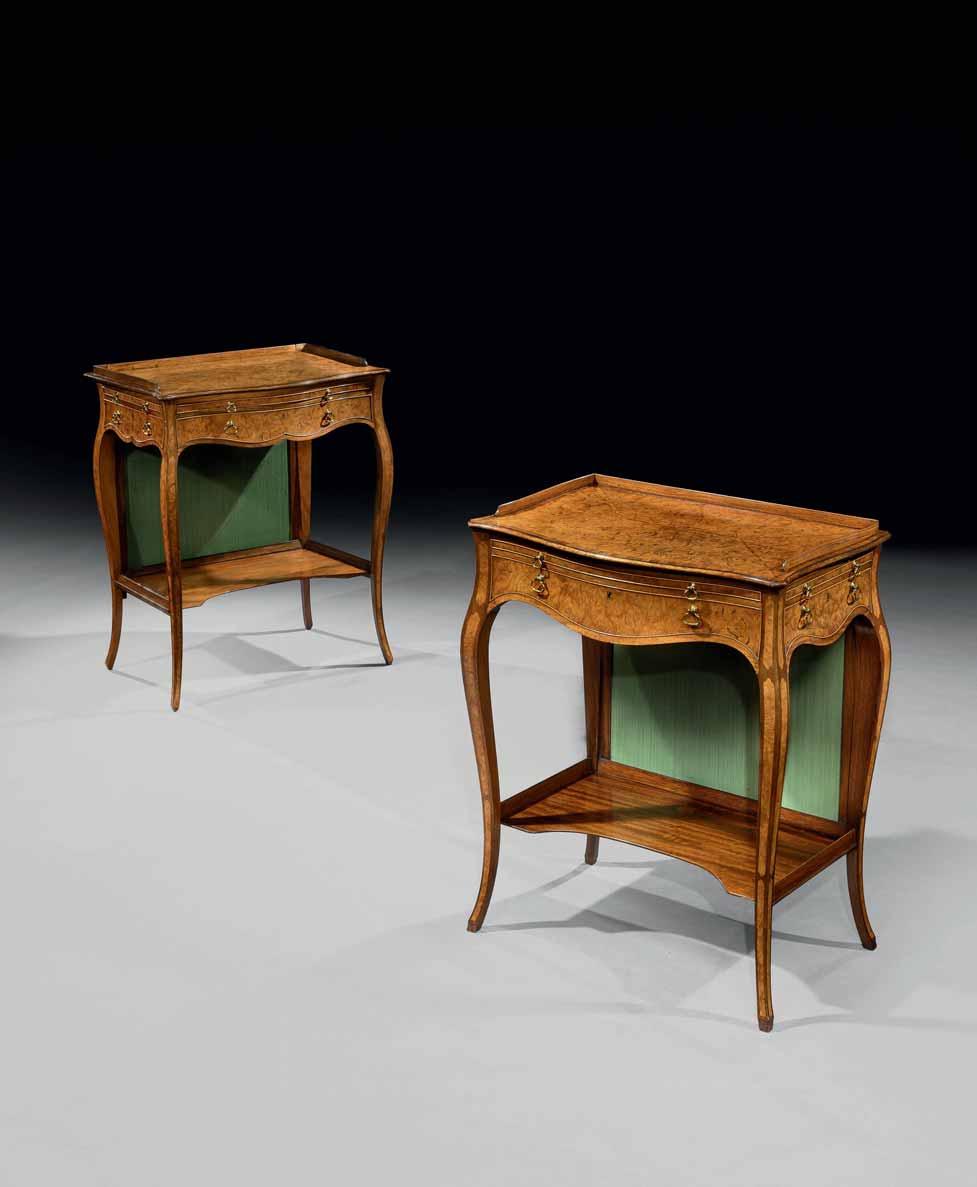
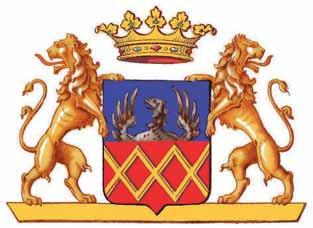
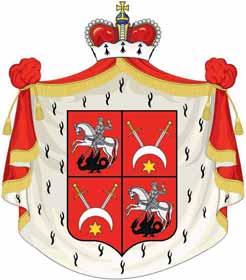
60
A PAIR OF ALEXANDER I POLYCHROME ENAMELLED CUT GLASS DECANTERS FROM THE IMPERIAL GLASSWORKS, ST. PETERSBURG
Note: The body of each decanter is enamelled with the combined Naryshkin and Czetwertynska family crests. The decanters retain their original stoppers, numbered 12 and 16 respectively. Russian, circa 1815
Height: 10½ in; 27 cm
Diameter: 5¼ in; 13 cm
Provenance:
Dmitry Lvovich Naryshkin and his wife Maria, née Czetwertynska, mistress to Emperor Alexander I; Private collection, USA.
Literature:
Paul Jokelson and Dena K. Tarshis, ‘Cameo Incrustation: The Great Sulphide Show’, exhibition catalogue, 1988, p. 23, no. 55.
Dena K. Tarshis, Objects of Fantasy: Glass Inclusions of the Nineteenth Century, 2001, p. 151, no. 84.
Christie’s, ‘Russian Works of Art’, sale catalogue, New York, 16 April 2012, lot 117.
Maria Czetwertynska was the mistress of Alexander I for nearly twenty years and bore several illegitimate children by him. A Polish princess in her own right, she married Dmitry Lvovich Naryshkin, who belonged to one of the most influential and important aristocratic families in the history of imperial Russia. The decanters were part of a lavish banquet service made in the Imperial Glassworks in St. Petersburg.
The exceptional quality of the heavy glass and deep cutting is further enhanced by the execution of the crests, which are engraved and polychrome enamelled with gold on the reverse side of a glass disk. The disk was then fused to the outside of the decanter body, leaving a smooth finish inside and out.
A single decanter from the same set was sold at auction in 2010 for $32,500.
The Czetwertynska family crest
The Naryshkin family crest
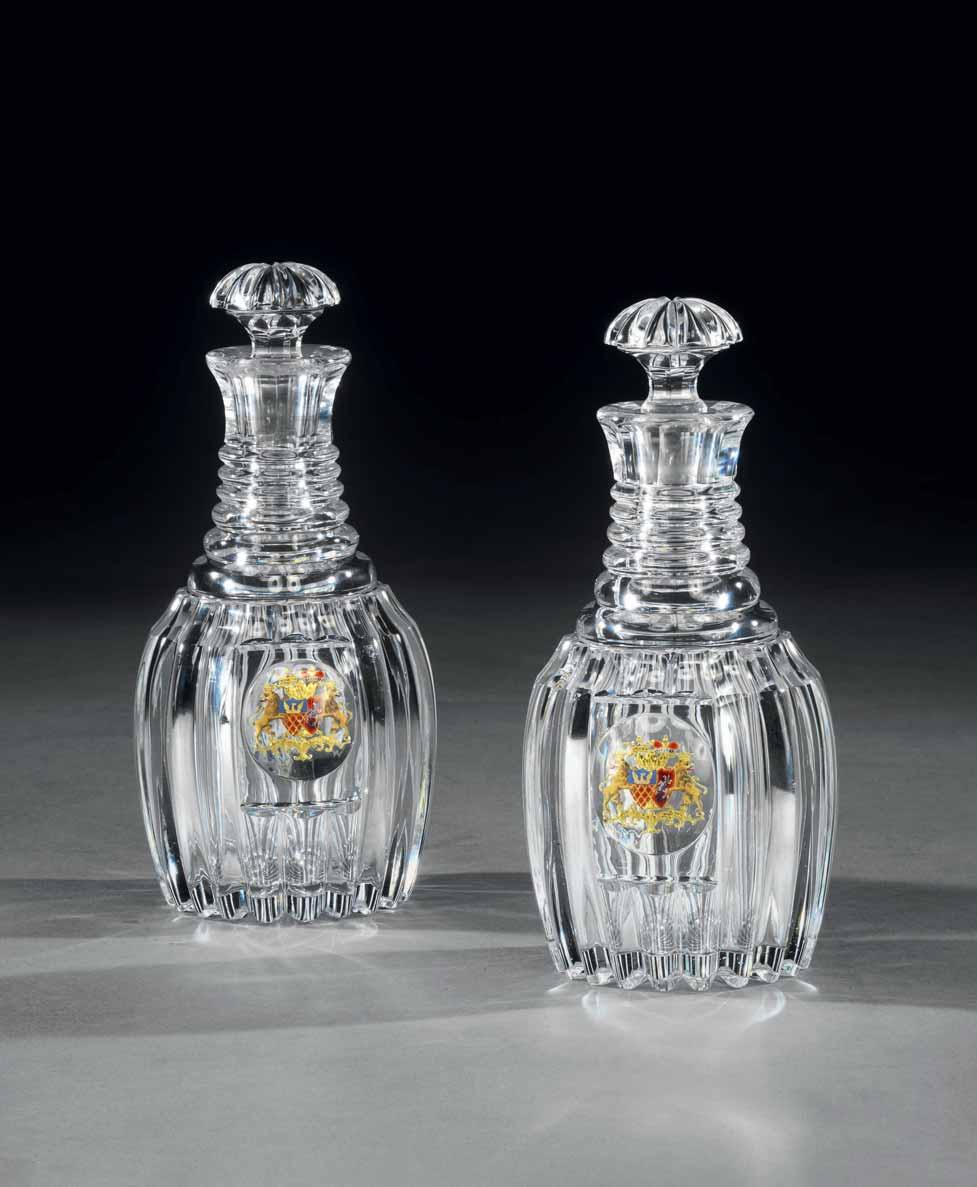
THE
NARYSHKIN CZETWERTYNSKA DECANTERS
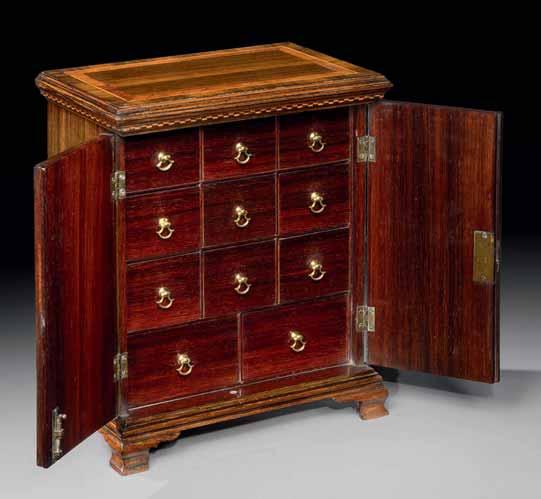
A GEORGE II ROSEWOOD AND PADAUK MINIATURE COLLECTOR’S CABINET
Note: The cabinet is in original condition and retains all its original brass handles and locks. The interior is fitted with a bank of eleven drawers of various sizes.
English, circa 1750
Height: 13 in; 33 cm
Width: 11 in; 28 cm
Depth: 7¼ in; 18.5 cm
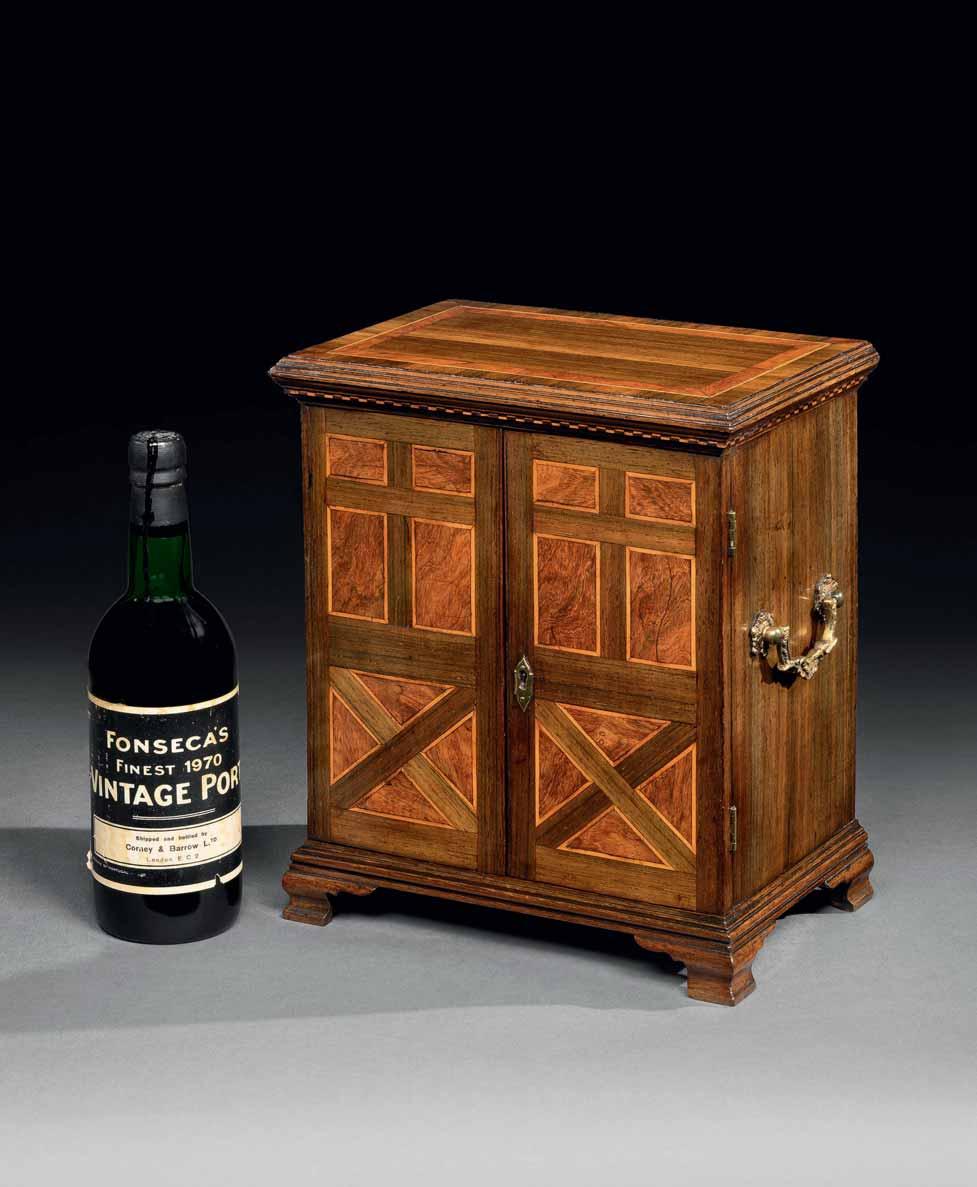
THE EARNSHILL PIER MIRROR
62
A GEORGE II GILTWOOD BORDER GLASS MIRROR ATTRIBUTED TO JOHN LINNELL
Note: The mirror retains most of its original mirror plates and has been re-gilded.
English, circa 1755
Height: 59¼ in; 150.5 cm
Width: 30¾ in; 78 cm
Provenance: Commissioned by Henry Combe for Earnshill, Somerset, England; Hyde Park Antiques Ltd., New York, USA; Private collection, New York, USA.
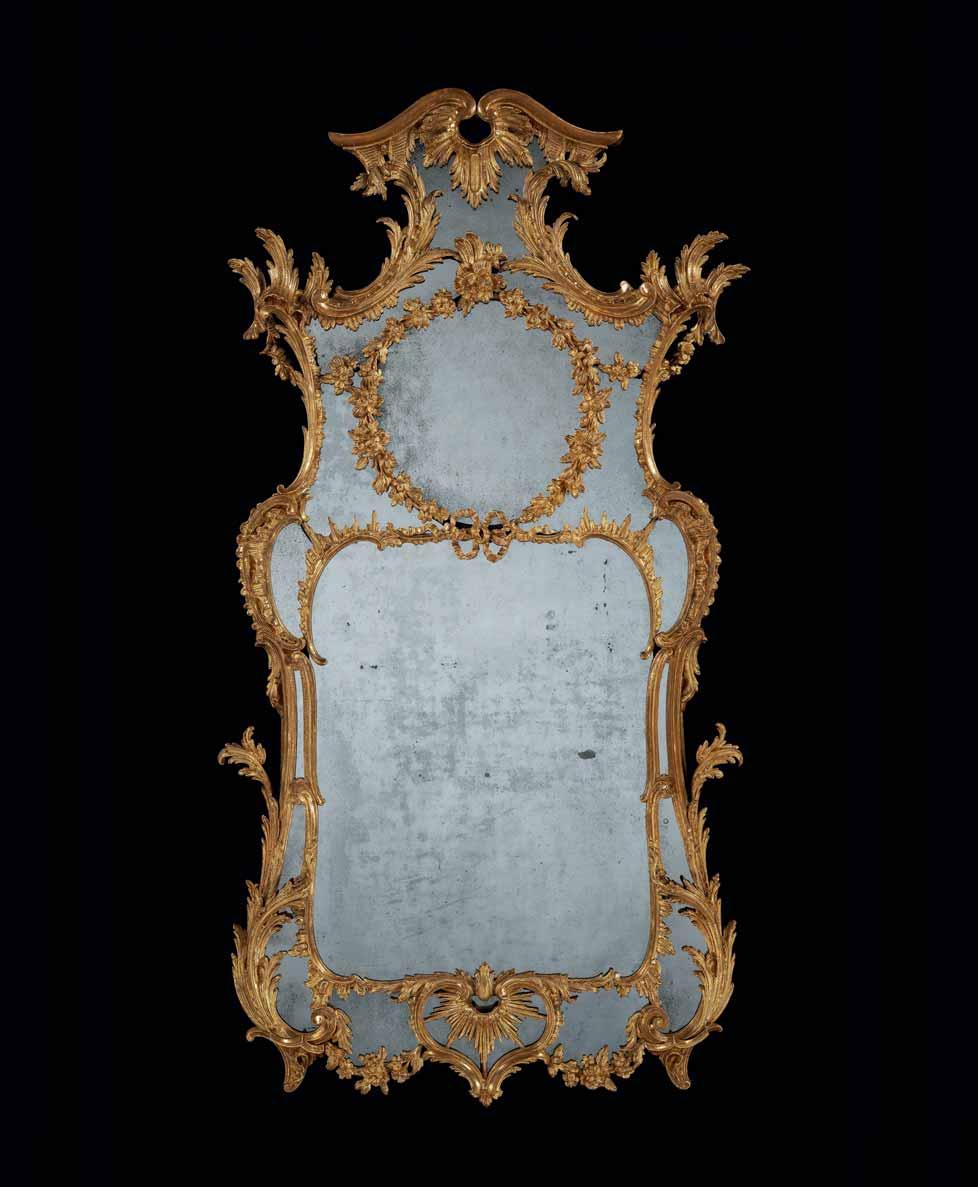
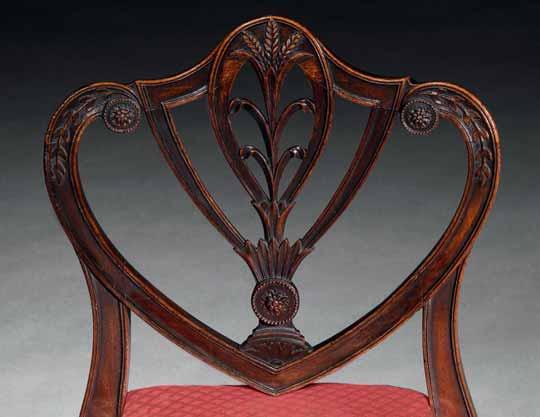
A PAIR OF GEORGE III MAHOGANY WINDOW SEATS
Note: Both window seats are stamped RE on the underside of a seat rail, and each has a plastic Norman Adams label nailed to the inside of one of the rails. The cane seats were restored in the 1950s. The colour and patina are outstanding.
English, circa 1785
Height: 29½ in; 75 cm
Height of seat: 18¼ in; 46.5 cm
Width: 43¼ in; 110 cm
Depth: 15 in; 38 cm
Provenance:
The Harvey family, Ickwell Bury, Bedfordshire, England; Norman Adams Ltd., London, England; Private collection, England; Norman Adams Ltd., London, England.
Exhibited: The Grosvenor House Art and Antiques Fair, London, 2000; with Norman Adams Ltd.
Illustrated: Christopher Claxton Stevens and Stewart Whittington, 18th Century English Furniture: The Norman Adams Collection, 1983, p. 82.
Grosvenor House Art and Antiques Fair handbook, London, 2000, p. 97; with Norman Adams Ltd. Connoisseur, June 2002, no page no.; advertisement with Norman Adams Ltd.
Literature: Christopher Claxton Stevens, ‘The Harvey family suite’, Regional Furniture Journal, vol. XII, 1998, pp. 155–9.
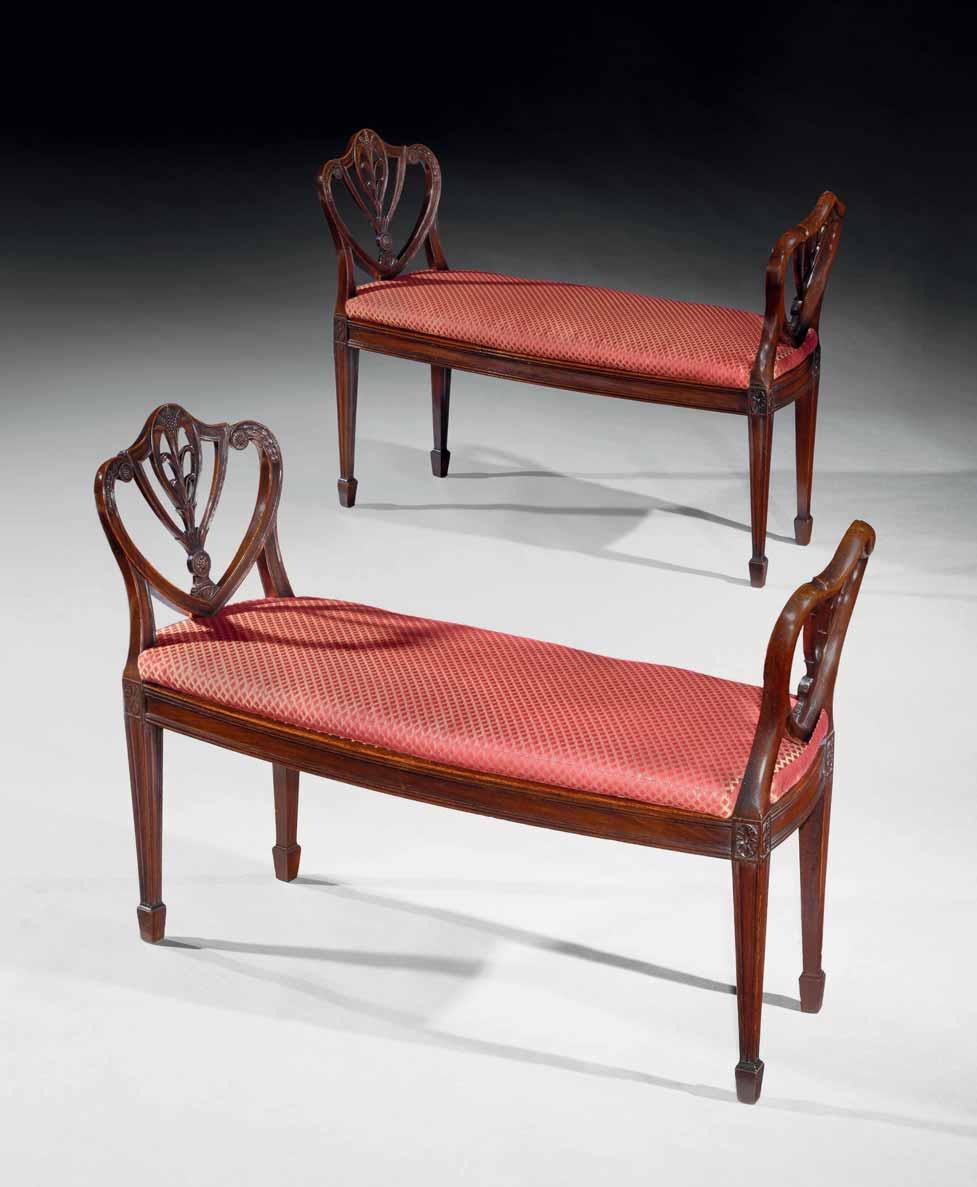
THE HARVEY WINDOW SEATS
64
THE JOHN PAUL GETTY CONSOLE TABLE
A GEORGE II GREY PAINTED CONSOLE TABLE
English, circa 1735
Height: 34 in; 86.5 cm
Width: 36 in; 91.5 cm
Depth: 22 in; 56 cm
65 THE GLEMHAM HALL CHAIRS
A PAIR OF GEORGE II MAHOGANY LIBRARY ARMCHAIRS
English, circa 1755
Height: 40¼ in; 103 cm
Height of seat: 16 in; 40.5 cm
Width: 28½ in; 72.5 cm
Depth: 27¾ in; 70.5 cm
66
A PAIR OF GEORGE III GILTWOOD WALL LIGHTS
English, circa 1790
Height: 34¼ in; 87 cm
Width: 20 in; 51 cm
Depth: 6¾ in; 17.5 cm
67
A GEORGE III PAINTED CARTON PIERRE OVAL MIRROR
English, circa 1780
Height: 48 in; 122 cm
Width: 21½ in; 54.5 cm
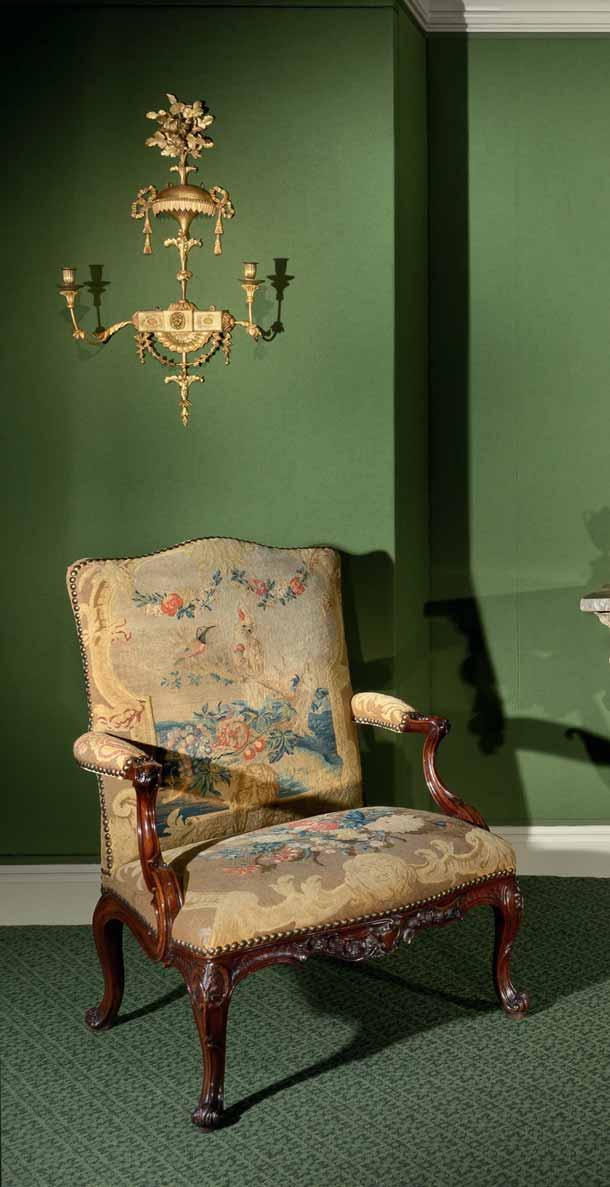
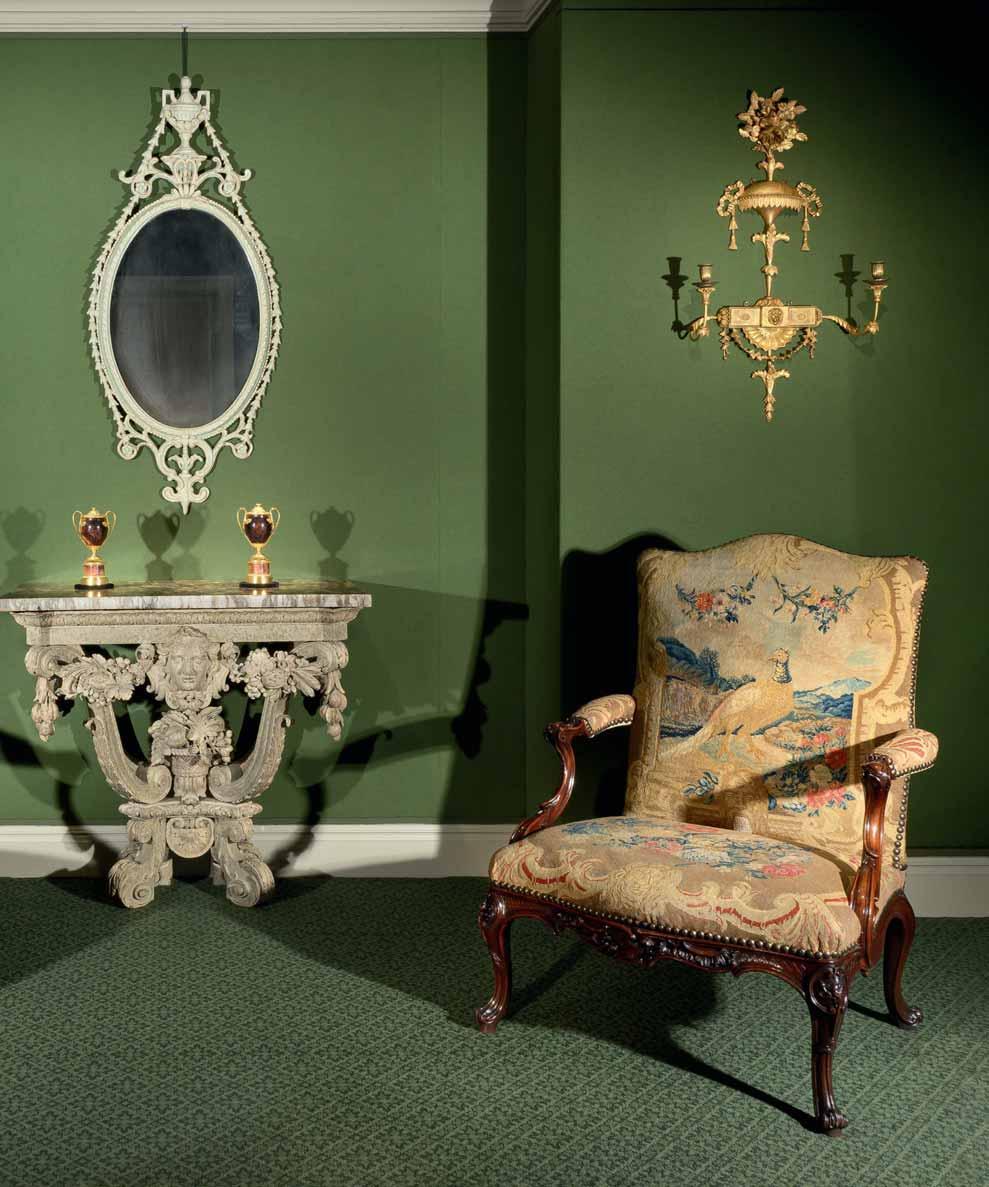
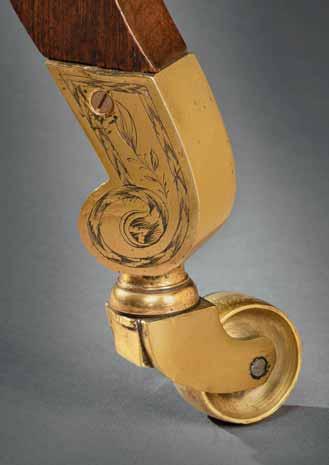
Note: The side rail to one chair bears an illegible branding mark. The engraved castor boxes are original, with some replaced wheels.
English, circa 1815
Height: 34 in; 86.5 cm
Height of seat: 17½ in; 44.5 cm
Width: 28½ in; 72.5 cm
Depth: 23 in; 58.5 cm
Provenance: Private collection, England.
A PAIR OF REGENCY ROSEWOOD KLISMOS ARMCHAIRS
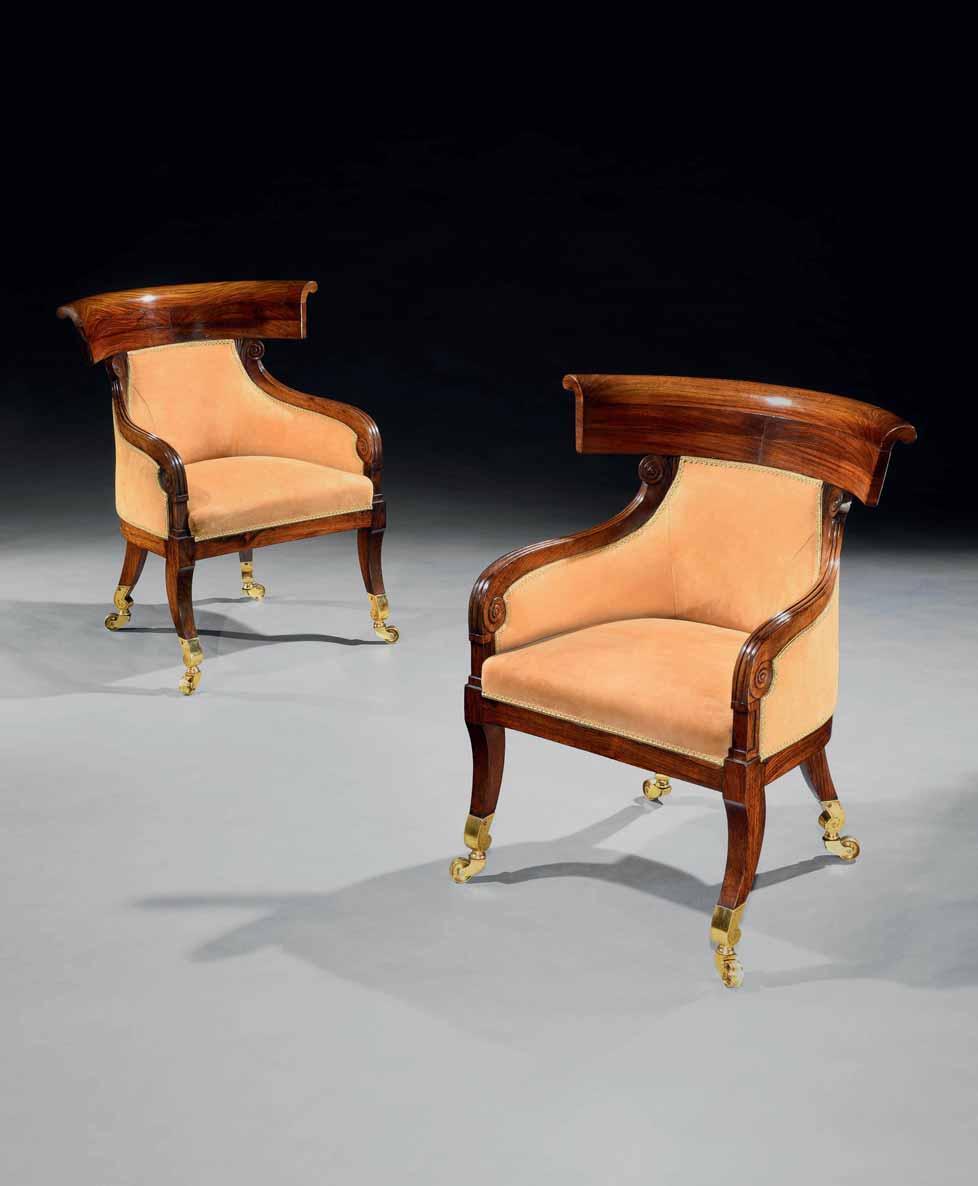
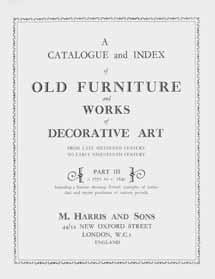
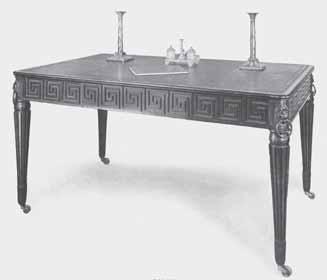
The writing table with M. Harris & Sons in 1936
69
A REGENCY MAHOGANY WRITING TABLE
Note: The table is fitted with three drawers to each side and retains its original lion mask mounts and castors.
English, circa 1815
Height: 2 ft 6½ in; 77.5 cm
Knee height: 2 ft 1¼ in; 64 cm
Width: 5 ft; 152.5 cm
Depth: 2 ft 11¼ in; 89.5 cm
Provenance:
Lieutenant Colonel Sidney G. Goldschmidt, Kerfield House, Ollerton, Cheshire, England; M. Harris & Sons, London, England; William ‘Billy’ Guinness, England.
Illustrated:
M. Harris & Sons, ‘A Catalogue and Index of Old Furniture and Works of Decorative Art’, circa 1930s, Part III 1770–1840, p. 406.
A very similar writing table was formerly at Osterley Park, Middlesex.
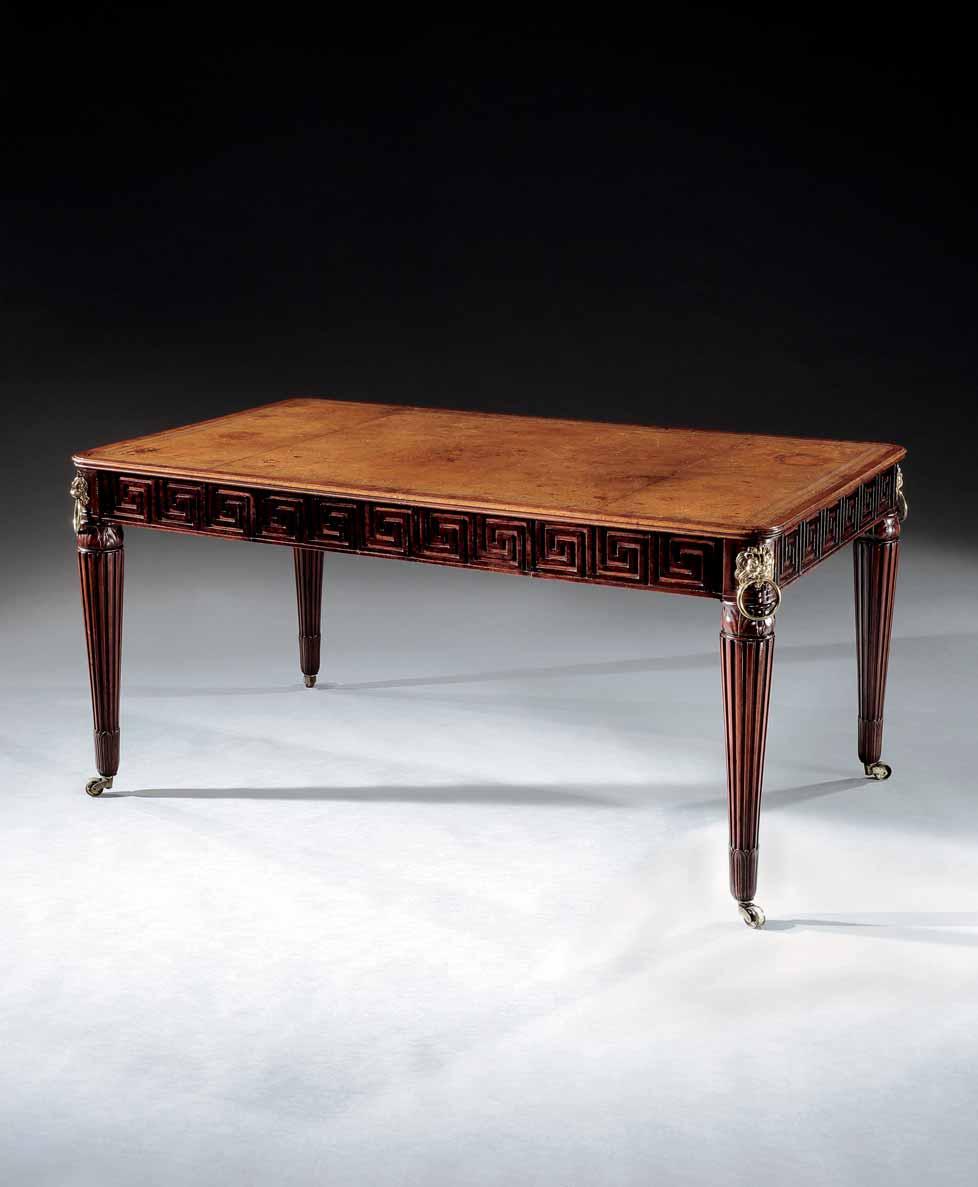
THE KERFIELD HOUSE WRITING TABLE
A GEORGE III MAHOGANY BERGERE ARMCHAIR
Note: The frame bears a plastic Norman Adams label pinned to the inside of a side rail.
English, circa 1780
Height: 35½ in; 90.5 cm
Height of seat: 17½ in; 44.5 cm
Width: 27¾ in; 70.5 cm
Depth: 29¼ in; 74.5 cm
Provenance: Norman Adams Ltd., London, England; Private collection, England.
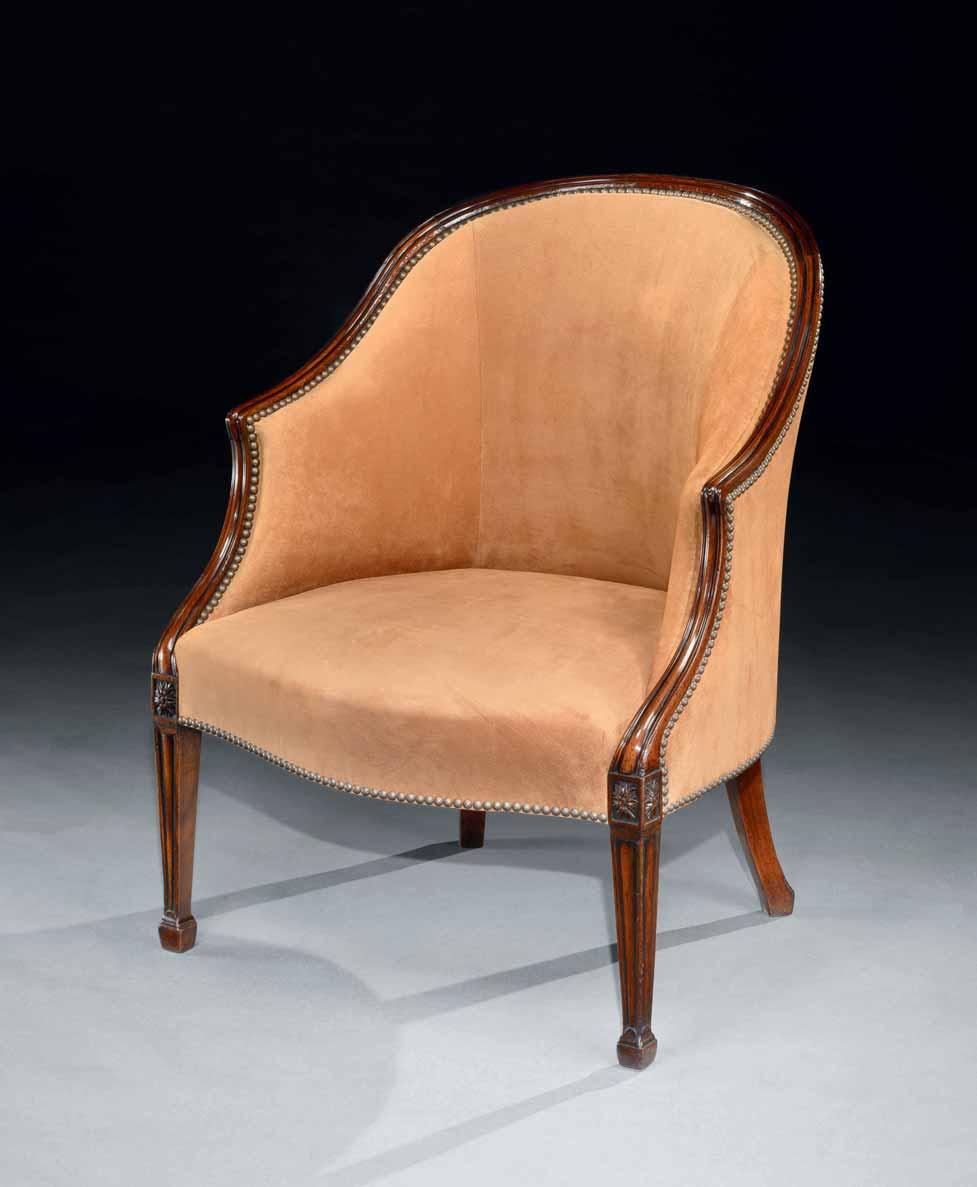
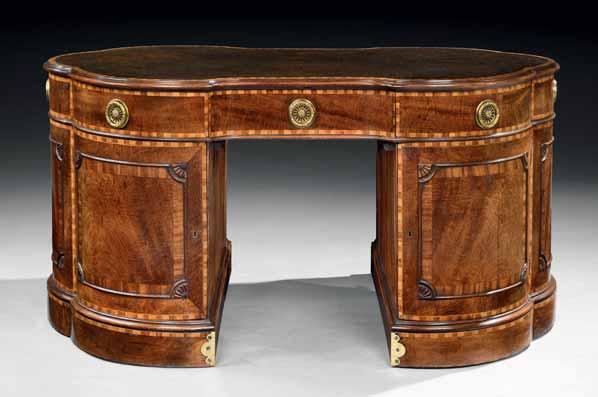
A GEORGE III MAHOGANY SERPENTINE LIBRARY TABLE ATTRIBUTED TO INCE & MAYHEW
Note: The library table retains its original leather insert and circular ormolu handles. The locks are also original and were specially made to fit with the position of the handles. Being flush fitted, the locks follow the shape of the drawer front, and some are therefore curved at the back. The pull-out writing slope fitted on one side of the kneehole is original. The kneehole retains the original and ingenious brass inlaid corners to the plinth base, which have protected the edges from damage.
English, circa 1770
Height: 2 ft 8¼ in; 82 cm
Width: 5 ft 6 in; 167.5 cm
Depth: 3 ft 5¾ in; 106 cm
Kneehole:
Height (on side with fitted writing slope): 23¾ in; 60 cm
Height (on side without slope): 25 in; 63.5 cm
Width: 21½ in; 54.5 cm
Literature: Margaret Jourdain, English Decoration and Furniture of the Later 18th Century, 1760–1820, 1922, p. 258, fig. 421.
H. H. Mulliner, The Decorative Arts in England, 1660–1780, 1923, fig. 33.
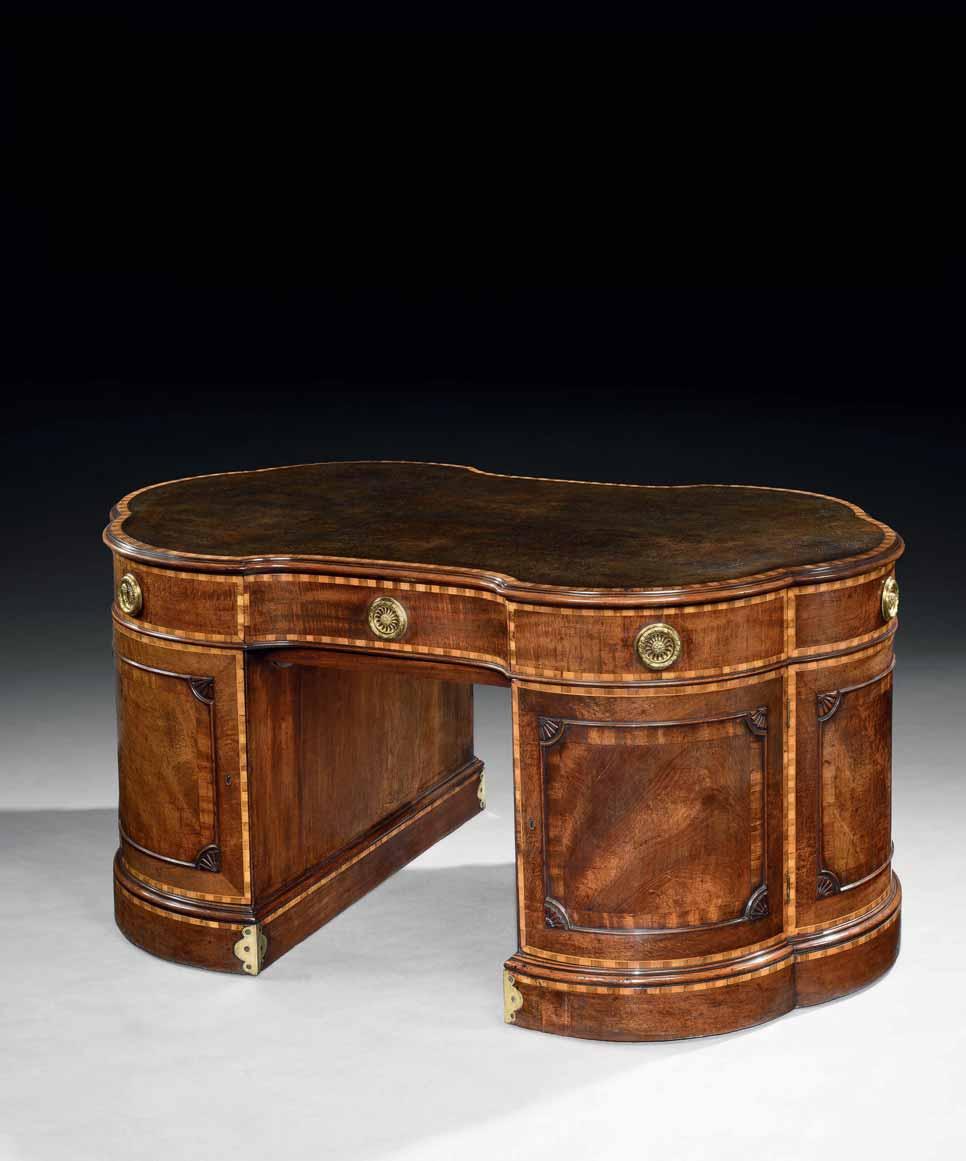
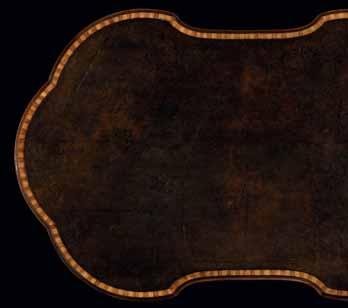
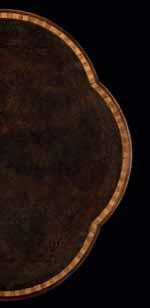
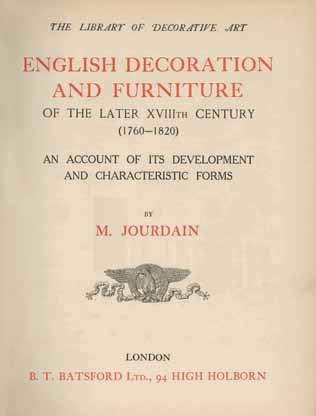
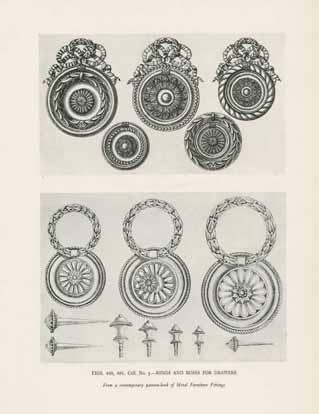
Designs from a pattern book of metal furniture fittings, illustrated in English Decoration and Furniture of the Later 18th Century
The library table is fitted with three frieze drawers to each side above shaped pedestal doors. Three of the doors reveal a single adjustable shelf, while the fourth pedestal cupboard is fitted with pigeonholes.
The unusual shape, exceptional craftsmanship and use of unusual contrasting veneers like lignum vitae, as well as the distinctive handle resembling a marigold flower, are all typical of the output of the London cabinet-makers Ince & Mayhew. A virtually identical example, without doubt by the same maker, was formerly in the celebrated collection of H. H. Mulliner and is illustrated in his book on the collection.
The design drawing for the striking handles with central escutcheon is illustrated in Margaret Jourdain’s English Decoration and Furniture of the Later 18th Century
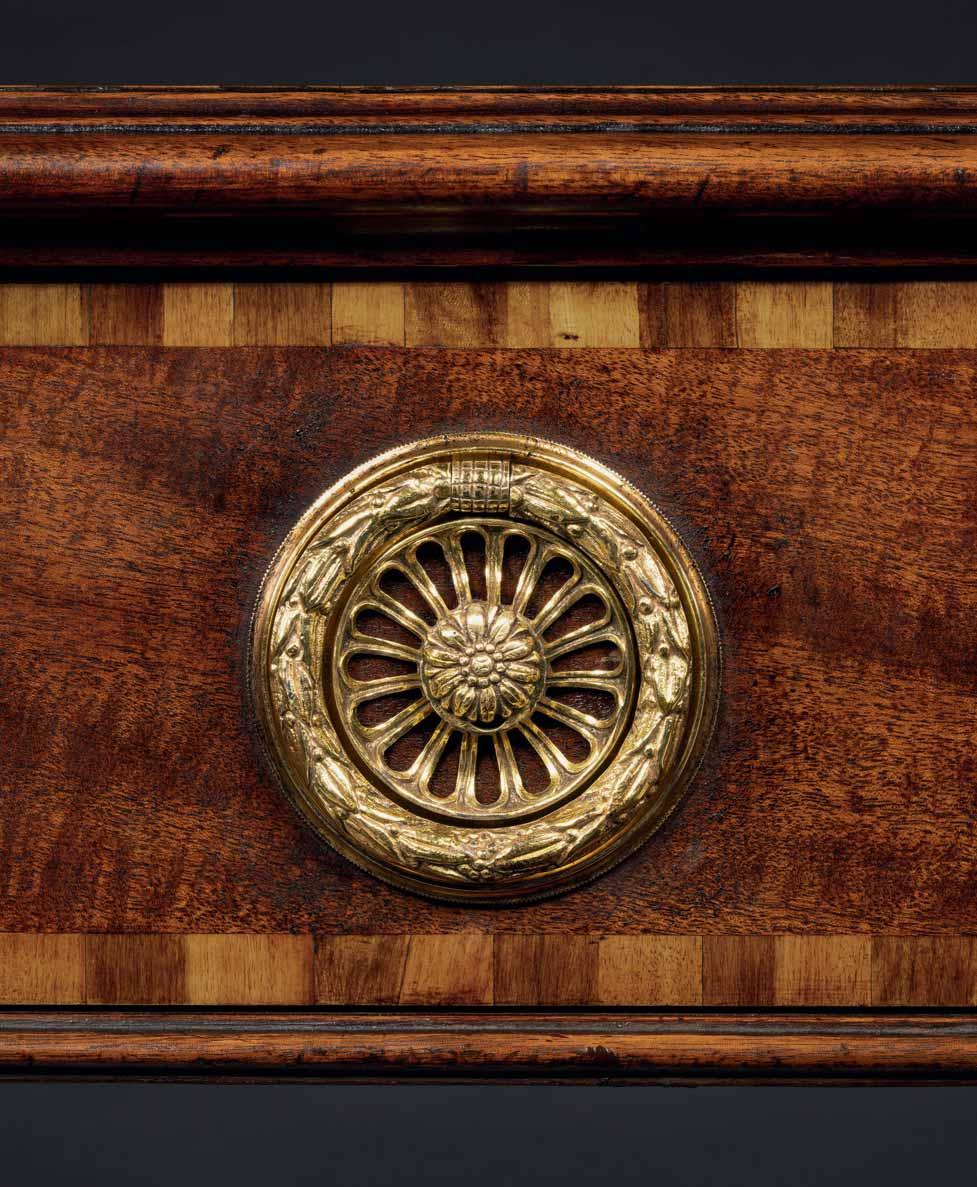
A GEORGE II MAHOGANY CORNER CHAIR IN THE MANNER OF GILES GRENDEY
Note: The chair has acquired a beautiful mellow patina.
The chair: English, circa 1735
The needlework: French, circa 1720
Height: 32¾ in; 83 cm
Height of seat: 18 in; 46 cm
Width: 30 in; 76.5 cm
Depth: 26 in; 66 cm
Provenance: Michael Lipitch Ltd., London, England; Private collection, Bedfordshire, England.
In 1733 the British prime minister, Robert Walpole, took steps to support the economy of the British colonies by abolishing all taxes on mahogany imported from Jamaica, at the same time increasing import taxes on walnut imported from France. This brought about a drastic change in furniture construction in Britain.
This chair is as a result made not of walnut but of the much heavier and denser mahogany from Jamaica. The carved details are rare and reminiscent of walnut features. Sometimes one front leg only is carved, but a chair with three carved legs is particularly unusual. Later mahogany chairs became plainer in design.
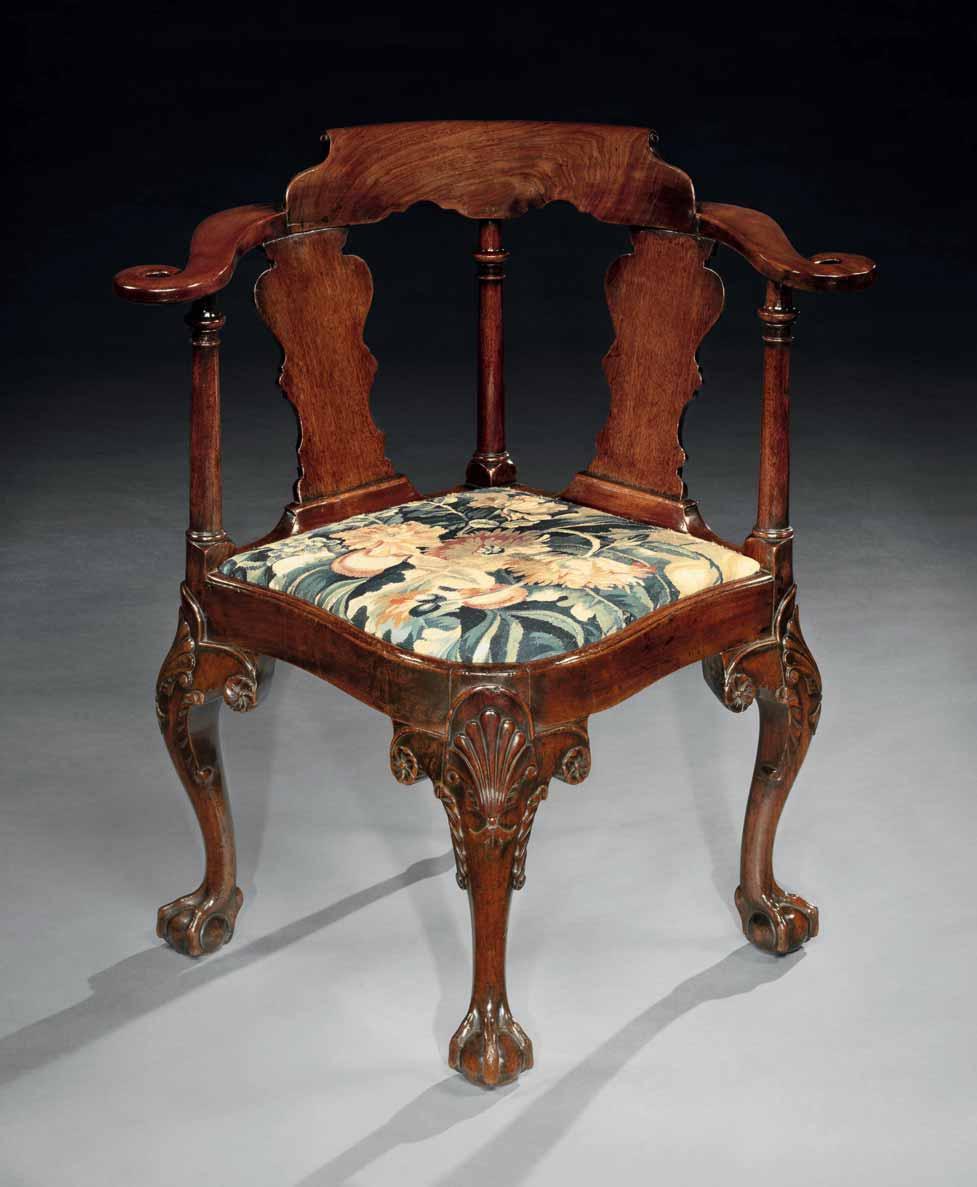
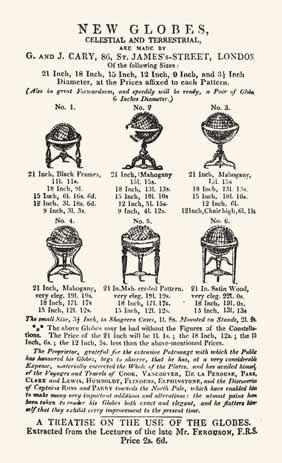
Advertisement and price list for globes manufactured by W. Cary
A PAIR OF GEORGE III 21 INCH GLOBES BY CARY, RETAILED BY P. & G. DOLLOND, ON MAHOGANY STANDS WITH REEDED LEGS
Note: The globes retain their original compasses including needles and papers.
English, circa 1800
Height: 47½ in; 120.5 cm
Diameter of globe: 21 in; 53 cm
Diameter of horizon ring: 27½ in; 70 cm
Provenance: Michael Hughes Ltd., London, England.
Illustrated: ‘88 Fulham Road Fine Antique Furniture’, catalogue, 2012, pp. 4–5.
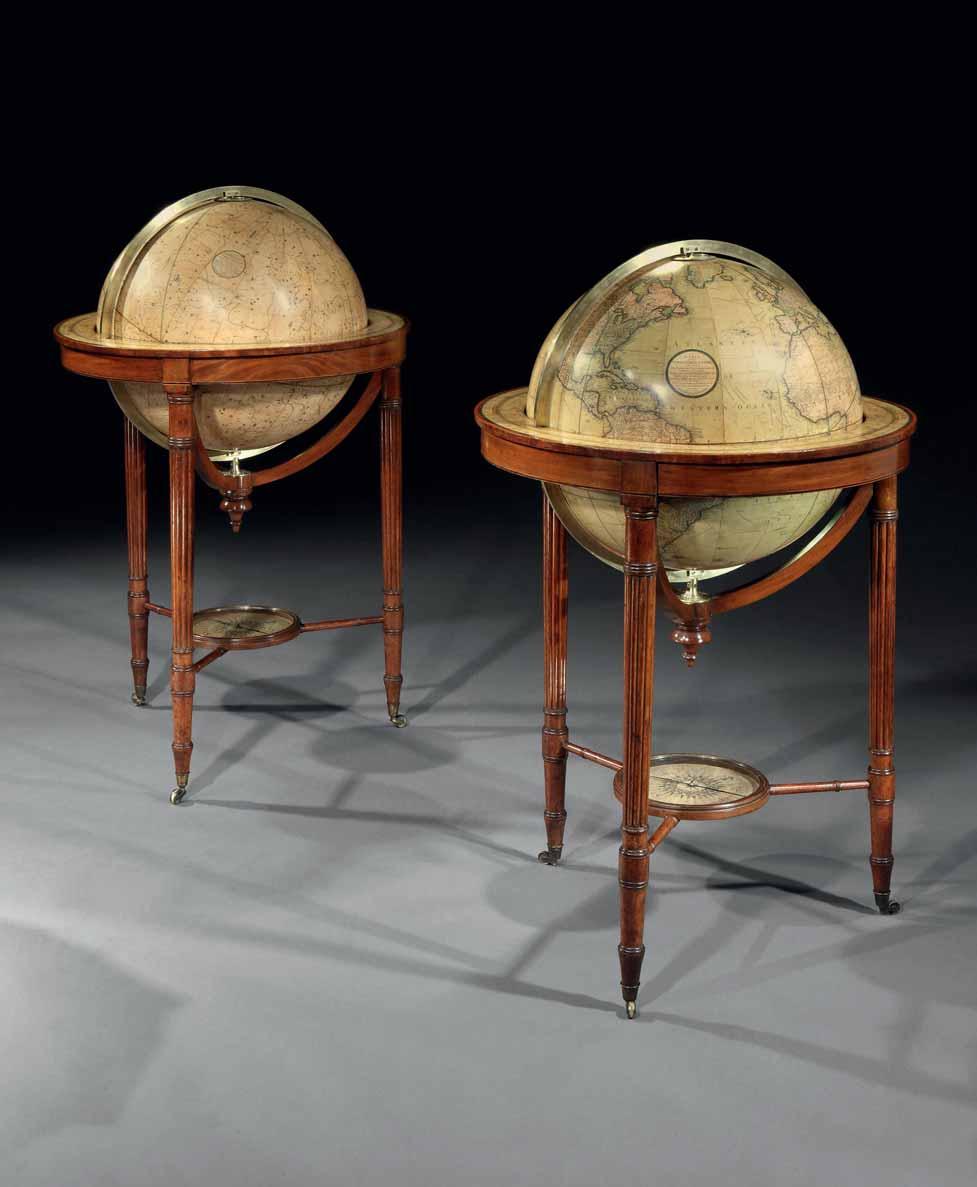
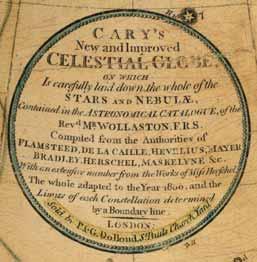
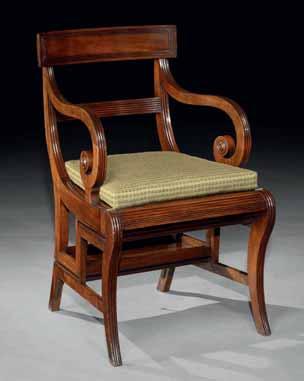

Drawing for a metamorphic library chair published in Ackermann’s Repository of Arts, 1811
74
A REGENCY MAHOGANY METAMORPHIC LIBRARY ARMCHAIR
BY MORGAN & SANDERS
Note: The red morocco leather inserts and the caned seat panel are of later date. English, circa 1811
As library steps:
Height: 29 in; 73 cm
Width: 22 in; 56 cm
Depth: 42¾ in; 108.5 cm
As an armchair:
Height: 36 in; 91.5 cm
Height of seat: 20 in; 51 cm
Width: 22 in; 56 cm
Depth: 25 in; 63.5 cm
Provenance: Private collection, England.
Literature: Rudolph Ackermann, Repository of Arts, vol. 1, July 1811, pl. 29. Ralph Edwards, The Shorter Dictionary of English Furniture, 1964, p. 341, fig. 11; an almost identical model from the same workshop.
Furniture innovations and metamorphic furniture especially were extremely popular at the beginning of the 19th century. Morgan & Sanders, London furniture-makers with a Royal warrant from the Prince of Wales, were at the forefront of fashion. Their patented design for a metamorphic library chair was published by Rudolph Ackermann in his hugely influential periodical, Repository of Arts, in July 1811.
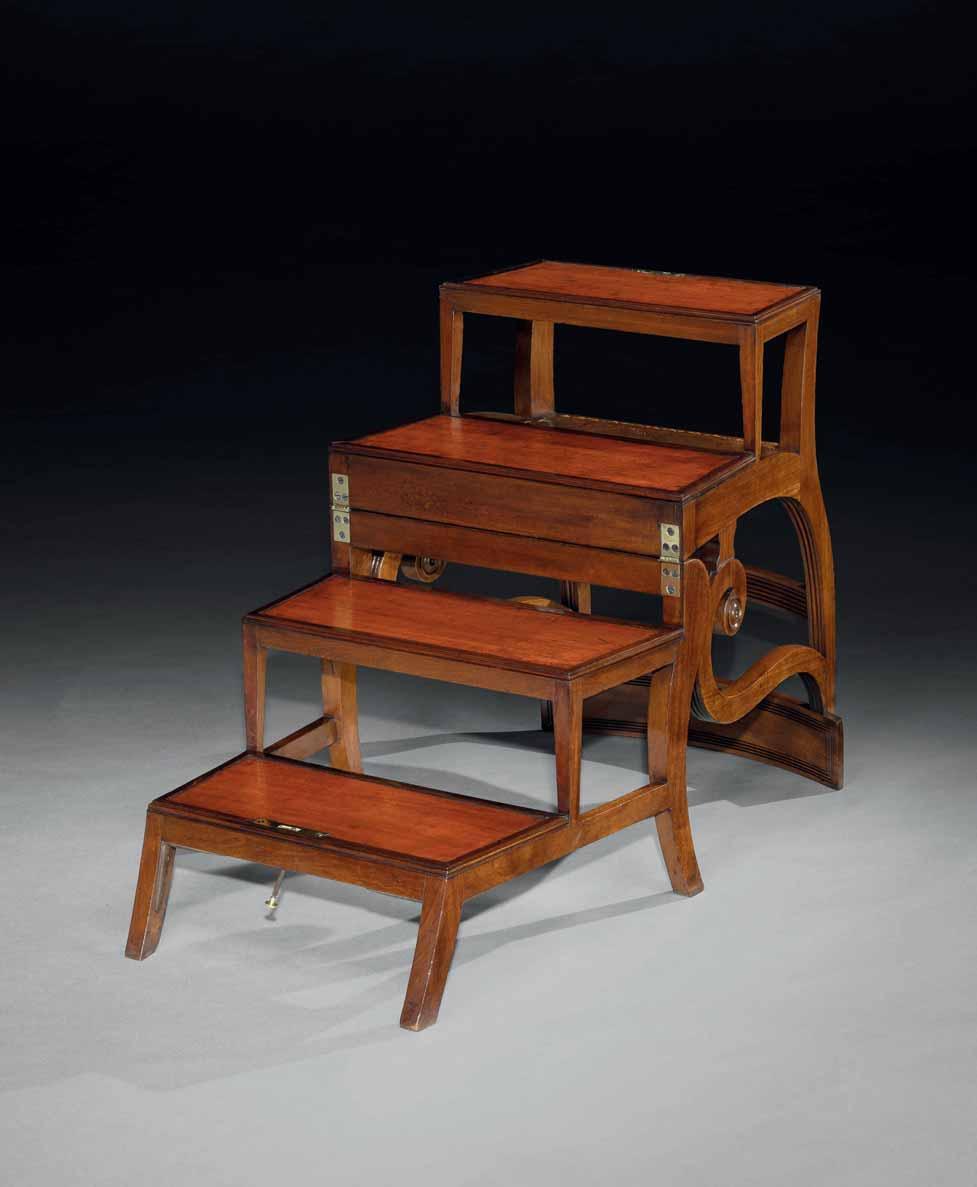
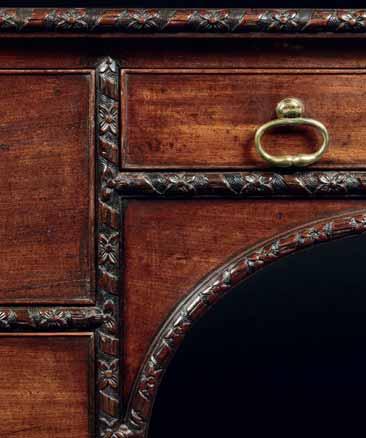
A GEORGE II MAHOGANY LIBRARY TABLE ATTRIBUTED TO WILLIAM HALLETT
Note: The library table retains its original gold tooled morocco leather insert, all the original locks and lifting handles and virtually all the original drawer handles, with two replacements. The concealed castors are of later date. The table has acquired outstanding colour and patina.
English, circa 1740
Height: 2 ft 7 in; 78.5 cm
Width: 5 ft ¾ in; 154.5 cm
Depth: 2 ft 11¾ in; 91 cm
Kneehole:
Height: 24½ in; 62.5 cm
Width: 19¾ in; 50 cm
Provenance: Private collection, USA.
This early type of pedestal desk or library table with its arched kneehole recess follows William Kent’s architectural style in furniture. Hallett supplied a very similar writing table to Charles Ingram, 9th Viscount of Irvine, (1727–1778) for either for his London home or Temple Newsam, Yorkshire. Further tables of this type were supplied to Badminton House, Gloucestershire, and Cannon Hall, Yorkshire.
The table has the same drawer formation on both sides. It is constructed as one piece: later versions were made in three sections for ease of transport and were then assembled at their destination.
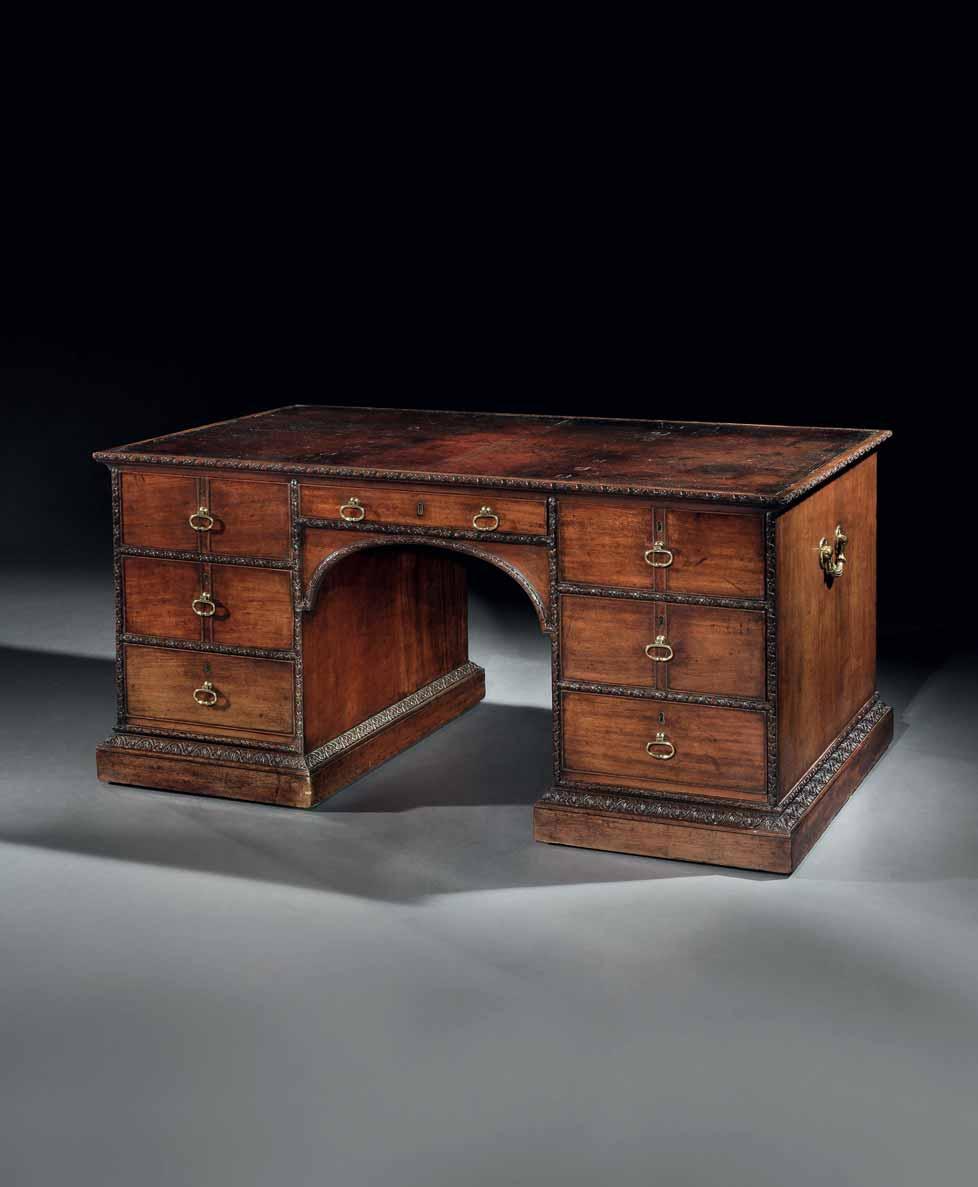
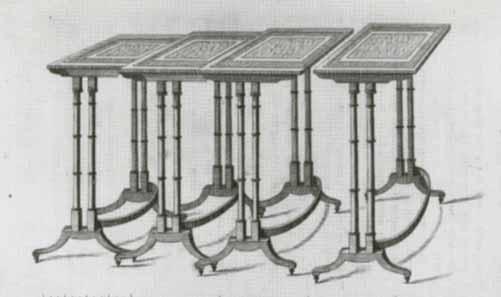
Note: The rosewood has acquired a beautifully faded colour and patina.
English, circa 1805
The largest of the four: Height: 28¾ in; 73 cm
Width: 18¼ in; 46.5 cm
Depth: 12¼ in; 31 cm
Provenance: Charles Lumb & Sons Ltd., Harrogate, Yorkshire, England; Private collection, London, England.
A NEST OF FOUR GEORGE III BRASS INLAID ROSEWOOD OCCASIONAL TABLES
A drawing for a set of quartetto tables in Sheraton’s The Cabinet Dictionary, 1803
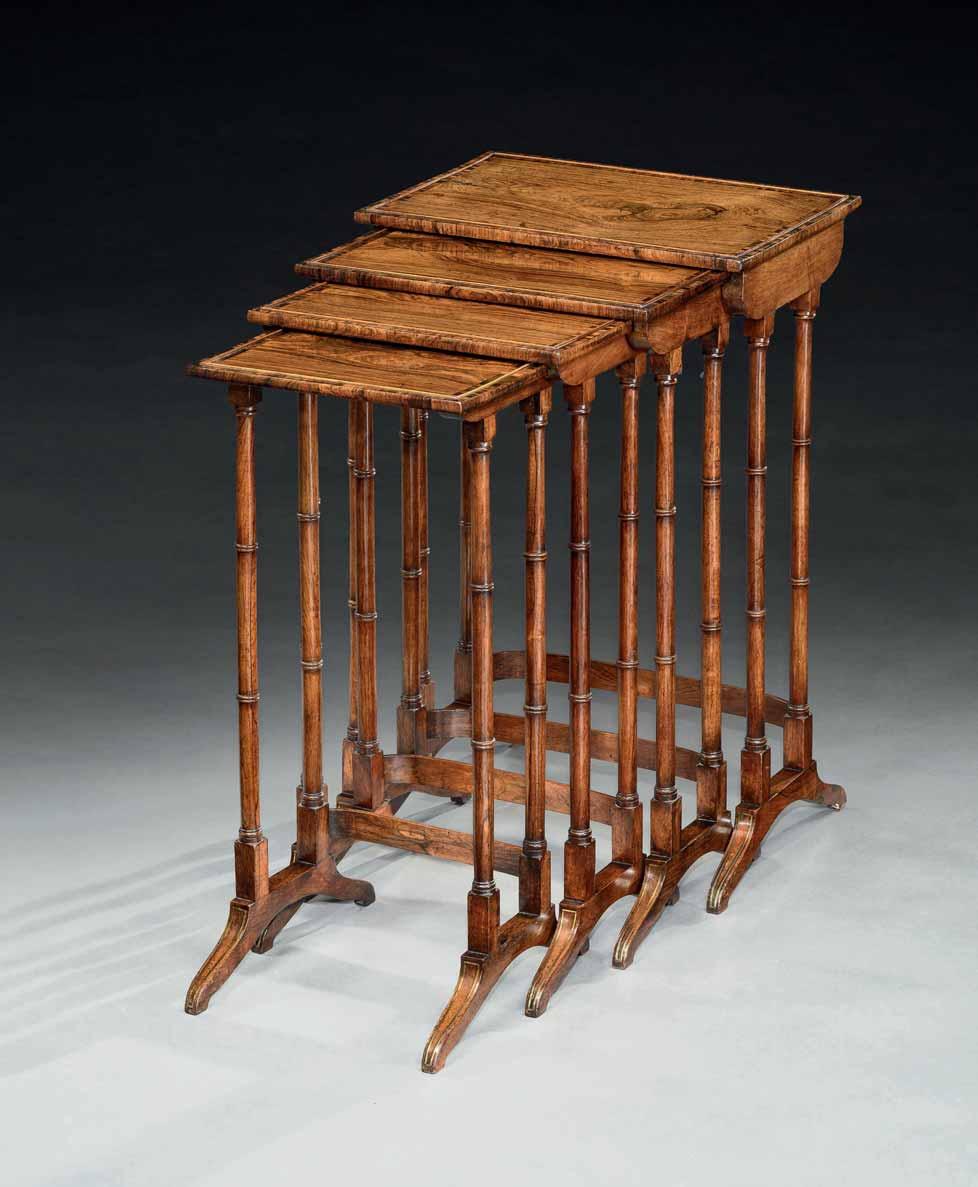
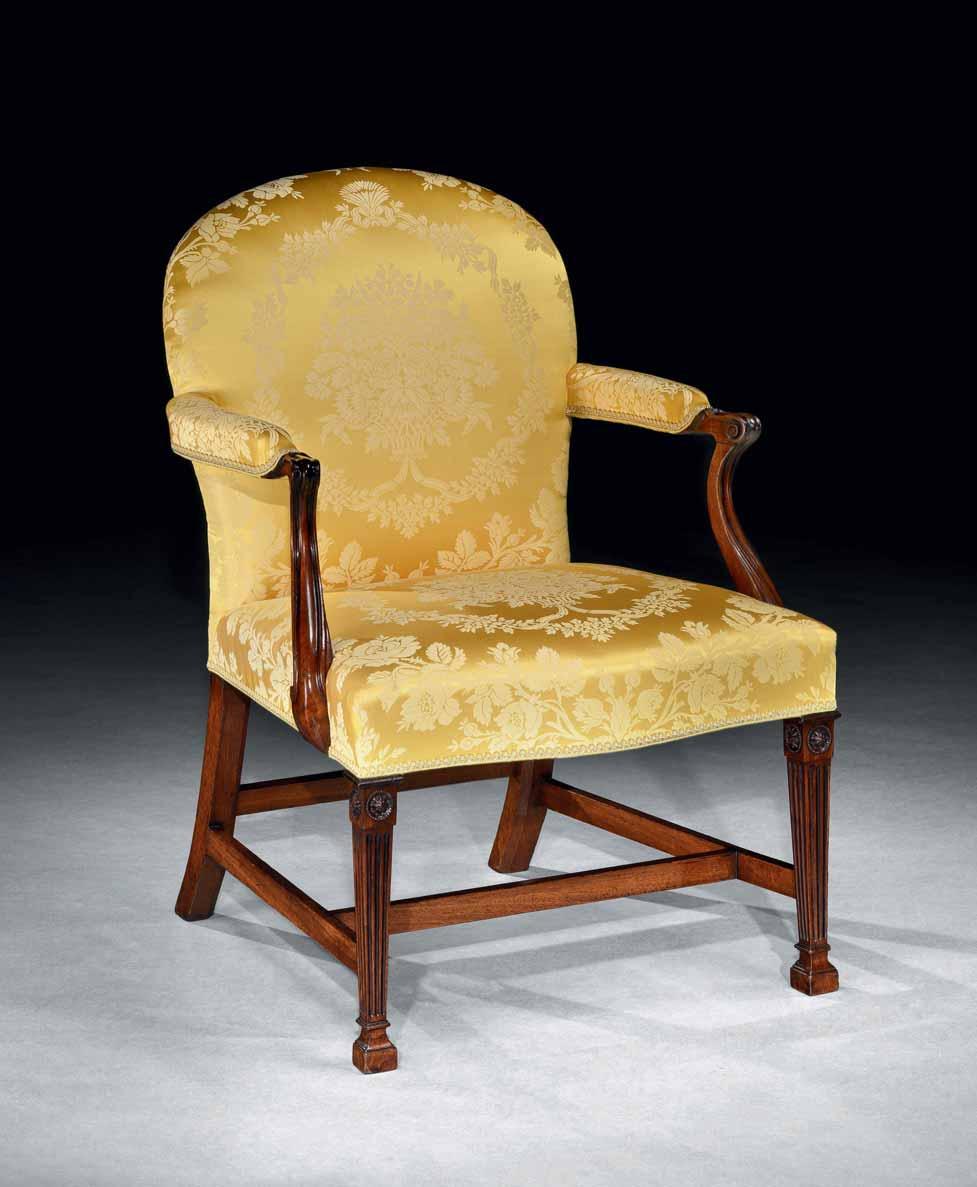
A PAIR OF GEORGE III MAHOGANY ARMCHAIRS ATTRIBUTED TO THOMAS CHIPPENDALE
English, circa 1780
Height: 36 in; 91.5 cm
Height of seat: 18 in; 45.5 cm
Width: 24¾ in; 63 cm
Depth: 28 in; 71 cm
Provenance: Mallett & Son Ltd., London, England; Private collection, England.
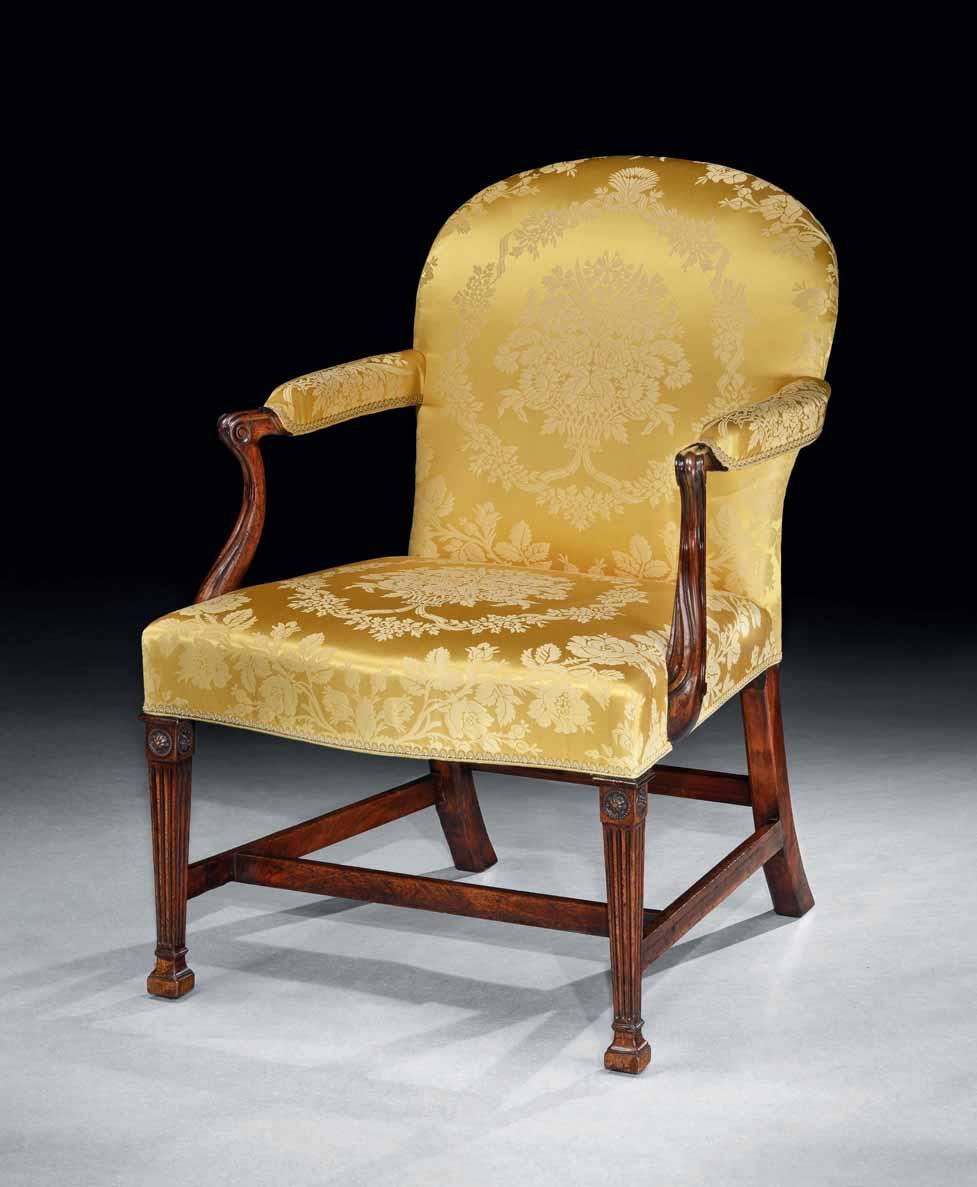
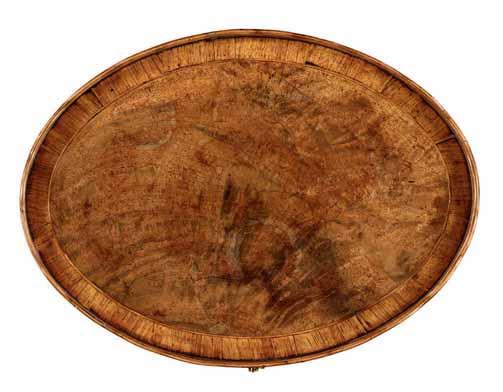
A GEORGE III MAHOGANY URN STAND
Note: The tulipwood crossbanded top retains its original wavy gallery. A pull-out slide is fitted to one long side.
English, circa 1780
Height: 25¼ in; 64 cm
Width: 14¾ in; 37.5 cm
Depth (slide open): 17½ in; 44.5 cm
Depth (slide closed): 11¼ in; 28.5 cm
The outline of the frieze continues directly into the legs, adding a sinuous elegance to the design. The mahogany has acquired a beautiful colour and patina.
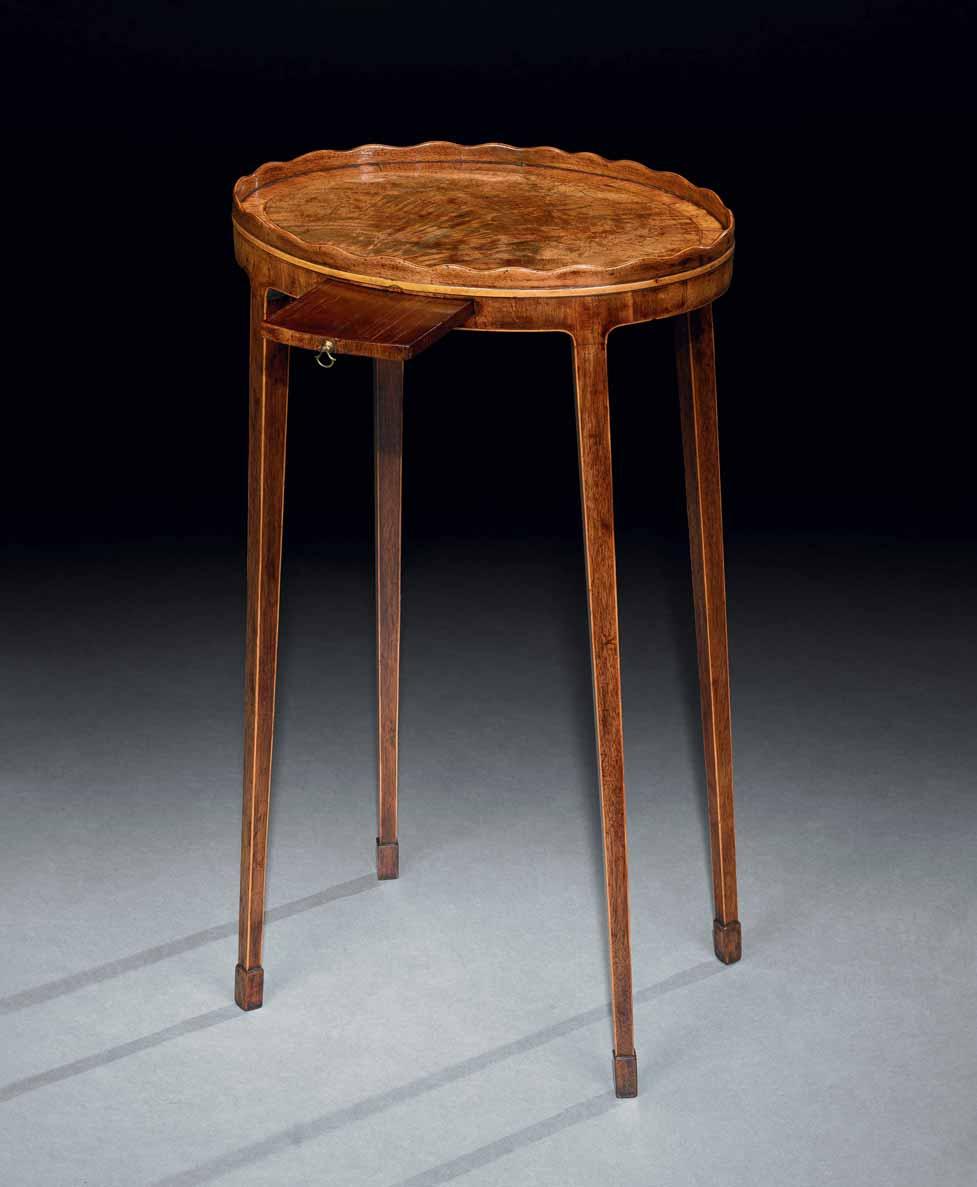
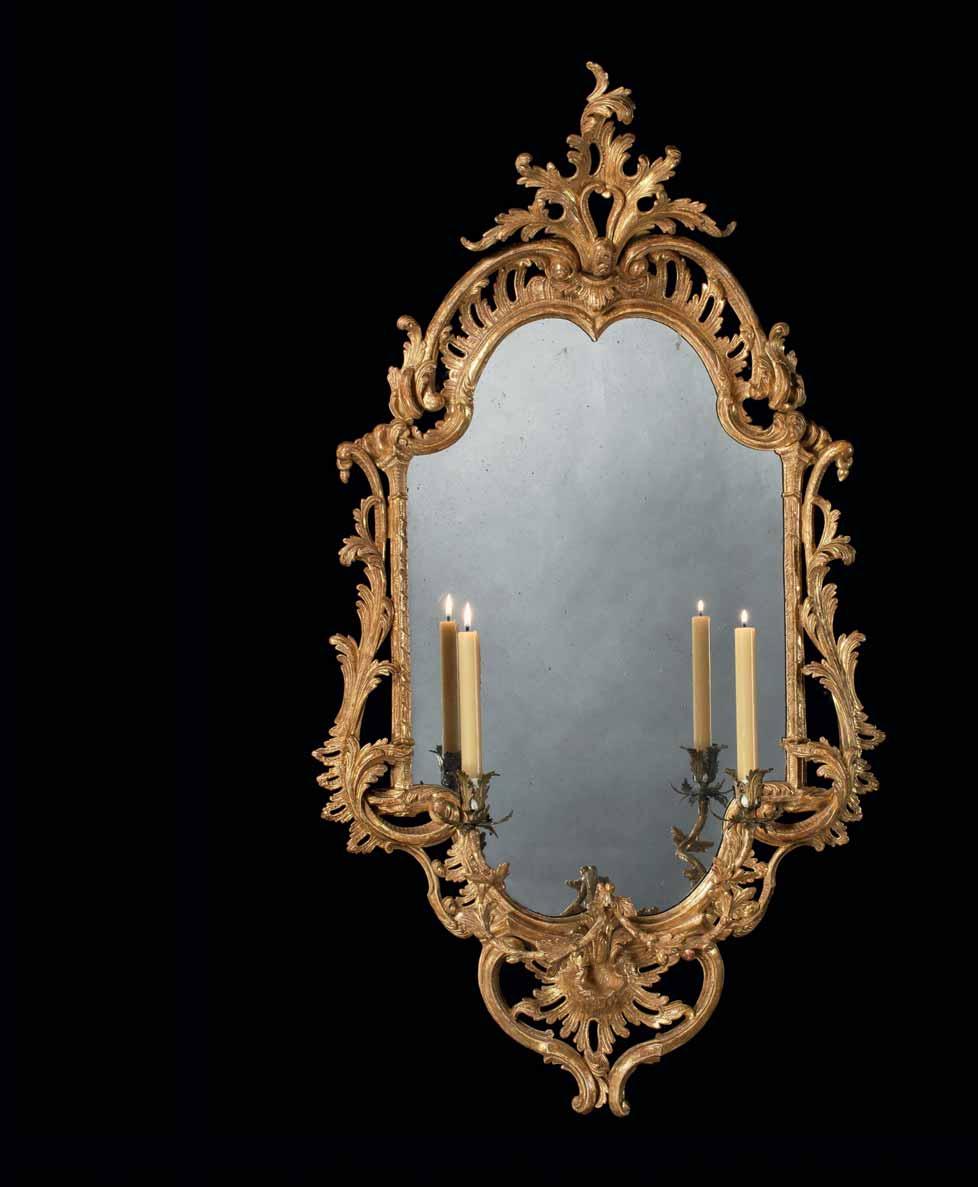
A PAIR OF GEORGE III GILTWOOD TWO LIGHT GIRANDOLES
Note: The girandoles have 18th century replaced mirror plates. The brass nozzles are of later date.
English, circa 1770
Height: 45 in; 114.5 cm
Width: 25½ in; 65 cm
Depth: 10½ in; 26.5 cm
Provenance: Arthur Ackermann & Son, New York, USA, 1975; Private collection, USA.
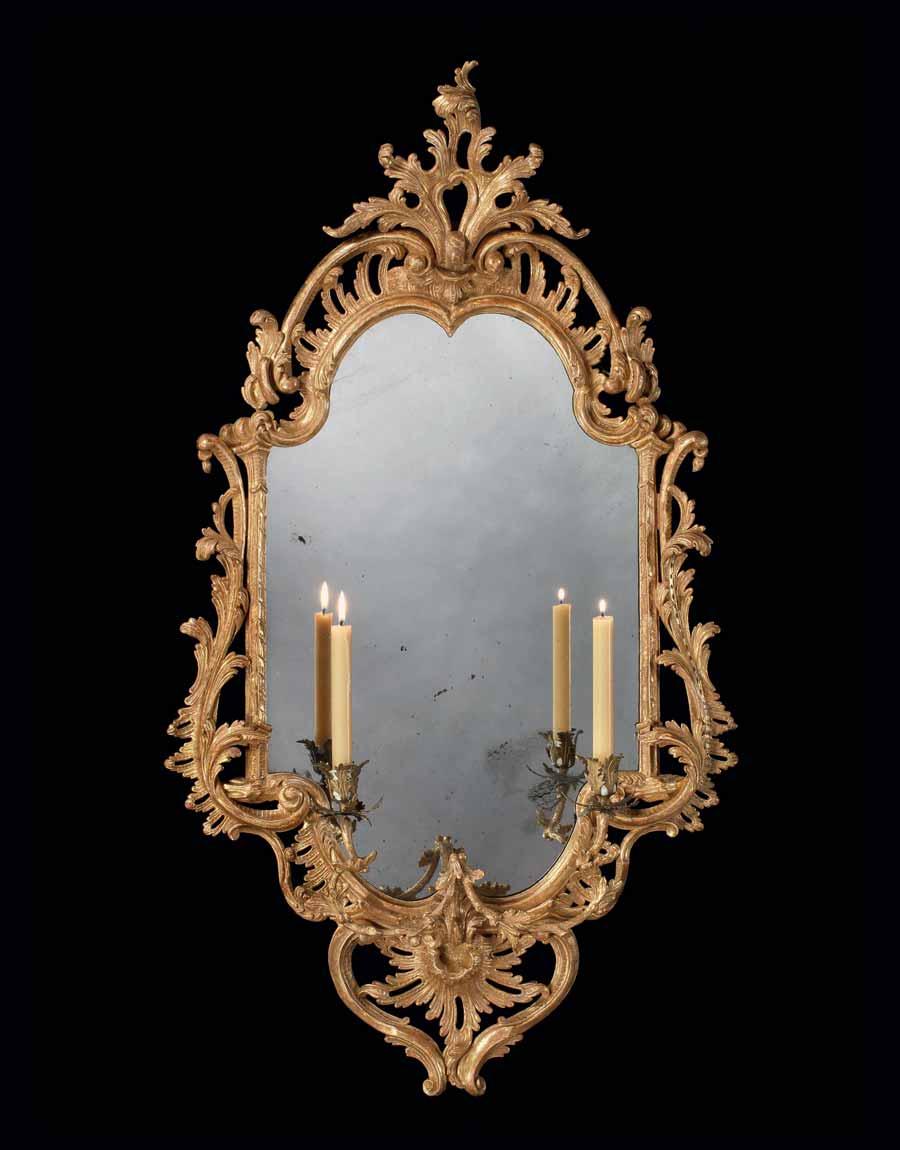
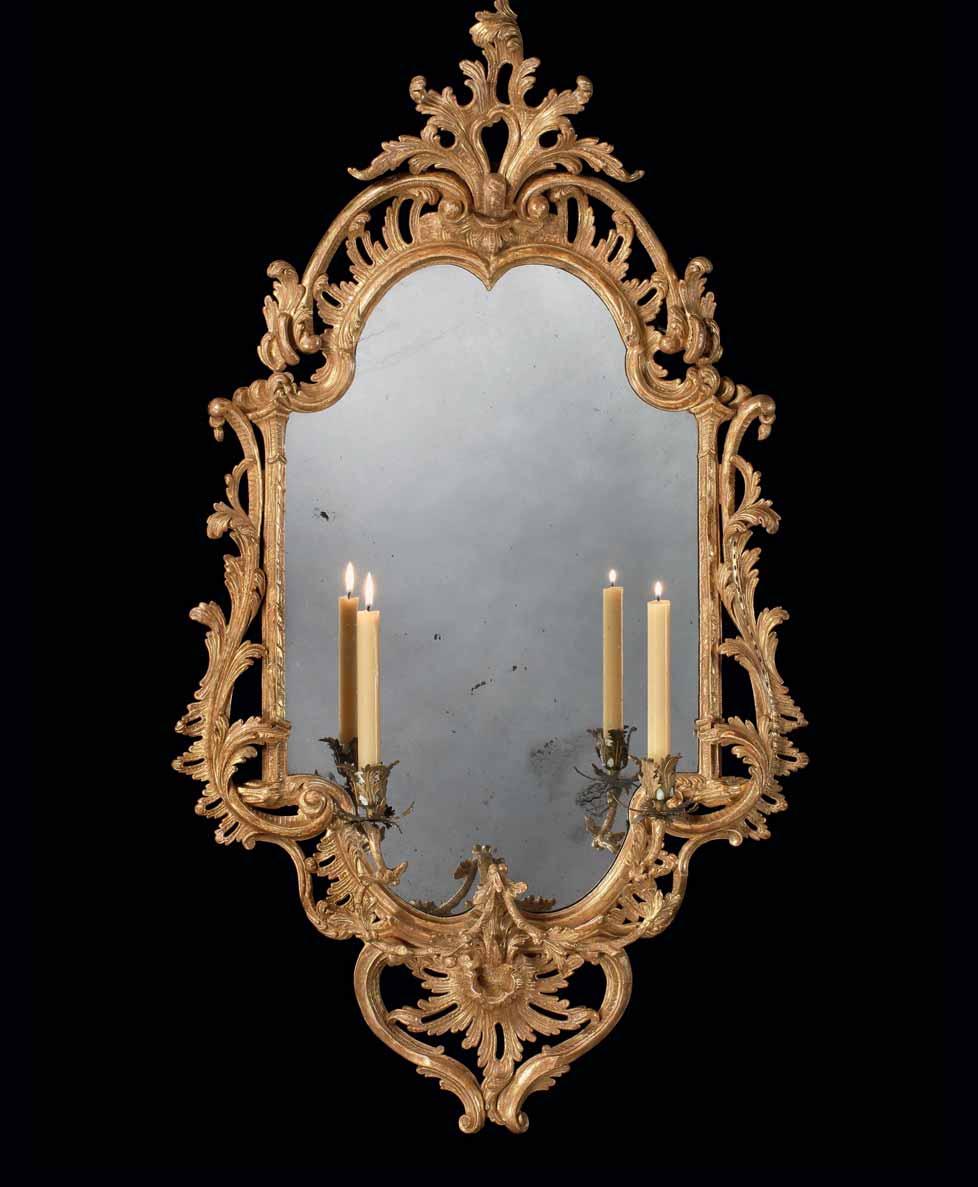
A PAIR OF GEORGE III ROSEWOOD AND SATINWOOD CROSSBANDED OPEN BOOKCASES
Note: Each bookcase is fitted with a single adjustable shelf on a concealed rebate strip. English, circa 1790
Height: 2 ft 9 in; 84 cm
Width: 5 ft; 152.5 cm
Depth: 1 ft 2¾ in; 37.5 cm
Provenance: Private collection, England.
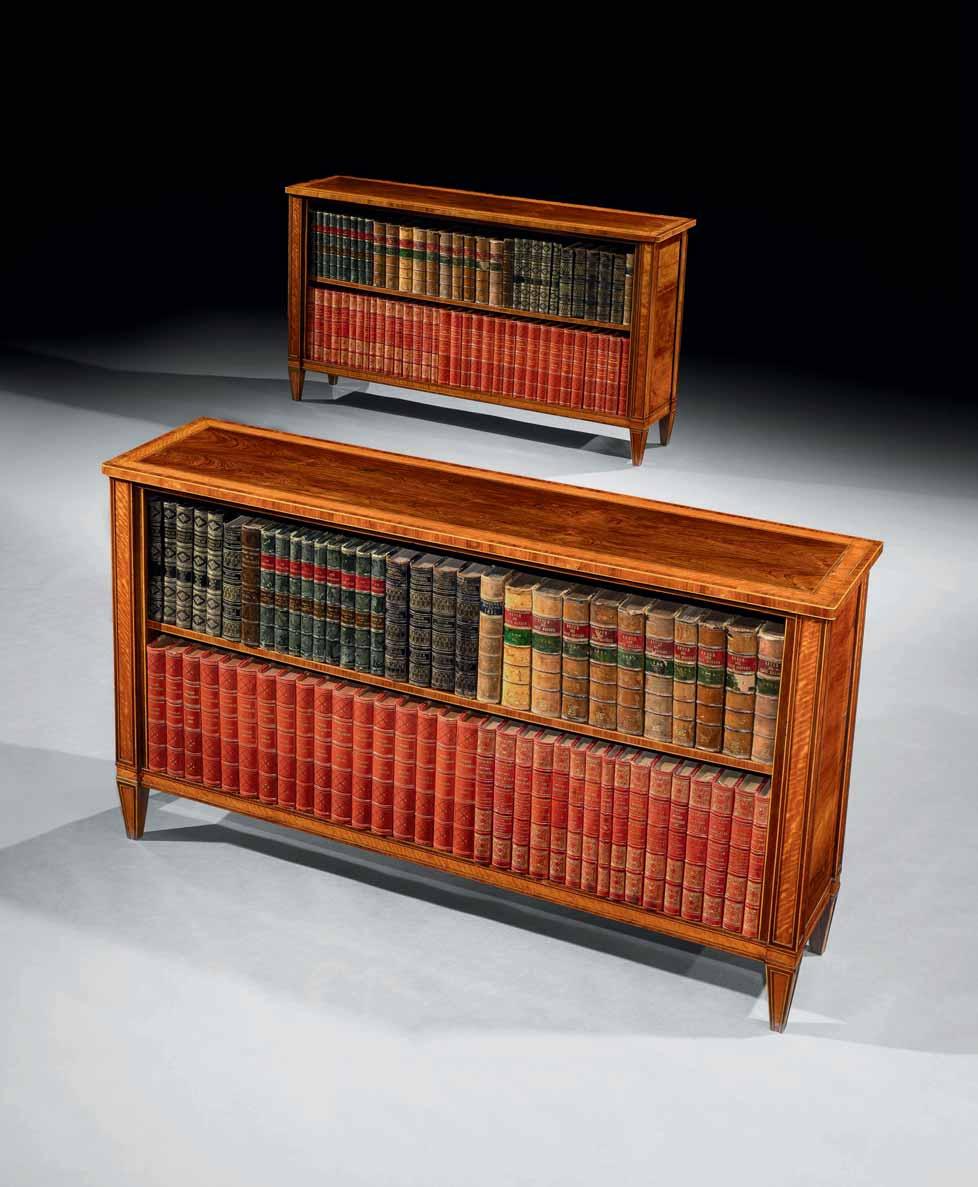
A PAIR OF GEORGE II GILTWOOD WALL BRACKETS
Note: The brackets retain much of the original gilding.
English, circa 1755
Height: 17¾ in; 45 cm
Width: 12¾ in; 32 cm
Depth: 9¼ in; 24 cm
Provenance: Clifford Wright Antiques Ltd., London, England; Ronald Phillips Ltd., London, England; Mallett & Son Ltd., London, England; Private collection, USA.
Illustrated: Mallett & Son Ltd., catalogue, 1993, p. 69. The whimsical design of these wall brackets gives them a delicate appearance which is very much in the style of Thomas Johnson.
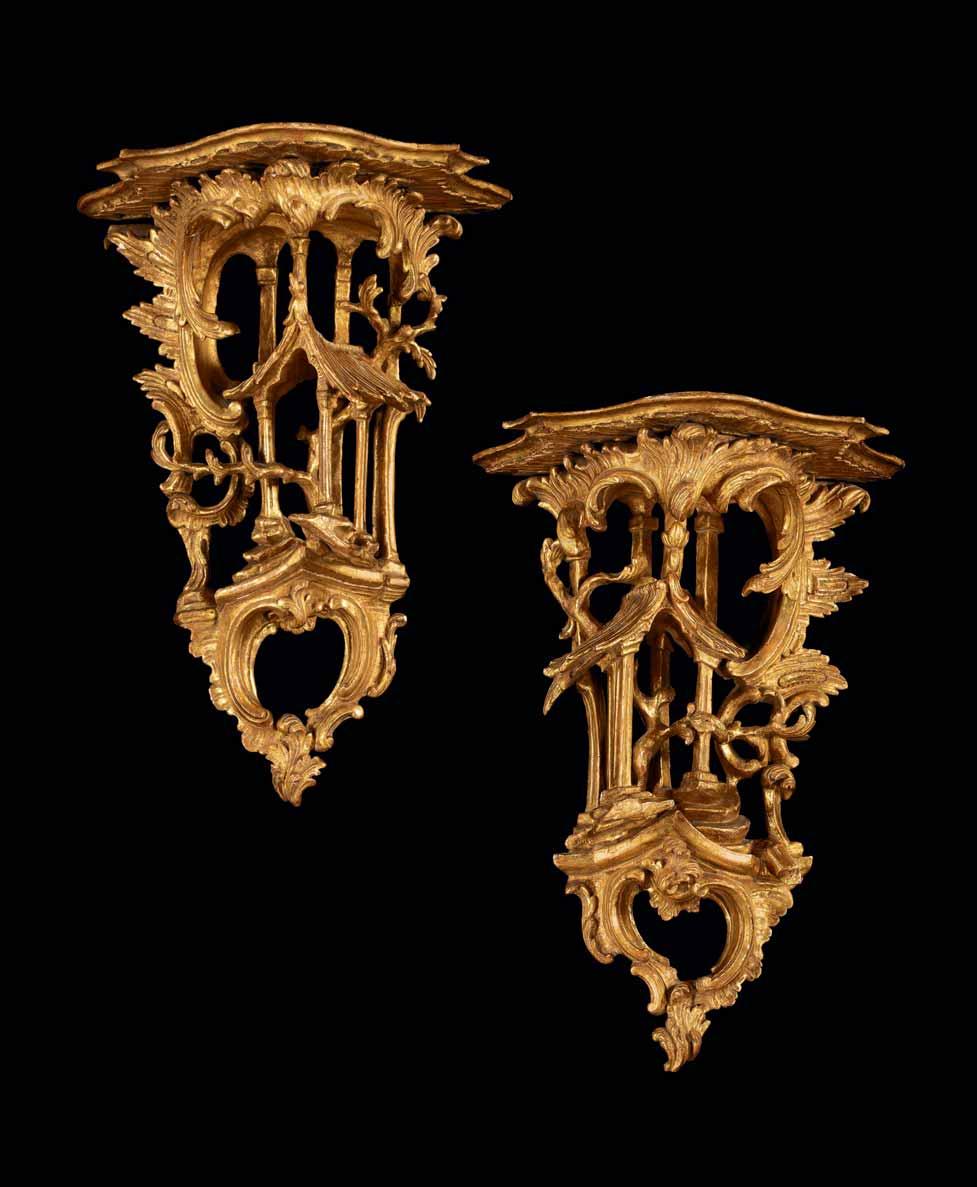
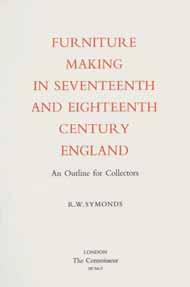
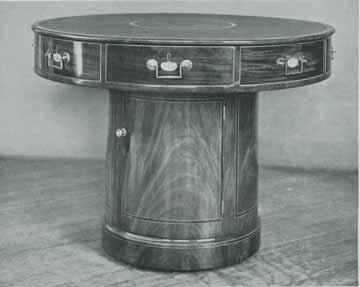
The table illustrated in Furniture Making in Seventeenth and Eighteenth Century England
82
A GEORGE III MAHOGANY AND PADAUK CROSSBANDED RENT TABLE
Note: The table retains its original brass handles. The leather insert is of later date. The circular pedestal cupboard is fitted with one loose shelf. The central circular well in the top has a sprung lid which is released by a pull-lever inside the drawer marked ‘ABC’.
English, circa 1790
Height: 31¾ in; 80.5 cm
Diameter: 42¼ in; 107.5 cm
Provenance:
M. Harris & Sons, London, England; Eric Moller, Thorncombe Park, Surrey, England; Mallett & Son Ltd., London, England; Private collection, USA.
Exhibited:
The Grosvenor House Art and Antiques Fair, London, 1994; with Mallett & Son Ltd.
Illustrated:
Antique Collector, July 1939, no page no.; with M. Harris & Sons Ltd.
R. W. Symonds, Furniture Making in Seventeenth and Eighteenth Century England, 1955, p. 138, pl. 184.
Sotheby’s, ‘The Moller Collection’, sale catalogue, London, 18 November 1993, pp. 154–5, lot 128.
Huon Mallalieu, ‘Diamond celebration’, Country Life, 9 June 1994, p. 92, item 2.
The relatively small diameter and the unusual circular pedestal base make this table extremely rare. Another rent table with circular base, formerly in the Royal Collection, is to date the only other known example.
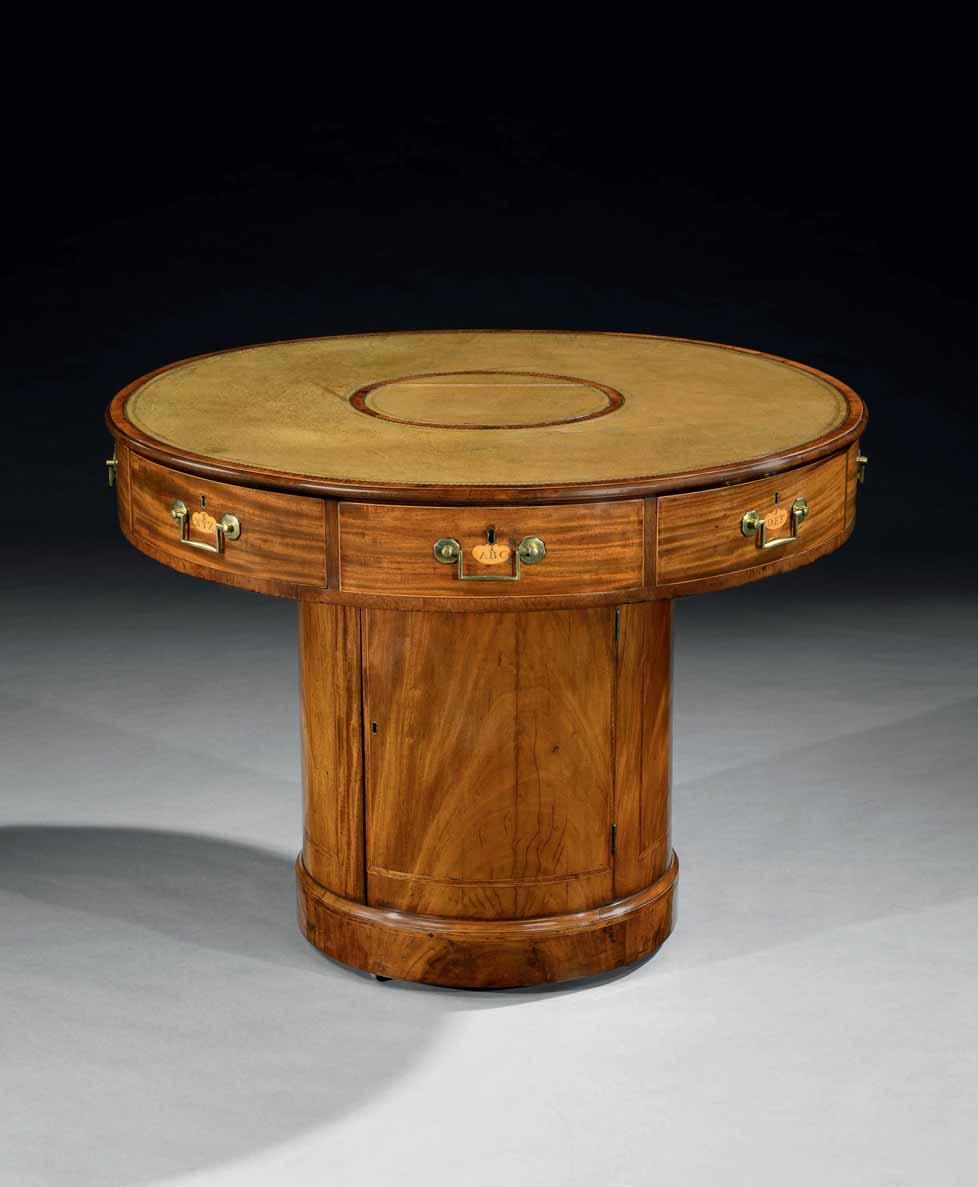
THE MOLLER RENT TABLE
A GEORGE II WHITE PAINTED PIER MIRROR
Note: The mirror retains much of the original off-white paint surface and the original bevelled plates.
English, circa 1755
Height: 56 in; 142.5 cm
Width: 28½ in; 72.5 cm
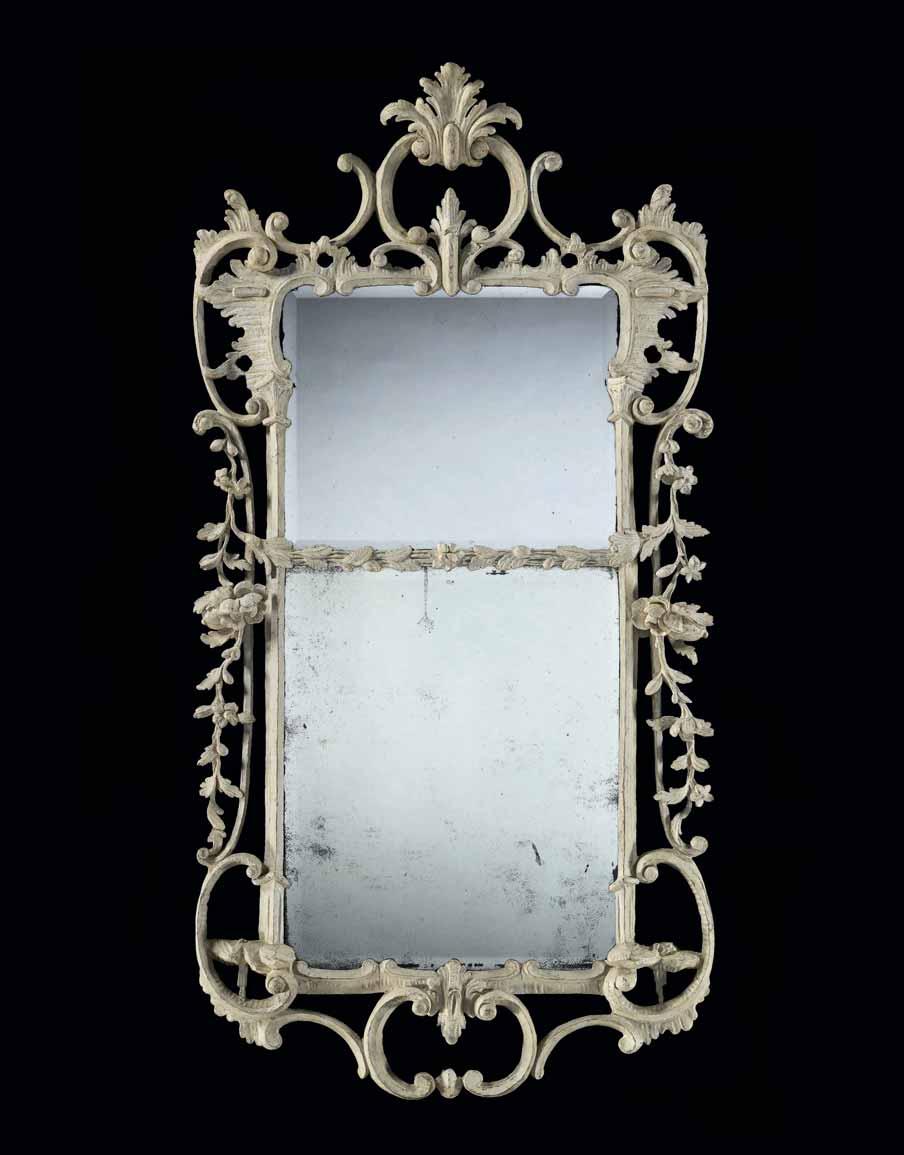
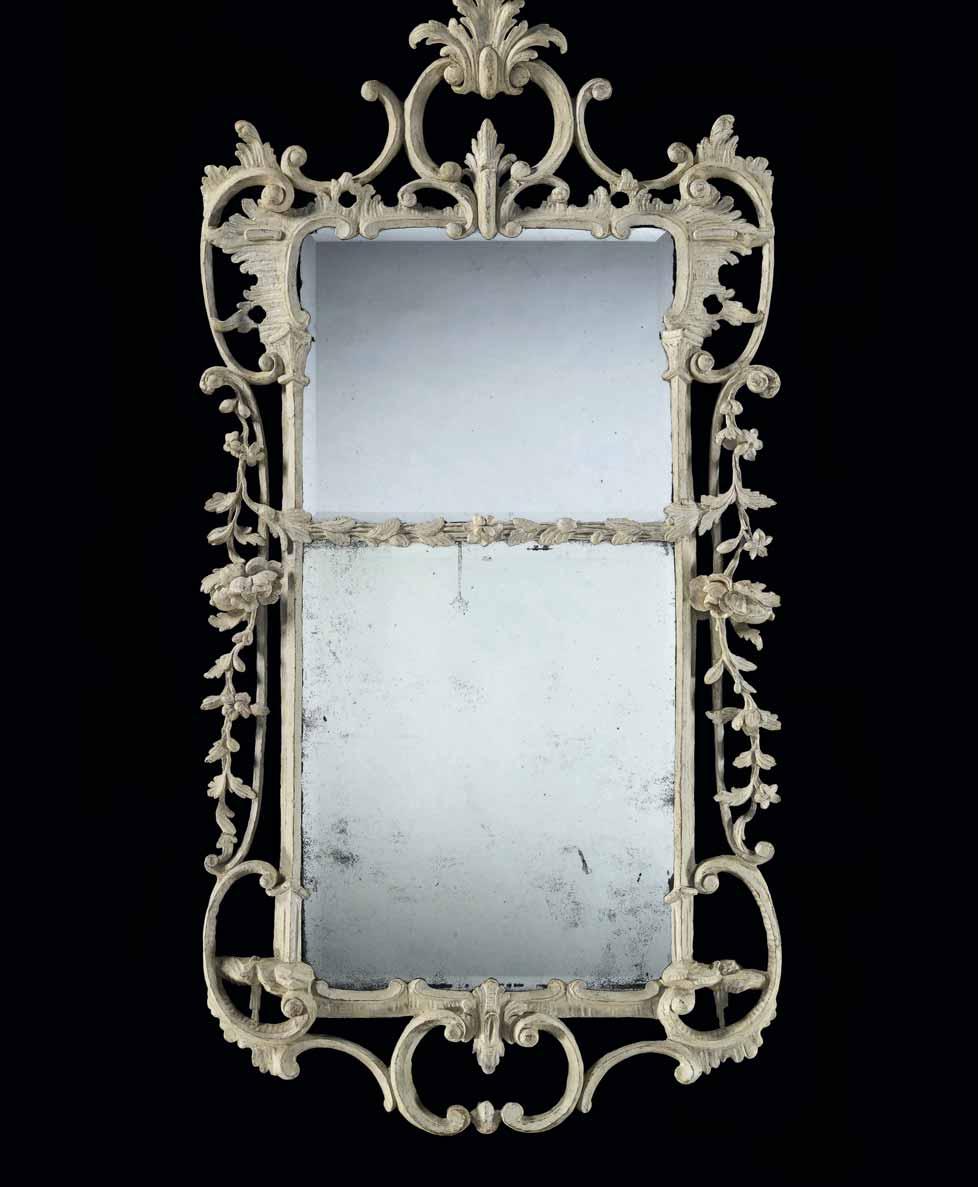
84
A GEORGE III MAHOGANY TWO TIER TROLLEY
Note: The trolley retains its original leather covered castors.
English, circa 1765
Height: 25½ in; 65 cm
Width: 27 in; 68.5 cm
Depth: 18¾ in; 47.5 cm
Provenance: Private collection, Ireland.
85
A PAIR OF REGENCY CLARET JUGS
Note: The jugs retain the original cut glass mushroom stoppers.
English, circa 1820
Height: 11¼ in; 28.5 cm
Diameter: 5¾ in; 14.5 cm
86
A GEORGE III STERLING SILVER DOUBLE COASTER BY MICHAEL PLUMMER
English, hallmarked for London, 1794
Height: 2¼ in; 5.5 cm
Width: 15¼ in; 39 cm
Depth: 7¾ in; 19.5 cm
Provenance: Mallett & Son Ltd., London, England; Private collection, England.
Illustrated: Mallett & Son Ltd., catalogue, 2009, p. 58.
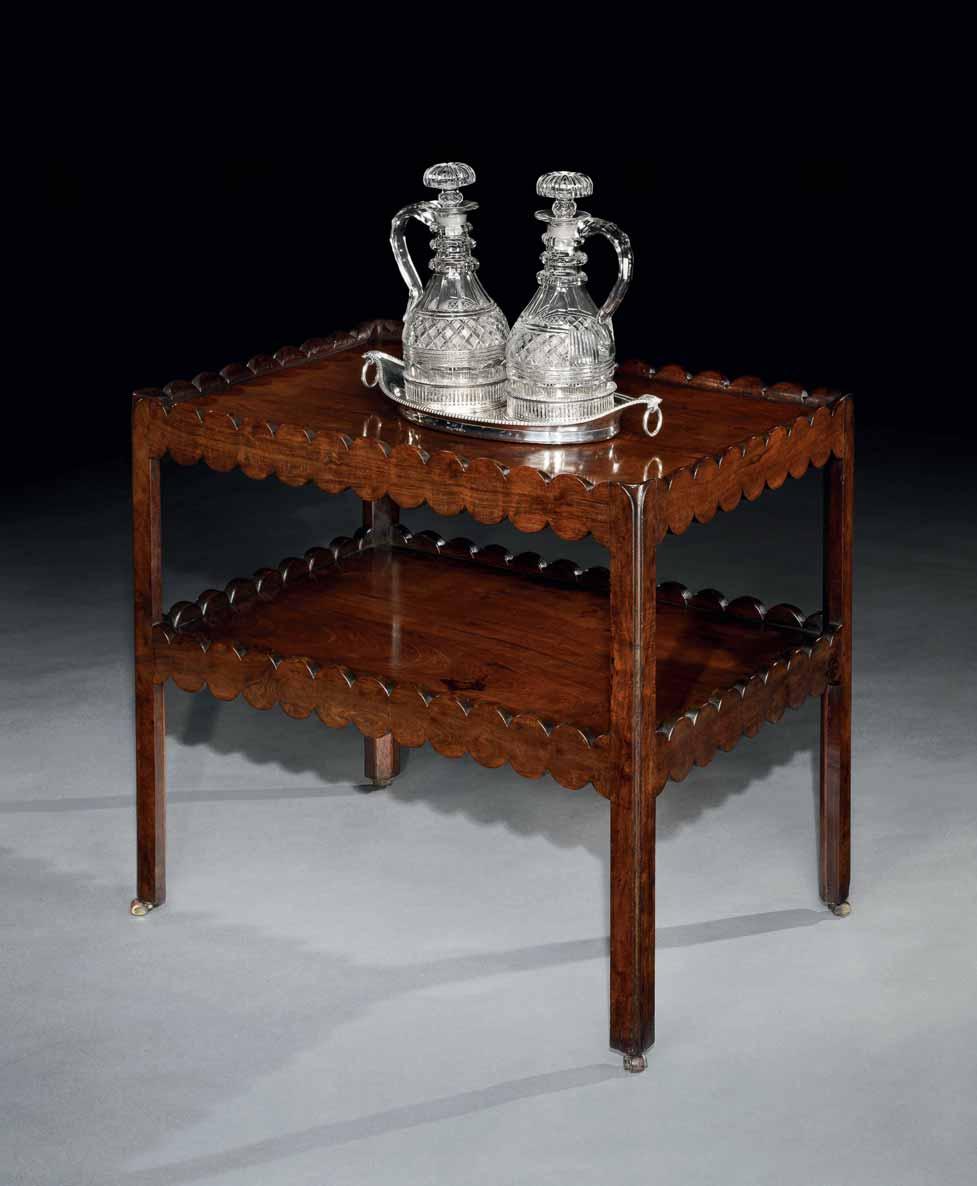
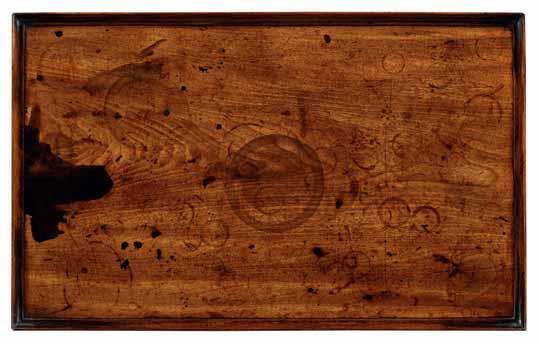
A GEORGE II MAHOGANY CENTRE TABLE IN THE MANNER OF GILES GRENDEY
Note: This table has survived in virtually untouched condition and has acquired a beautiful colour and patina.
English, circa 1750
Height: 27¾ in; 70.5 cm
Width: 34¾ in; 88 cm
Depth: 22 in; 56 cm
Provenance: Private collection, Buckinghamshire, England.
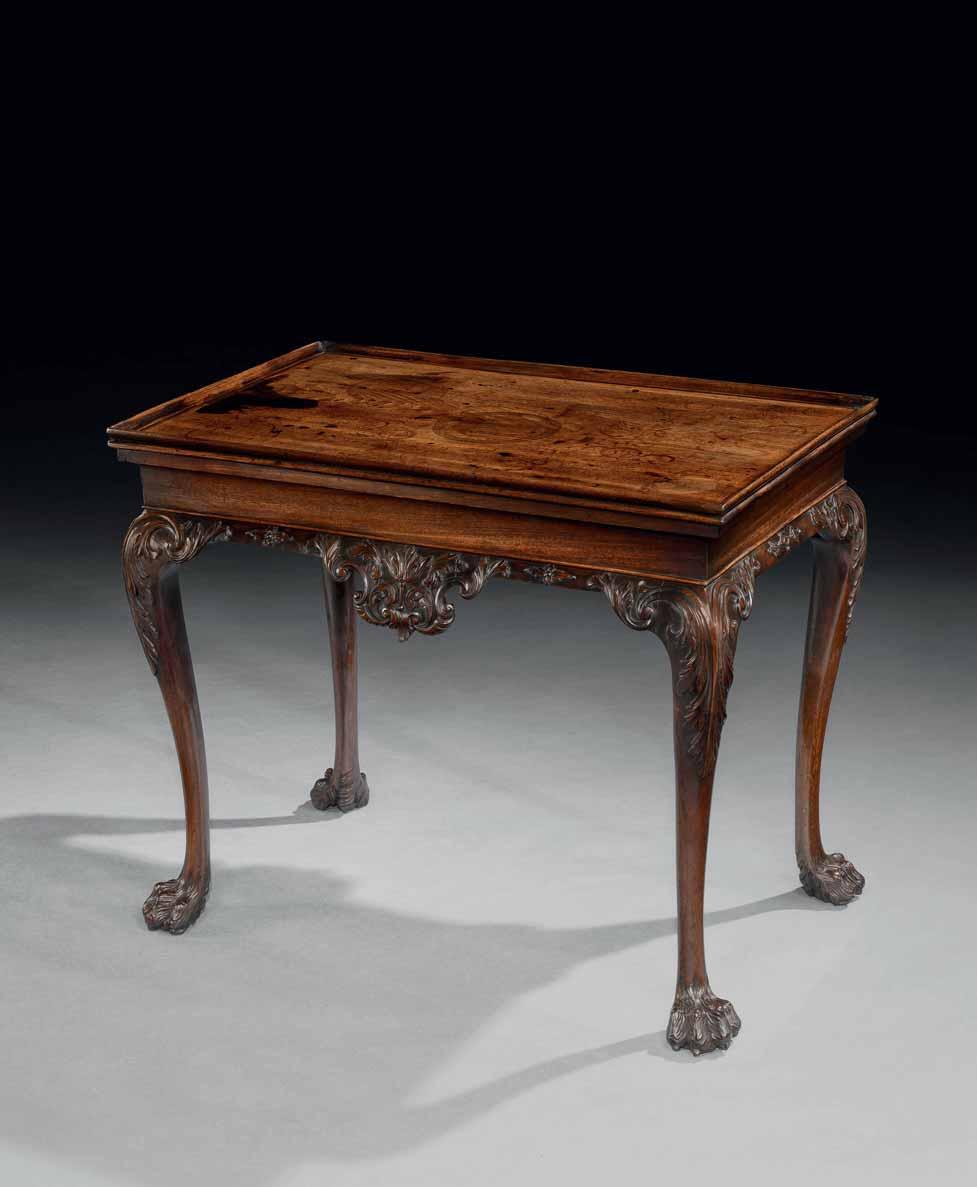
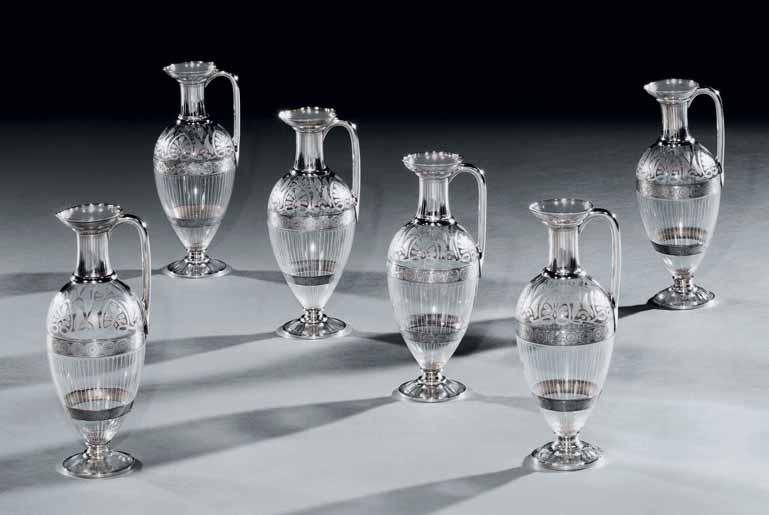
A SET OF SIX VICTORIAN SILVER MOUNTED ETCHED GLASS CLARET JUGS BY EDWARD JOHN AND WILLIAM BARNARD
English, hallmarked for London 1872 and 1873
Height: 12¼ in; 31 cm
Diameter: 4¾ in; 12 cm
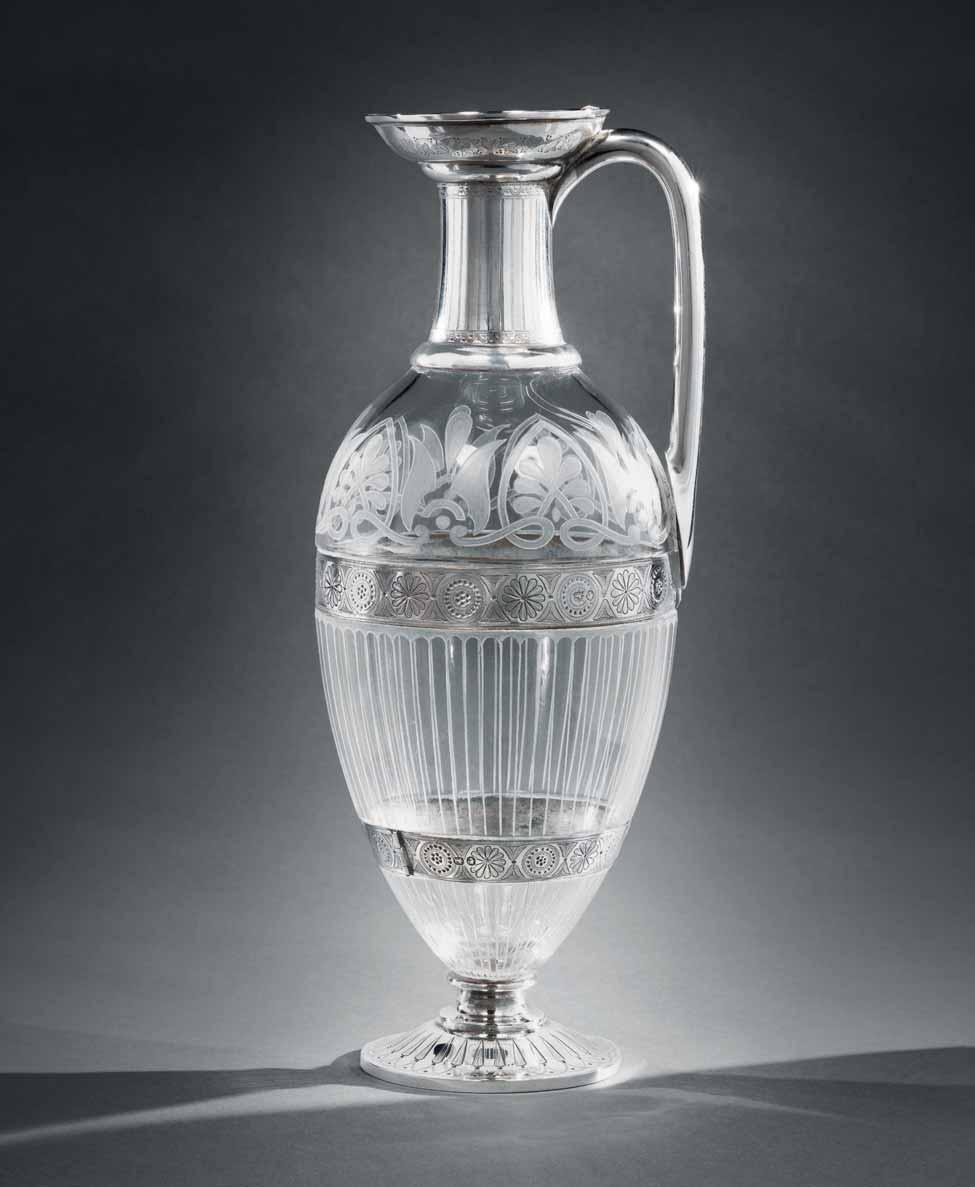

A GEORGE III PERIOD CHINESE EXPORT MIRROR PAINTING
The mirror painting: Chinese export, circa 1770
The giltwood frame: English, circa 1880
Height: 10¼ in; 26 cm
Width: 14 in; 35.5 cm
Provenance: Private collection, England.
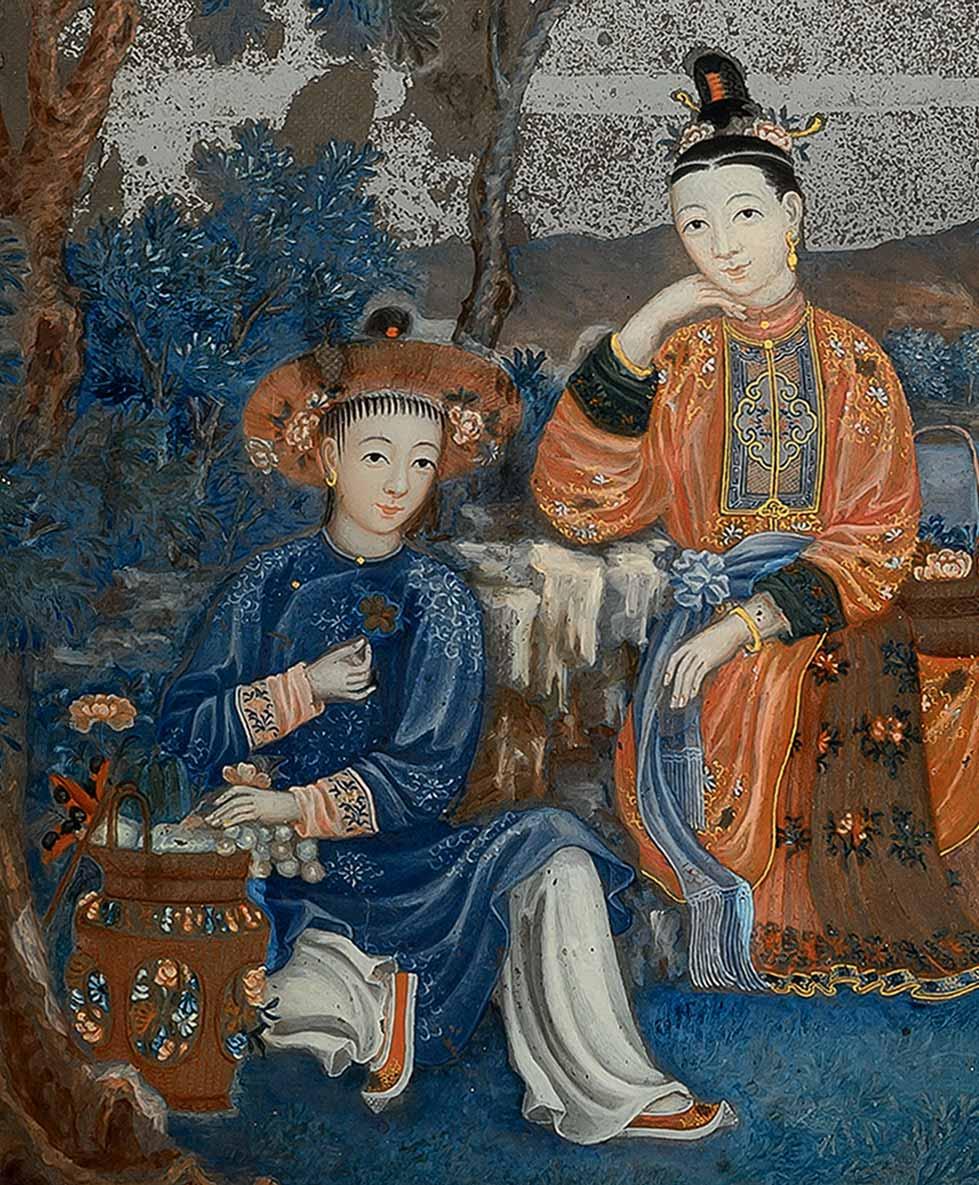
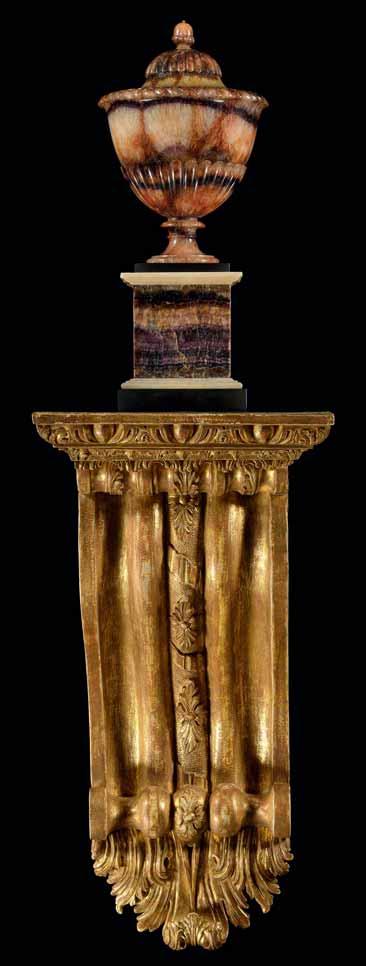
90
A GEORGE II LARGE GILTWOOD BRACKET IN THE MANNER OF WILLIAM KENT
Note: The bracket has been re-gilded. English, circa 1740
Height: 24 in; 61 cm
Width: 12¼ in; 31 cm
Depth: 12½ in; 31.5 cm
Provenance: Private collection, Ireland.
91
A LARGE GEORGE III BLUE JOHN AND ALABASTER URN
English, circa 1800
Height: 16½ in; 42 cm
Diameter: 7¼ in; 18.5 cm
Provenance: Private collection, USA.
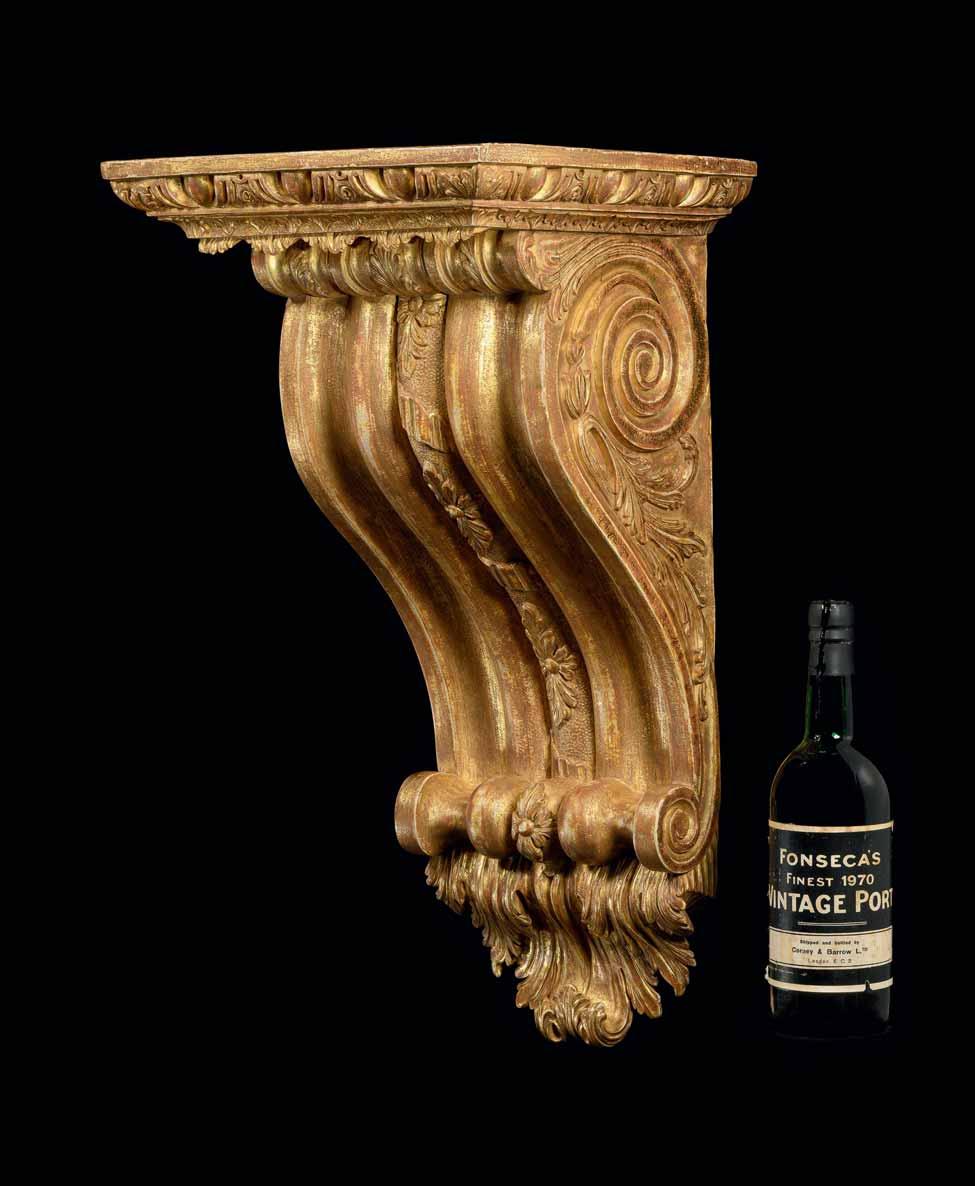
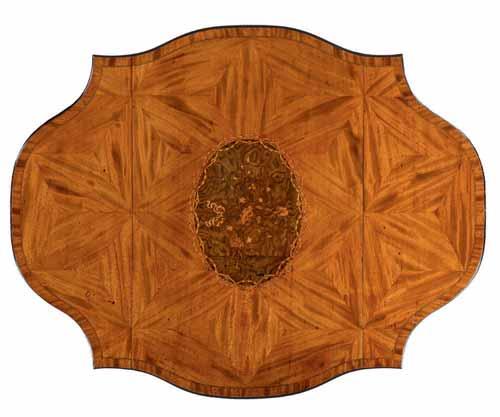
92
A GEORGE III MAHOGANY PARQUETRY AND MARQUETRY VENEERED PEMBROKE TABLE ATTRIBUTED TO HENRY HILL
English, circa 1770
Height: 29 in; 74 cm
Width: 32½ in; 82.5 cm
Depth (flaps up): 41¼ in; 105 cm
Depth (flaps down): 21 in; 53.5 cm
Provenance: Michael Lipitch Ltd., London, England; Private collection, England.
Literature: Lucy Wood, ‘Furniture for Lord Delaval: metropolitan and provincial’, Furniture History, 1990, vol. 26, pp. 198–234.
The cabinet-maker Henry Hill was based in Marlborough, Wiltshire, but he rivalled the top London makers in the quality of his work. His strongest advantage, however, was his highly competitive pricing which, even after adding the extra delivery costs from Wiltshire to London, was still much lower than that of his competitors. The workmanship of this table is characteristically fine and is typical of Hill’s output. The parquetry veneered top with its floral inlay corresponds to those on other tables associated with the firm. The top when opened is serpentine on all four sides, and this unusual shape and the ebonised edge moulding of the top are distinctive features of Hill’s workshop, as are the bow-fronted table frame changing to a flat surface where the legs join it, and the fluted turned legs with elongated toupee or bulbous feet.
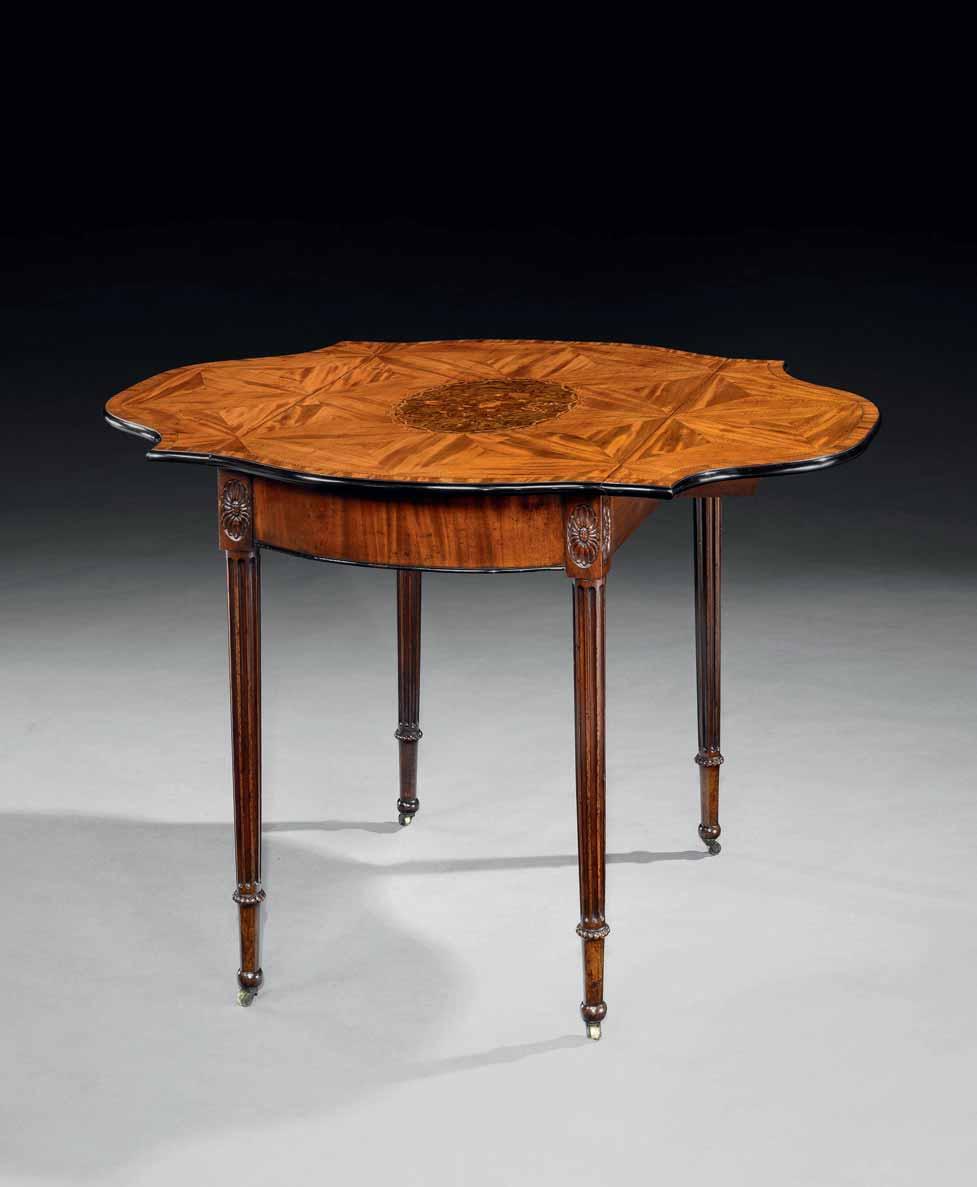
A REGENCY BRASS MOUNTED MAHOGANY CHEVAL MIRROR ATTRIBUTED TO GILLOWS
Note: The mirror retains its original brass fittings including the trays, which is most unusual, as well as the original mirror plate and original castors.
English, circa 1815
Height (mirror up): 6 ft 2¾ in; 189.5 cm
Height (mirror down): 4 ft 11¼ in; 150.5 cm
Maximum width: 4 ft 10 in; 147.5 cm
Depth (across feet): 1 ft 11 in; 58.5 cm
Provenance: Private collection, England.

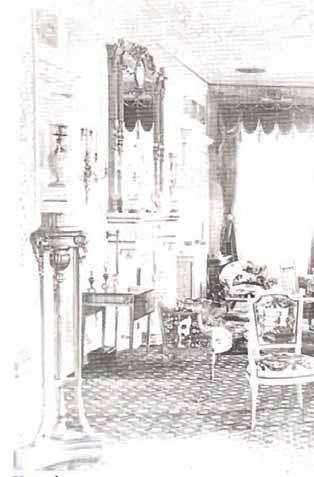
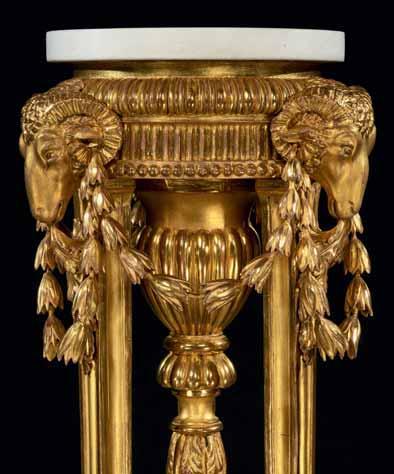
Note: The torchères have been re-gilded at some stage in the 20th century. The marble tops are of later date. The triangular concave sided plinth bases are replacements.
English, circa 1780
Height: 56¾ in; 144 cm
Diameter: 15 in; 38 cm
Provenance: Haddo House, Aberdeenshire, Scotland; Frank Partridge Fine Arts Ltd., London, England; Lucille Hirschhorn, New Jersey, USA; Private collection, USA.
Illustrated: Mallett & Son Ltd., catalogue, 2012, pp. 184–5.
A PAIR OF GEORGE III GILTWOOD TORCHERES
The torchères in situ at Haddo House, Aberdeenshire, in the 19th century
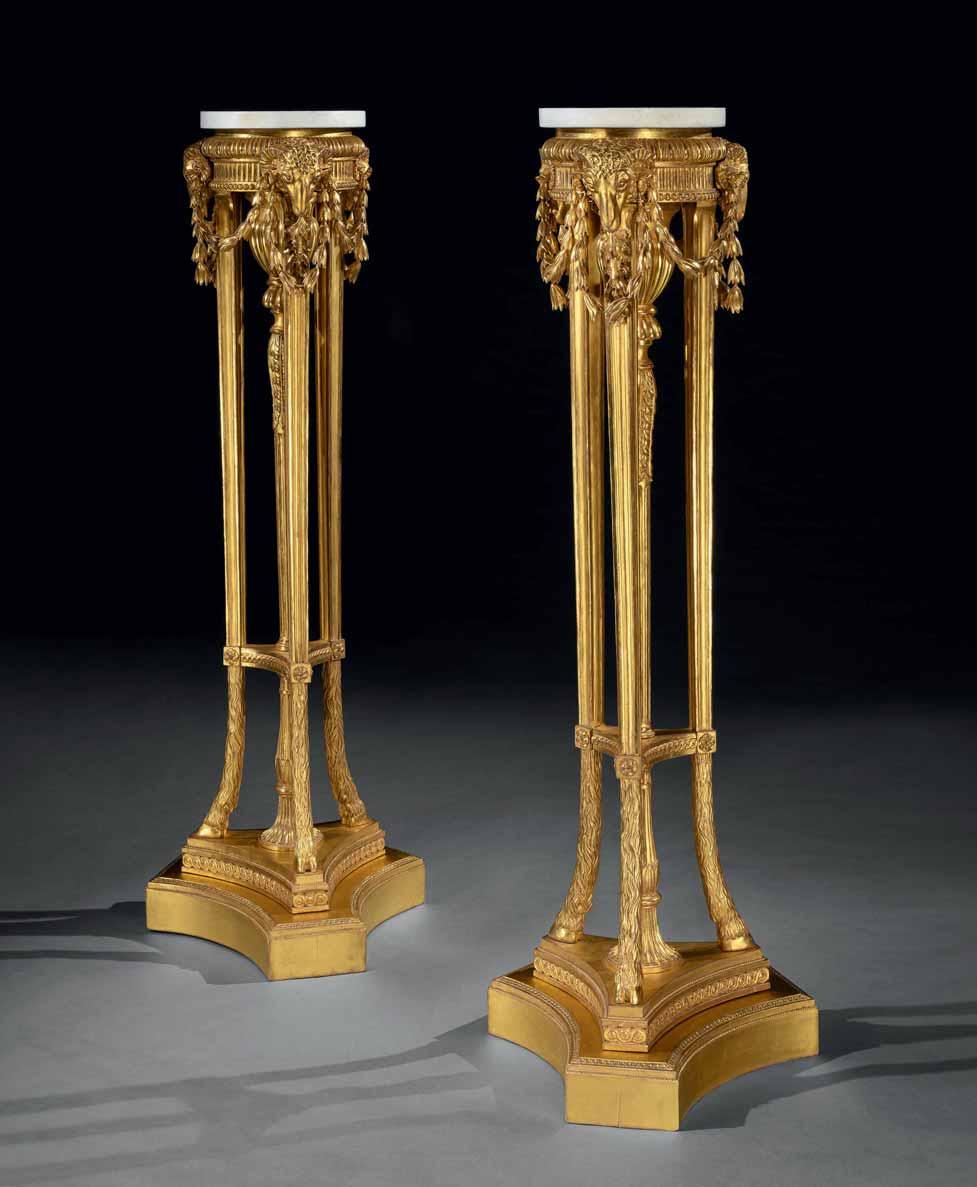
95
A GEORGE II GREY PAINTED CONSOLE TABLE ATTRIBUTED TO WILLIAM KENT
English, circa 1730
Height: 36½ in; 93 cm
Width: 55½ in; 141 cm
Depth: 30¾ in; 78 cm
96
A GEORGE II MAHOGANY BREAKFRONT CABINET ATTRIBUTED TO WILLIAM HALLETT, THE DESIGN TO WILLIAM KENT
English, circa 1740
Height: 8 ft 2 in; 249 cm
Width: 5 ft 7 in; 170.5 cm
Depth: 1 ft 10 in; 56 cm
97
THE ASHBURNHAM PLACE LACQUER COMMODES
A PAIR OF GEORGE II ORMOLU MOUNTED CHINESE LACQUER COMMODES ATTRIBUTED TO PIERRE LANGLOIS
English, circa 1760
Height: 2 ft 11½ in; 90 cm
Width: 5 ft; 152 cm
Depth: 2 ft 3½ in; 70 cm
98
A REGENCY BRONZE AND GILT METAL SIX LIGHT ARGAND CHANDELIER
English, circa 1820
Height: 48 in; 122 cm
Diameter: 33¾ in; 86 cm
99
A PAIR OF GEORGE III ORMOLU WINE COOLERS FROM THE SHUGBOROUGH SUITE, BY BENJAMIN VULLIAMY
English, 1811
Height: 12¼ in; 31 cm
Diameter: 9½ in; 24 cm
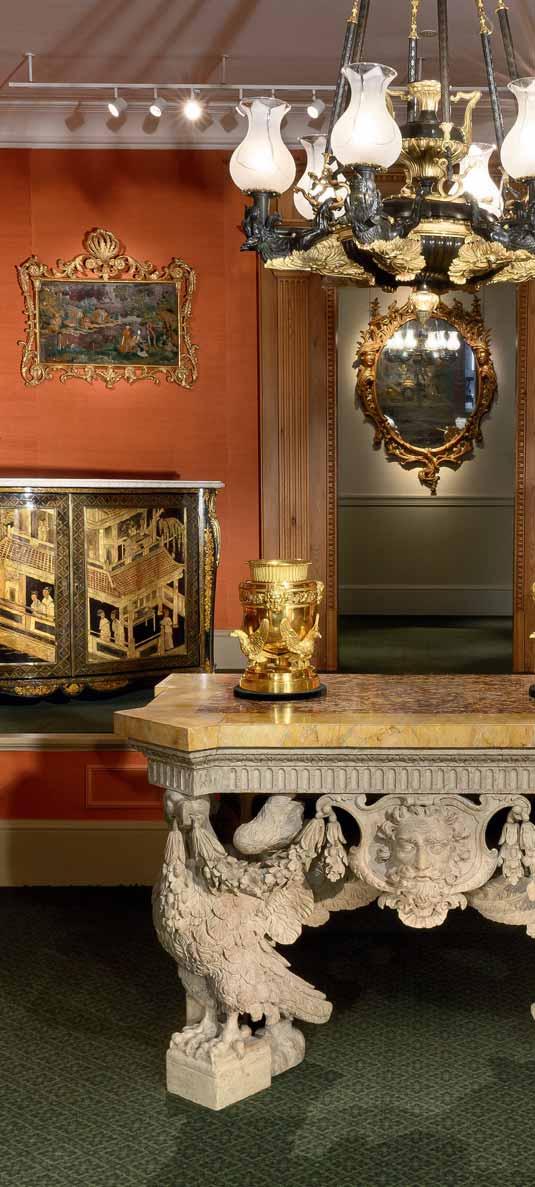
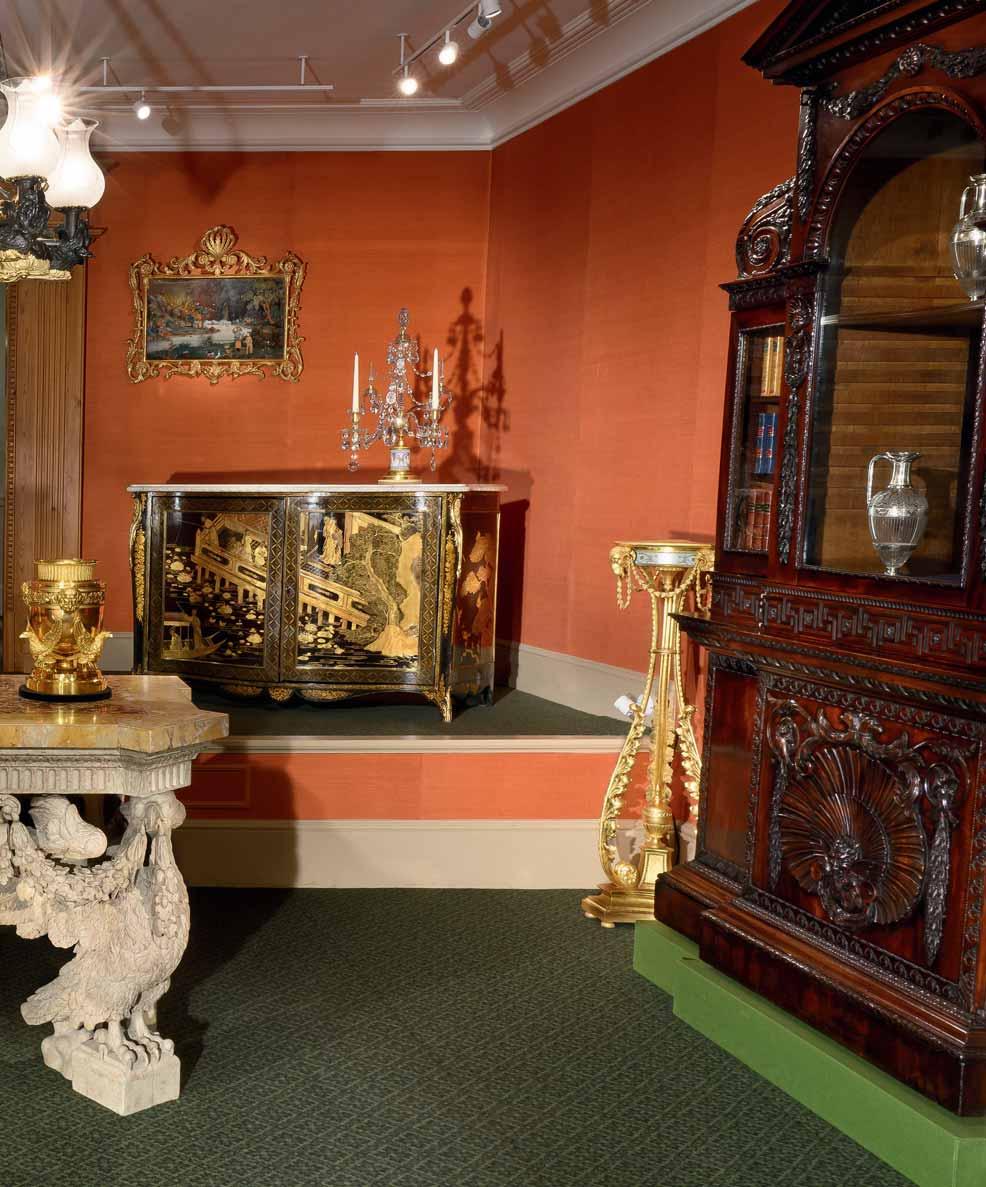
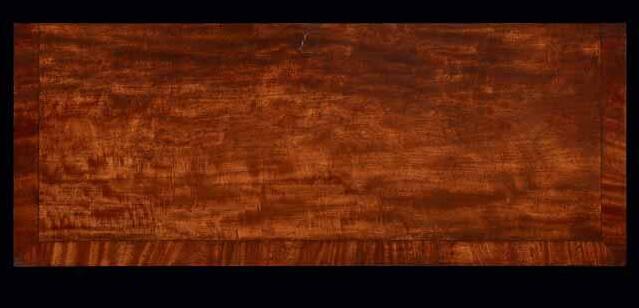
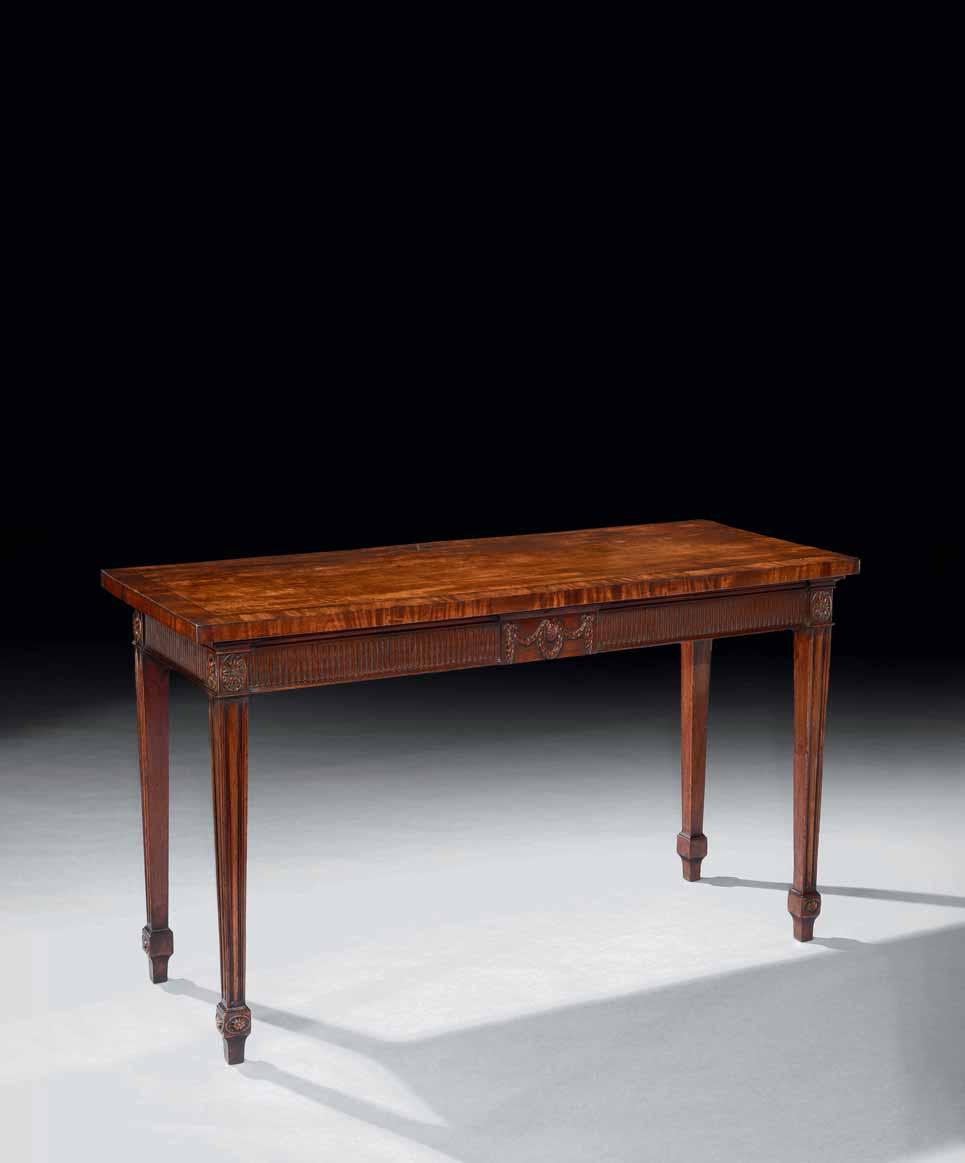
100
A PAIR OF GEORGE III MAHOGANY
CROSSBANDED SIDE TABLES
English, circa 1770
Height: 33¼ in; 84 cm
Width: 54 in; 137 cm
Depth: 21¾ in; 55 cm
Provenance: Cirencester Antiques Ltd., Cirencester, Gloucestershire, England; Philip Duncan Antiques Ltd., London, England; Private collection, USA.
Exhibited: The Antique Dealers’ Fair and Exhibition, London, 1970.
Illustrated: The Antique Dealers’ Fair and Exhibition handbook, London, 1970, p. 34; with Cirencester Antiques Ltd.
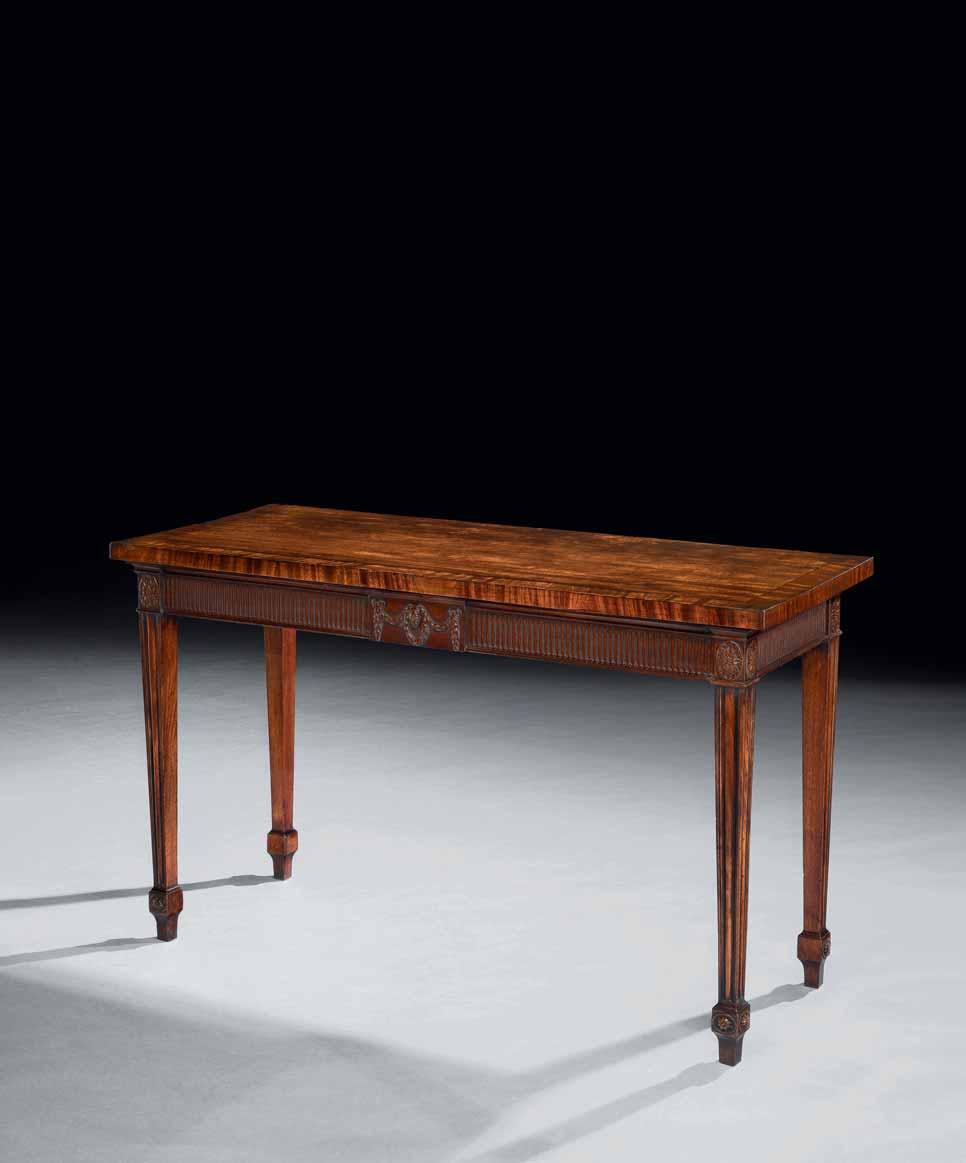
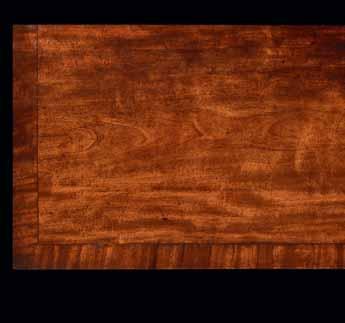
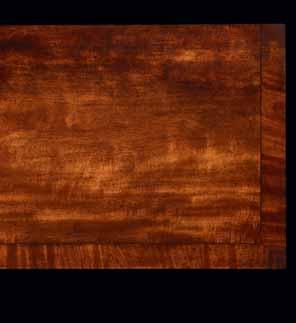

A PAIR OF GEORGE II GILTWOOD OVAL MIRRORS
Note: The frames have been re-gilded at some stage in the 20th century. The mirror plates are later replacements.
English, circa 1755
Height: 48 in; 122 cm
Width: 32 in; 81.5 cm
Provenance:
Collection of Mr. and Mrs. Richard Mellon
Scaife, Westminster Place, Pittsburgh, USA; Ronald Phillips Ltd., London, England; Charlecote Antiques, Kansas City, USA; Private collection, Kansas City, USA.
Illustrated: Ronald Phillips Ltd., ‘Antique English Furniture’, catalogue, 2001, pp. 155–6.
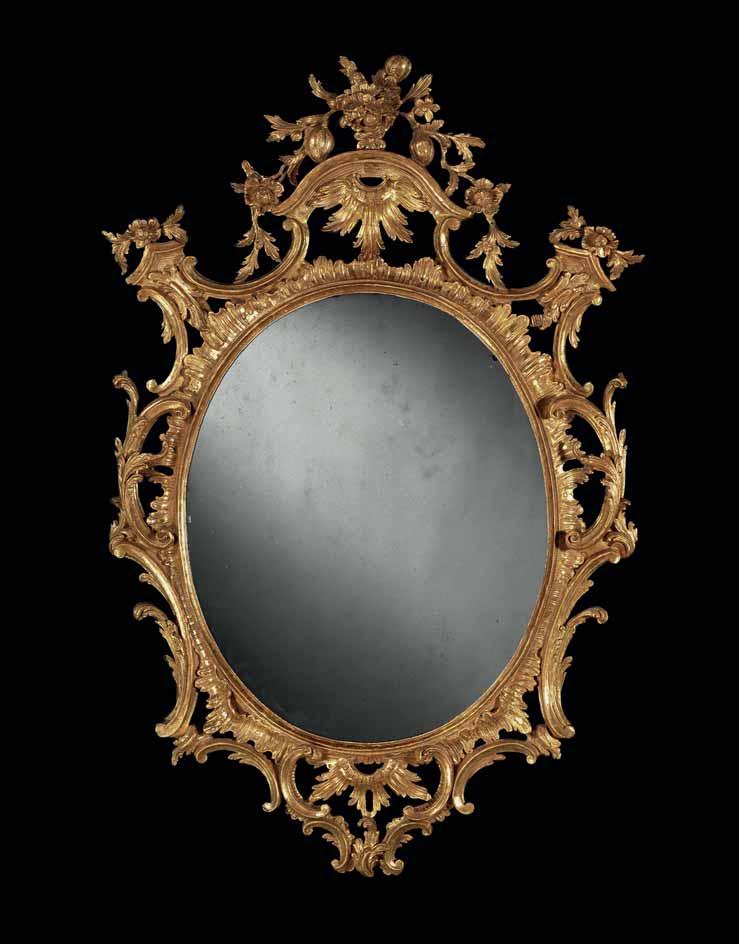

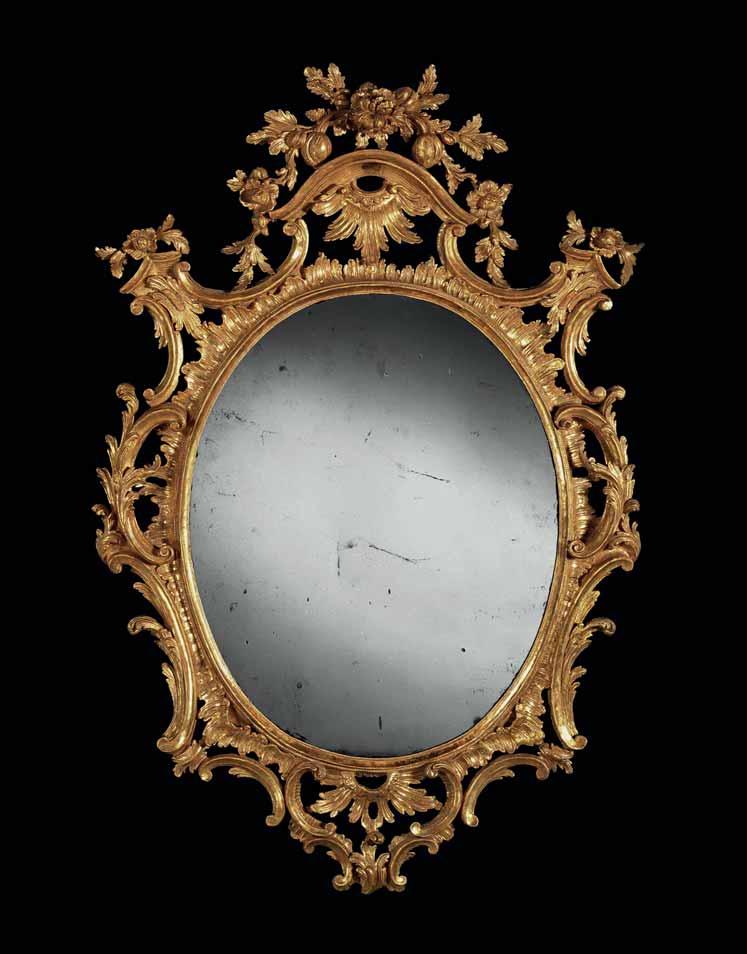
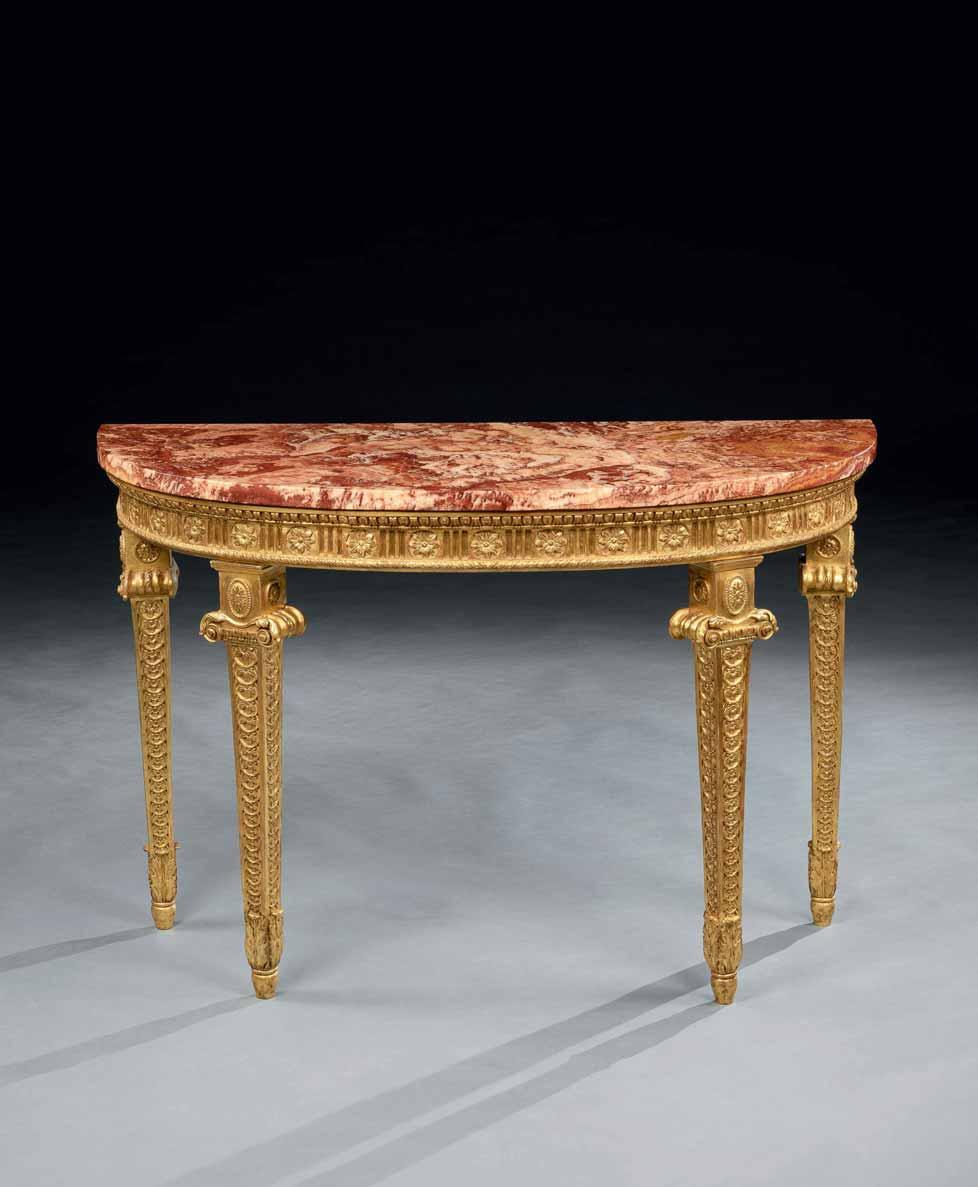
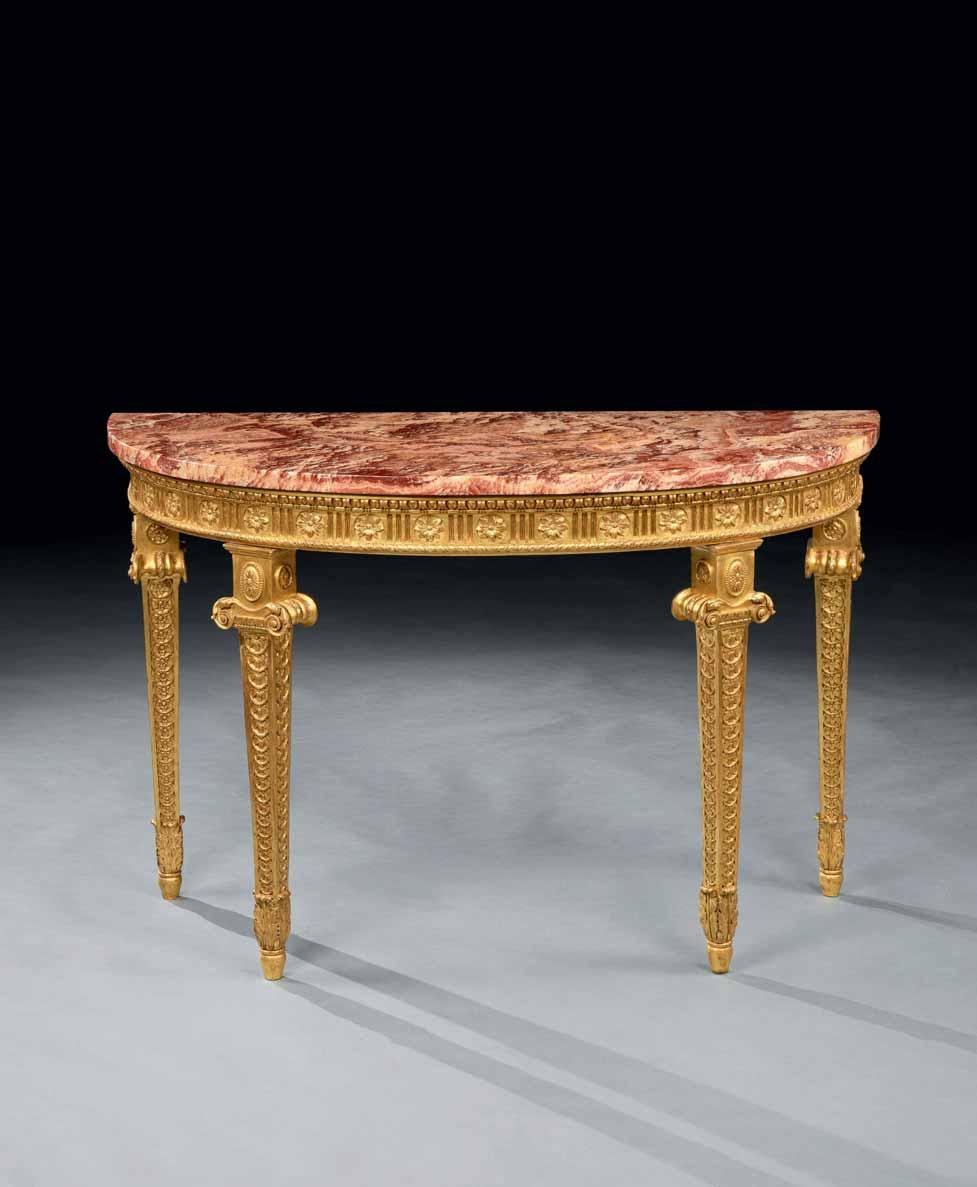
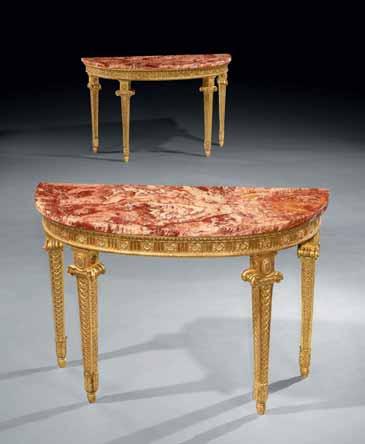
A PAIR OF GEORGE III GILTWOOD SEMI-ELLIPTIC SIDE TABLES ATTRIBUTED TO INCE & MAYHEW
Note: The tables have been re-gilded. The Sicilian Red Jasper tops are replacements.
English, circa 1770
Height: 35 in; 89 cm
Width: 53½ in; 136 cm
Depth: 24 in; 61 cm
Provenance: Clifford Wright Antiques Ltd., London, England; Private collection, London, England.
Illustrated: Clifford Wright Antiques Ltd., pamphlet, no date, p. 17.
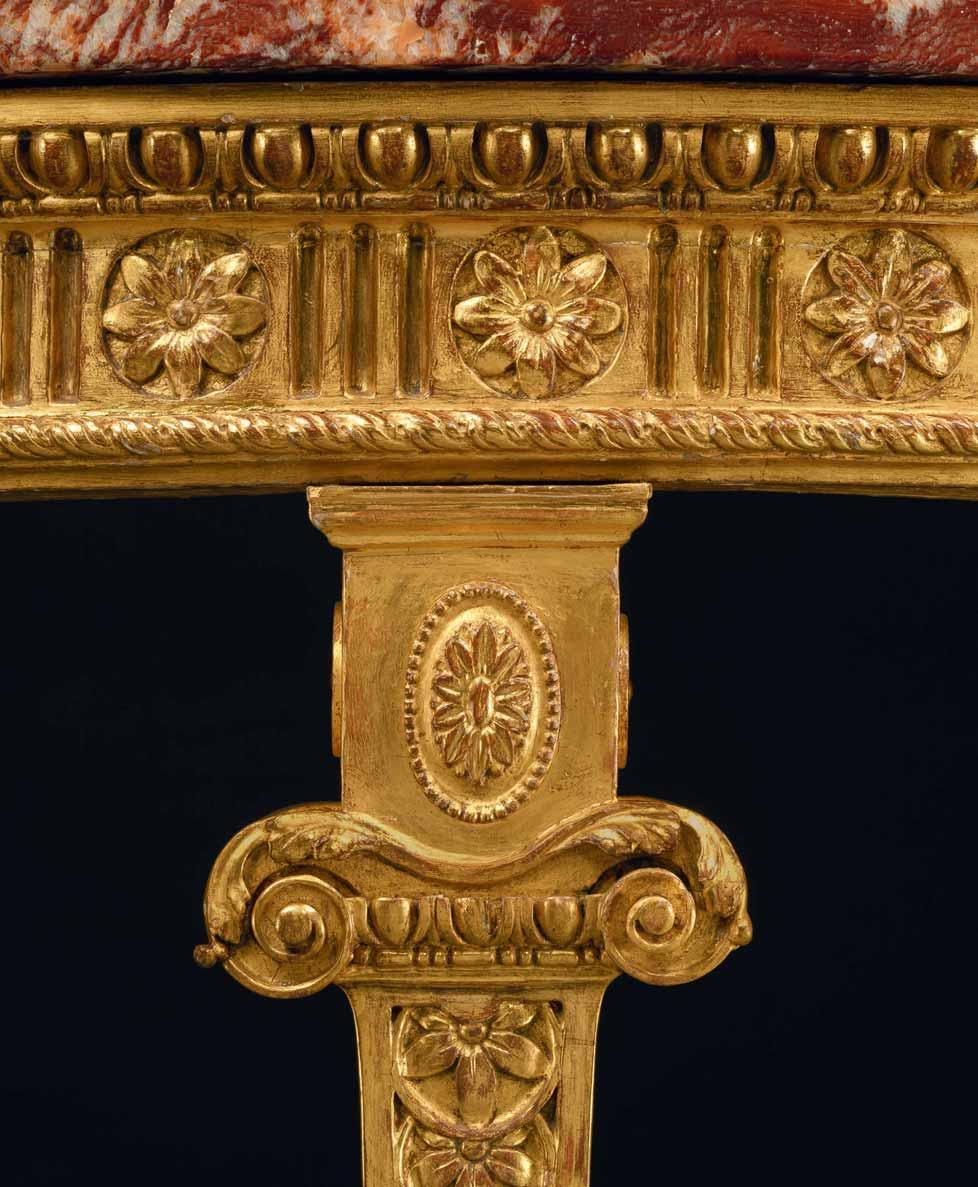
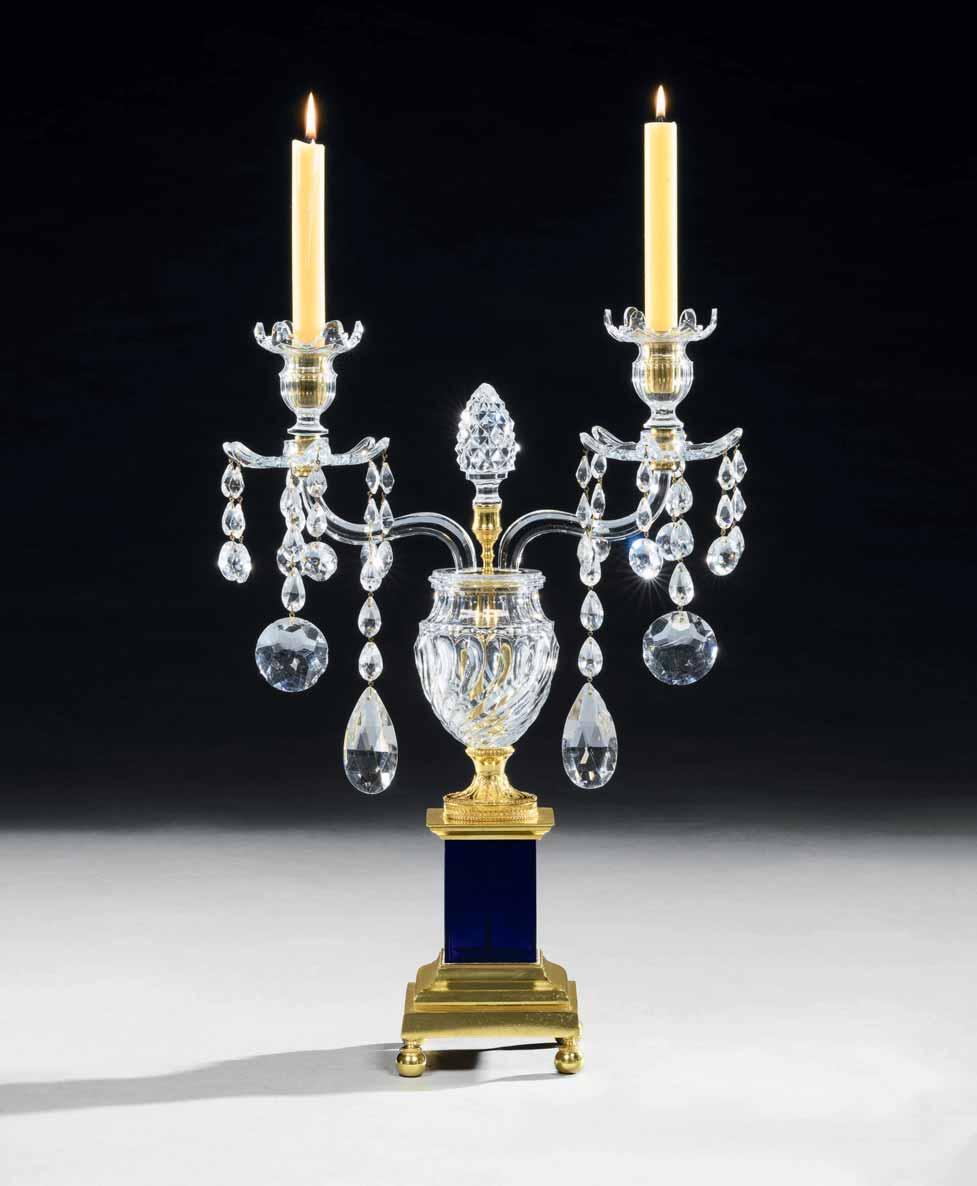
A PAIR OF GEORGE III ORMOLU MOUNTED COBALT AND CUT GLASS TWO LIGHT CANDELABRA BY PARKER & PERRY
Note: The candelabra have survived in remarkable untouched condition.
English, circa 1780
Height: 20¼ in; 51.5 cm
Width: 15 in; 38 cm
Depth: 5 in; 13 cm
Provenance: Private collection, Europe.
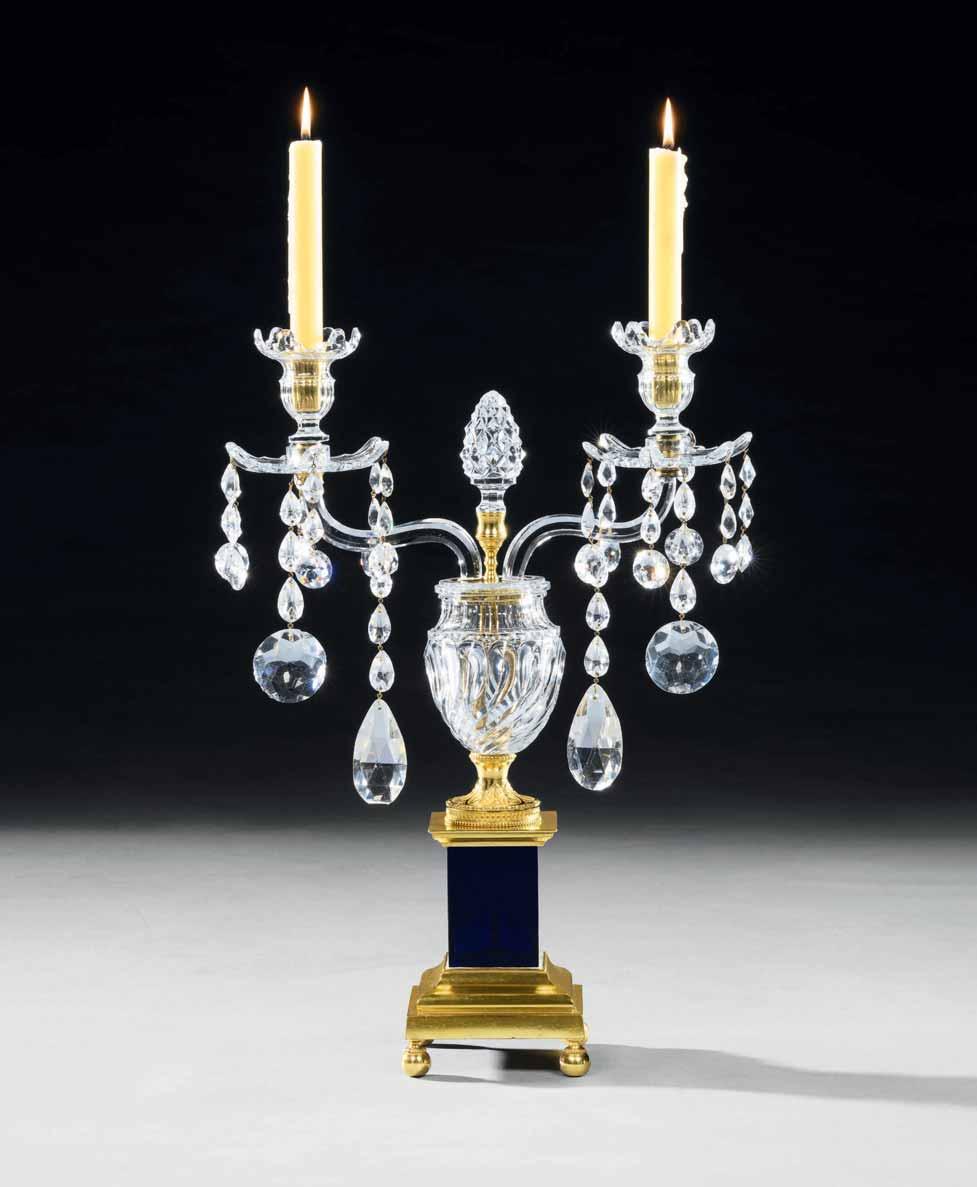
Literature: Martin Mortimer, The English Glass Chandelier, 2000, p. 108, pl. 55. Ronald Phillips Ltd., ‘Antique English Furniture’, catalogue, 2011, pp. 70–71.
A very similar pair of candelabra, also with cobalt blue glass bases and attributed to Parker & Perry, but with three candles each rather than two, is illustrated in our 2011 catalogue.
A SET OF FOURTEEN GEORGE III MAHOGANY DINING CHAIRS INCLUDING FOUR SIDE CHAIRS OF LATER DATE
Note: Some upholstery rails have been replaced.
The set includes two armchairs and eight side chairs, and a further four side chairs of later date.
English, circa 1765
The armchairs:
Height: 37¾ in; 96 cm
Height of seat: 18 in; 46 cm
Width: 27½ in; 70 cm
Depth: 26½ in; 67.5 cm
The side chairs:
Height: 37½ in; 95 cm
Height of seat: 18 in; 46 cm
Width: 24 in; 61 cm
Depth: 23½ in; 60 cm
The back splats are exceptionally finely carved. The width of the chairs is slightly more generous than in most dining chairs of the period, and combined with the saddle seat this provides extra sitting comfort.
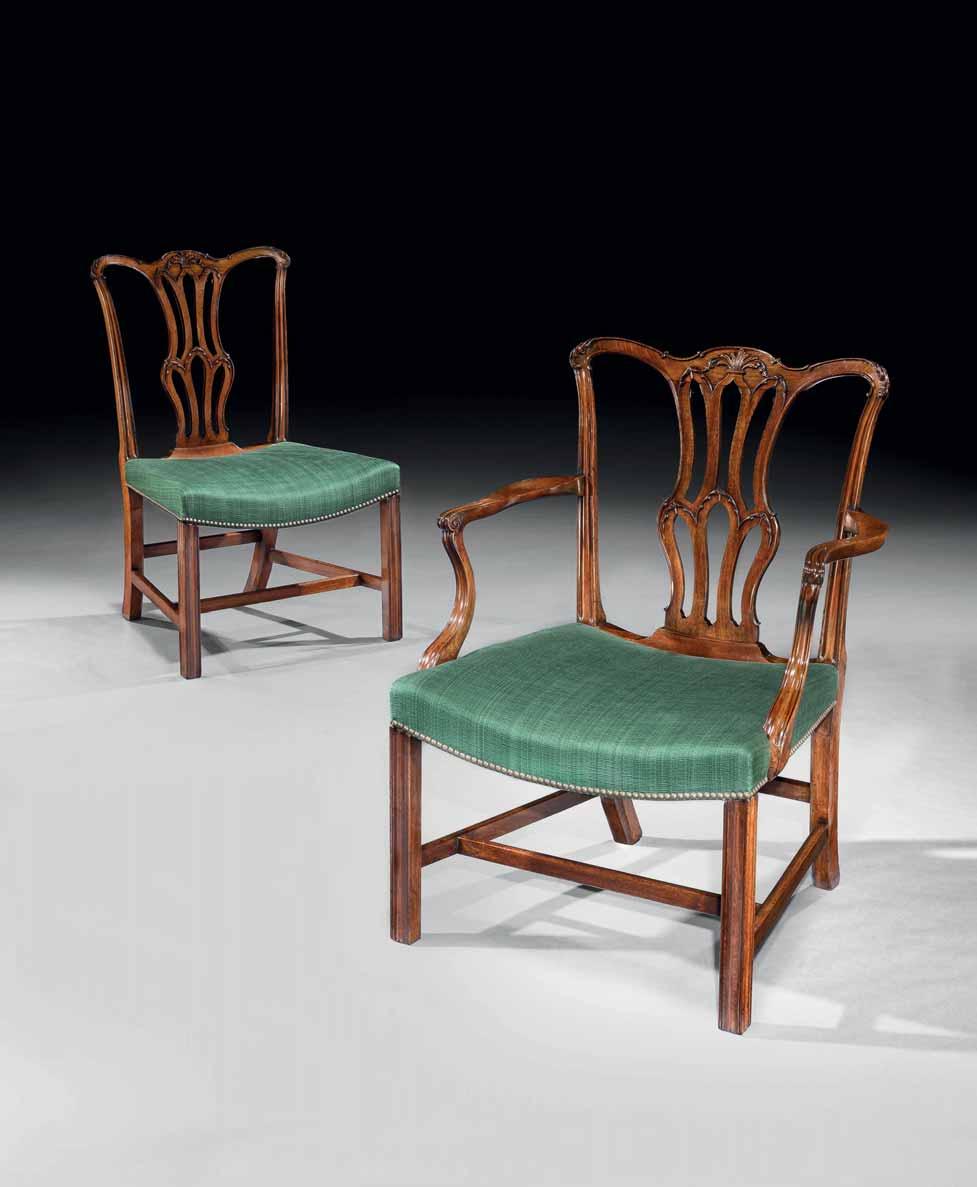
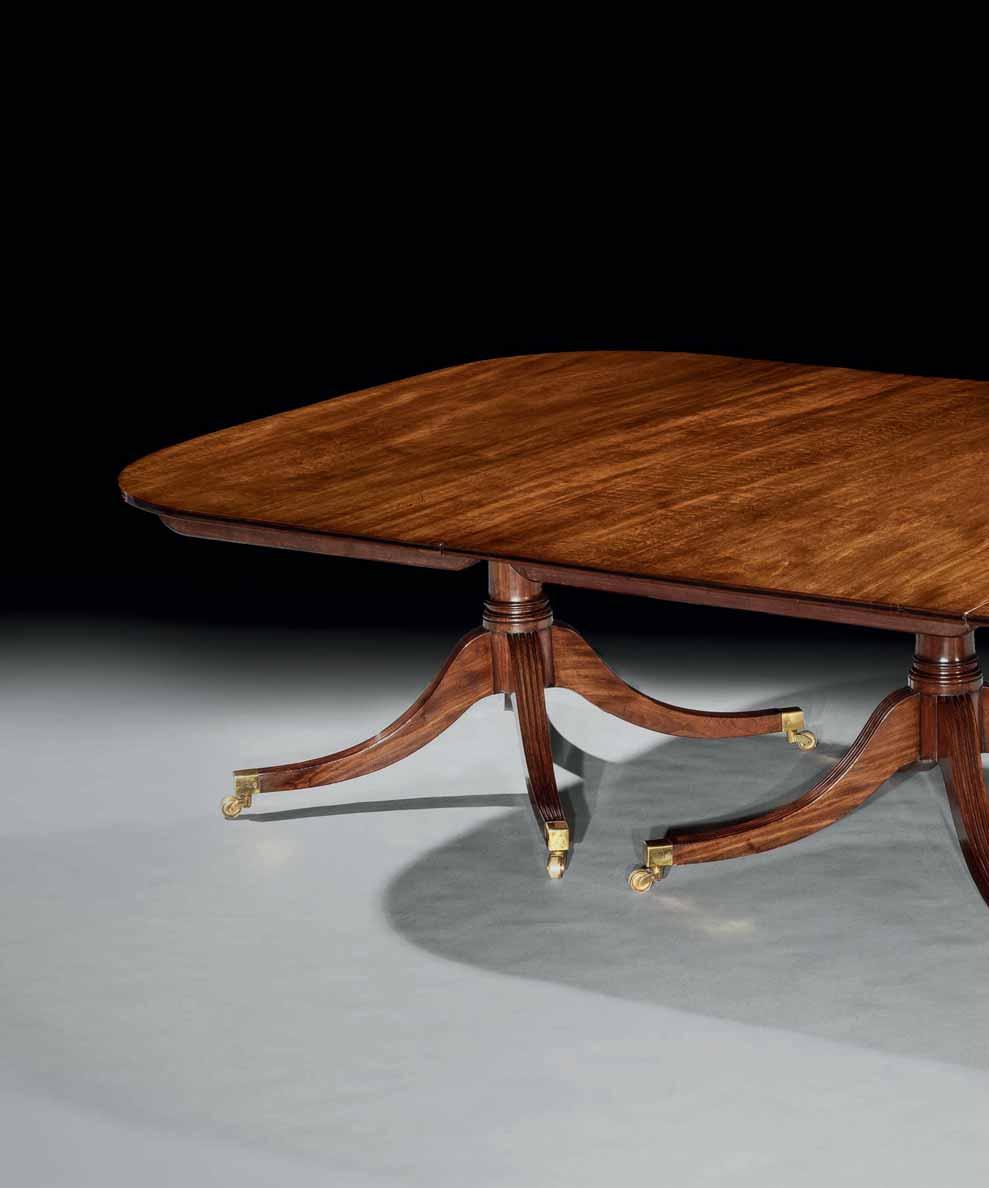
A GEORGE III MAHOGANY THREE PEDESTAL DINING TABLE
Note: The table retains its original brass box castors and has not been reduced in width. The extension leaves are 18th century replacements.
English, circa 1790
Height: 2 ft 4¼ in; 72 cm
Width (with leaves): 16 ft 10½ in; 514.5 cm
Width (without leaves): 9 ft 6¼ in; 290 cm
Depth: 5 ft 3 in; 160 cm
Provenance: Ronald Phillips Ltd., London, England; Private collection, USA.
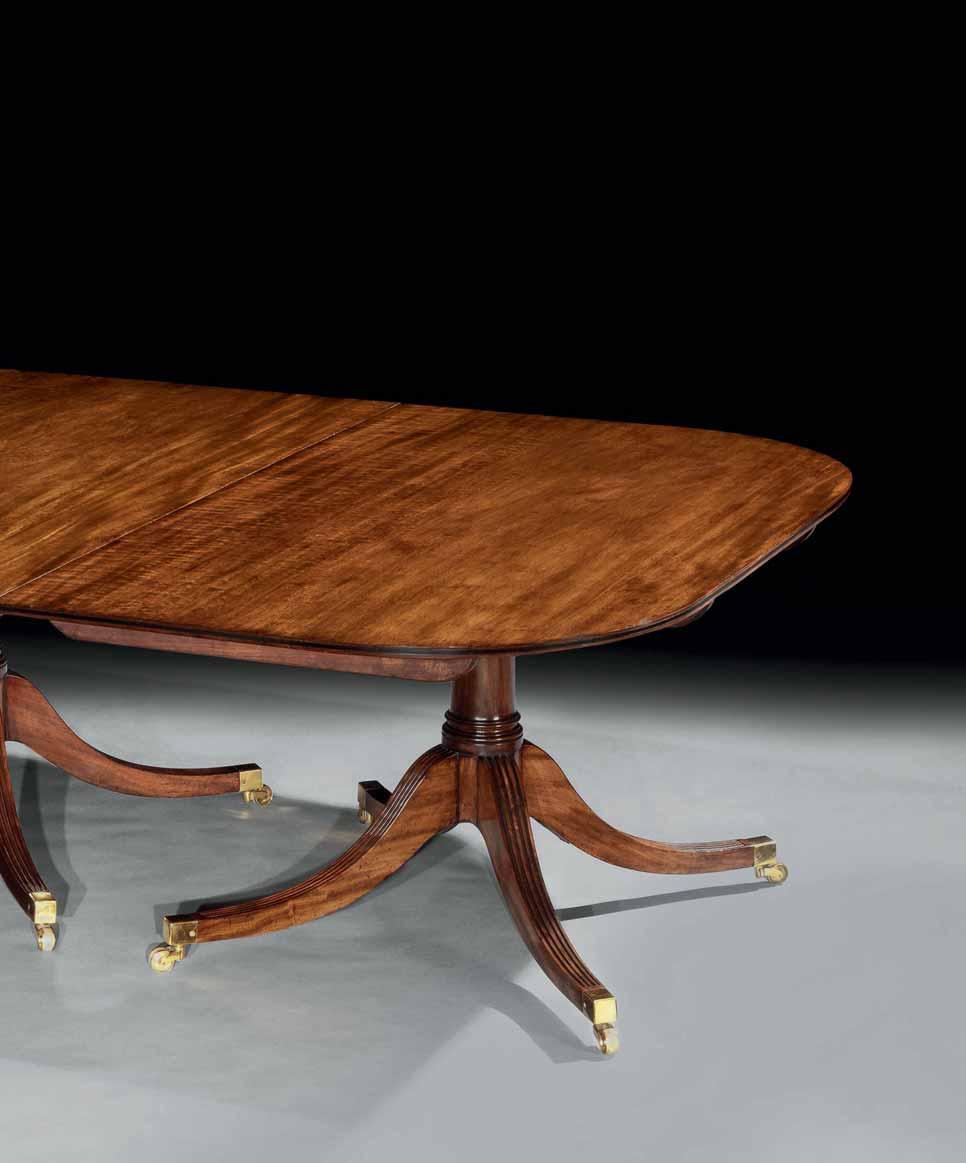
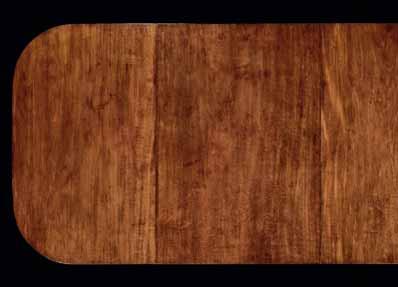
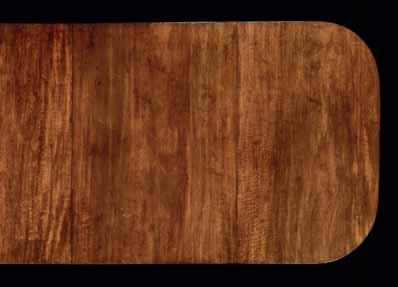
A GEORGE IV EIGHT LIGHT CUT GLASS CHANDELIER ATTRIBUTED TO F. & C. OSLER
English, circa 1820
Height: 48 in; 122 cm
Diameter: 29 in; 74 cm
Provenance: Ronald Phillips Ltd., London, England; Private collection, England.
Literature: Martin Mortimer, The English Glass Chandelier, 2000, p. 158, pl. 96.
The shapes of the baluster shaft, drip pans and droplets of this chandelier closely relate to chandeliers by the Birmingham based chandelier manufacturer F. & C. Osler.
A very similar chandelier also attributed to Osler is in the collection of the Metropolitan Museum of Art, New York, as part of the Mrs. Harry Horton Benkard bequest.
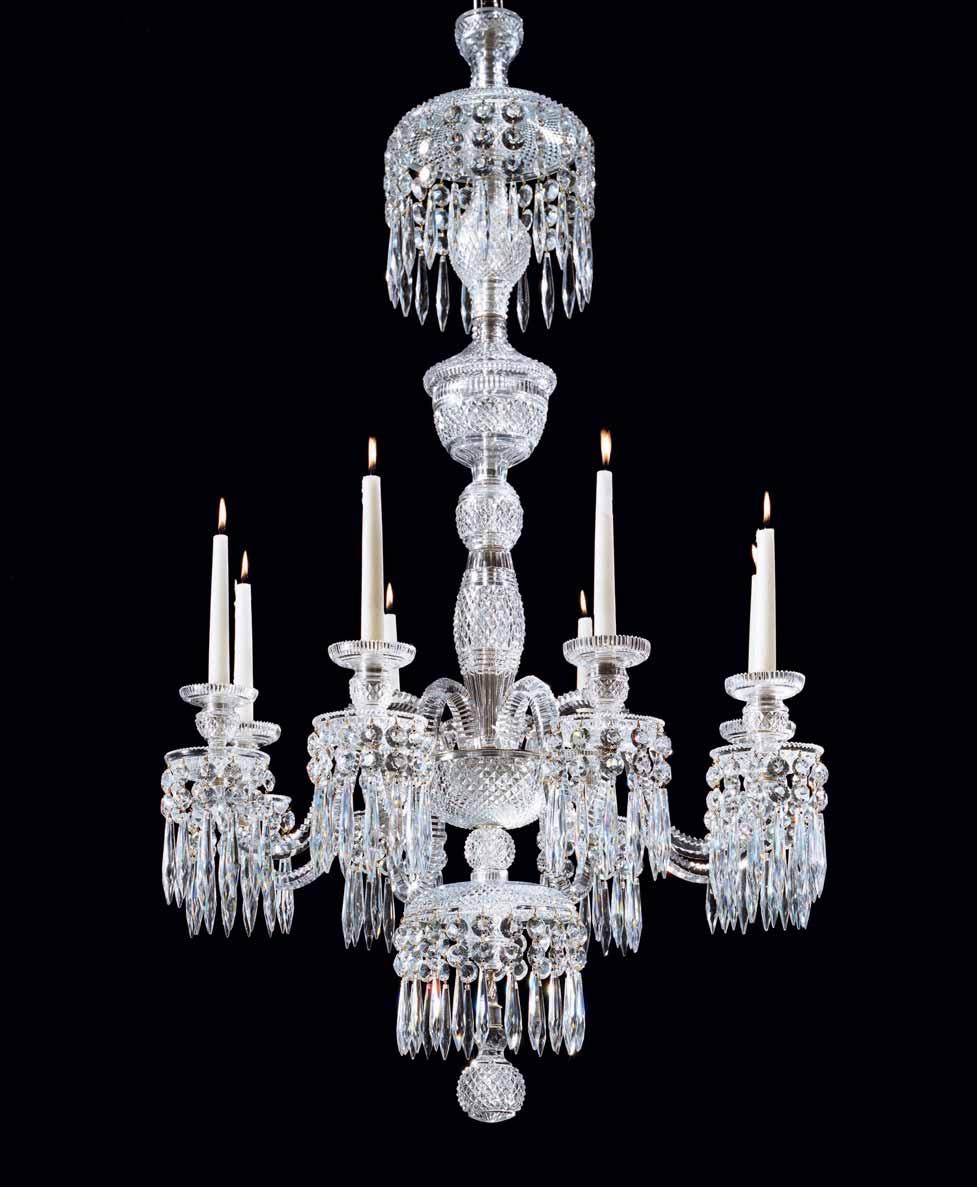
A PAIR OF IRISH GEORGE III BRASS BOUND MAHOGANY SPIRALLY REEDED PEAT BUCKETS
Note: The buckets retain their original forged brass bands and handles. The brass liners are of later date.
Irish, circa 1765
Height (handle up): 25 in; 63.5 cm
Height (handle down): 16½ in; 42 cm
Diameter: 15¾ in; 40 cm
Provenance: Private collection, Ireland.
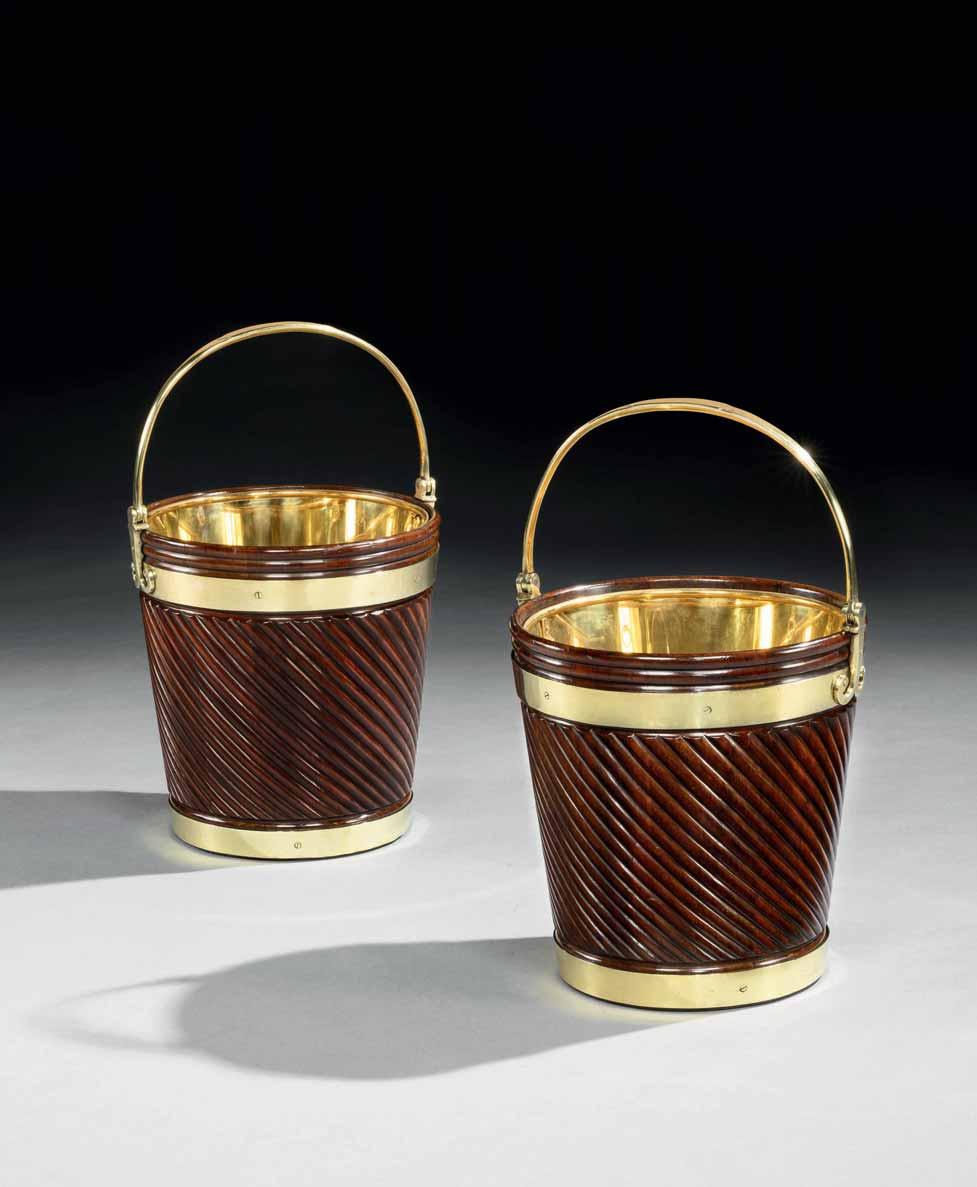
Note: One mirror plate is a later replacement.
Irish, circa 1780
Height: 33 in; 84 cm
Width: 21 in; 53 cm
Depth: 10 in; 25.5 cm
Provenance: Private collection, England.
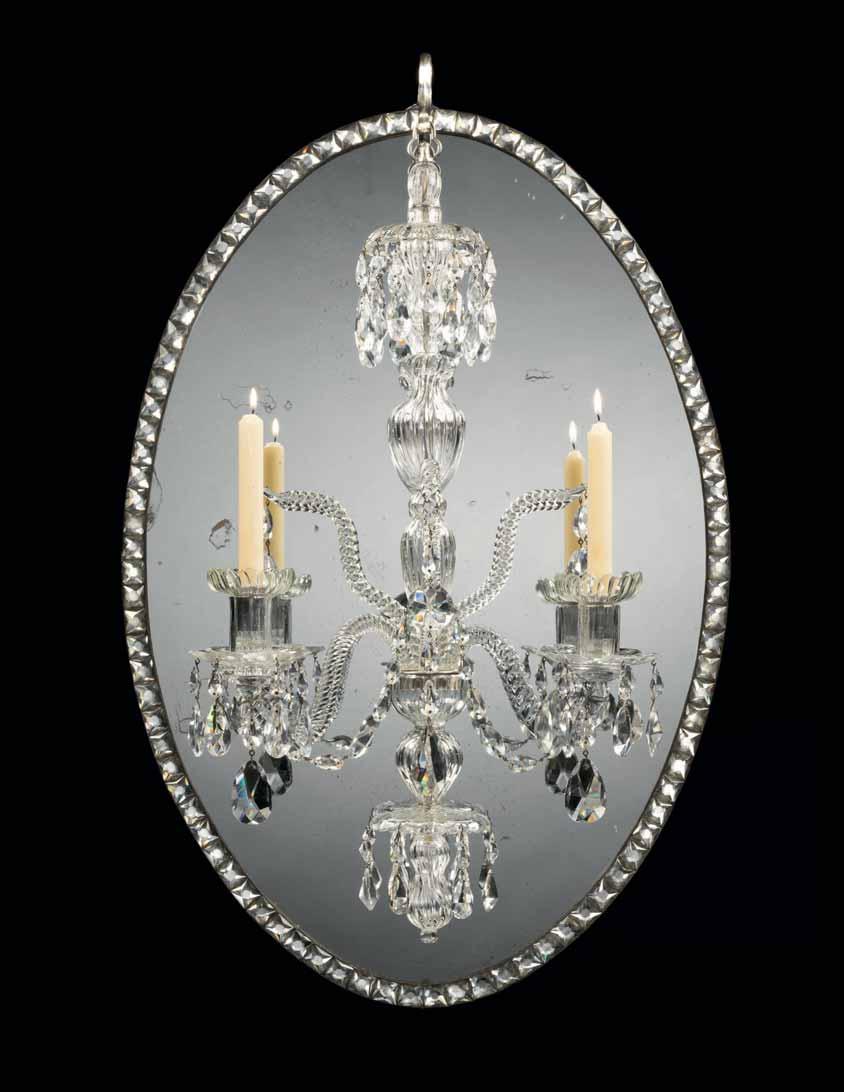

A PAIR OF IRISH GEORGE III CUT GLASS MIRROR CHANDELIERS

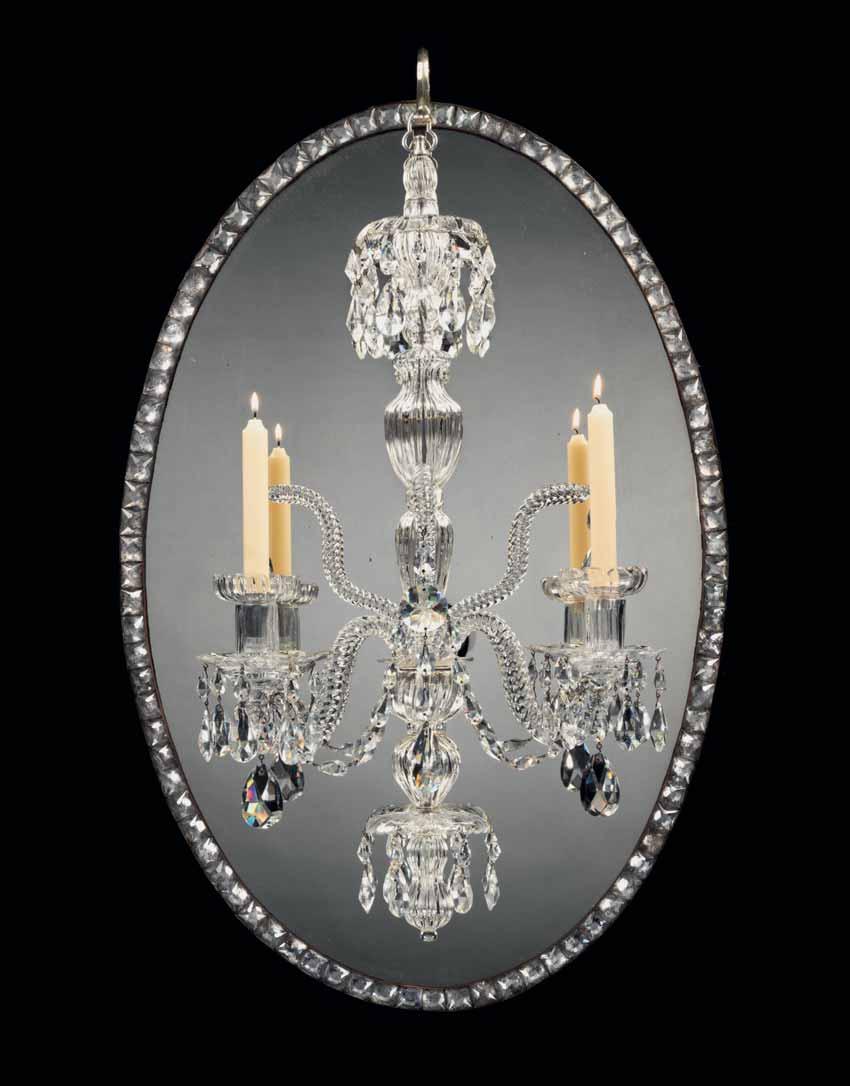
THE SCAMPSTON BANQUETING HOUSE SERVING TABLE
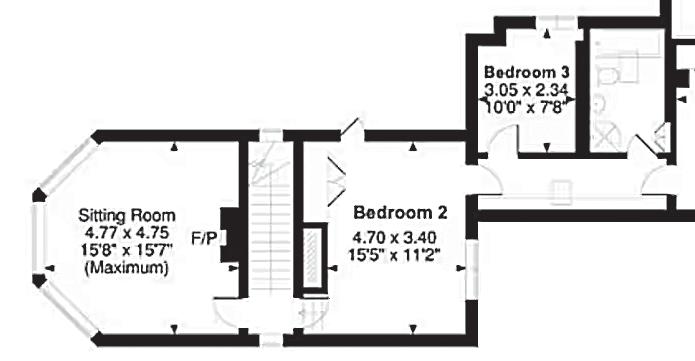

A GEORGE III MAHOGANY CORNER SERVING TABLE ATTRIBUTED TO THOMAS CHIPPENDALE
English, circa 1775
Height: 2 ft 8¼ in; 82.5 cm
Width: 5 ft 10¾ in; 179.5 cm
Depth: 3 ft 7½ in; 110.5 cm
Provenance:
By repute, supplied to Sir William St. Quintin (1729–1795), 4th Baronet, Scampston Hall, Yorkshire, England; Private collection, England.
Literature: Adam Bowett and James Lomax, ‘Thomas Chippendale 1718–1779: A Celebration of British Craftmanship and Design’, tercentenary exhibition catalogue, 2018, pp. 110–11.
The distinctive design of the legs, an unusual combination of an oval patera followed by a block with five flutes above a tapered leg with sunken arched panel featuring a carved floret halfway down and terminating in the characteristic Chippendale block foot, is repeated exactly on a set
of dining chairs supplied by Chippendale to Sir William St. Quintin, 4th Baronet, for Scampston Hall, Yorkshire.
Sir William inherited the vast Scampston estate from his father, also Sir William. The latter had married well, to Rebecca Thompson, adding her fortune to the estate. Their son’s marriage to Charlotte Fane in 1758 brought in further wealth, but in 1762 Charlotte died. Sir William did not remarry. Instead he expanded Scampston, employing John Carr and Capability Brown and adding a deer park and a banqueting house to the estate.
The banqueting house originally contained only a drawing room on the ground floor and an octagonal dining room on the first floor. The dining chairs, a dining table and the corner serving table would have furnished the dining room. The floorplan of the banqueting house shows that the dining room has canted corners on one side. The opposite side features a fireplace in the centre, and the only remaining space is one corner, the other side being occupied by the entrance door.
Over the centuries that followed, further additions were made to the rear of the building, but the front with the original dining room remains unchanged.
Floorplan of the first floor of Deer Park House, formerly the Banqueting House, with the top of the serving table shown in position
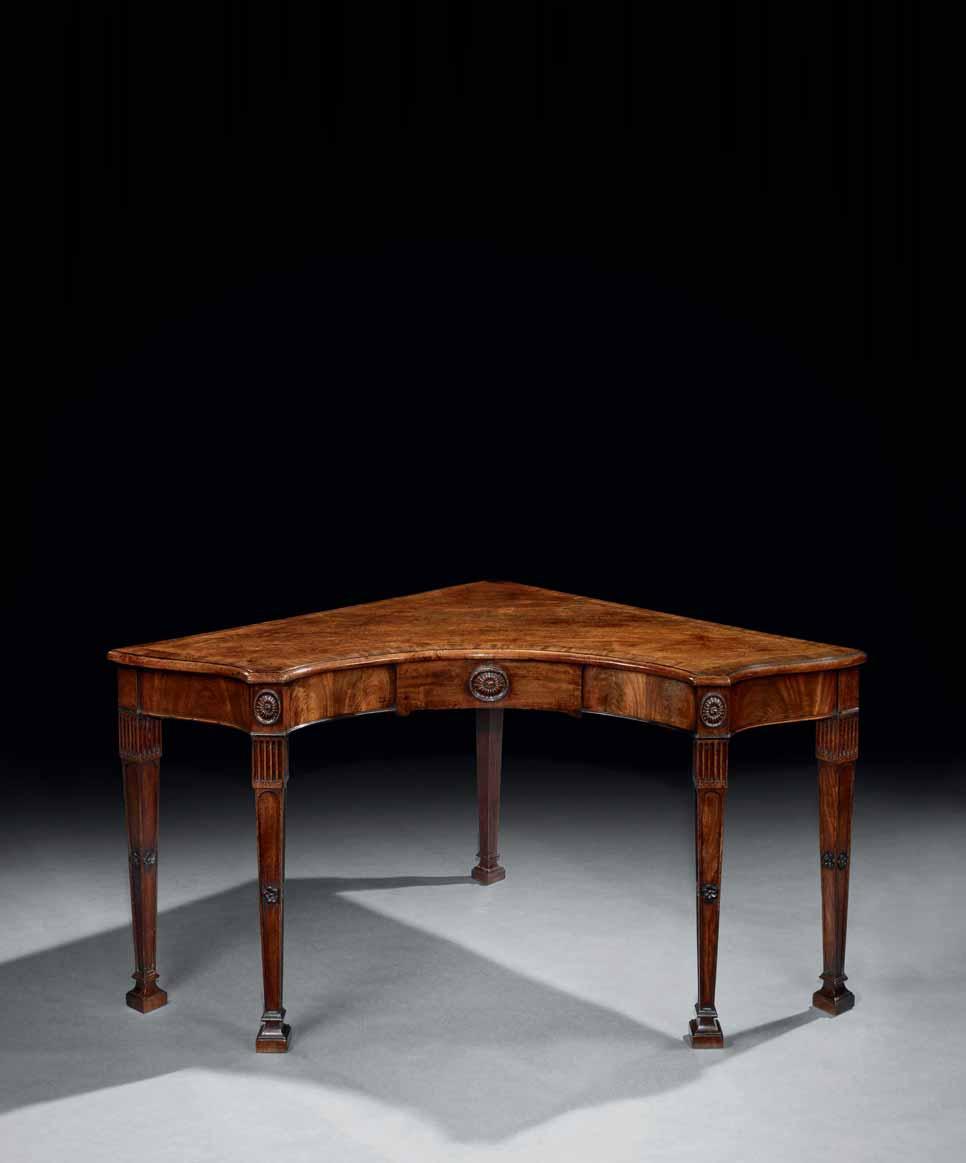
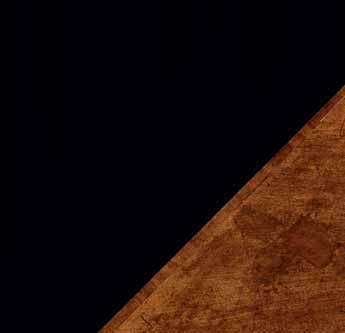
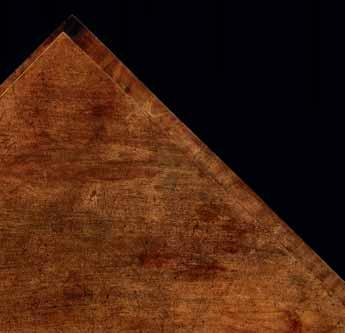

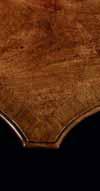

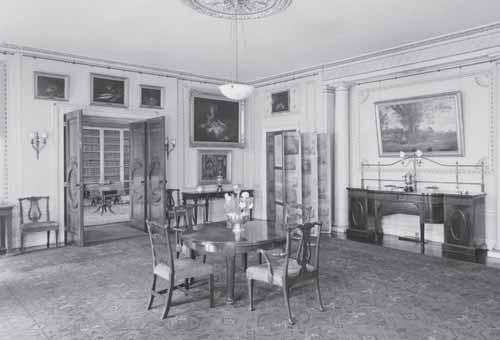
110
A GEORGE III MAHOGANY SIDE CHAIR ALMOST CERTAINLY BY THOMAS CHIPPENDALE
English, circa 1775
Height: 37 in; 94 cm
Height of seat: 19 in; 48.5 cm
Width: 23 in; 58.5 cm
Depth: 22¾ in; 58 cm
Provenance: Probably commissioned by Sir William St. Quintin, 4th Baronet, Scampston Hall, Yorkshire, England; Clinton Howell Inc., New York, USA; Ronald Phillips Ltd., London, England; Private collection, London, England.
Exhibited: Tercentenary exhibition, ‘Thomas Chippendale 1718–1779, A Celebration of British Craftsmanship’, Leeds, 2018.
Illustrated: Adam Bowett and James Lomax, ‘Thomas Chippendale 1718–1779: A Celebration of British Craftsmanship’, tercentenary exhibition catalogue, 2018, p. 111. Ronald Phillips Ltd., ‘The Legacy of Thomas Chippendale’, catalogue, 2018, p. 187, item A11.
Literature: Partridge Fine Arts Ltd., ‘Summer Exhibition 1983’, catalogue, pp. 50–51. Ronald Phillips Ltd., ‘The Legacy of Thomas Chippendale’, catalogue, 2018, pp. 112–14, item 22.
Interestingly the set of chairs remaining at Scampston retains only side chairs and two armchairs converted from side chairs. One original armchair was discovered by Simon Phillips in the 1980s and was sold to Partridge Fine Arts Ltd. The same armchair was later exhibited at Masterpiece London with Ronald Phillips Ltd. in their exhibition ‘The Legacy of Thomas Chippendale’ and then sold to a private collection in the USA.
The chairs in situ at Scampston Hall, Yorkshire, 1953. Courtesy of Country Life/Future Publishing Ltd.
THE SCAMPSTON CHIPPENDALE CHAIR

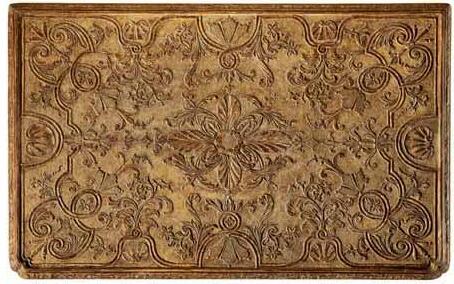
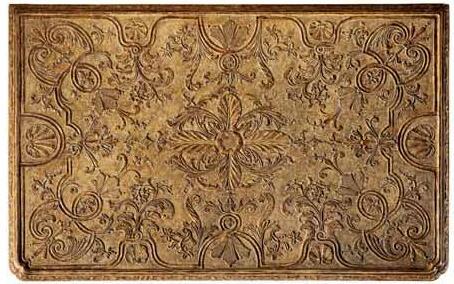
Note: The tables retain much of the original gilding.
English, circa 1720
Height: 30¼ in; 77 cm
Width: 38½ in; 98 cm
Depth: 24 in; 61 cm
Provenance: Barbara Rockefeller, New York, USA; Gerald Bland, New York, USA; Private collection, London, England.
A PAIR OF GEORGE I GILT GESSO SIDE TABLES ATTRIBUTED TO JAMES MOORE
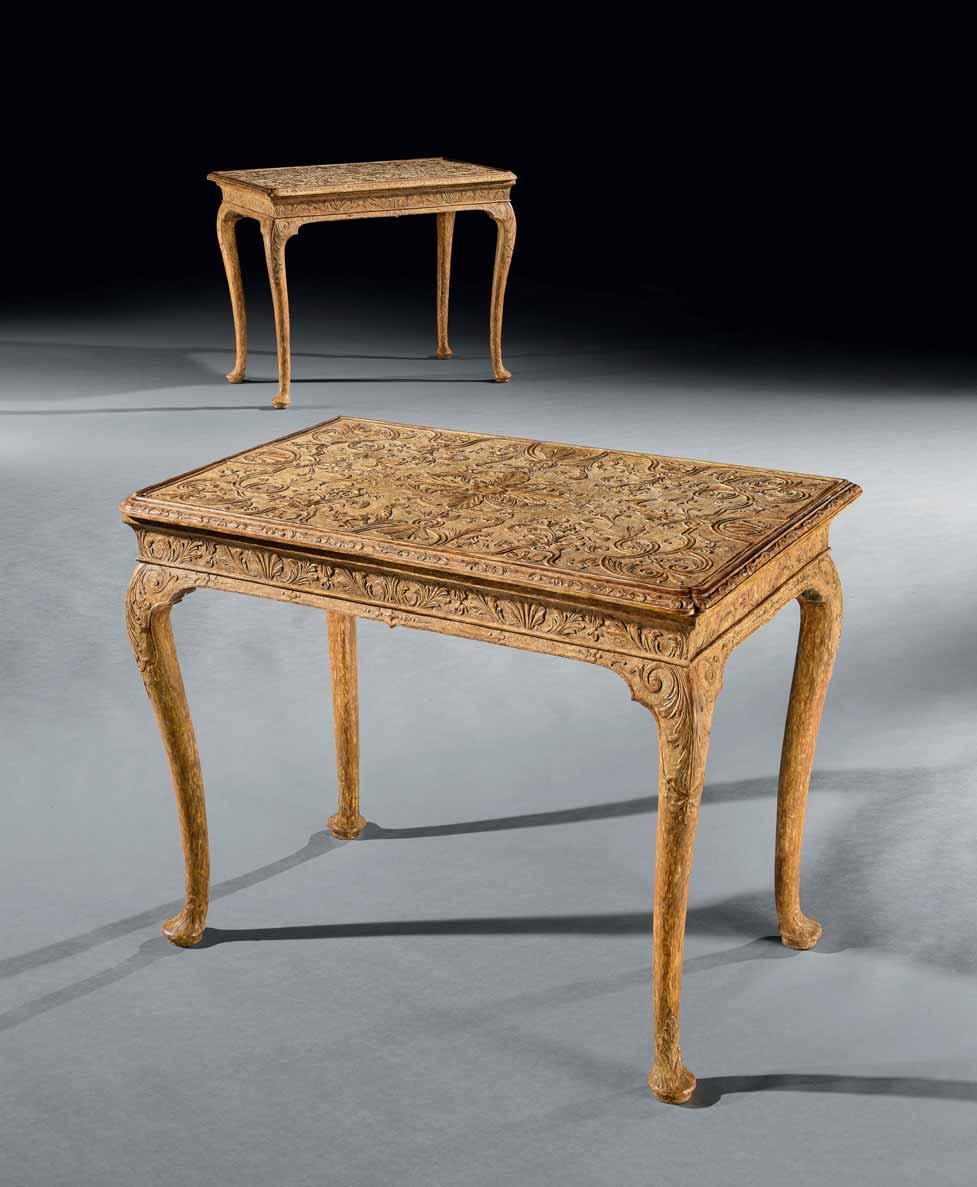
THE ROCKEFELLER GESSO TABLES
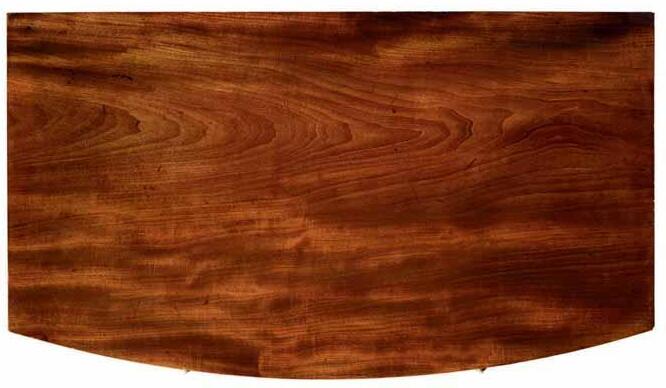
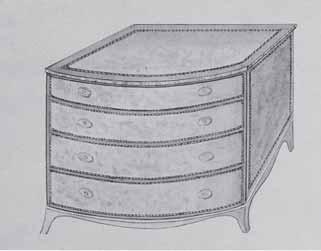
A PAIR OF GEORGE III MAHOGANY BOW-FRONTED CHESTS OF DRAWERS IN THE MANNER OF GILLOWS
Note: The chests retain their original brass angular swan-neck handles. The brushing slides are veneered with mahogany.
English, circa 1795
Height: 37¼ in; 94.5 cm
Width: 38¼ in; 97 cm
Depth: 21½ in; 54.5 cm
Provenance: Sandford Orcas Manor, Sherborne, Dorset, England.
The mahogany veneer has faded to a pleasing colour and the surface has acquired a good patina.
A drawing by Gillows for a bow-fronted chest of drawers. City of Westminster Archives
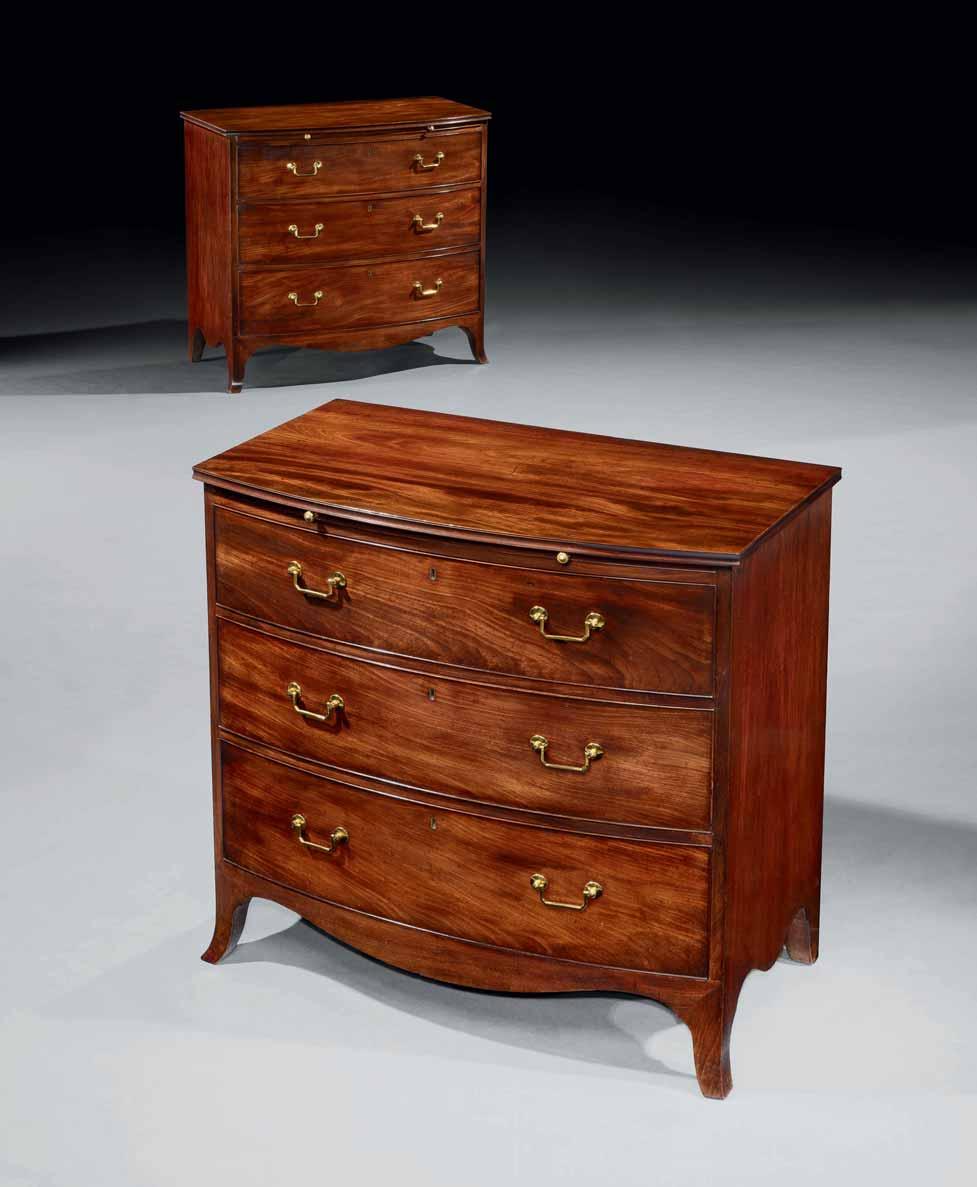
A PAIR OF GEORGE II GILTWOOD WALL APPLIQUES
Note: The appliqués have been re-gilded.
English, circa 1755
Height: 43½ in; 110.5 cm
Width: 16¼ in; 41.5 cm
Depth: 8 in; 20.5 cm
Provenance: Clifford Wright Antiques Ltd., London, England; Ronald Phillips Ltd., London, England; Hotspur Ltd., London, England; Private collection, USA.
Exhibited: British Antique Dealers Association Fair, London, 1997; with Ronald Phillips Ltd.
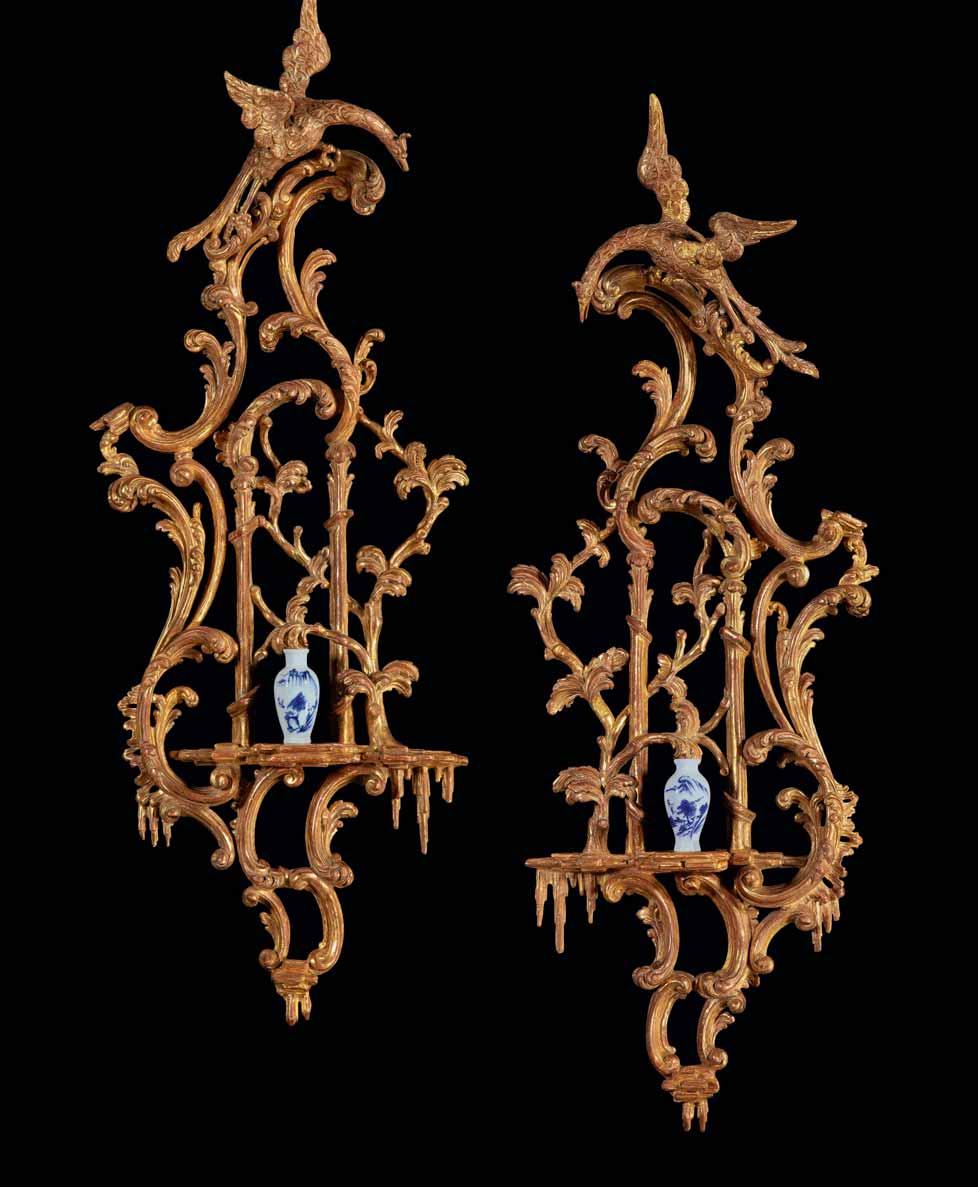
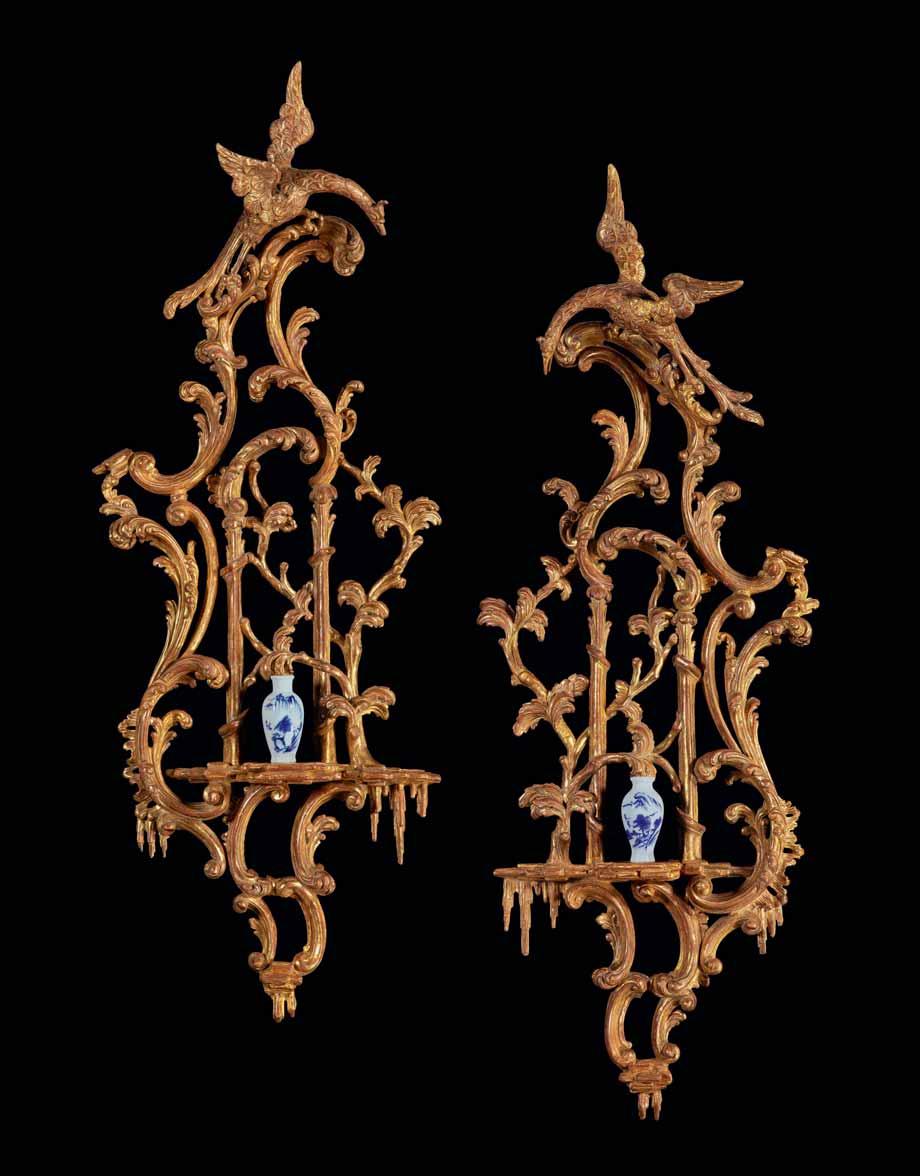
A PAIR OF GEORGE III MAHOGANY CURVED BENCHES
English, circa 1770
Height: 19½ in; 49.5 cm
Width: 52¾ in; 134 cm
Depth: 19¾ in; 50.5 cm
A related suite of seat furniture with similarly carved corner mouldings to the legs was formerly at Brynkinalt Hall, Wales, the ancestral home of the Trevor family.
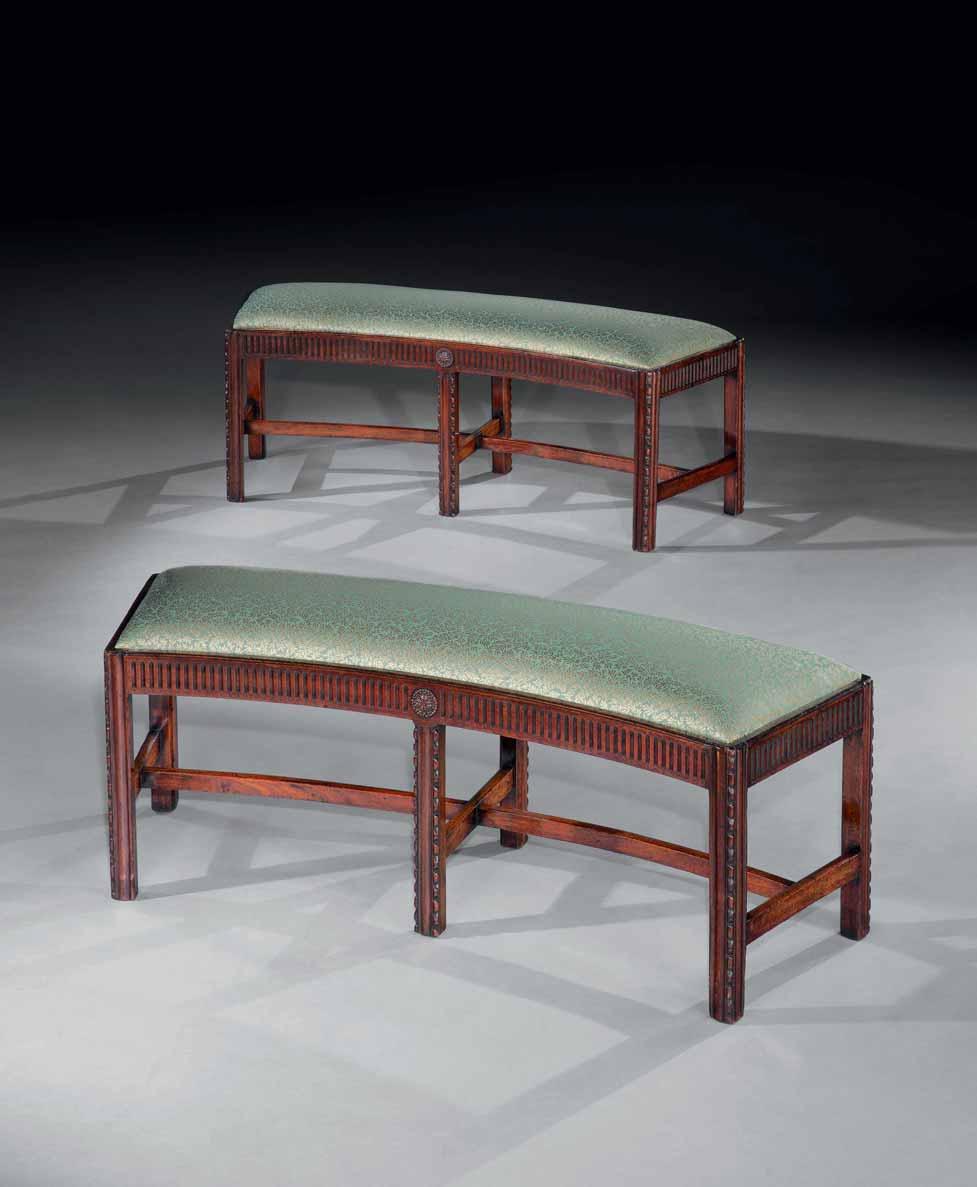

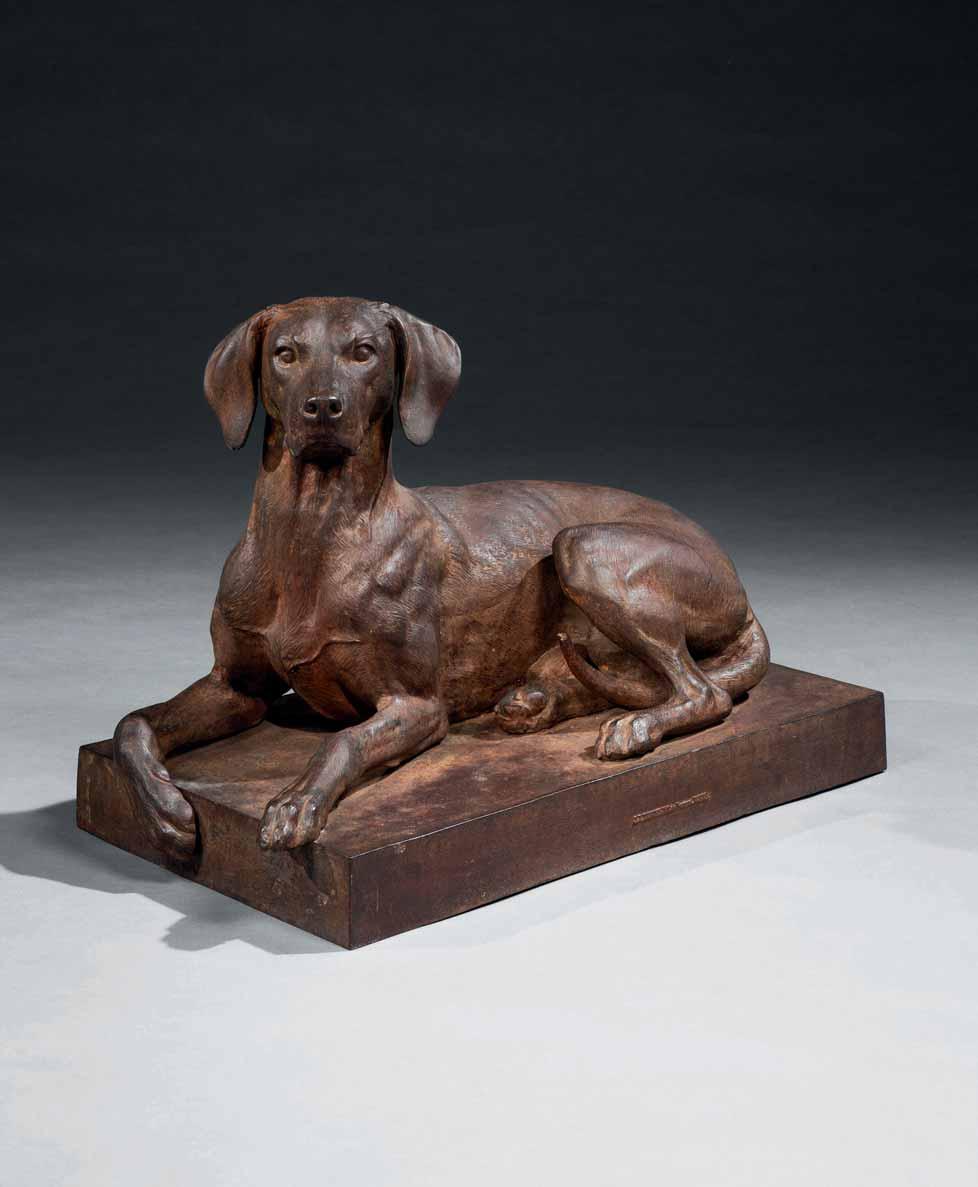
A PAIR OF SECOND EMPIRE CAST IRON MODELS OF RECUMBENT HUNTING DOGS BY JEAN-JACQUES
Note: Both models are stamped at the base with the maker’s mark ‘J.J. Ducel, Me de Forges, Paris’. French, circa 1870
Height: 19½ in, 49.5 cm
Width: 28 in, 71 cm
Depth: 15½ in, 39.5 cm
DUCEL
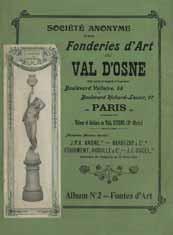
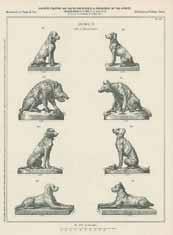
Designs for the hounds in Société anonyme des fonderies d’art du Val d’Osne, circa 1900, pl. 631, nos 65 and 66
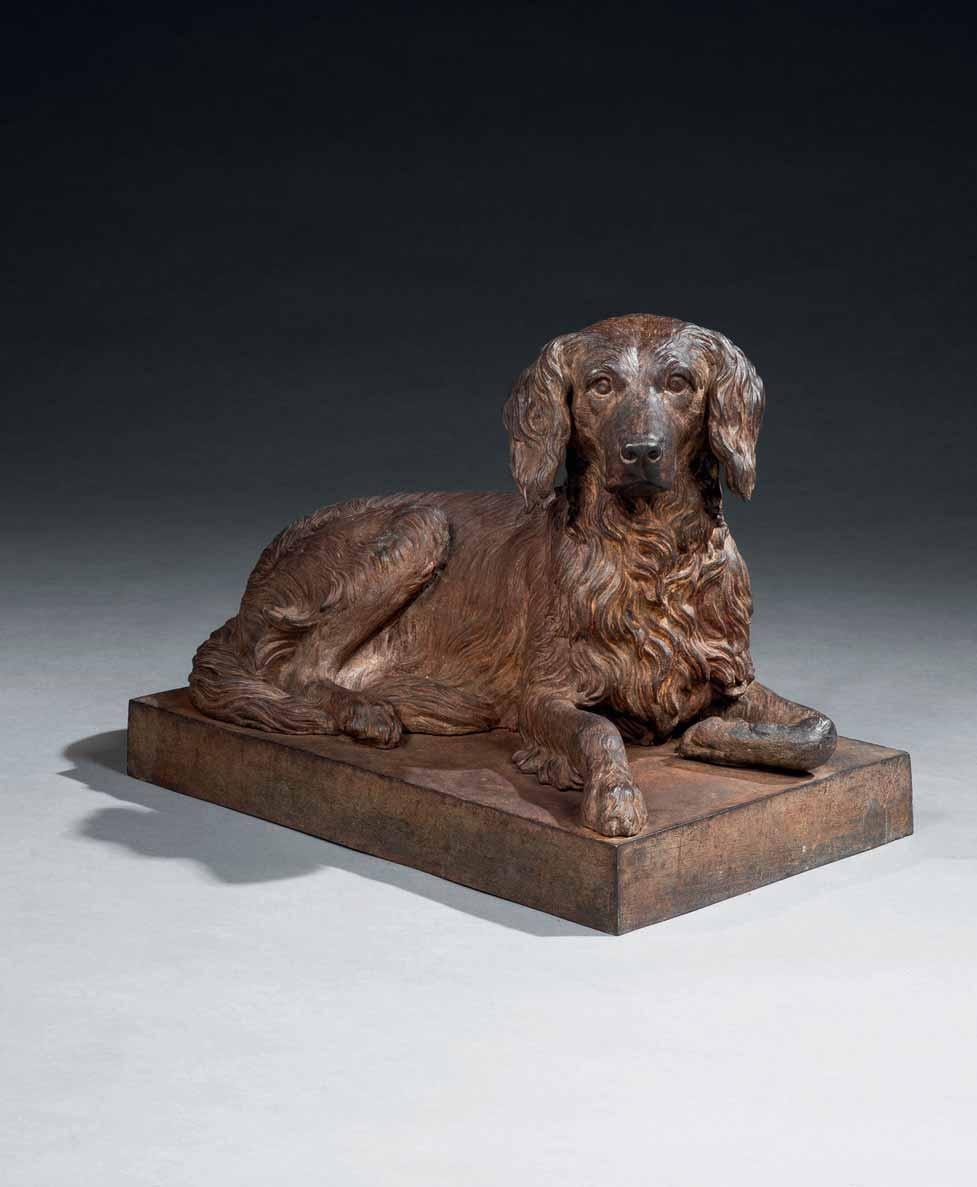
Jean-Jacques Ducel (1801–1877) was a master founder for casting metal and headed the largest 19th century French metal foundry, which bore his name.
Famous for their monumental cast iron fountains and garden objects, the Ducel foundry also produced a range of fine life-size models of animals, in particular dogs.
The exceptional crispness of the carved detail on these dogs suggests this particular model was cast early in the lifespan of the mould. Moulds are heated up to extreme temperatures and then cooled down again, and in the process they gradually deteriorate. Some definition is lost with each successive casting. In general only fifty to eighty castings are possible before a mould can no longer be used.
A GEORGE III GILTWOOD MIRROR
Note: The mirror retains the original central plate and border glasses. The frame has been re-gilded at some stage in the 20th century.
English, circa 1765
Height: 5 ft 7 in; 170 cm
Width: 2 ft 10½ in; 87.5 cm
Provenance: Ronald Phillips Ltd., London, England; Private collection, USA.
Literature: William Ince and John Mayhew, The Universal System for Household Furniture, 1762, pl. LXXX.

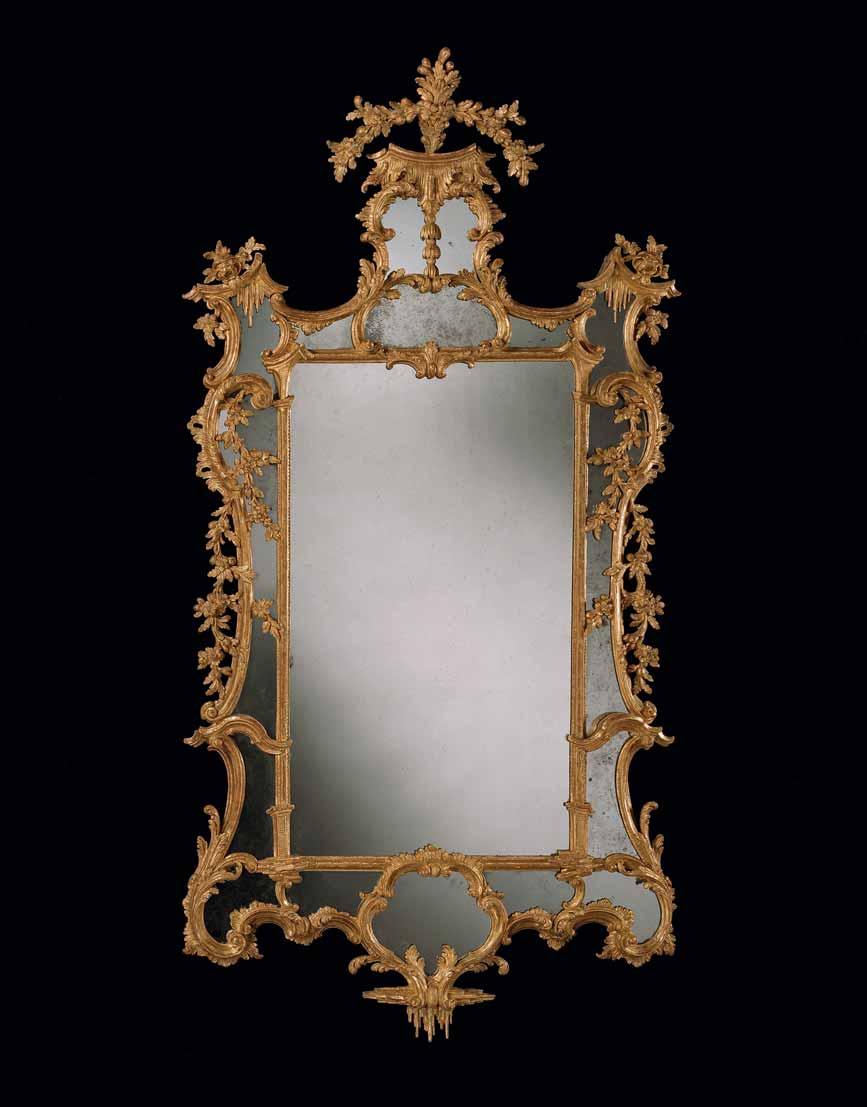
A PAIR OF REGENCY MAHOGANY THREE TIER WHAT-NOTS
English, circa 1815
Height: 29½ in; 75 cm
Width: 19¾ in; 50.5 cm
Depth: 19¾ in; 50.5 cm
Provenance: Private collection, London, England.
118
A PAIR OF REGENCY BRONZE DOGS
English, circa 1815
Height: 6¼ in; 16 cm
Width: 12 in; 30.5 cm
Depth: 6¼ in; 16 cm
Provenance: Private collection, London, England.
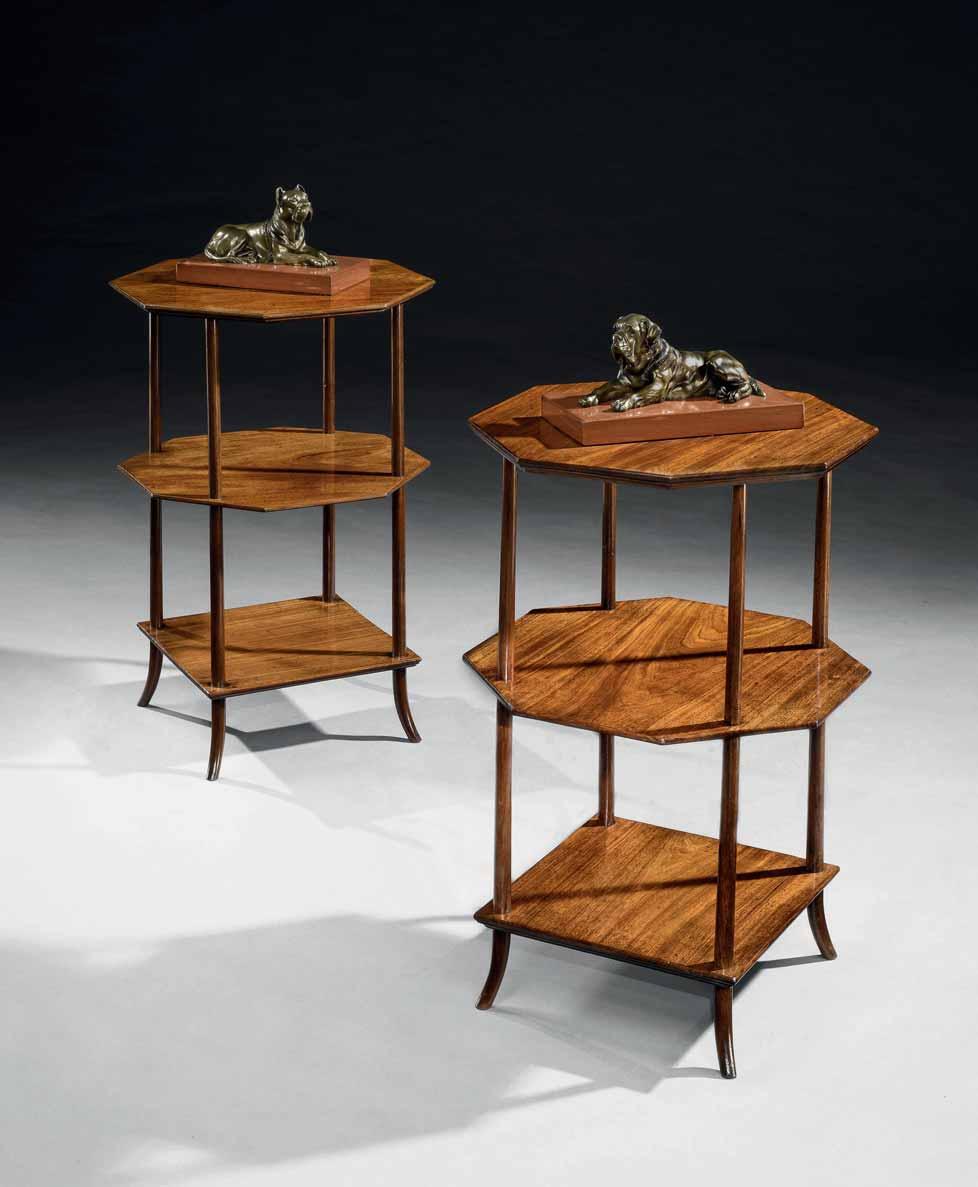

A GEORGE III MAHOGANY CONCERTINA ACTION CARD TABLE
Note: The hinges are stamped ‘H.Tibats’. The baize insert is of later date.
English, circa 1760
Height: 28¾ in; 73 cm
Knee height: 23 in; 58.5 cm
Width: 32 in; 81.5 cm
Depth (open): 31 in; 79 cm
Depth (closed): 15¾ in; 40 cm
The table has acquired an outstanding colour and patina. The stamp of H. Tibats on the metalwork is found only on furniture of the highest quality. The Tibats metalworking firm was based in Wolverhampton; they are listed as Tibbatts in The Birmingham, Wolverhampton, Walsall, Dudley, Bilston and Willenhall Directory of 1781.
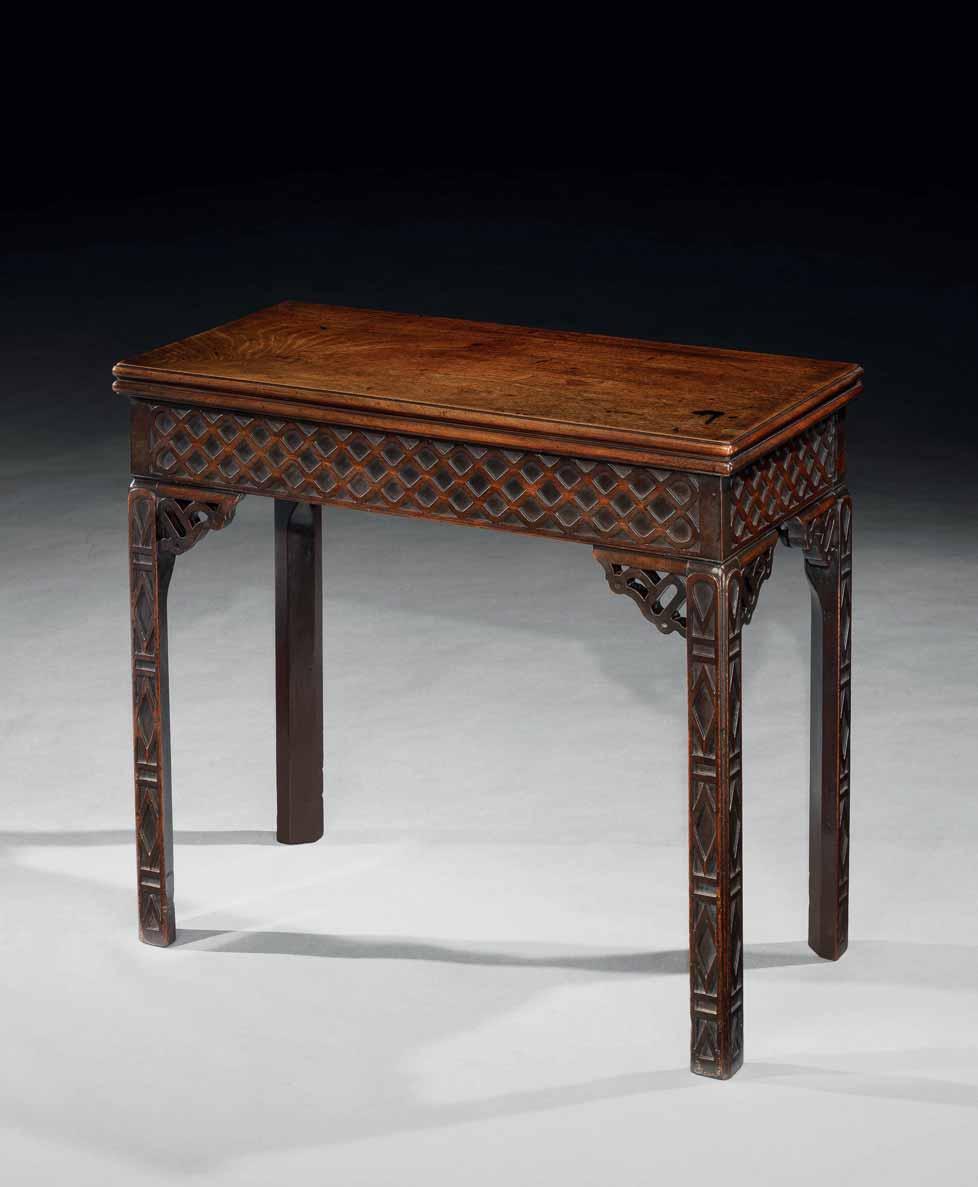
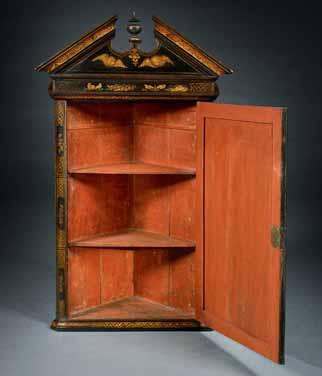
120
A GEORGE I BLACK AND GOLD JAPANNED CORNER HANGING CABINET ALMOST CERTAINLY BY JOHN BELCHIER
Note: The cabinet retains its original bevelled mirror plate. The turned finial is a period replacement. The interior is painted with a pale red wash and is fitted with two evenly spaced fixed shelves. Shelf supports are present for a third shelf, but this was never installed, as indicated by the even pale red surface: if it had been, this would have halved the upper space.
English, circa 1720
Height: 49 in; 124.5 cm
Width: 28¾ in; 73 cm
Depth: 14½ in; 37 cm
Provenance: Private collection, England.
The work of John Belchier stands out compared with that of other makers, and his cabinet-making is always of superior quality. His cabinets usually include bevelled mirror glass that was ground in his workshop. It has recently been discovered that he also personally carried out the japanning on his pieces and in some cases signed them with his name.
John Belchier’s style of decoration is distinct from that of other well-known workshops such as Giles Grendey’s. He used different colours, his brushwork is very different, and the figurative details in his work are unique to him. Unlike Grendey’s chunky figures, Belchier’s have interesting faces, finely drawn hands and individual qualities.
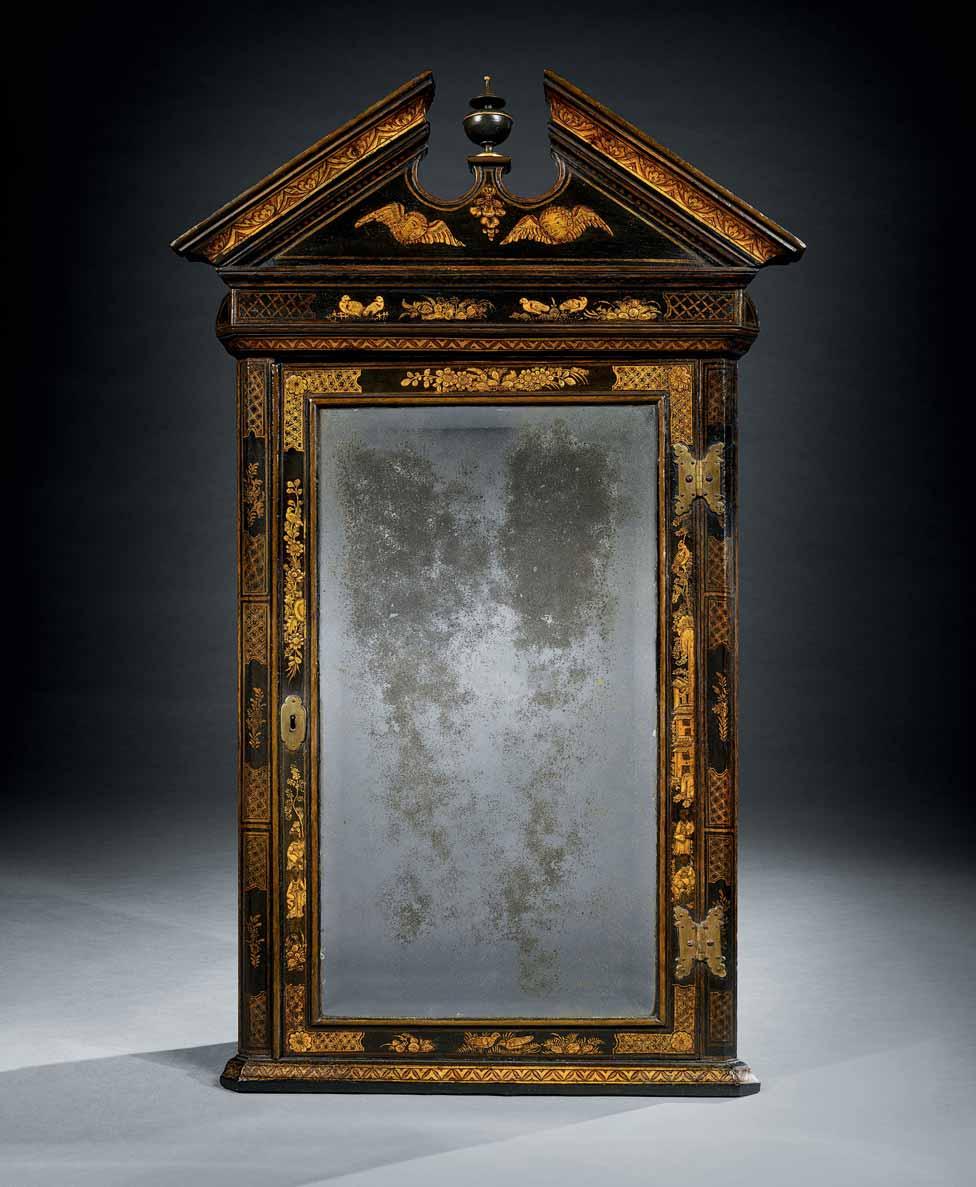
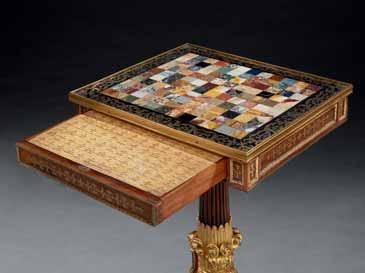
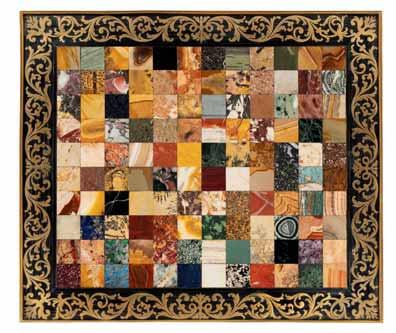
A GEORGE IV BRASS INLAID AND PARCEL GILT ROSEWOOD CENTRE TABLE WITH MARBLE SAMPLE TOP, ATTRIBUTED TO MOREL & SEDDON
Note: The table retains its original description of the 120 marble samples that make up the top, written in ink on paper, pasted to a board fitted into the frieze drawer.
English, circa 1830
Height: 30 in; 76.5 cm
Width: 20 in; 51 cm
Depth: 17¼ in; 44 cm
Provenance:
Mallett & Son Ltd., London, England; Private collection, England; Partridge Fine Arts Plc, London, England; Collection of Lili and Edmond Safra, New York, USA; Private collection, England.
Illustrated:
Mallett & Son Ltd., catalogue, 1995, pp. 46–7. Lanto Synge, Mallett Millennium, 1999, p. 311, fig. 404.
Literature: Christopher Gilbert, The Practical Cabinet Maker, 1973, no page no.
This exceptional table with its exuberant parcel gilt base fits well into the oeuvre of Nicholas Morel and George Seddon, who in 1827 formed a partnership to furnish the King’s new apartments at Windsor Castle. They also worked for his close friend the Duke of Northumberland, furnishing Northumberland House in London.
The giltwood sections of the base relate to some furnishings for Windsor Castle, in particular to a design for a tall candelabra stand, which supports the attribution. Perhaps more compelling is a photograph taken shortly before demolition of Northumberland House in 1874, showing the outline of what may be our table in the background. Unfortunately neither of these findings is firm enough evidence to confirm a first provenance for the table.
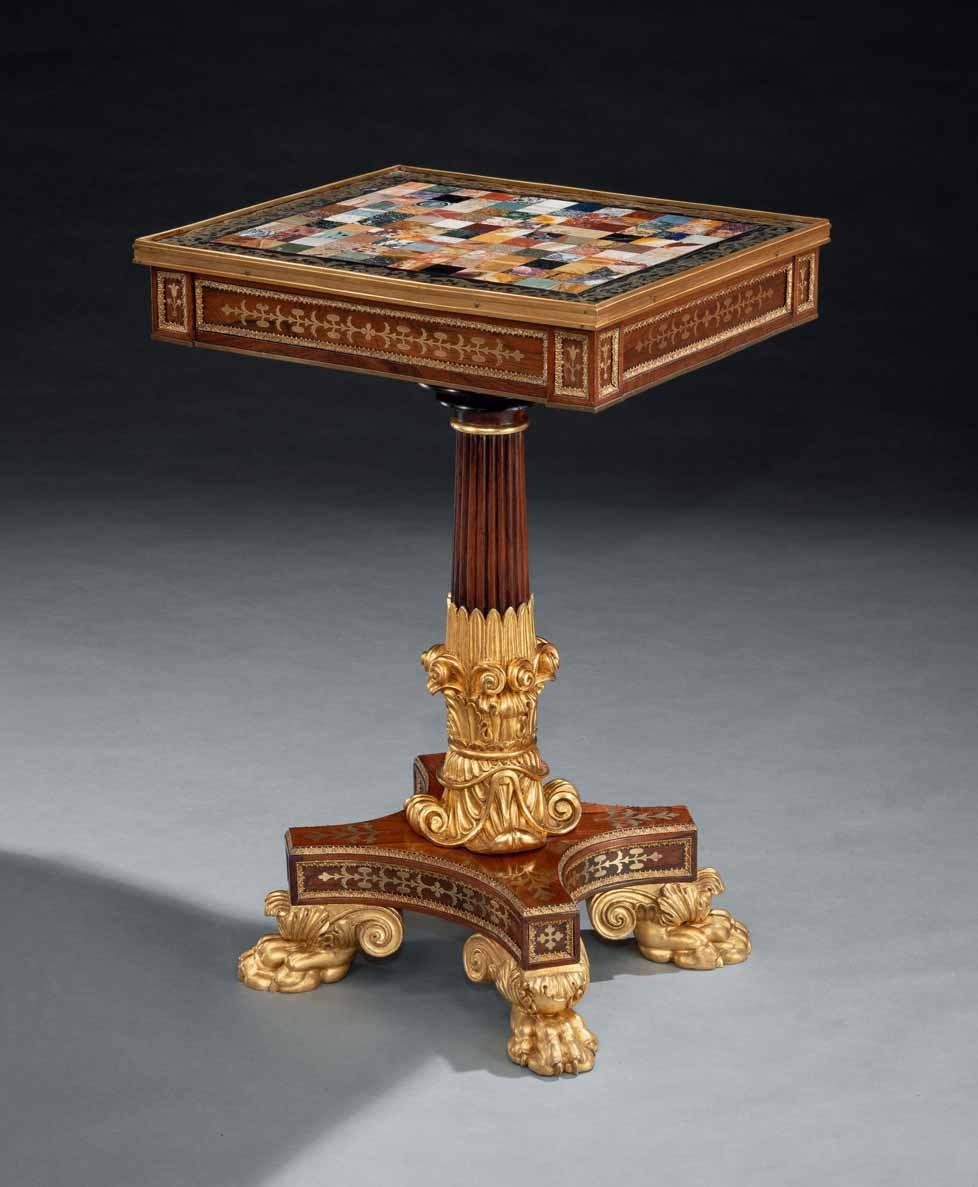
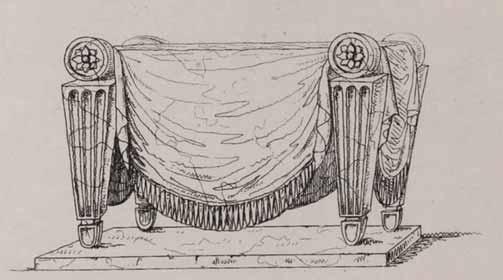
A PAIR OF REGENCY GILTWOOD STOOLS TO A DESIGN BY CHARLES HEATHCOTE TATHAM AND ATTRIBUTED TO MARSH & TATHAM
Note: The stools have been re-gilded.
English, circa 1815
Height: 16¾ in; 42.5 cm
Width: 25 in; 63.5 cm
Depth: 15 in; 38 cm
Provenance: Private collection, London, England.
Literature:
Charles Heathcote Tatham, Etchings Representing the Best Examples of Ancient Ornamental Architecture Drawn from the Originals in Rome and Other Parts of Italy, 1799, pl. XIII.
Charles Heathcote Tatham, Etchings Representing the Best Examples of Grecian and Roman Architectural Ornament, 1826, pl. 77.
A related stool with simulated drapery carved in wood is in the collection of the Victoria and Albert Museum, London. That stool and its companion at Temple Newsam House, Leeds, are faithful copies of an ancient marble stool sketched by Charles Heathcote Tatham during his visit to Rome in 1794 to 1796.
A stool design in Charles Heathcote Tatham’s Architectural Ornament, 1826
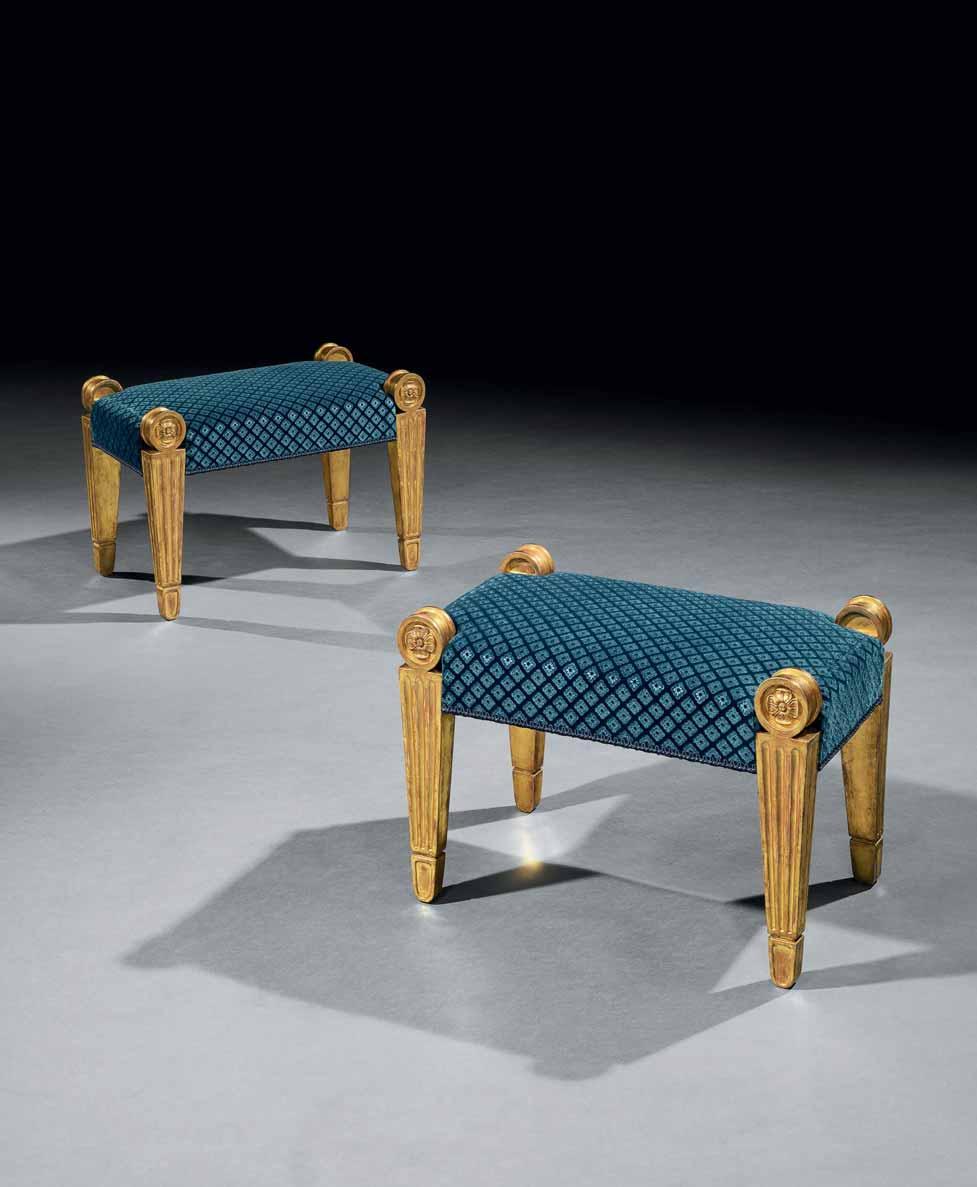
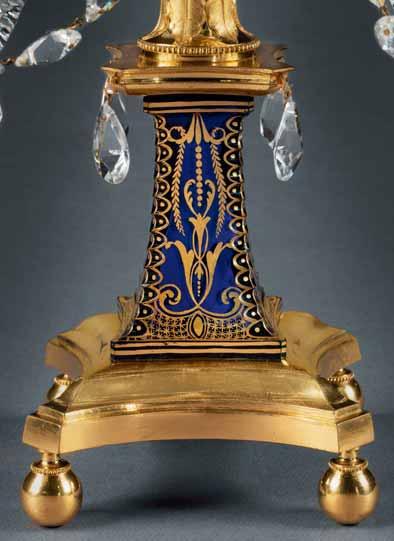
A PAIR OF GEORGE III ORMOLU MOUNTED CUT GLASS CANDELABRA BY WILLIAM PARKER
Note: The candelabra retain their original ormolu mounts and the original gilding to the cobalt blue facet cut bases.
English, circa 1780
Height: 31 in; 78.5 cm
Diameter: 34 in; 86 cm
Provenance: Private collection, Europe.
Literature: Martin Mortimer, The English Glass Chandelier, 2000, p. 15, col. pl. 6.
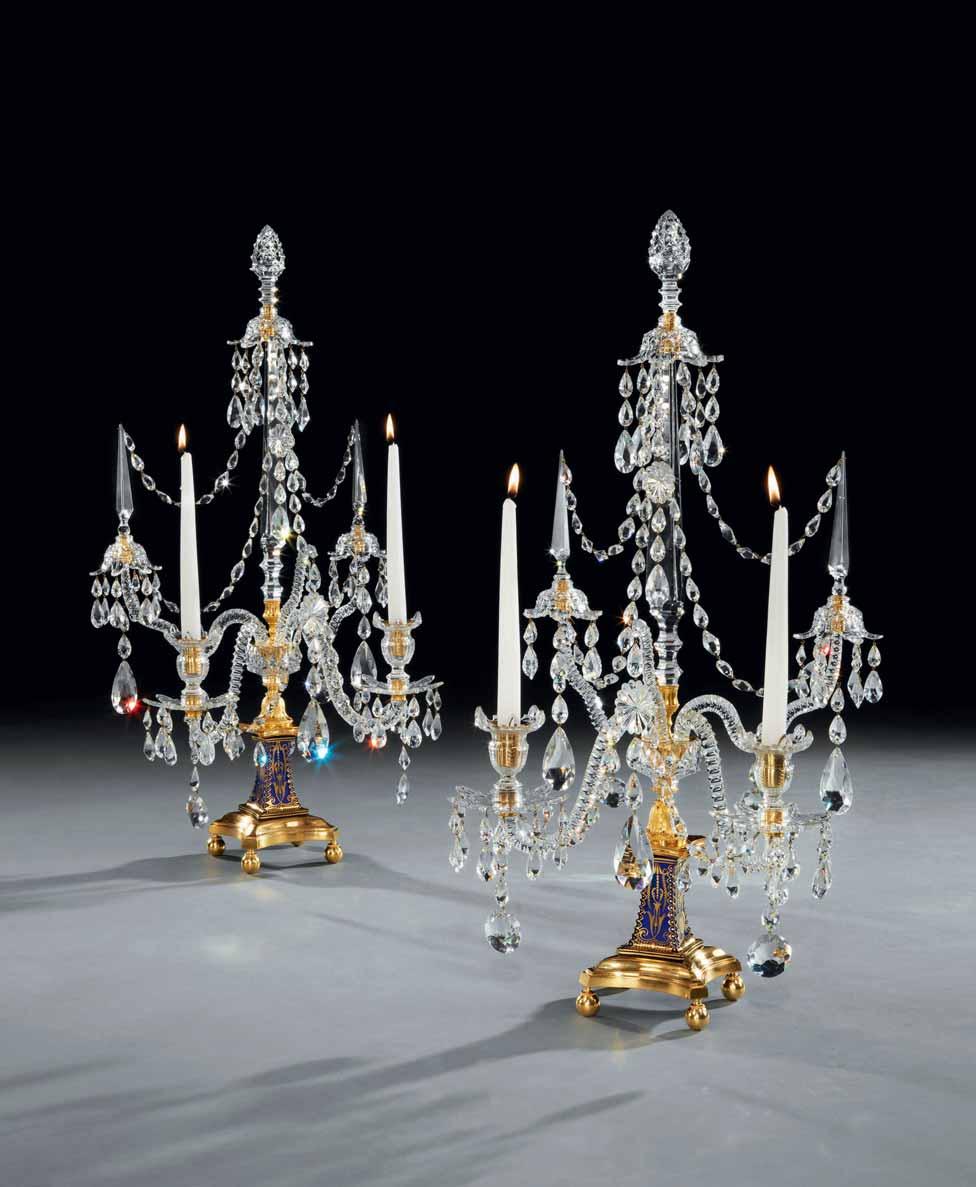
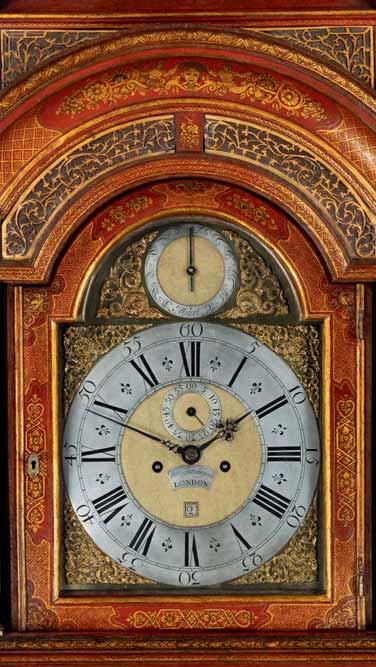
A GEORGE I SCARLET JAPANNED LONGCASE CLOCK ATTRIBUTED TO GILES GRENDEY, THE MOVEMENT BY DAVID LESTOURGEON
Note: The clock retains virtually all the original japanning and the original movement signed: David Lestourgeon – London.
This remarkable clock has survived in virtually untouched condition since it was made. It features a thirty-day movement with a silvered dial, Roman and Arabic numerals and a date aperture. The bevelled mirror plate has been replaced at some stage, although having a fitted mirror within the door is certainly an unusual and original feature.
English, circa 1725
Height: 9 ft 4 in; 285 cm
Width: 1 ft 11 in; 58.5 cm
Depth: 11¼ in; 28.5 cm
Provenance:
Juan Antonio Diaz de Arce y Perez del Camino, Soñanes Palace, Villacarriedo, Cantabria, Spain; by descent.
Giles Grendey (c. 1693–1780) was one of the most successful cabinetmakers of his time, supplying good quality furniture throughout his career, and also importing timber as a sideline. He is probably best known for his successful export furniture, most of which was japanned, like this clock with a Spanish provenance.
Grendey’s most important commission, from the Duke of Infantado for Lazcano Castle in Spain, has many points of similarity with this clock. The Infantado suite, of which some seventy-seven pieces were first recorded by Adolph Lowie in the 1930s, is entirely japanned in the same scarlet colour, evidently a popular hue with Grendey’s Spanish clients. Coincidentally, both patrons were in the Spanish diplomatic service, Juan Antonio Diaz either directly after or at the same time as Infantado.
The Duke of Infantado notoriously amassed huge debts during his time in London. The National Archives at Kew in London reveal that despite having been called back to Spain, Infantado refused to go home, remaining in his position in London for several years thereafter.
David Lestourgeon was a French Huguenot émigré and member of the French Huguenot church in Soho. A walnut cased clock also by Grendey and with a movement by Lestourgeon was donated by Lestourgeon to the church congregation in the 1740s and is still in the church collection.
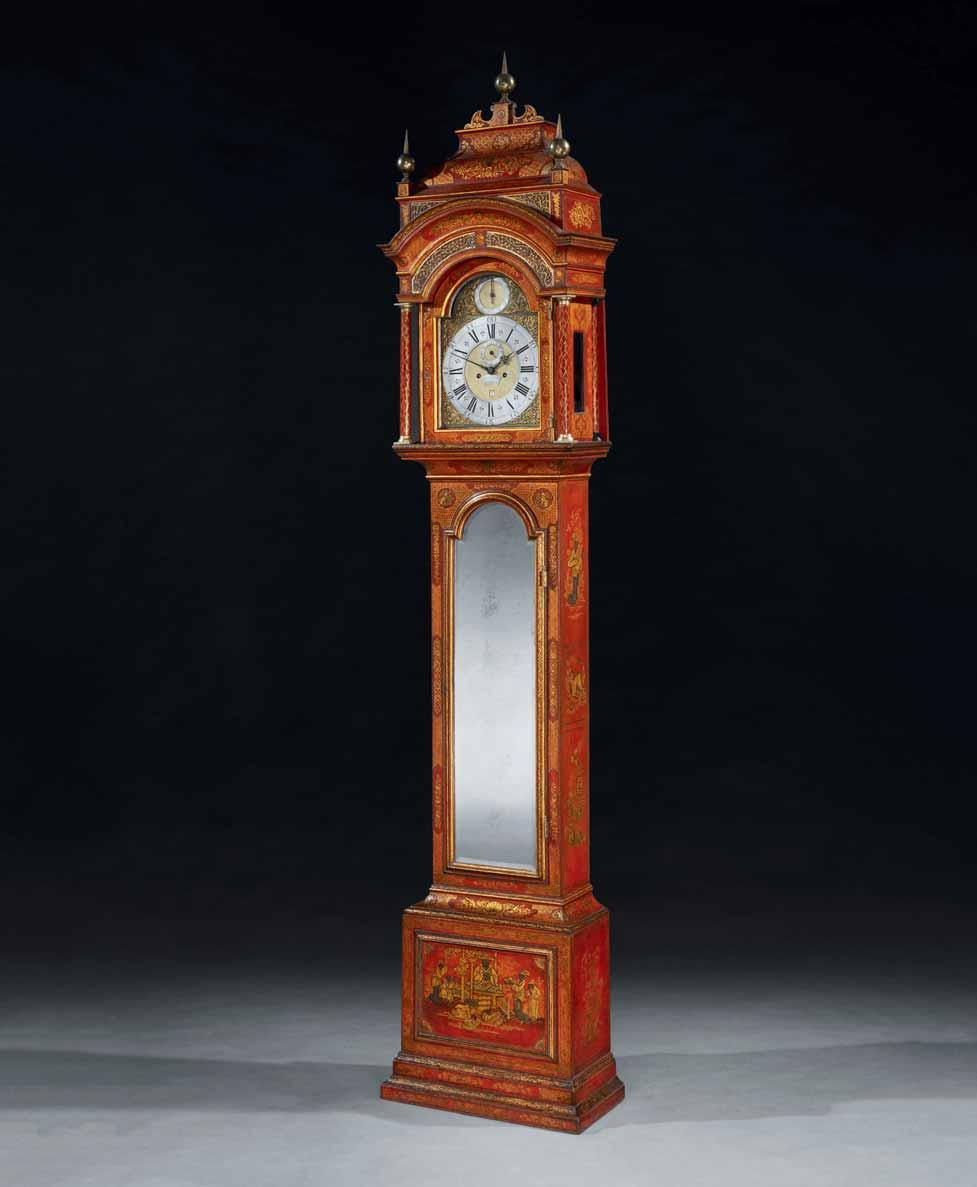
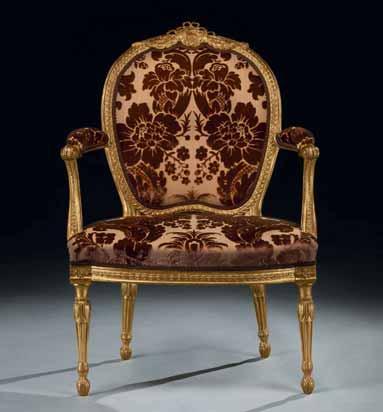
A GEORGE III GILTWOOD ARMCHAIR
ALMOST CERTAINLY BY THOMAS CHIPPENDALE
Note: The chair frame has been re-gilded. The underside of the seat frame features typical clamping notches as well as a series of vacant screw holes which were used for securing the chairs to battens during transport. No other markings have been noted to the chair frame.
English, circa 1775
Height: 39 in; 99 cm
Height of seat: 18½ in; 47 cm
Width: 27¼ in; 69 cm
Depth: 27 in; 68.5 cm
Provenance: Hotspur Ltd., London, England; Private collection, USA.
Literature: Christopher Gilbert, The Life and Work of Thomas Chippendale, 1978, vol. II, p. 109, figs 185 & 186.
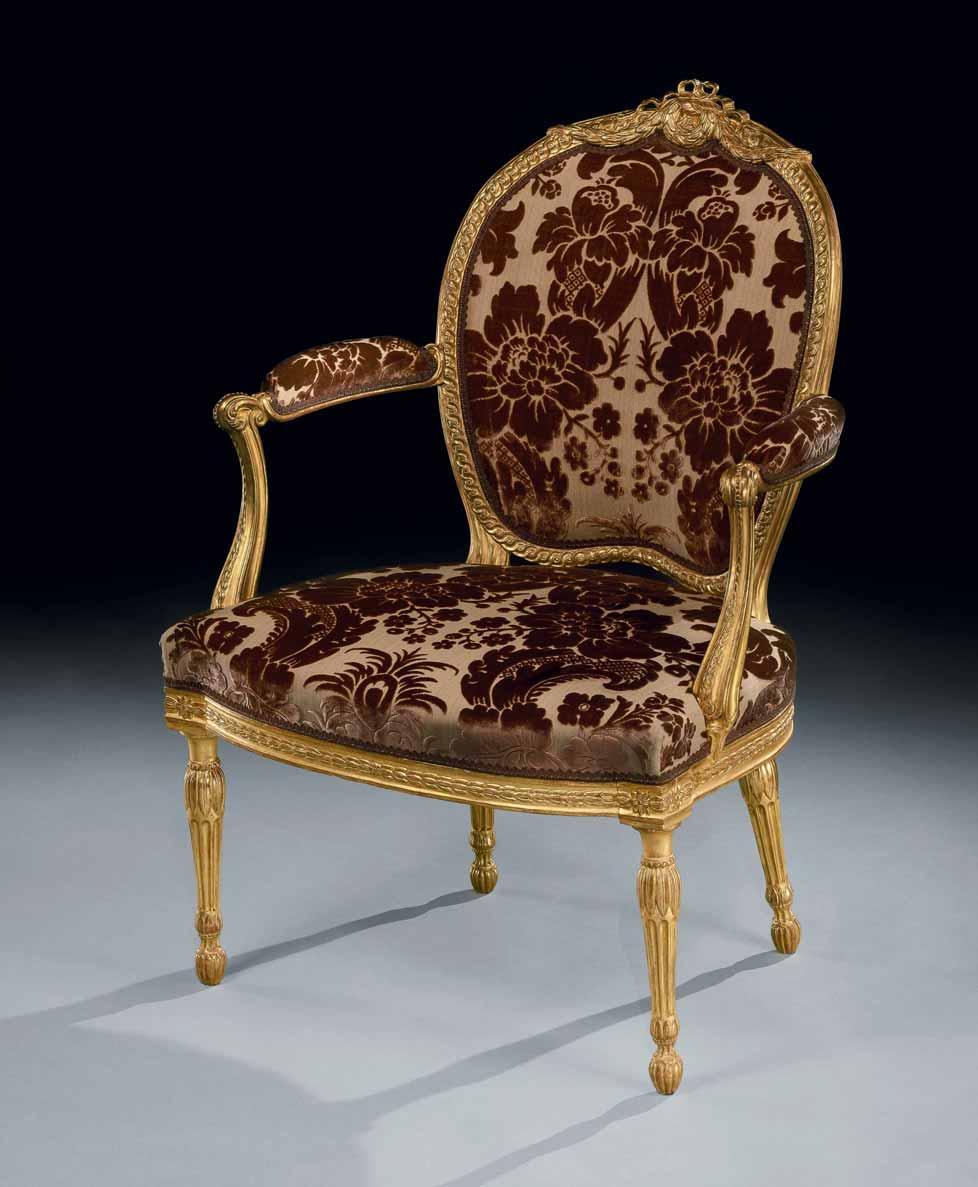
A GEORGE I SILVERED GESSO MIRROR
Note: The mirror retains much of the original silvering and its original bevelled mirror plate. It is fitted with later silver plated candle arms. English, circa 1720
Height: 31¾ in; 80.5 cm
Width: 18¾ in; 47.5 cm
Depth: 8 in; 20.5 cm
Provenance: Private collection, England.
Very few silvered gesso mirrors from the 18th century have survived without being subsequently gilded.
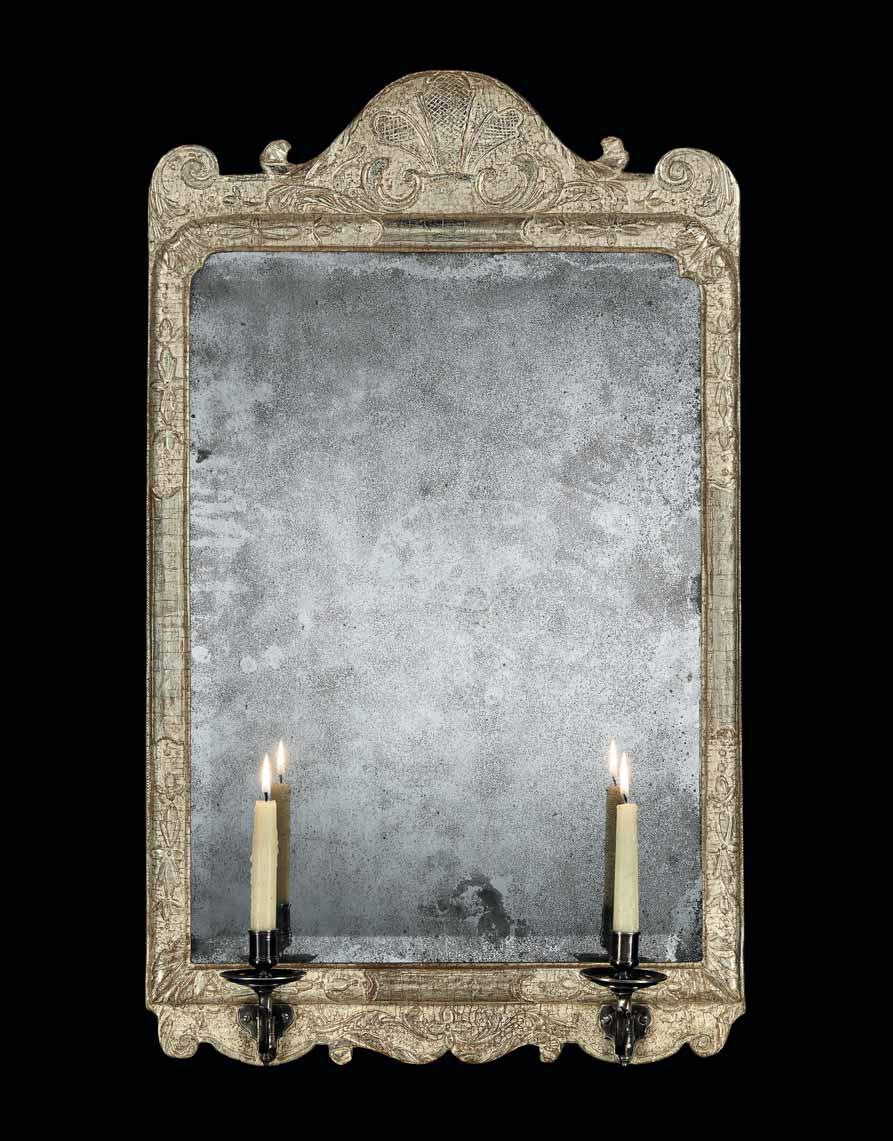
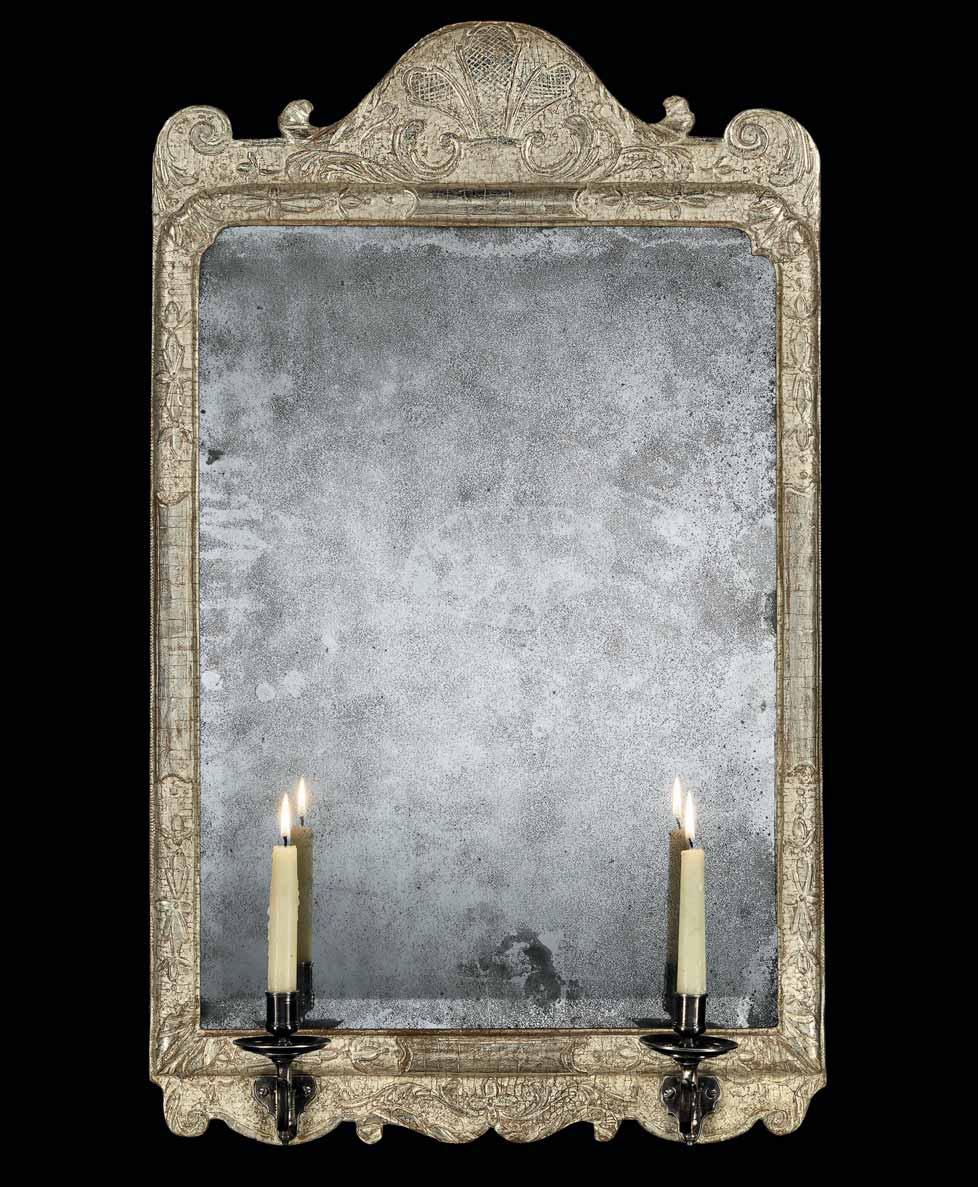
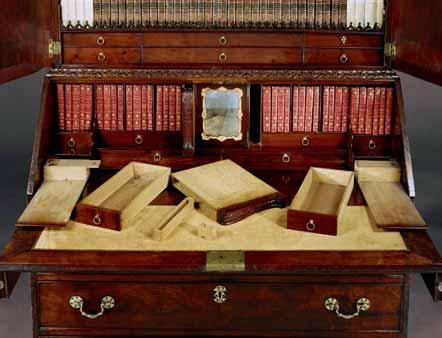
A GEORGE III PARCEL GILT MAHOGANY BUREAU CABINET ATTRIBUTED TO GEORGE SPEER
Note: The cabinet retains its original mercury silvered mirror plates, the original gilding and its original ornate brass handles.
English, circa 1770
Height: 7 ft 11 in; 241.5 cm
Width: 3 ft 10½ in; 118 cm
Depth: 1 ft 11½ in; 59.5 cm
Provenance: Charles Lumb & Sons Ltd., Harrogate, Yorkshire, England; David Style, Wateringbury Place, Kent, England, until sold; Christie’s, 31 May 1978, lot 130; Mallett & Son Ltd., London, England; Private collection, USA.
Illustrated: Christie’s, ‘Wateringbury Place’, Part I, sale catalogue, 31 May 1978, pp. 66–7, lot 130; illustrated in colour.
Literature: Anthony Coleridge, ‘George Speer’, Apollo, October 1970, p. 281, pl. 12.
Geoffrey Beard and Christopher Gilbert, The Dictionary of English Furniture Makers 1660–1840, 1986, p. 842.
Christopher Gilbert, A Pictorial Dictionary of Marked London Furniture 1700–1840, 1996, pp. 434–5.
George Speer is one of the lesser known 18th century London cabinetmakers. His name is not generally associated with 18th century furniture designs, and although a design for a harlequin table published in The Cabinet Makers’ Book of Prices of 1788 can be ascribed to him, his style
was perhaps not innovative enough to get noticed. The quality of his furniture, however, very probably rivalled that of the top London makers of his time.
Neoclassical furniture was already in fashion when this cabinet was made, and its design would have been some twenty to thirty years behind the latest trends, but today this change in fashion from the robust baroque style to the neoclassical is of academic importance only. Whereas the beautiful figured mahogany used for veneering the front of the cabinet is entirely typical for the last quarter of the 18th century when the cabinet was made (with much plainer woods used for earlier work), the carved ogee bracket feet, Gothic blind fretting and flower carved mouldings are design features characteristic of the 1740s and 1750s, such as one would expect to see in the work of cabinet-makers like Giles Grendey and William Hallett. Hallett had, through his grandson (also called William), a tenuous connection to George Speer. The grandson was not a cabinet-maker but a gentleman who was affluent enough to commission Thomas Gainsborough to paint him and his wife: the resulting painting, The Morning Walk, is now in the National Gallery in London. It was this William Hallett who witnessed George Speer’s will.
Speer, like Hallett senior, had in the course of a successful working career amassed a small fortune which he invested in a number of rental properties in and beyond the City of London. Unlike Hallett, though, Speer was later almost forgotten, despite his business success, and his name only resurfaced after the discovery of a folio containing some of his designs, along with a handful of labelled pieces that have been recorded over the years.
It is interesting to note that R. W. Symonds, despite not knowing about the maker, endorsed many pieces that could today be ascribed to the Speer workshop. There are no fewer than ten pieces in the celebrated Percival D. Griffiths collection that relate to Speer’s designs, and all are of course of the high quality that such a collection required.
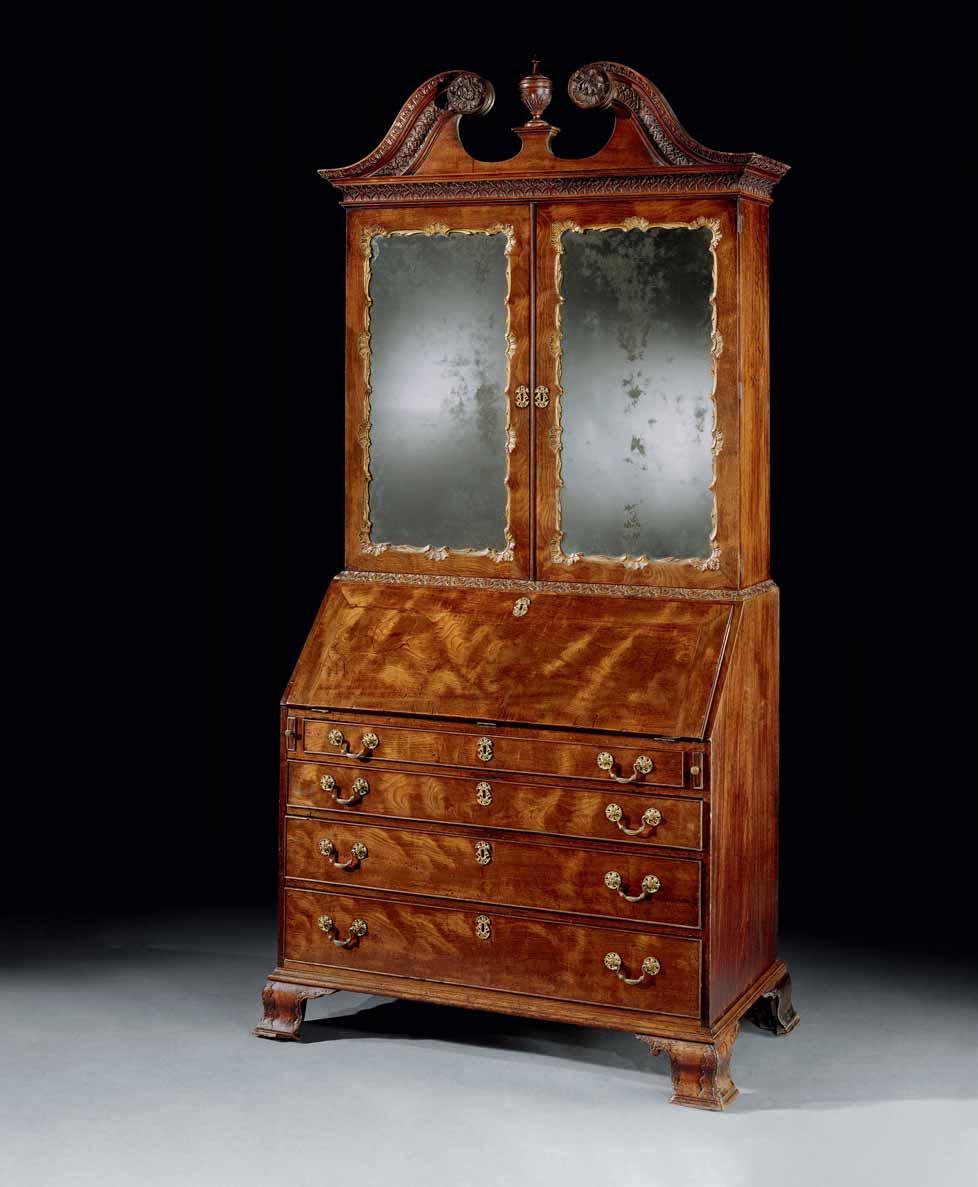
THE DAVID STYLE BUREAU CABINET
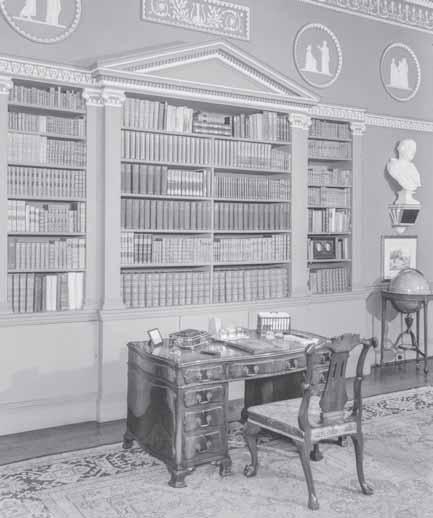
A GEORGE II MAHOGANY SIDE CHAIR ATTRIBUTED TO GILES GRENDEY
English, circa 1740
Height: 39½ in; 100.5 cm
Height of seat: 19 in; 48.5 cm
Width: 25 in; 63.5 cm
Depth: 25 in; 63.5 cm
Provenance: Claude Chadburn, Papplewick Hall, Nottinghamshire, England, until 1982; Private collection, England.
Illustrated: Arthur Oswald, ‘Papplewick Hall, Nottinghamshire – I, The home of Mr. and Mrs. Claude Chadburn’, Country Life, 29 August 1963, p. 495, figs. 7 & 8.
The chair in situ in the library at Papplewick Hall, Nottinghamshire, August 1963. Courtesy of Country Life/Future Publishing Ltd.
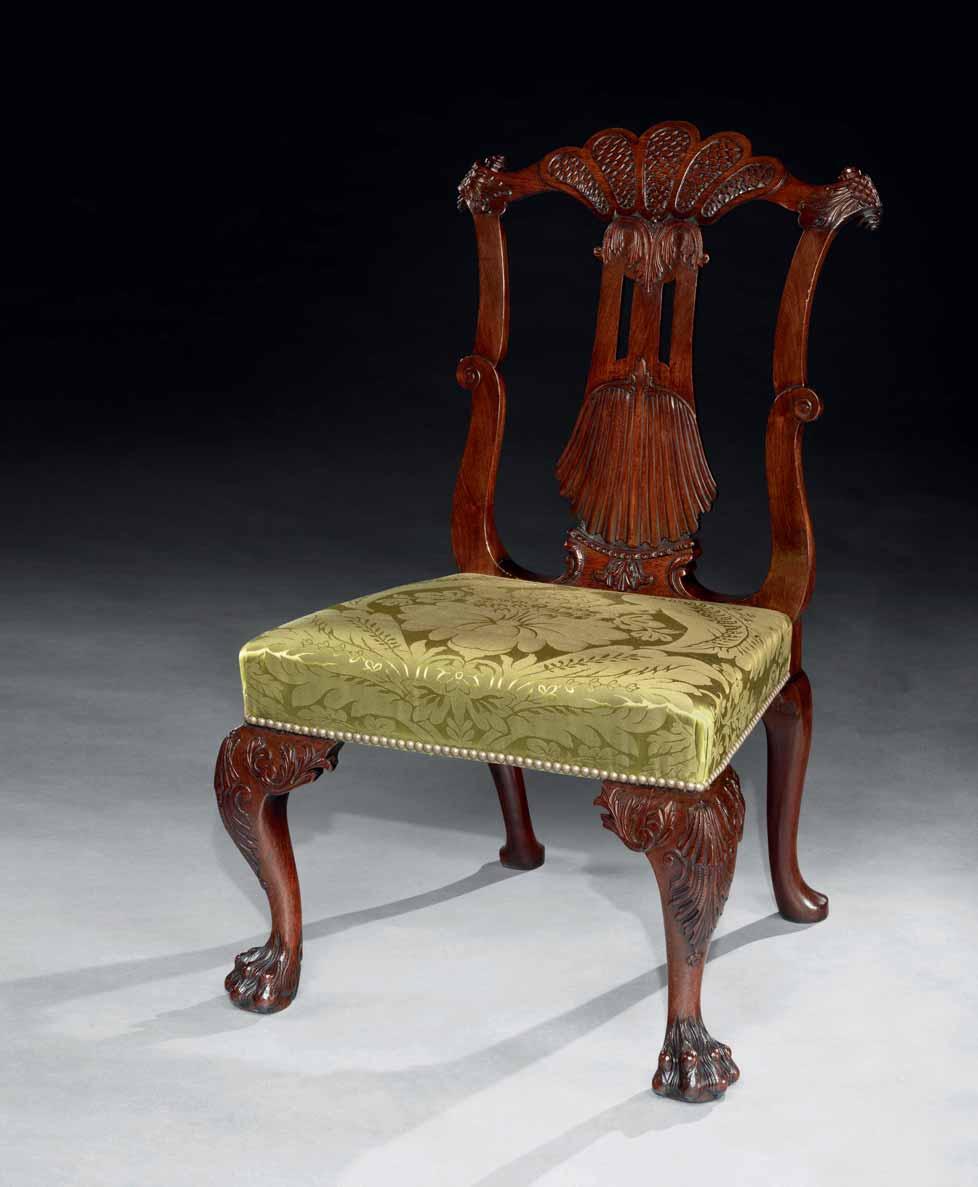
THE PAPPLEWICK HALL CHAIR
THE GETTY MIRRORS
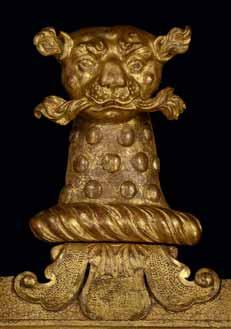
129
A PAIR OF GEORGE I GILTWOOD AND GESSO PIER MIRRORS
Note: The mirrors retain some of the original gilding. The mirror plates and the ornate brass candle arms and sockets are of later date. A printed and inscribed Ann and Gordon Getty Collection inventory label is pasted on the reverse of each mirror. English, circa 1725
Height: 5 ft 11 in; 180 cm
Width: 2 ft 9 in; 84 cm
Depth: 9½ in; 24 cm
Provenance: Peter Giffard (d. 1746), for Chillington Hall, Staffordshire, England; Philip Colleck Ltd., New York, USA; Ann and Gordon Getty, San Francisco, USA.
Illustrated: Connoisseur, September 1979; trade advertisement with Philip Colleck Ltd.
The unusual Giffard family crest of ‘flames issued from the mouth and ears of a panther’s head’ can be seen between the scroll pediments of the mirrors.
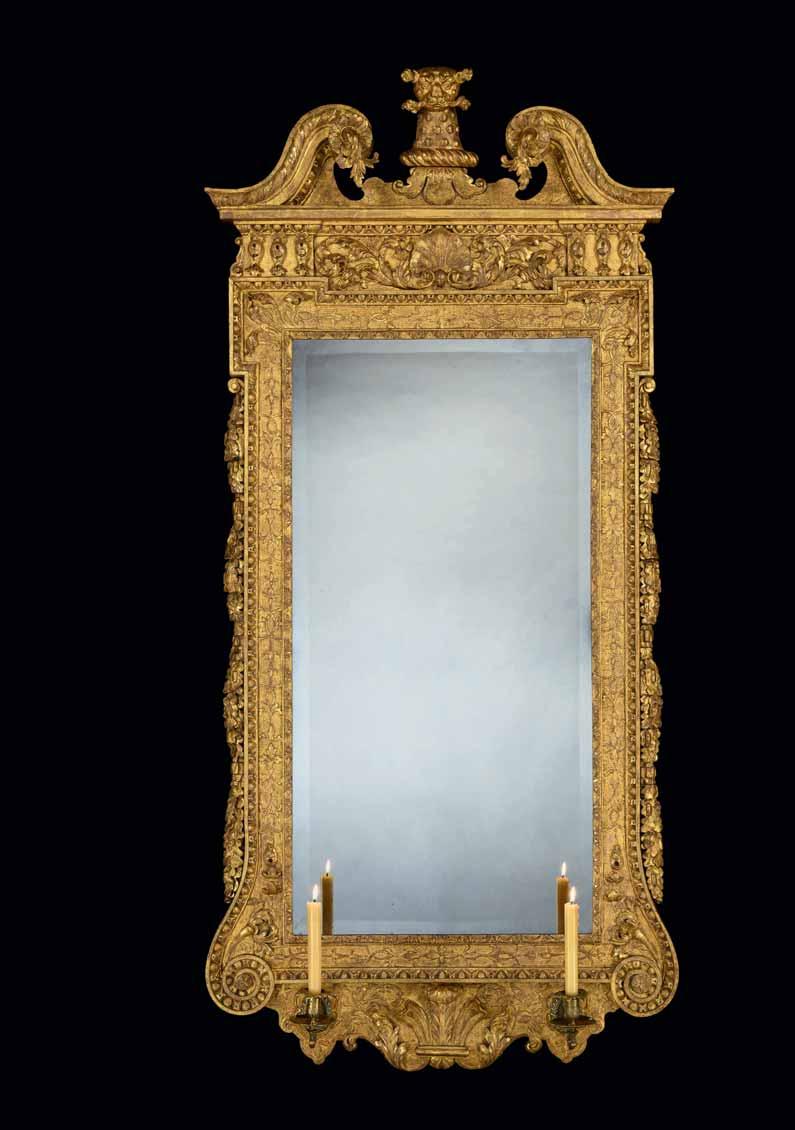


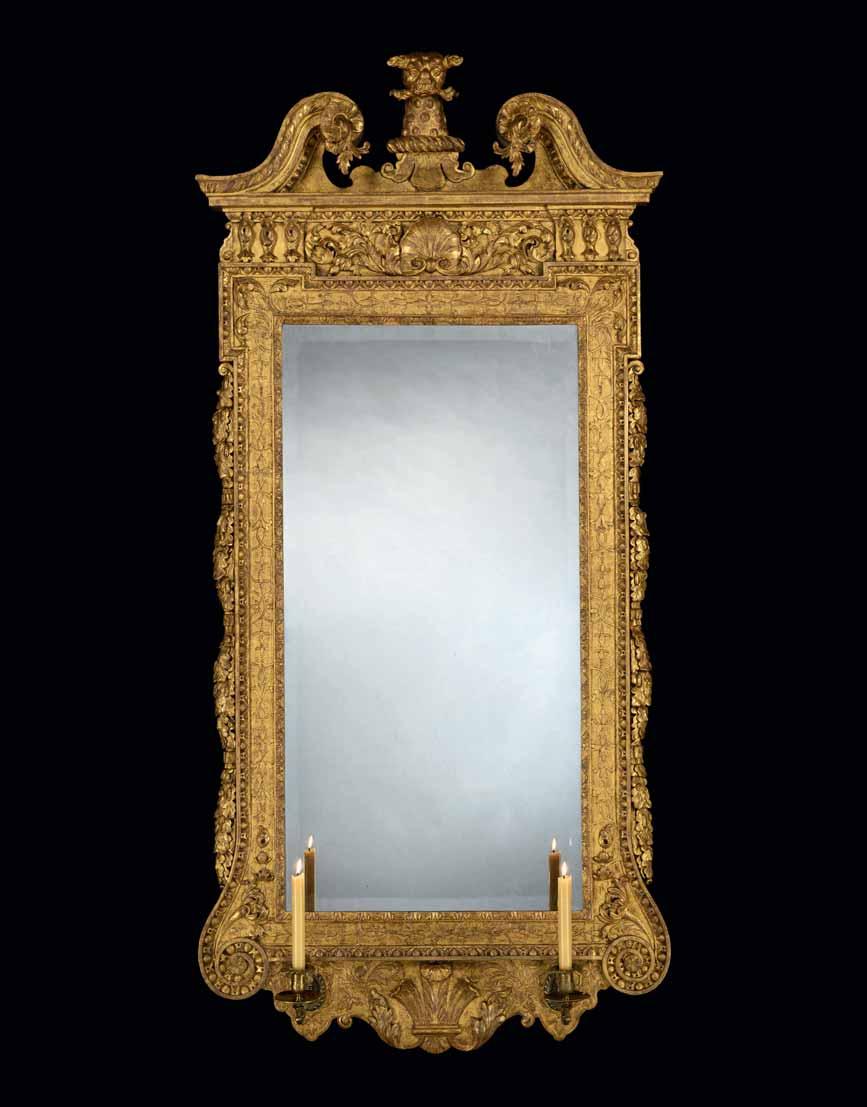
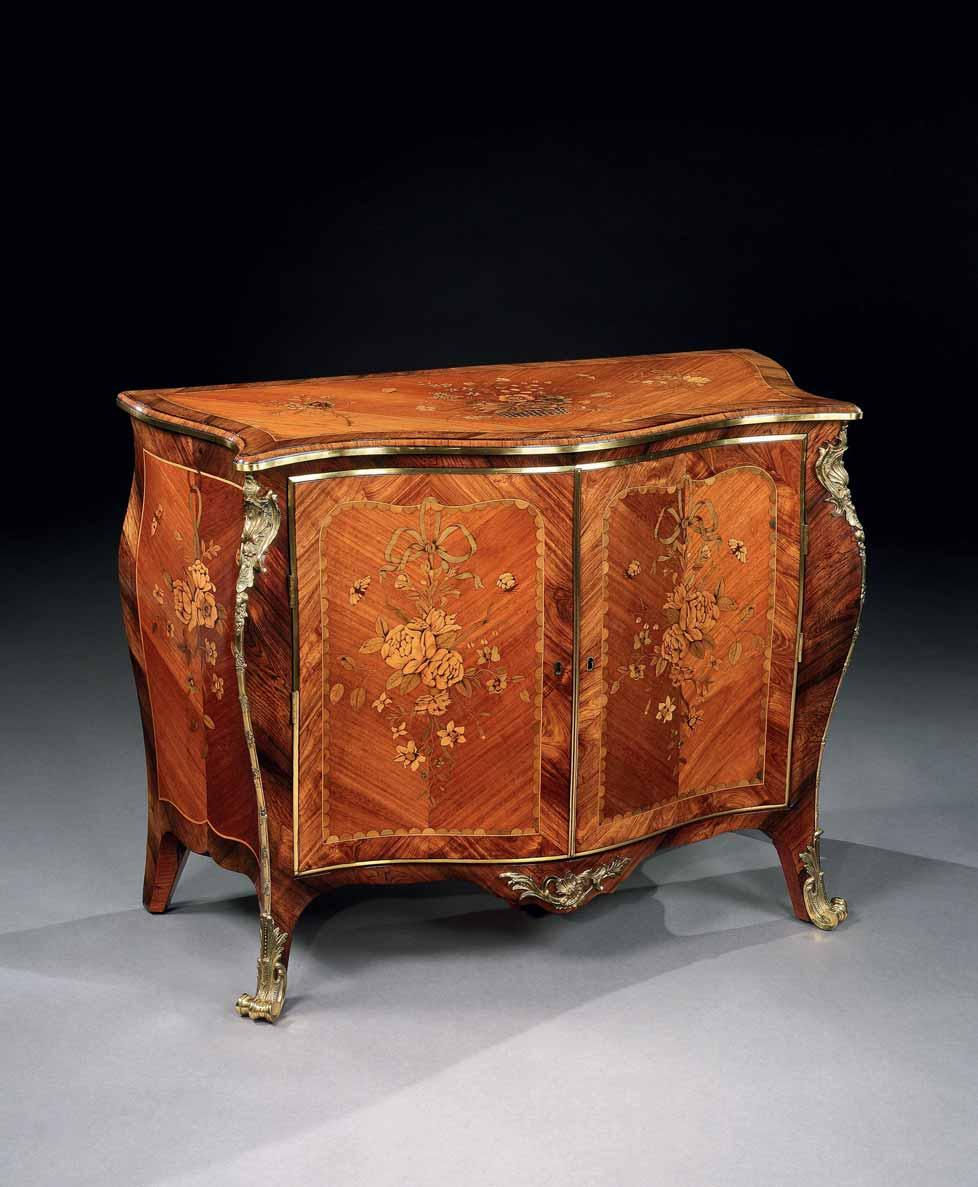
THE COOMBE ABBEY CRAVEN COMMODES
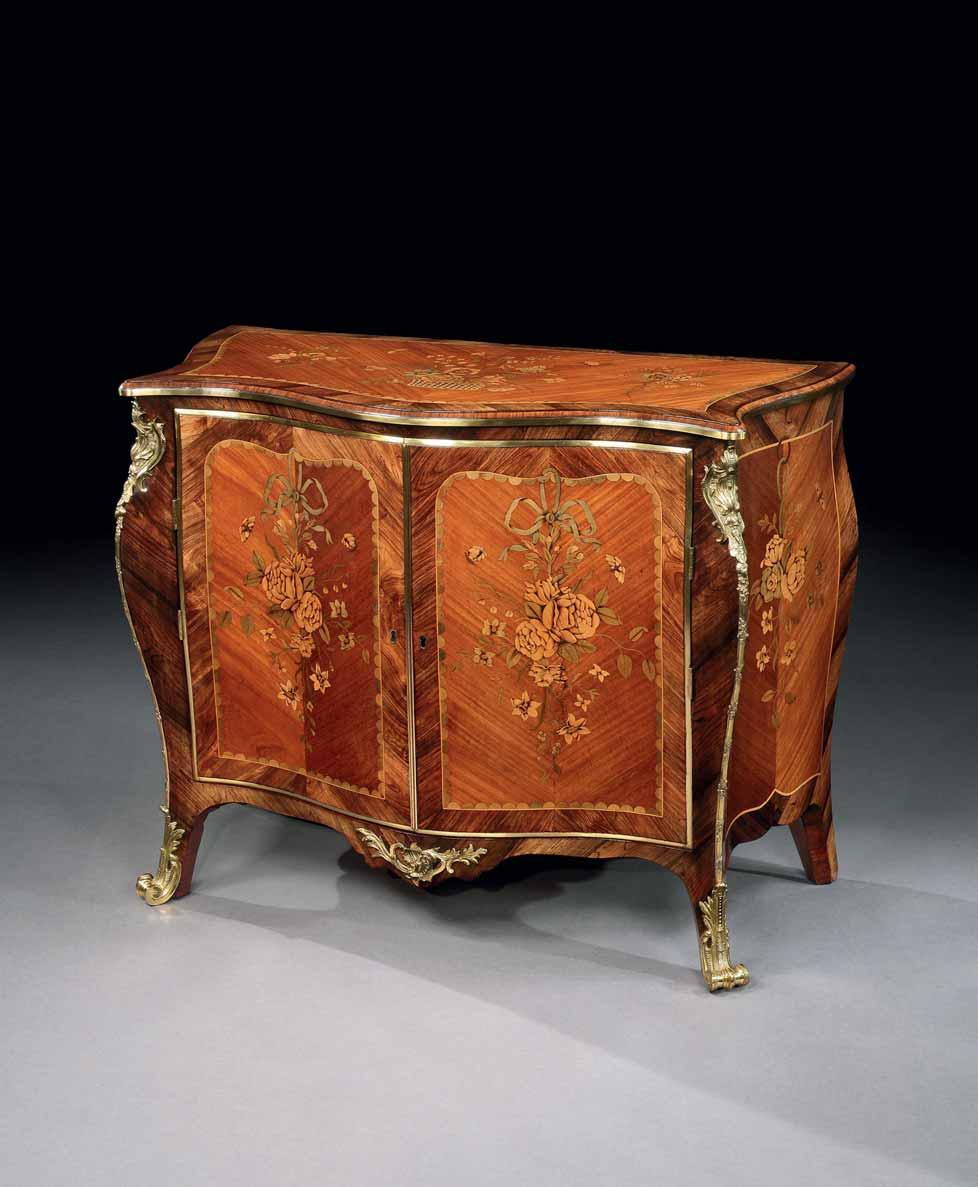
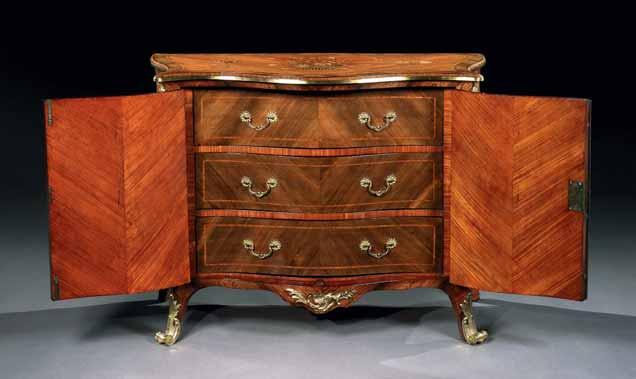
A PAIR OF GEORGE III ORMOLU MOUNTED PADAUK, ROSEWOOD AND KINGWOOD MARQUETRY COMMODES ATTRIBUTED TO PIERRE LANGLOIS
Note: The commodes retain their original brass mounts apart from the central mount to the apron: this is a faithful restoration, using the original nail holes and copying the mount from another commode by Langlois.
English, circa 1770
Height: 33 in; 84 cm
Width: 43½ in; 110.5 cm
Depth: 20¼ in; 51.5 cm
Provenance: William Craven, 6th Baron Craven (1738–1791), Coombe Abbey, Warwickshire, England; By descent until 1965; Robert Bradley Craven, 6th Earl of Craven (1917–1965), Sotheby’s, 8 October 1965, lot 140; Mallett & Son Ltd., London, England; Private collection, England; Mallett & Son Ltd., London, England; Private collection, London, England.
Pierre Langlois used mounts produced by his son-in-law, Dominique Jean. The pattern of the central mount, now reinstated, is consistent with those on other commodes by the same maker, between which there is scarcely any variation. The fact that the mount uses the original fixing holes further confirms that it is correct.
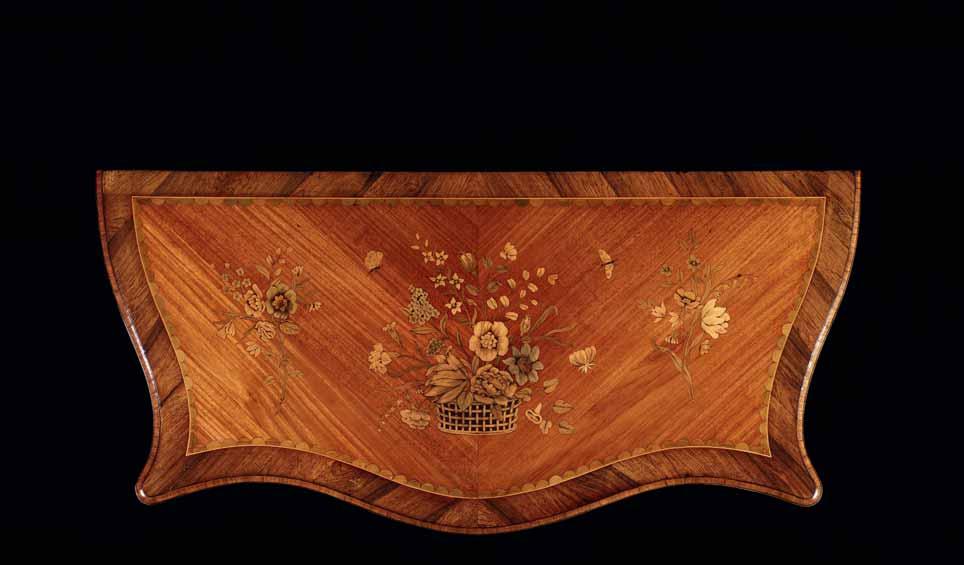
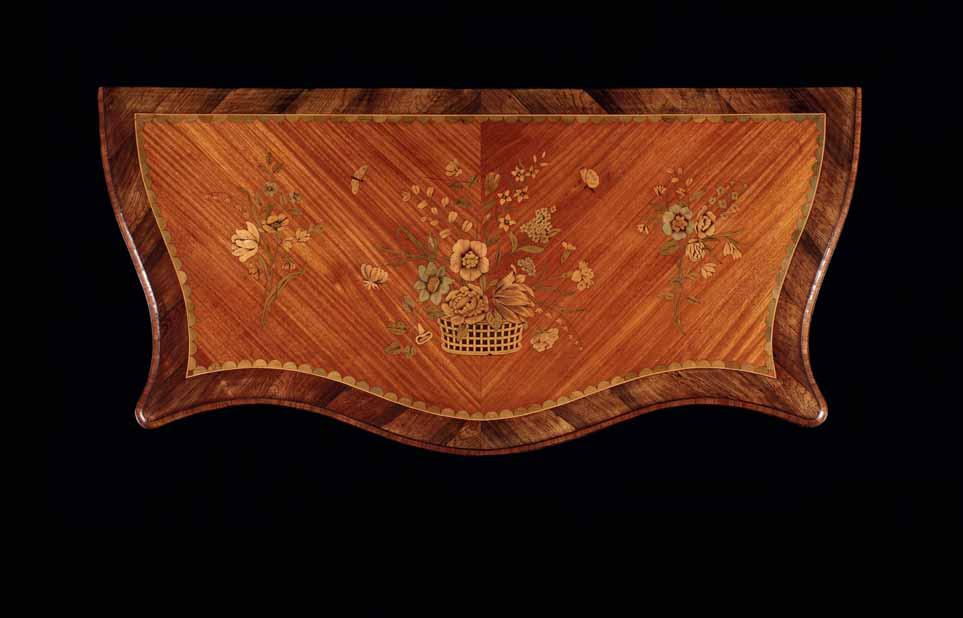

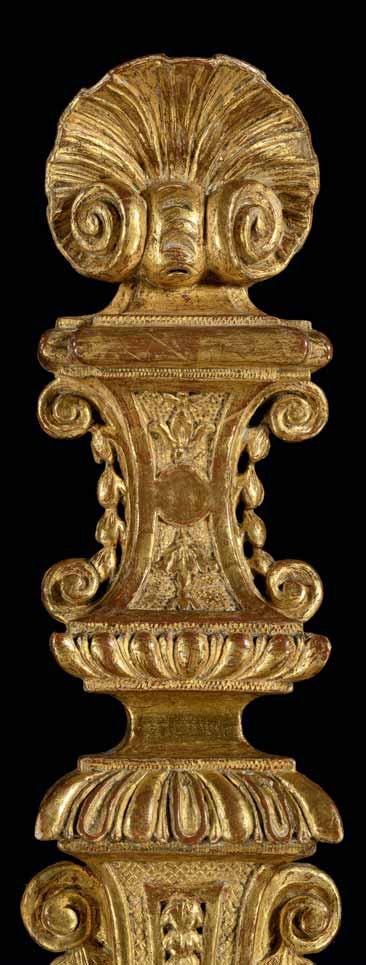
A PAIR OF WILLIAM AND MARY GILTWOOD WALL LIGHTS
BY THOMAS PELLETIER
Note: The wall lights have been re-gilded in small areas during the 20th century. It was probably during this process that they were drilled for electricity, but they have now been returned to candle light. The hinged candle arms are original, and the brass nozzles are replacements.
English, between 1699 and 1702
Height: 24¼ in; 61.5 cm
Width: 4¼ in; 11 cm
Depth: 10 in; 25.5 cm
Provenance:
Supplied to the Royal Household between 1699 and 1702; Private collection, USA.
Wall lights of this period are exceptionally rare. The few that have survived include a pair originally at Bramshill House, Hampshire, another pair from Longford Castle, Wiltshire, and a set of four from Browsholme Hall, Lancashire. The last of these, which also feature a shell cresting, are closest in design to our wall lights. There are differences, however: our pair retain the original single candle arm, complete with distinctive knuckle hinge, while the Browsholme set have replaced twin candle arms, which are fixed rather than hinged.
The Pelletiers supplied high quality carved furniture to Hampton Court, Kensington Palace and St. James’s Palace through Gerrit Jensen and also on their own account in 1702 only. The design of the supporting column echoes the main features found on the legs of stands, giltwood tables and torchères supplied by the Pelletiers to Kensington Palace and Hampton Court between 1699 and 1703. Before this, Gerrit Jensen, who held the Royal warrant, virtually monopolised the supply of furniture to the Royal Household for decades. Carved and gesso furniture was however most probably outsourced to and supplied by the Pelletiers. Pelletier manufacture becomes evident when earlier carved pieces supplied by Jensen are compared with pieces supplied by the Pelletiers directly.
The carved wall lights were very probably part of a larger set, but it has not been possible so far to locate them in the Royal accounts.
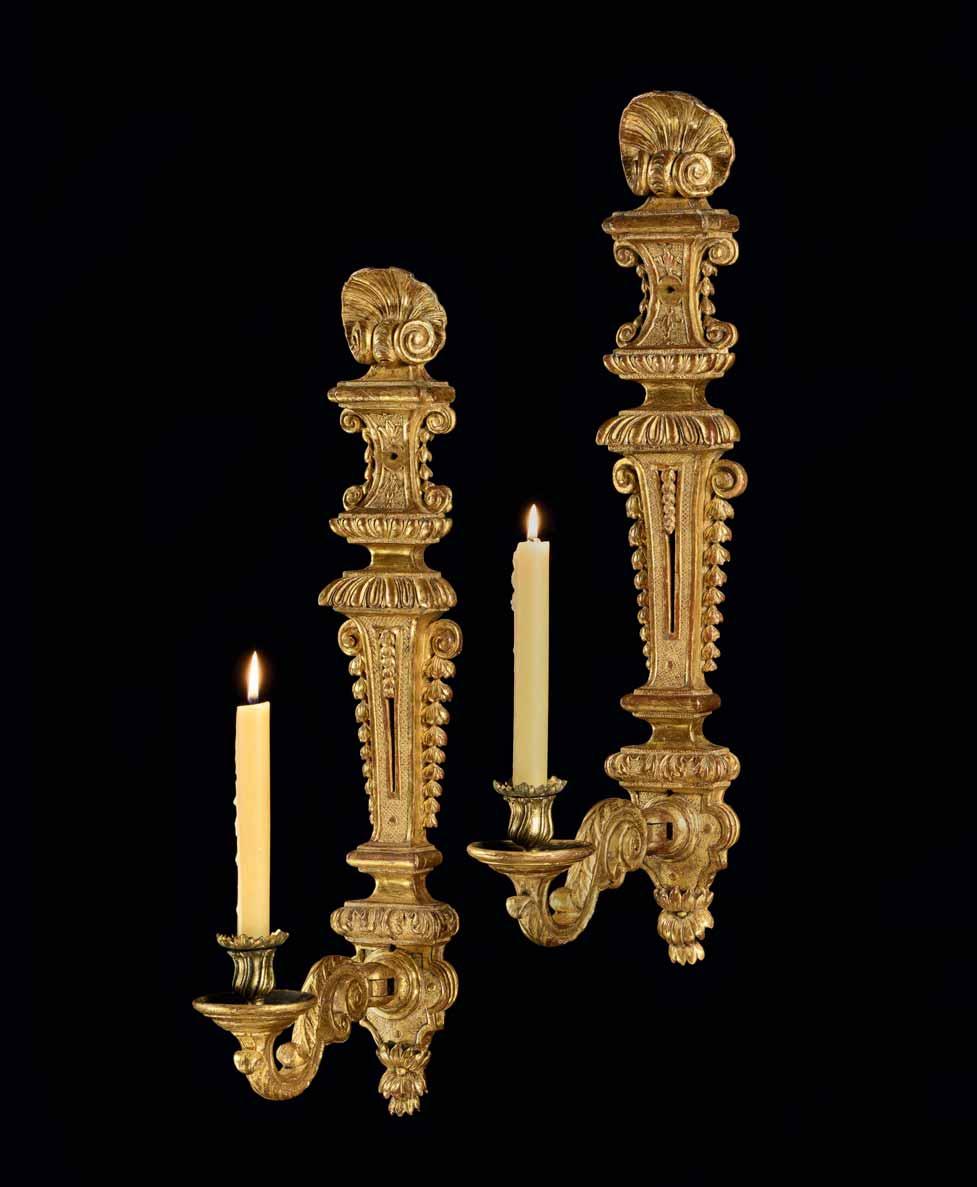
A PAIR OF ROYAL WALL LIGHTS
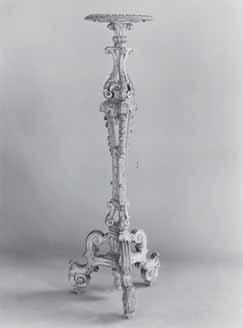
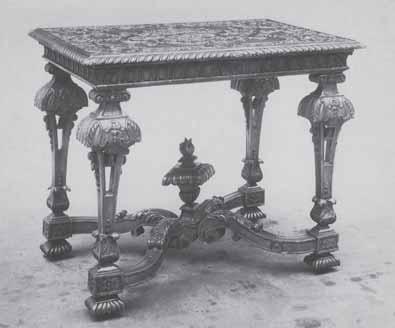
A WILLIAM AND MARY GILTWOOD AND GESSO SIDE TABLE CARVED BY ROBERT DERIGNEE AND GILDED BY JEAN PELLETIER
Note: The table retains much of the original gilding. The table has been carved and decorated on the reverse side at a later stage to create a centre table, and it was probably at this time that the lower parts of the pierced legs were filled in. The fluted frieze retains the exquisitely carved and undercut leaf scrolls above each flute. The flutes were originally each filled with a floral device on a pedestal, but these are now missing. The table was originally fitted with pendent strapwork aprons attached only on three sides of the table; these are now missing. The square vase-shaped finial in the centre of the stretcher is original and retains its large square hand-forged steel nail fixing.
English, 1699
Height: 30 in; 76.5 cm
Width: 38 in; 96.5 cm
Depth: 24¾ in; 63 cm
Provenance:
For the late Queen’s Bedchamber at Kensington Palace; M. Harris & Sons, London, England; Private collection, Europe.
Literature:
National Archives, LC11/5, Lord Chamberlain’s Department, account of Ralph Montagu, Master of the Great Wardrobe, Tradesmen’s Bills from Michaelmas 1696 to Michaelmas 1699, p. 184, nos. 64 & 65.
Ralph Edwards, The Shorter Dictionary of English Furniture, 1964, p. 581, fig. 15.
Geoffrey Beard and Christopher Gilbert, The Dictionary of English Furniture Makers 1660–1840, 1986, p. 687.
Tessa Murdoch, ‘Jean, René and Thomas Pelletier, a Huguenot family of carvers and gilders in England, 1682–1726: Part I’, Burlington magazine, November 1997, pp. 732–42.
Tessa Murdoch, ‘Jean, René and Thomas Pelletier, a Huguenot family of carvers and gilders in England, 1682–1726: Part II’, Burlington magazine, June 1998, pp. 363–74.
The table belongs to an important group of giltwood furniture, all featuring the same distinctive lambrequin topped pierced legs with carved tassels and, on the sides, scrolls with husks below them.
The suite was commissioned via Ralph Montagu, Master of the Wardrobe from 1689 to 1709, who was responsible for the furnishing of the Royal palaces, for the bedchamber of William III and his late Queen, Mary II, at Kensington Palace.
Queen Mary died in 1694, leaving William as sole monarch. He divided his time between Holland and England, spending most of it in the former. He had embarked on substantial renovations at Windsor Castle, St. James’s Palace and Kensington Palace, but his prolonged absences delayed decisions on the refurbishment. The largest project, however, took place at Hampton Court, where an entire new wing modelled on the Palace of Versailles was being built.
Gerrit Jensen supplied tables, cabinets and mirrors for the refurbishment, and Thomas Roberts supplied seating, consisting mainly of benches, stools and some side chairs and armchairs, as well as bed frames. From 1698 onwards, two notable Huguenot craftsmen began to deliver work as well: the carver Robert Derignée and the carver and gilder Jean Pelletier, together with Pelletier’s two sons, René and Thomas. Derignée and Pelletier brought with them new techniques and introduced gesso carving over the entire surface of a piece in order to simulate furniture made in solid silver or even gold. These innovations soon took hold, and other carvers and gilders quickly adopted and further developed the gesso carving technique.
A stand made en suite with the table in 1699 for Kensington Palace. Courtesy of Country Life/Future Publishing Ltd.
The table photographed probably circa 1900. Late 19th or early 20th century image in M. Harris & Sons photo archive with Ronald Phillips Ltd.

A TABLE FROM QUEEN MARY II’S BEDCHAMBER AT
KENSINGTON PALACE
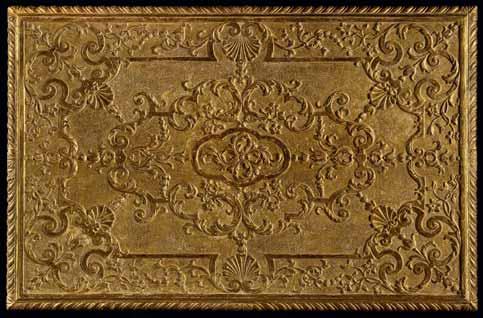
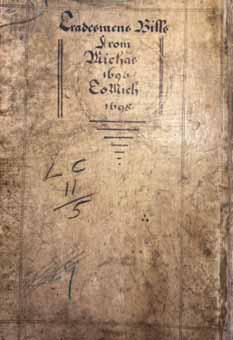
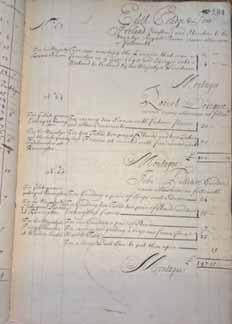
The bills recorded in the Lord Chamberlain’s accounts for 1696–1699. (The end date appears on the cover incorrectly as 1698.)
Bills for the carving and gilding of this table and a second table as well as two pairs of stands and two mirrors have been preserved in the Lord Chamberlain’s accounts from the Royal Wardrobe of 1696–1699. The entry on page 184, no. 64, reads:
Robert Derignee, carver Craves allowance as follow.
For y late queens Gallery at Kensington
For carving two Sconces w Festoons Flowers and other Ornaments £30 - -
For his Majestys & y late queens Bedchamber att Kensington
For two Tables two pair of Stands and two Looking glass frames £70 - -
£100 - -
Signed Montagu
The wording is important here: Derignée’s bill is for two tables rather than a pair of tables, and two pairs of stands rather than a set of four stands.
The following entry, no. 65, is for gilding the same pieces:
John Pelletire Guilder
Craves allowance as followeth
For y Late queens gallery at Kensington
For Guilding a pair of large oval Sconses £24 - -
For Guilding two Tables two pair of Stands and two Lookingglass frames £88 - -
For his Majestyes Privy Chamber at Windsor Castle
For new Guilding a pair of Stands £7 - -
For carving and guilding a large new frame for a Marble Table £28 - -
For a large Deale Case to put them up in
£-15s -
£147 15s -
Signed Montagu
It is important to note the distinction here between gilt tables and gilt frames intended for marble tops, and it is clear that the ‘large new frame’ had a top in a different material that did not require gilding. Our table, on the other hand, was carved and gilded all over, and therefore no mention of a carved gesso top was necessary.
Almost all of this important commission has been lost or dispersed over the years, and only a few pieces remain in the Royal Collection today, including two fire screens supplied for the King’s Apartments at Hampton Court, a set of eight stands (RCIN 1002) originally made for Hampton Court, a set of four stands (RCIN 57029) made for the Long Gallery (also called the Cartoon Gallery) and one pair of stands (RCIN 1015) belonging to our table. The companion (RCIN 31186) to our table has also survived. It no longer has a gesso top and has lost the middle section of the finial, but has retained the strapwork pendent apron on two of the three sides. The Doric capitals above the legs have also been lost or removed, but a faint shadow on the gilded surface indicates their original position. The fluted frieze has lost its over-scroll leaves above the arch of each flute, where the gilded surface has a slightly different colour, but the floral infills of each flute have been preserved.
From examination of our table and the Royal one, it is now possible to reconstruct their original design. The difference in width between the tables allows for variations in pier width in the Queen’s Bedchamber and its adjoining room. Only one table was placed in each room, standing against the middle pier. The piers to either side are close to the doorways connecting the rooms.
Many related table frames and stands remain in the Collection, but none have the distinctive pierced legs by which we were able to identify the table’s related torchères. Also virtually all the palaces’ furnishings have been moved many times since they were made more than three hundred years ago, making it very difficult to ascertain where each piece of furniture originally belonged.
Most of the surviving pieces in the Royal Collection have been re-gessoed and re-gilded. Our table however has escaped virtually unscathed, retaining much of the original gilding.
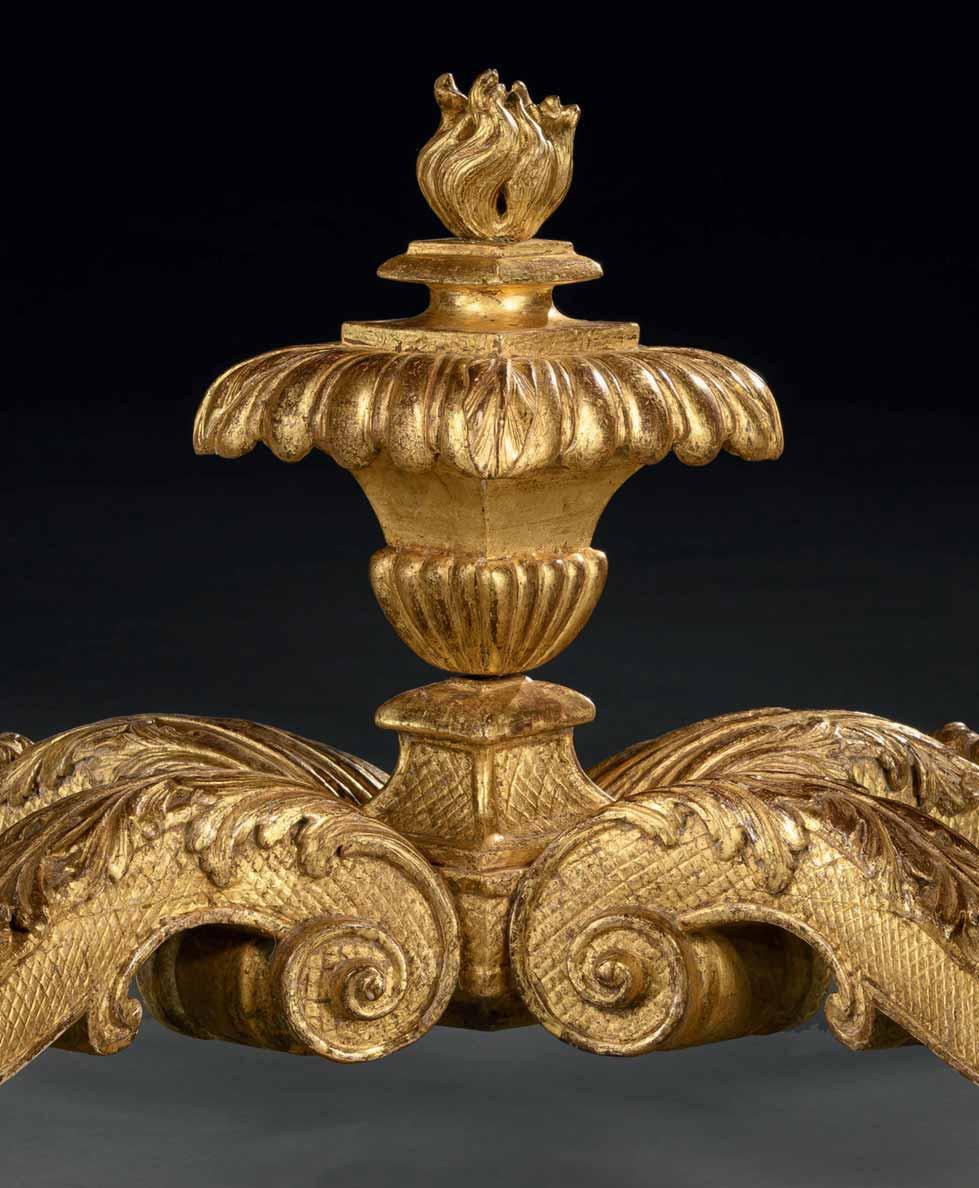
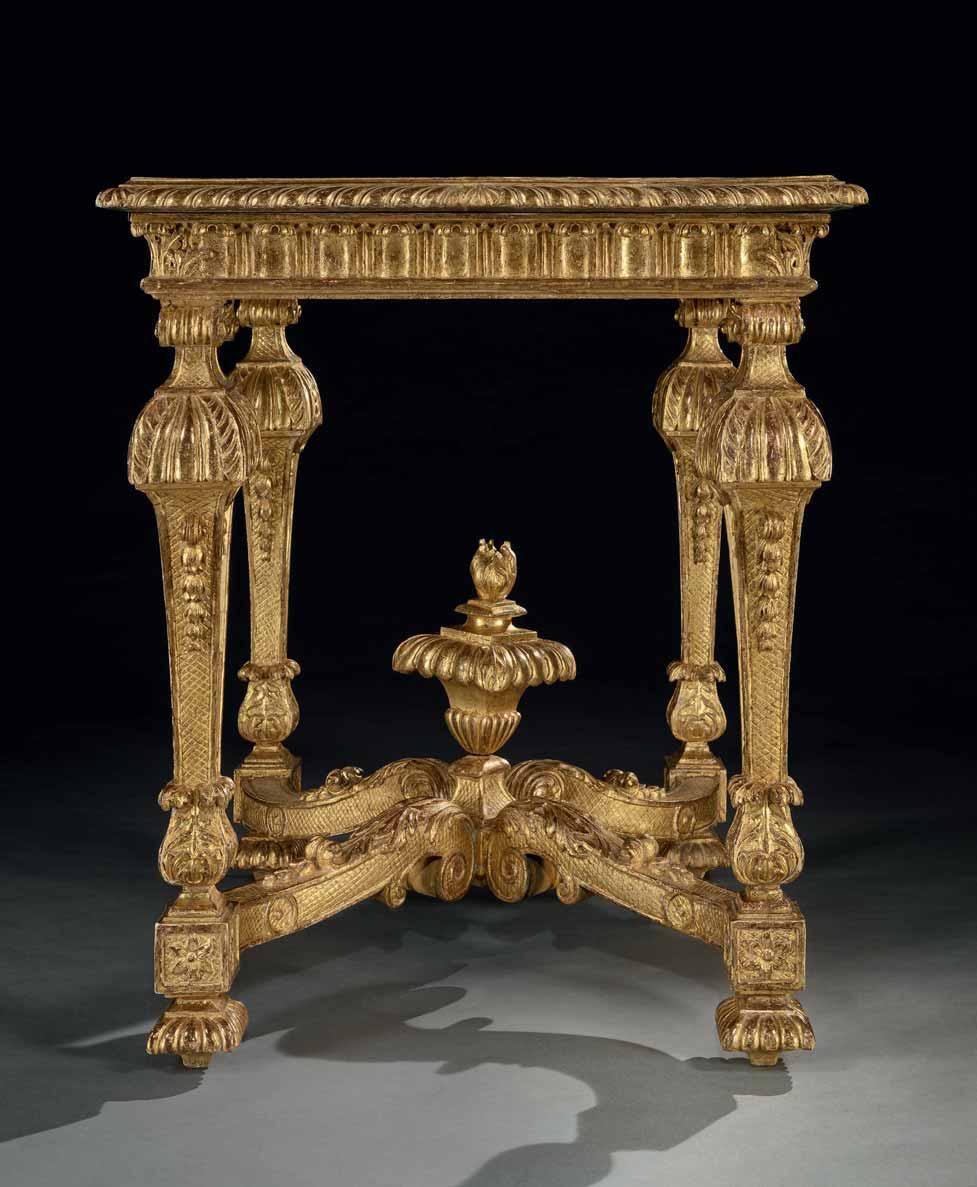
BIBLIOGRAPHY
Ackermann, Rudolph, Repository of Arts, 1809–28.
Beard, Geoffrey, and Christopher Gilbert, The Dictionary of English Furniture Makers 1660–1840, Leeds, 1986.
Bence-Jones, Mark, Burke’s Guide to Country Houses, Vol. I – Ireland, London, 1978.
Bowett, Adam, and James Lomax, ‘Thomas Chippendale 1718–1779: A Celebration of British Craftsmanship and Design’, tercentenary exhibition catalogue, Leeds, 2018.
Brackett, Oliver, Thomas Chippendale, London, 1924.
Chippendale, Thomas, The Gentleman and Cabinet-maker’s Director, 3rd edition, London, 1762.
Claxton Stevens, Christopher, and Stewart Whittington, 18th Century English Furniture: The Norman Adams Collection, London, 1983.
Coleridge, Anthony, Chippendale Furniture: The Work of Thomas Chippendale and His Contemporaries in the Rococo Style, London, 1968.
Edwards, Ralph, The Shorter Dictionary of English Furniture, London, 1964.
Gilbert, Christopher, The Life and Work of Thomas Chippendale, 2 vols, London, 1978.
Gilbert, Christopher, A Pictorial Dictionary of Marked London Furniture 1700–1840, Leeds, 1996.
Gilbert, Christopher, The Practical Cabinet Maker, Wakefield, 1973.
M. Harris & Sons, An Abridged Introductory Catalogue of Antique Furniture and Works of Art, London, 1926.
M. Harris & Sons, ‘A Catalogue and Index of Old Furniture and Works of Decorative Art’, Part I 1560–1740, Part II 1730–1780, Part III 1770–1840, London, circa 1930s.
Hayward, Helena, Thomas Johnson and the English Rococo, London, 1964.
Hinckley, F. Lewis, Hepplewhite, Sheraton and Regency Furniture, New York, 1987.
Hinckley, F. Lewis, A Directory of Queen Anne, Early Georgian and Chippendale Furniture, New York, 1971.
Ince, William, and John Mayhew, The Universal System for Household Furniture, London, 1762. Johnson, Thomas, A Collection of Designs, 1758.
Jokelson, Paul, and Dena K. Tarshis, ‘Cameo Incrustation: The Great Sulphide Show’, exhibition catalogue, New York, 1988.
Jourdain, Margaret, English Decoration and Furniture of the Later 18th Century, 1760–1820, London, 1922.
Jourdain, Margaret, and F. Rose, English Furniture, the Georgian Period 1750–1830, London, 1953.
Jussel, Christian, and William DeGregorio, English Furniture 1680–1760: The Percival D. Griffiths Collection, 2 vols, New Haven, 2023.
Knight of Glin, The, and James Peill, Irish Furniture, London, 2007.
Macquoid, Percy, A History of English Furniture, vol. III, ‘The Age of Mahogany’, London, 1906.
Macquoid, Percy, and Ralph Edwards, The Dictionary of English Furniture, 3 vols, London, 1924 (vols I & II), 1927 (vol III).
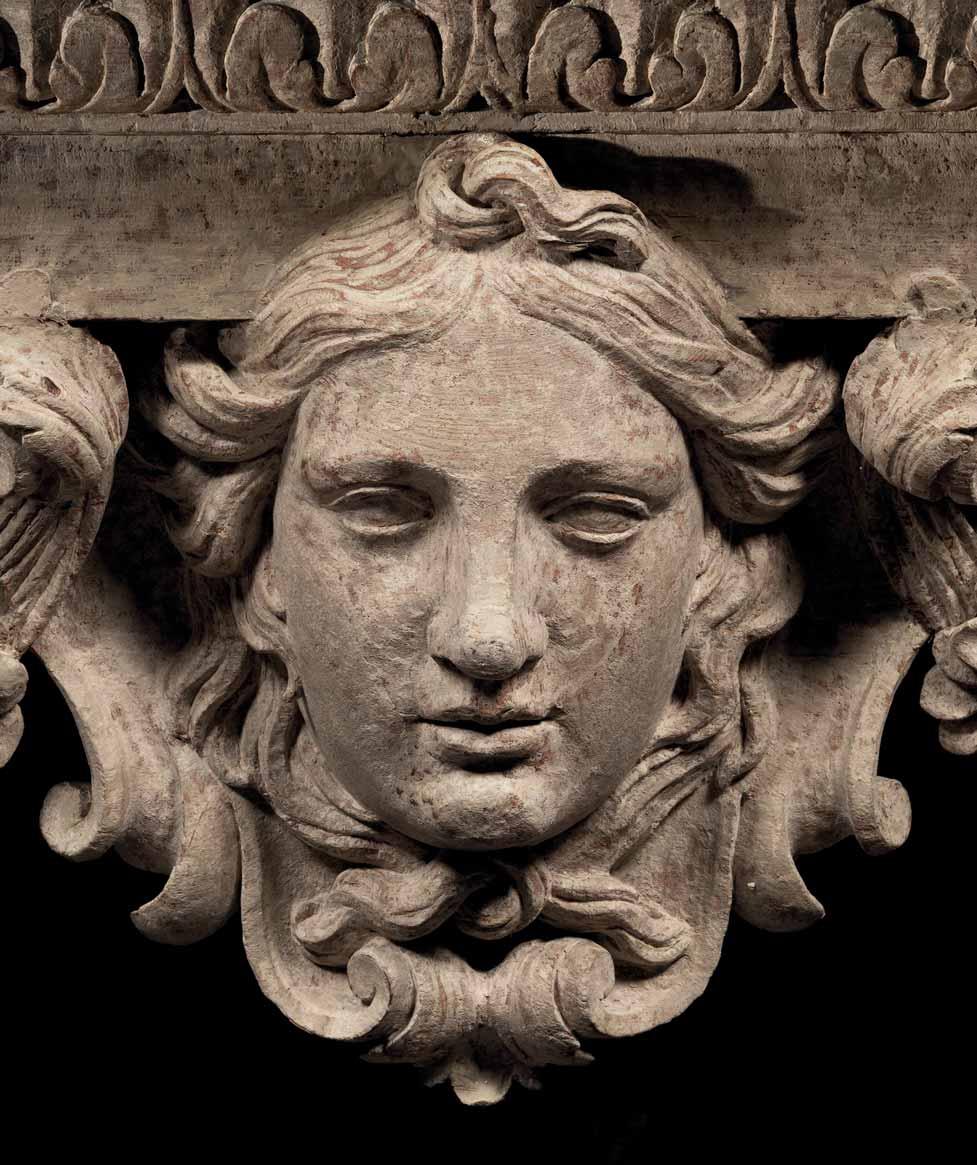
Detail from item 64, a George II grey painted console table: see page 145
Macquoid, Percy, and Ralph Edwards, The Dictionary of English Furniture, 3 vols, new edition revised by Ralph Edwards, London, 1954.
Mortimer, Martin, The English Glass Chandelier, London, 2000.
Mulliner, H. H., The Decorative Arts in England, 1660–1780, London, 1923.
Nickerson, David, English Furniture of the Eighteenth Century, London, 1969.
O’Brien, Jacqueline, and Desmond Guinness, Great Irish Houses and Castles, London, 1992.
O’Reilly, Sean, Irish Houses and Gardens, from the archives of Country Life, London, 1998.
Sadleir, Thomas U., Georgian Mansions in Ireland, Dublin, 1915.
Sheraton, Thomas, The Cabinet Dictionary, London, 1803.
Société anonyme des fonderies d’art du Val d’Osne, Paris, 1900.
Stuart, Susan E., Gillows of Lancaster and London, 1730–1840, Woodbridge, 2008.
Symonds, R. W., Furniture Making in Seventeenth and Eighteenth Century England, London, 1955
Synge, Lanto, Antique Needlework, London, 1982.
Synge, Lanto, Mallett’s Great English Furniture, London, 1991.
Synge, Lanto, Mallett Millennium, London, 1999.
Tarshis, Dena K., Objects of Fantasy: Glass Inclusions of the Nineteenth Century, New York, 2001.
Tatham, Charles Heathcote, Etchings Representing the Best Examples of Ancient Ornamental Architecture Drawn from the Originals in Rome and Other Parts of Italy, London, 1799.
Tatham, Charles Heathcote, Etchings Representing the Best Examples of Grecian and Roman Architectural Ornament, 1826.
Vardy, John, Some Designs of Mr. Inigo Jones and Mr. William Kent, 1744.
Webster, Mary, Johan Zoffany, 1733–1810, London, 2011.
Wills, Geoffrey, English Looking-glasses: A Study of the Glass, Frames and Makers (1670–1820), London, 1965.
INDEX
BOOKCASES / CABINETS / BUREAUX
A George I japanned corner hanging cabinet almost certainly by John Belchier 238 THE PERCIVAL GRIFFITHS LINEN PRESS
A George II mahogany linen press 11
A George II mahogany breakfront cabinet attributed to William Hallett 196
A George II mahogany cabinet attributed to William Vile 78
A George II rosewood and padauk miniature collector’s cabinet 138 THE DAVID STYLE BUREAU CABINET
A George III bureau cabinet attributed to George Speer
A George III mahogany secrétaire à abbatant 112
A pair of George III rosewood and satinwood crossbanded open bookcases 172
CHESTS / COMMODES
A George I scarlet and gold japanned chest of drawers in the manner of Giles Grendey 98 THE ASHBURNHAM PLACE LACQUER COMMODES
A pair of George II ormolu mounted lacquer commodes attributed to Pierre Langlois 196 THE COOMBE ABBEY CRAVEN COMMODES
A pair of George III serpentine commodes attributed to Pierre Langlois 258 THE RONALD D. PHILLIPS CHEST OF DRAWERS
A George III straight fronted chest of drawers 36
A George III serpentine fronted chest of drawers 104
A George III ormolu mounted demi lune commode attributed to Ince & Mayhew 28
A George III serpentine commode attributed to William Gomm & Son & Co. 122
A pair of George III bow-fronted chests of drawers in the manner of Gillows 224
CLOCKS
A George I scarlet japanned longcase clock attributed to Giles Grendey 246
A George III brass mounted and scarlet japanned table clock by Smith & Son 48
A George III giltwood cartel clock 106
GLOBES
A pair of George III 21 inch globes by Cary, retailed by P. & G. Dollond 158
LIGHTING
A PAIR OF ROYAL WALL LIGHTS
A pair of William and Mary giltwood wall lights by Thomas Pelletier 262 THE FRED SKULL CORNER LANTERN
A George II mahogany corner lantern 80
A George III cut glass eighteen light chandelier attributed to William Parker 18 THE NEWTOWN PARK HOUSE WALL LIGHTS
A pair of Irish George III giltwood twin-light wall lights 130
A pair of George III giltwood composition wall lights 78
A pair of George III giltwood wall lights 144
A pair of George III ormolu mounted two light cut glass candelabra by Parker & Perry 206
A pair of George III ormolu mounted two light cut glass candelabra by William Parker 244
A Regency bronze and gilt metal six light argand chandelier 196
A George IV eight light cut glass chandelier attributed to F. & C. Osler 123, 212
A Victorian ormolu lantern to a Chippendale design 126
A set of six Victorian silver mounted etched glass claret jugs by Edward John and William Barnard 184
A pair of Second Empire cast iron models of hunting dogs by Jean-Jacques Ducel 230 THE NARYSHKIN CZETWERTYNSKA DECANTERS
A pair of Alexander I polychrome enamelled cut glass decanters from the Imperial Glassworks, St. Petersburg 136
SEATING
Benches / stools / window seats THE LEIDESDORF STOOLS
A pair of George I walnut stools 82 THE COLONIAL WILLIAMSBURG STOOLS
A set of four George I parcel gilt walnut stools 64
A George II mahogany long stool 50
A pair of George III mahogany curved benches 228
A pair of George III mahogany stools attributed to Thomas Chippendale 100 THE HARVEY WINDOW SEATS
A pair of George III mahogany window seats 142
A pair of Regency giltwood stools to a design by Charles Heathcote Tatham 242
Chairs (single) THE PAPPLEWICK HALL CHAIR
A George II mahogany side chair attributed to Giles Grendey 254 THE SAMUEL MESSER CHAIR
A George II mahogany armchair attributed to William Linnell 30
A George II mahogany corner chair in the manner of Giles Grendey
A George II mahogany library armchair
THE SCAMPSTON CHIPPENDALE CHAIR
A George III mahogany side chair almost certainly by Thomas Chippendale
A George III giltwood armchair almost certainly by Thomas Chippendale
A George III mahogany bergère armchair 150
A Regency mahogany metamorphic library armchair by Morgan & Sanders 160
Chairs (pairs)
A pair of Queen Anne gesso side chairs attributed to James Moore the elder 122 THE GLEMHAM HALL CHAIRS
A pair of George II mahogany library armchairs 144 THE RAYNHAM HALL CHAIRS
A pair of George II mahogany side chairs attributed to Vile & Cobb 22
A pair of George III giltwood open armchairs almost certainly by Thomas Chippendale 78
A pair of George III mahogany armchairs attributed to Thomas Chippendale 166
A pair of George III parcel gilt and blue japanned armchairs almost certainly by Thomas Chippendale 7
A pair of Regency rosewood Klismos armchairs 146
Chairs (sets)
A set of fourteen George III dining chairs including four side chairs of later date 208
Settees
A George I double chairback settee 88 THE PERCIVAL GRIFFITHS RAMSBURY MANOR SETTEE
A George II mahogany settee attributed to Giles Grendey 70
TABLES
Card / games
A George II figured walnut concertina action card table in the manner of Giles Grendey 86
A George III mahogany concertina action card table 236
Centre
A George II mahogany centre table in the manner of Giles Grendey
THE MOLLER RENT TABLE
A George III mahogany and padauk crossbanded rent table
A George IV brass inlaid centre table with marble sample top
Desks / reading / writing
A George II figured walnut kneehole desk
A George II mahogany library table attributed to William Hallett
A large George III mahogany writing table
Dining / breakfast
A George III mahogany three pedestal dining table
Drum THE HACKWOOD PARK ‘BUHL’ DRUM TABLE
A Regency brass inlaid rosewood drum table attributed to Gillows
A Regency satinwood and calamander drum table attributed to George
Occasional tables / stands
A pair of George II giltwood terms designed by William Kent and attributed to Benjamin Goodison
A George III mahogany kettle
A George III mahogany two tier trolley
A George III mahogany urn stand
THE HADDO HOUSE TORCHERES
A pair of George III giltwood torchères
A nest of four George III brass inlaid rosewood occasional tables
A pair of Regency mahogany three tier what-nots
Pembroke / sofa
A George III mahogany veneered Pembroke table attributed to Henry Hill
Side (single)
A TABLE FROM QUEEN MARY II’S BEDCHAMBER AT KENSINGTON PALACE
A William and Mary giltwood and gesso side table carved by Robert Derignée and gilded by Jean Pelletier 264
THE JOHN PAUL GETTY CONSOLE TABLE
A George II grey painted console table
A George II grey painted console table attributed to William Kent
A George II mahogany silver table
THE SCAMPSTON BANQUETING HOUSE SERVING TABLE
A George III mahogany corner serving table attributed to Thomas Chippendale
A George III giltwood side table
Side (pairs)
THE ROCKEFELLER GESSO TABLES
A pair of George I gilt gesso side tables attributed to James Moore
THE HOWTH CASTLE GESSO TABLES
A pair of Irish George II gilt gesso side tables
A pair of George II giltwood tables attributed to William Kent
A George III dressing table and matching writing table attributed to Thomas Chippendale
A pair of George III giltwood semi-elliptic side tables attributed to Ince & Mayhew
A pair of George III mahogany crossbanded side tables
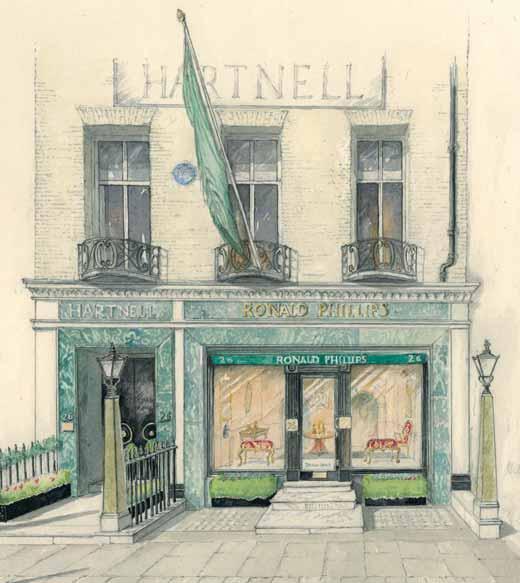
Tel: + 44 (0)20 7493 2341
www.ronaldphillipsantiques.co.uk advice@ronaldphillips.co.uk
